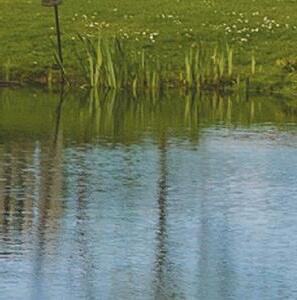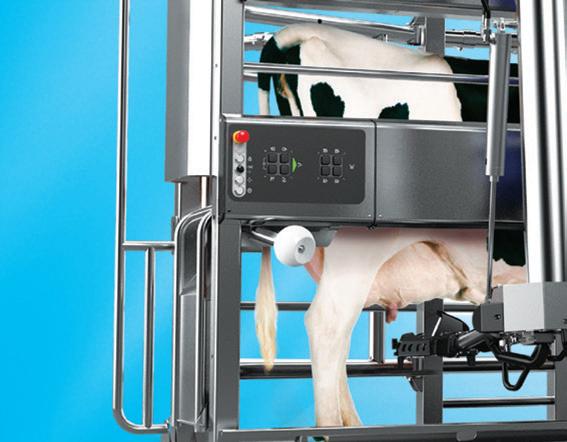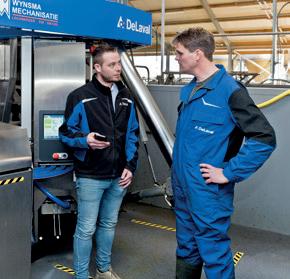










UK DAIRY DAY
What

John Deere’s 5130M put through its paces

DAIRY SHOW
A seven-page sneak peek at this year’s show












What

John Deere’s 5130M put through its paces

A seven-page sneak peek at this year’s show
To find out how we can protect what matters most to you, search ‘NFU Mutual Farming’ or contact your local agency

Covering small farms, large farms and everything in between.
Provided by NFU Mutual Agents, located in rural towns and villages throughout the UK.
Expert advice to identify the health and safety dangers facing your farm and provide personalised solutions for everyone’s safety.
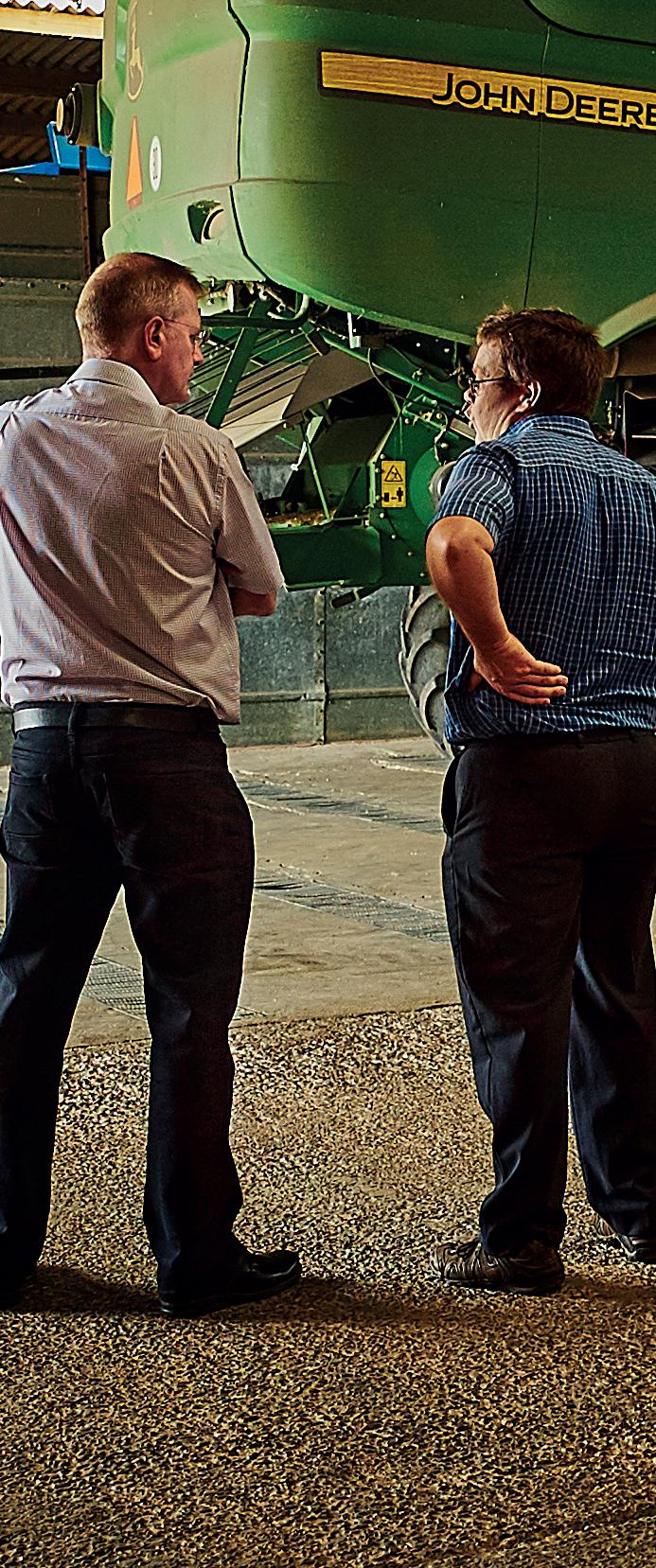

From pensions to investments, life cover to business protection, we’ve been helping customers with their financial planning needs for 95 years.

Editor Katie Jones 07786 856 439 katie.jones@agriconnect.com
Creative Services
Mike Begley
mike.begley@agriconnect.com
Katie Haydock katie.haydock@agriconnect.com
Picture Editor
Marcello Garbagnoli 07815 003 236 marcello.garbagnoli@agriconnect.com
Sales Gemma Thorpe 01772 799 500 gemma.thorpe@agriconnect.com
Account Manager
Mark Jackson 01322 449 624, mark.jackson@agriconnect.com
Classified Advertisements 01772 799 400 fgclassified@agriconnect.com
Advertising Production
Justine Sumner 01772 799 437 Fax: 01772 796 747 justine.sumner@agriconnect.com
Circulation and subscriptions 0330 333 0056 help@subscribe.farmers-guardian.com
Subscription rates: UK £65 a year Europe: £85 World: £95
ISSN 1475-6994
© Farmers Guardian 2024 All rights reserved. No part of this publication may be reproduced or transmitted in any form or by any means, electronic or mechanical including photocopying, recording, or any information storage or retrieval system without the express prior written consent of the publisher. The contents of Dairy Farmer are subject to reproduction in information storage and retrieval systems.
Dairy Farmer, Unit 4, Fulwood Business Park, Caxton Road, Preston, Lancashire PR2 9NZ
Origination by Farmers Guardian, Unit 4, Fulwood Business Park, Caxton Road, Preston, Lancashire PR2 9NZ. Printed by Warners Midlands, The Maltings, Manor Lane, Bourne, Lincolnshire, PE10 9PH. No responsibility can be accepted by Dairy Farmer for the opinions expressed by contributors.
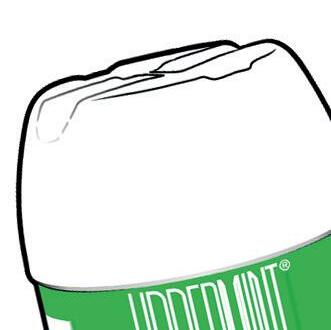
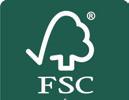


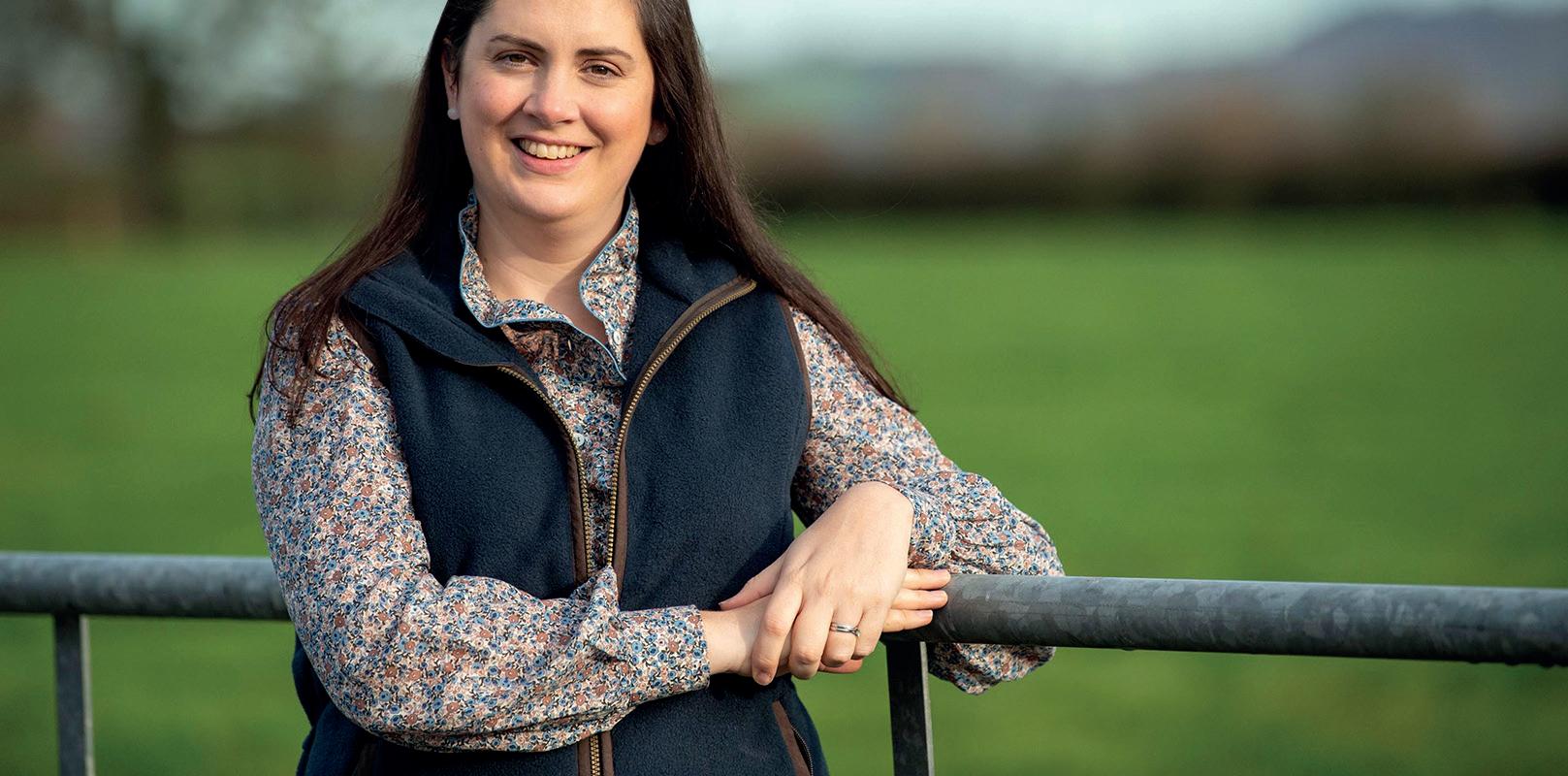
Welcome to this bumper 104-page edition, which is packed with farm features from around the country, topical advice from industry experts and an analysis of the latest news and milk prices.
This month also sees us look forward to two important dairy industry events – UK Dairy Day, taking place on September 11; followed by the Dairy Show on October 2.
Both events look set to be great days out, with trade stands galore, interesting seminars and panels to learn from, and some great show cows to look at.
For those of you who plan to go, it will be a welcome break from the farm I’m sure.
It is more important than ever to make sure you get a break. Even if it is only for a few hours in between milkings, speak to fellow farmers and hopefully learn something which can be implemented back at home.
And while news of the current trajectory of dairy producer numbers in Great Britain is extremely concerning, it is also heartening to hear of young farmers still wanting to get into the industry (see pages 30-31), and also see family farms who are committed to the future of dairy farming (p50-52).
With all the negative news currently circulating, it is important we also try look for positives when we can.

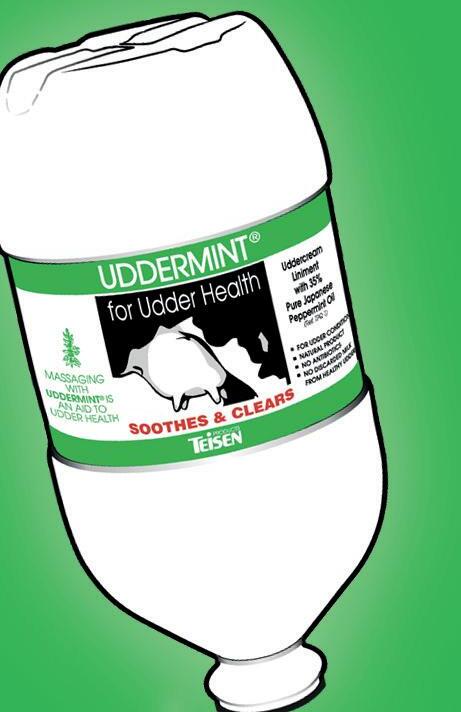
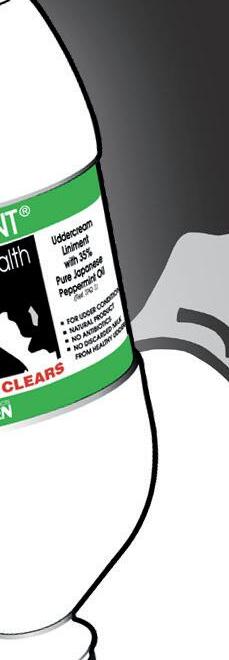

















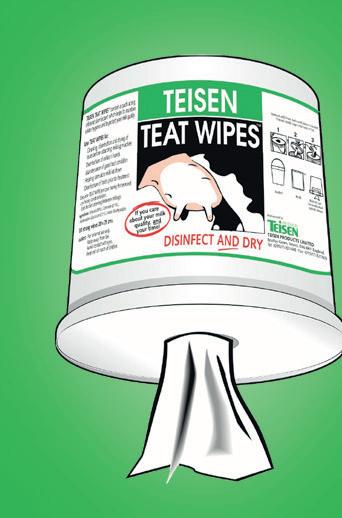
There has been a sharp decline of 440 dairy producers in the year to April 2024, with most producers leaving the industry over winter.
What
Managing
Sneak
John Deere’s 5130M put through its paces
92 MILK ANALYSIS
EU butter soars again after slow July
94 NEW PRODUCTS Round-up of products and updates hitting the market 98 GOOD EVANS
‘A bit of continuity is nice isn’t it? There’s something reassuring about it’
Fewer
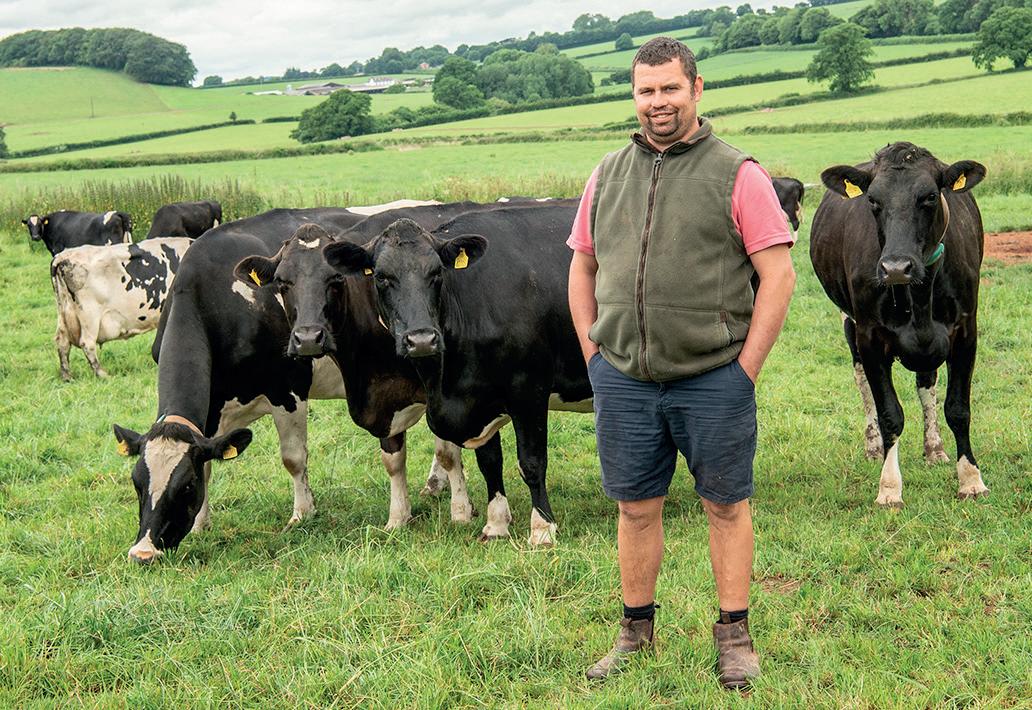
According to AHDB’s latest survey of major milk buyers, it was estimated there were 7,130 dairy producers in Great Britain as of April 2024.
Freya Shuttleworth, AHDB senior analyst, said although milk prices were higher, they had dropped off ‘substantially’ from the 2022 peaks.
“This, alongside robust cull cow prices, continued inflationary pressure on key inputs and increased interest rates driving up the cost of borrowing, might have incentivised producers to shut up shop as farm margins tighten,” she said, adding increased regulatory pressure could also have been a driver.
NFU dairy board chair Paul Tompkins said the industry could not continue on the trajectory it was on.
For some, a continued low milk price has squeezed the potential of making any profit
BRUCE MACKIE
He said: “Those high input costs are now embedded into the business. The inflationary pressure is still there.”
He added potential environmental regulations were weighing ‘heavily on farmers’ minds’.
While he said it was important farmers ensured they farmed alongside the environment, he also said there was a lot of investment
JTackling the challenges of bovine TB, water quality and the Sustainable Farming Scheme (SFS) must be priorities for new Welsh First Minister Eluned Morgan.
Farming unions have welcomed Ms Morgan, after she officially became First Minister following a vote in the Senedd on Tuesday, August 6.
Huw Irranca-Davies has been appointed as Deputy First Minister, alongside his role as Cabinet Secretary for Climate Change and Rural Affairs.
NFU Cymru president Aled Jones said he was looking forward to working with Ms Morgan on ‘a
range of priority issues for Welsh agriculture’.
He said: “There can be no doubt that the sector is facing some very considerable challenges at the moment, including the requirements of complying with the regulations around water quality, the stress caused by bTB, as well as of course concerns around the SFS.”
Farmers’ Union of Wales president Ian Rickman said he was looking forward to looking with Ms Morgan to achieve the ‘best policy outcomes for Welsh agriculture and our rural communities’.
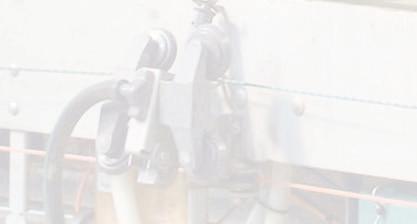
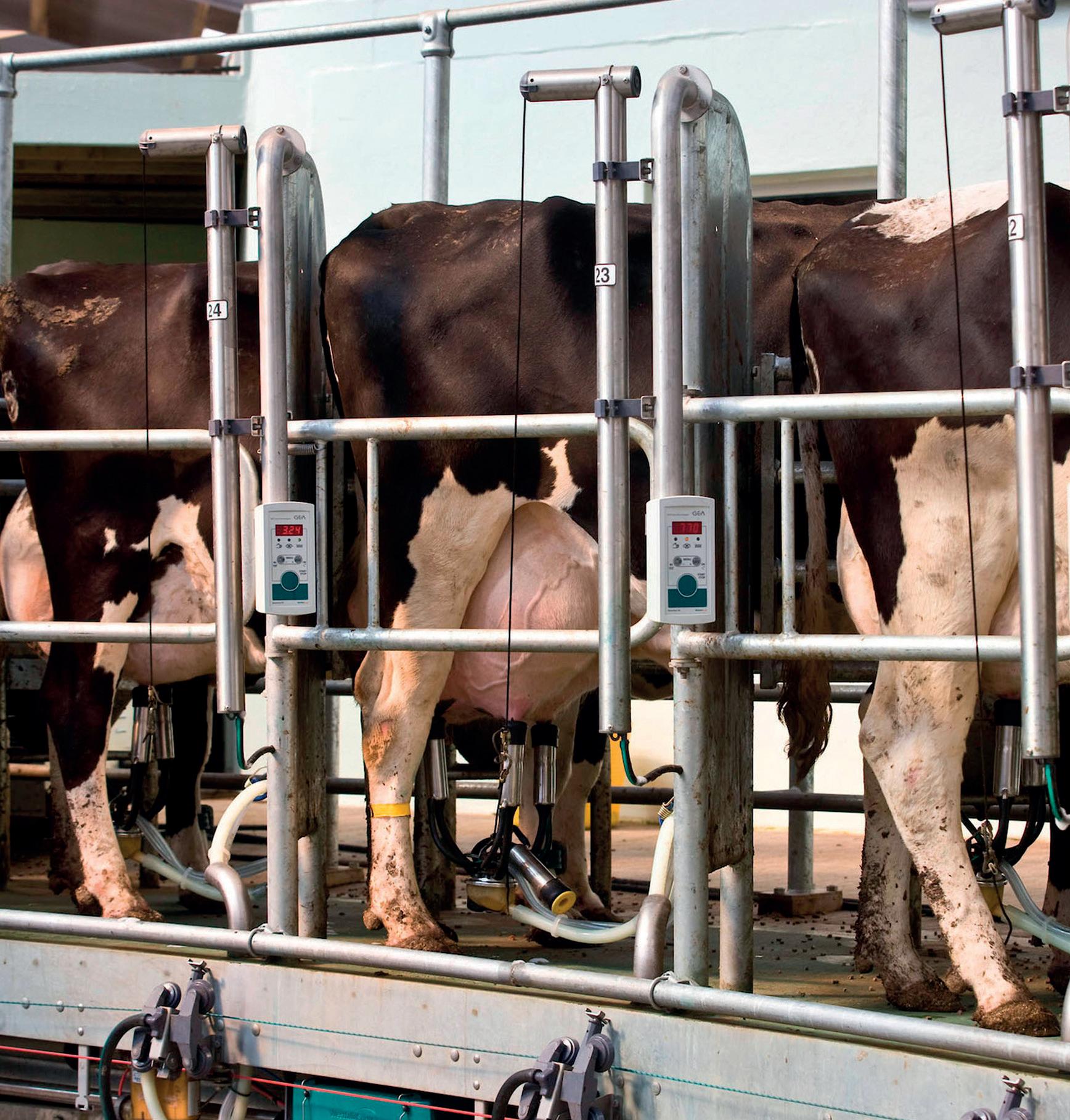
needed, which margins were not going to cover.
Despite falling producer numbers, milk production in the 2023/24 milk season was only back 0.2% year on year.
In Scotland, the Sco ish Dairy Ca le Association recently released its six-monthly gures for dairy herds and dairy cows in Scotland in 2024, which revealed a net decrease of 21 dairy herds (2.6%) within Scotland to 773.
ere had also been a decrease
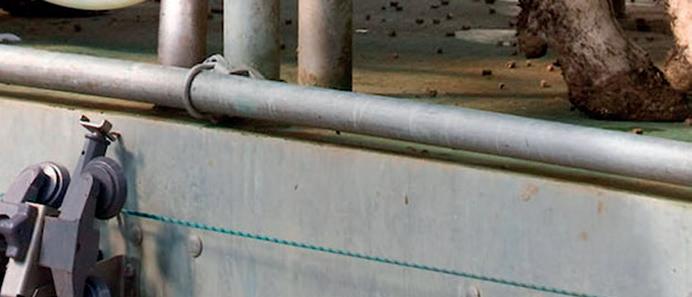
JTesco Sustainable Dairy Group (TSDG) has announced it is to reduce its pool of contracted farmers.
The group consists of 400 farmers who supply the supermarket directly with fresh milk for its own label.
It is believed the move has been taken following a reduction in demand.
According to reports, a period of 12 months’ notice will be served on those concerned and applies to all volume bands.
It is not yet known how many farmers will be impacted, but it is thought Tesco has consulted with group members and will initially seek farmers to leave the pool voluntarily.

in the total number of dairy cows to 180,250 – a drop of 0.25% over the same period.


NFU Scotland milk commi ee chair Bruce Mackie said the union was not surprised.

He said: “Increased regulatory pressures, continued in ationary pressure on key inputs, a lack of labour and interest rates still driving up the cost of borrowing remain the
• Ideal for any tractor from 40 to 270hp
• Attach/detach in under 2 minutes
• Unrivalled








main reasons why many have decided to call it a day.
Formed in 2007, the TSDG was the first supermarket aligned contract and consists of the largest group of dairy farmers working directly with a retailer in the UK.



Although milk prices are starting to increase, it is too late for some who have su ered from the gap which has grown between the top and bo om of the price league table, where, for some, a continued low milk price has squeezed the potential of making any pro t.”



NFU dairy board chair Paul Tompkins said: “We want to see more farmers working closely with supply chains rather than fewer, so to hear the opposite happening is not a great thing. We want to encourage more collaboration not less.”
Tesco was contacted for the purposes of the article.





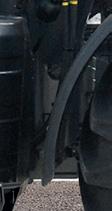












The Royal Veterinary College (RVC) has been awarded a £1.2 million grant from the Bezos Earth Fund to explore how methaneproducing micro-organisms colonise the gastro-intestinal (GI) tract of calves in the first six weeks of life and how they impact the developing immune system.
Scientists says the research will provide vital information on the optimal way to administer any potential vaccine to reduce methane production from livestock.
This project is the first of its kind, and the scientists involved say it could significantly contribute to the fight against climate change.
Methane emissions are released mainly from enteric fermentation, the digestive process which breaks down grass and hay fibres for the generation and absorption of nutrients.
Recent analysis has identified that the main intervention to reduce this type of methane production is to directly target the micro-organism which produces it – methanogenic archaea.
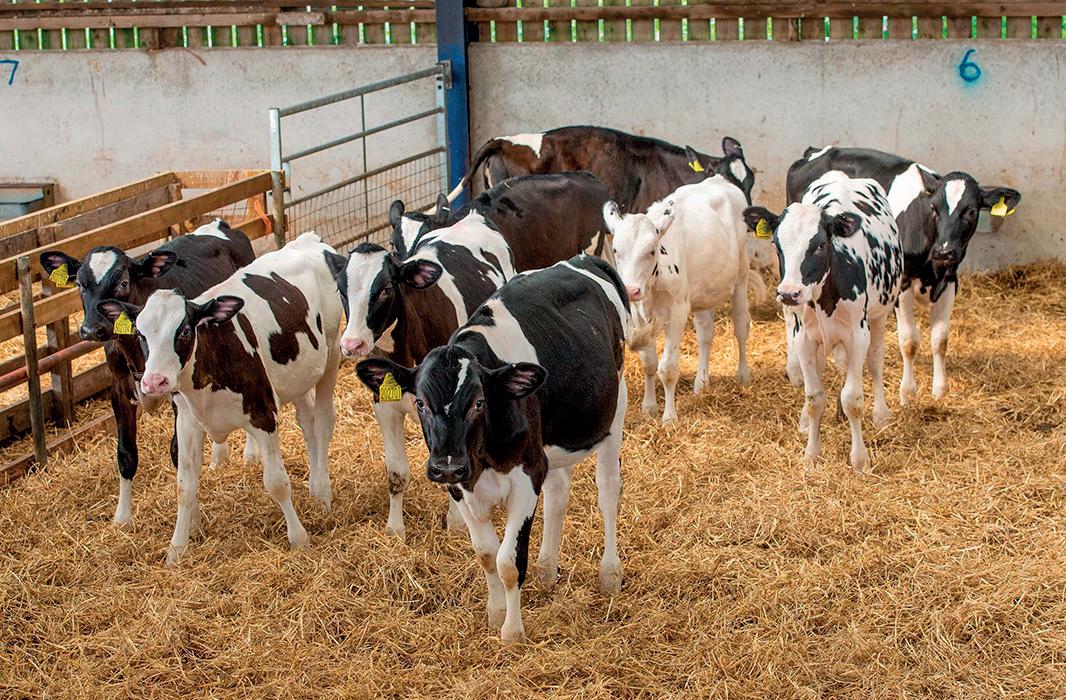
There has already been considerable research looking at how to control the production and formation of methane in the largest stomach of domestic livestock.
Previous studies have indicated the potential of vaccines as a sustainable approach to reducing this methane production by impacting on methane-producing archaea – in part because this approach does not require daily access to the animals.
However, little is currently known about if and how methanogens are
detected and controlled by the immune system.
This RVC study aims to fill this knowledge gap and determine when methanogenic archaea colonise in the GI tract, how they spread through the GI tract in the first weeks of a calf’s life and how they potentially interact with the animal’s immune system.
The study team, led by Dirk Werling, professor of molecular immunology at the RVC, will establish the pattern of methanogenic archaea’s colonisation.
To do this, they will collect blood, saliva, ingesta and colostrum samples from Holstein Friesian calves and their dams.
They will then analyse the samples to identify microbes and create cultures which can be shared for further analysis, as well as modifying and testing the methanogen.
The data collected throughout this process will provide substantial new information to inform the development of a methanogen vaccine.
Prof Werling said: “I believe that the funding will enable us to perform research on a topic which affects us all, global warming, but in a way that both animals and humans benefit from it.”
Dr Andy Jarvis, director of the Future of Food at the Bezos Earth Fund, said this project represented a ‘moonshot’ in efforts to reduce livestock methane emissions.
He said: “The potential to apply the proven success of vaccines in global health to cattle and significantly cut emissions is both ambitious and exciting.”
JResults from the latest badger vaccination trial have proved ‘encouraging’, yet questions remain about costs and scale, say farming leaders.
More than 260 badgers were vaccinated as part of the four-year study, which was carried out across 12 farms in Cornwall.
The results, published by People and Nature, found the percentage of badgers testing positive for bTB fell from 16% to zero during the period which began in 2018.
The study concluded that the case study ‘does not demonstrate a causal link between badger vaccination and
declining bTB’, yet it did suggest that a ‘larger-scale evaluation of badger vaccination’ was warranted.
Researchers also said the study showed that badger vaccination ‘was practically achievable’.
The findings were met with caution by the farming industry, which questioned the size, location and efficacy of the trial.
Dairy farmer Phil Latham said: “If you look at where this trial has taken place, it has happened not in isolation but in the heart of a
cull area. Without geographic separation, I think it is impossible to come up with any meaningful conclusions.
“What they have done is really laudable and it is all useful stuff, but it would have been more useful and meaningful if it had been in an area outside the cull. To me, the information is spurious.”
NFU Cymru vice-president and dairy farmer Abi Reader said any work to try and eradicate the disease was ‘encouraging’.
“Firstly, it is quite a small area and we need to understand the costs – who is going to be respon-
sible for them, as over a wider scale it could be a considerable amount of money?
“We have similar things going on in Wales and farmers can opt to go into badger vaccination areas, but there is a lot of paperwork and administration which goes with it.
“So if the Government would like to see this rolled out further, we do need something to address the costs and any policy barriers.
“It is just a bit soon for everyone to start celebrating this just yet.”

Dan and his family own and run the 300-hectare (741-acre) Cockhaise Farm, near Haywards Heath, West Sussex. The farm is home to an organic autumn-calving herd of 240 Holstein and Friesian crosses. He also contract farms another organic autumn-calving herd of 220 cows at Bore Place, near Edenbridge, Kent.
“ There is no doubt the last year has been a challenging time for organic dairy farmers
It is the time of year again to switch off the vacuum pumps, stop making ice and shut the farm gate as we hit the peak three to four weeks of our summer dry period.
After what has been a reasonably good growing season, the cows are in great condition heading towards calving later in August, with it bringing the hope and budgeted improvement on the last 12 months.
There is no doubt the last year has been a challenging time for organic dairy farmers across the country, with many deciding they have had enough, either leaving the milk pool altogether or taking their farm out of organic.
We have been through similar thought processes, but are keeping faith with the production system we believe in and confidence that Arla will be able to back up its positive words with a milk price that follows the same trajectory.
There is no doubt that financial stress can have a great impact on the people in and around the farm, with belts being tightened and manpower reduced at times to help ride through the stormy waters.
The last four months has also seen half of my team head to pastures new, something I have been lucky enough not to experience in the last 10 years. Entering the recruitment market can feel like rolling the dice sometimes and this year has certainly had plenty of ups and downs.
At home I now have a settled team with a great blend of experience and youth, all brimming with energy and excitement for the season to come.
On our farm in Kent, our new farm manager decided to pull out at the 11th hour for personal reasons, leaving a sizeable hole to fill.
In these situations, people either fade away or step up to the mark and I have been hugely impressed with the way the team down there have responded to the ever-changing situation, giving me the confidence to be able to hand over more day-to-day responsibility, thus giving me a little breathing space while we work out plans for the coming season.
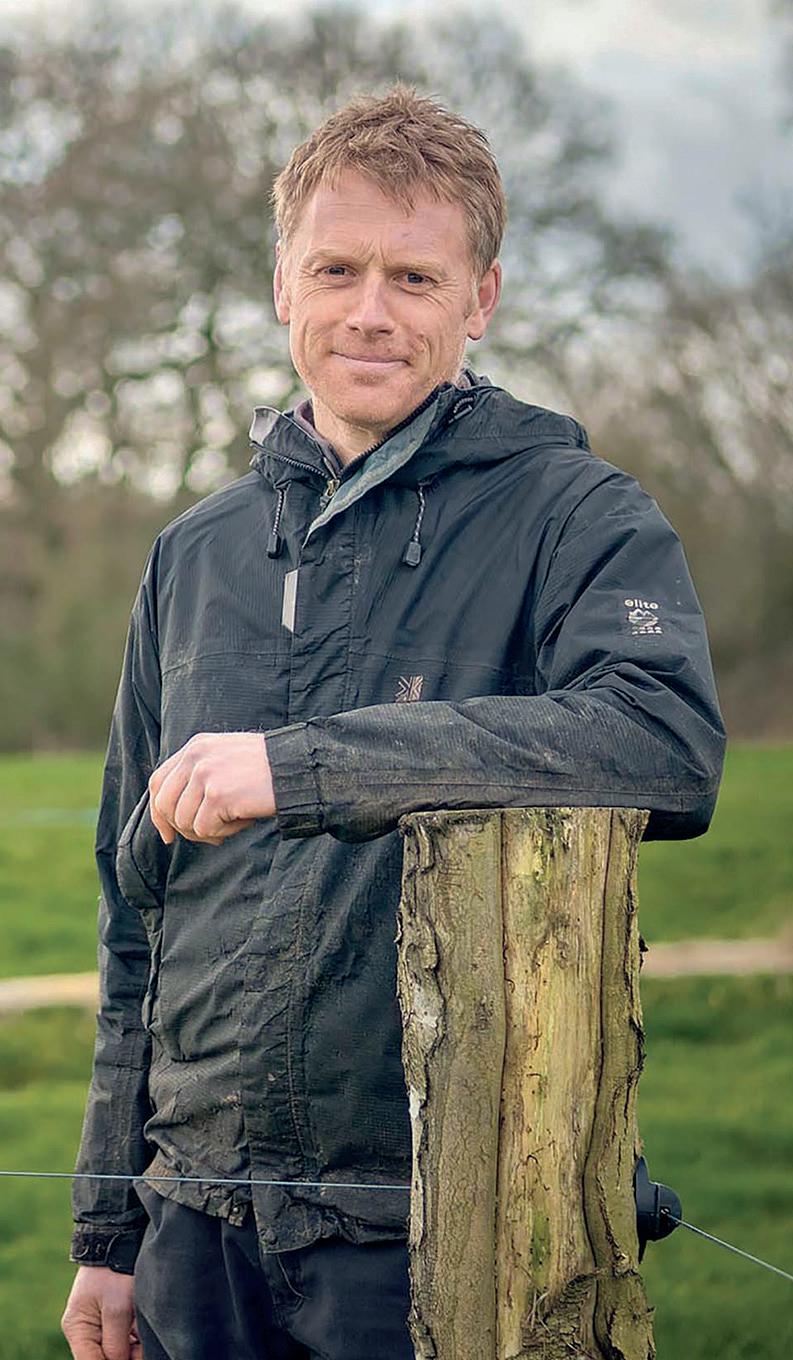
One of my key goals this calving season is to maintain our excellent work in rearing calves, both for ourselves and to sell to others. We have used a similar system for many years now, based on feeding six litres per day whole milk to calves, but a recent talk at an Arla meeting has me questioning this.
Much of the research now points to feeding eight litres/day and feeding 4kg of hard feed once weaned, double our current level, leading to improvements in lifetime production traits. With the price of organic milk and hard feed, this would impose a huge increase in the cost of rearing our heifers, so I need to see if there is a middle ground where we are looking to make improvements, but not at the expense of the profitability of our business.
Becky Fenton and husband Paul milk 200 pedigree Holsteins under the Springlebee prefix at Centenary Farm, a Cheshire county council farm. In 2021, they bought a farm in Staffordshire and they plan to farm there once the new dairy set-up has been built.
“ I’m very honoured and privileged to have been asked to judge Dairy Farmer of the Year for the British Farming Awards
In my last column, I wrote about how we were embracing a zero-grazing system, which initially increased our milk yield but significantly added to our workload. Forget that.
A few weeks later, yields dipped, grass quality was poor and we were fed up with the extra tractor work and scraping copious amounts of muck. Also, it eventually stopped raining.
So, we decided to turn the cows out and feed them a buffer of grass and maize silage, alongside mash pro and a 21% dairy nut. This change substantially increased the yield by about 5.7 litres per cow and it has sustained.
I have just got in from milking and feeding calves. Currently we have 90 calves on milk, which is a bit of a tedious task after night milking.
We started weekly fertility visits about 12 months ago and, at the time, it felt fantastic getting everything in-calf to sexed semen. Now several months later, we are flooded with heifer calves.
The new calf shed is full, the new stable/log store has calves in it and God knows where the next calves born are going to live.
Calves in the new calf shed are doing exceptionally well and we are really pleased with the design and the functionality of the shed.
We applied for the automatic calf feeders through a Farming Equipment and Technology Fund grant and it was accepted. We plan to install one mixing station with four feed stations, hopefully this will improve growth rates. Next, we need to build the weanling shed.
We went to Nantwich Show recently and, considering I only entered five days prior, we did alright. We took


one milking heifer straight from the field in her working clothes to the show and were thrilled to achieve reserve junior champion.
This family line is my favourite, one of our original families from when we started farming in 2008, tracing back to a herd favourite, Shottle Peta EX96 (8)e 6 stars.
This year I have stewarded two Cheshire Farms Competition classes. Firstly, the black and white class, where we had a great day visiting five different herds. What stood out to me was that all five operated different systems, each doing a fantastic job.
I often think that perhaps we should push more for yield, but in reality, I believe we should farm in a way which suits our system, land, infrastructure, finances, family, etc. One size does not fit all.
The second class I stewarded was buildings. We visited a first-class potato farmer, among some other great farms, but the farm which impressed me most was a single gentleman finishing 500 beef cattle on his own. His shed design was simple but effective. Credit to him, and thank you to all who entered.
I’m very honoured and privileged to have been asked to judge Dairy Farmer of the Year for the British Farming Awards.
I still can’t believe I have been asked, and I look forward to the judging day at Farmers Guardian head office, where I hope to be wowed by the finalists.
Investing in milking technology is not always about chart-topping cow numbers or yields. For one dairy farmer it is about steady growth, efficiency and keeping it simple. Natalie Noble reports.
The 64-point rotary parlour at Appledore Farm near Crediton, Devon, milks around 320 cows per hour at peak production.
That £1 million investment has reduced Chris Blake’s morning milking time from four hours to less than two – a valuable return, he says. But when it comes to technology, he likes to keep things simple.
He says: “There are too many people trying to sell you things and make it complicated. It should not be complicated; get as much milk from grazed grass or forage into your bulk tank as cheaply and efficiently as possible.
“Invest in technology where it makes sense for your business –where it will improve your efficiencies and have definite cow, people and business benefits.”
Farming in partnership with his parents, Bill and Jan, and with his own young family, future-proofing the business is a priority.
So when ground was broken
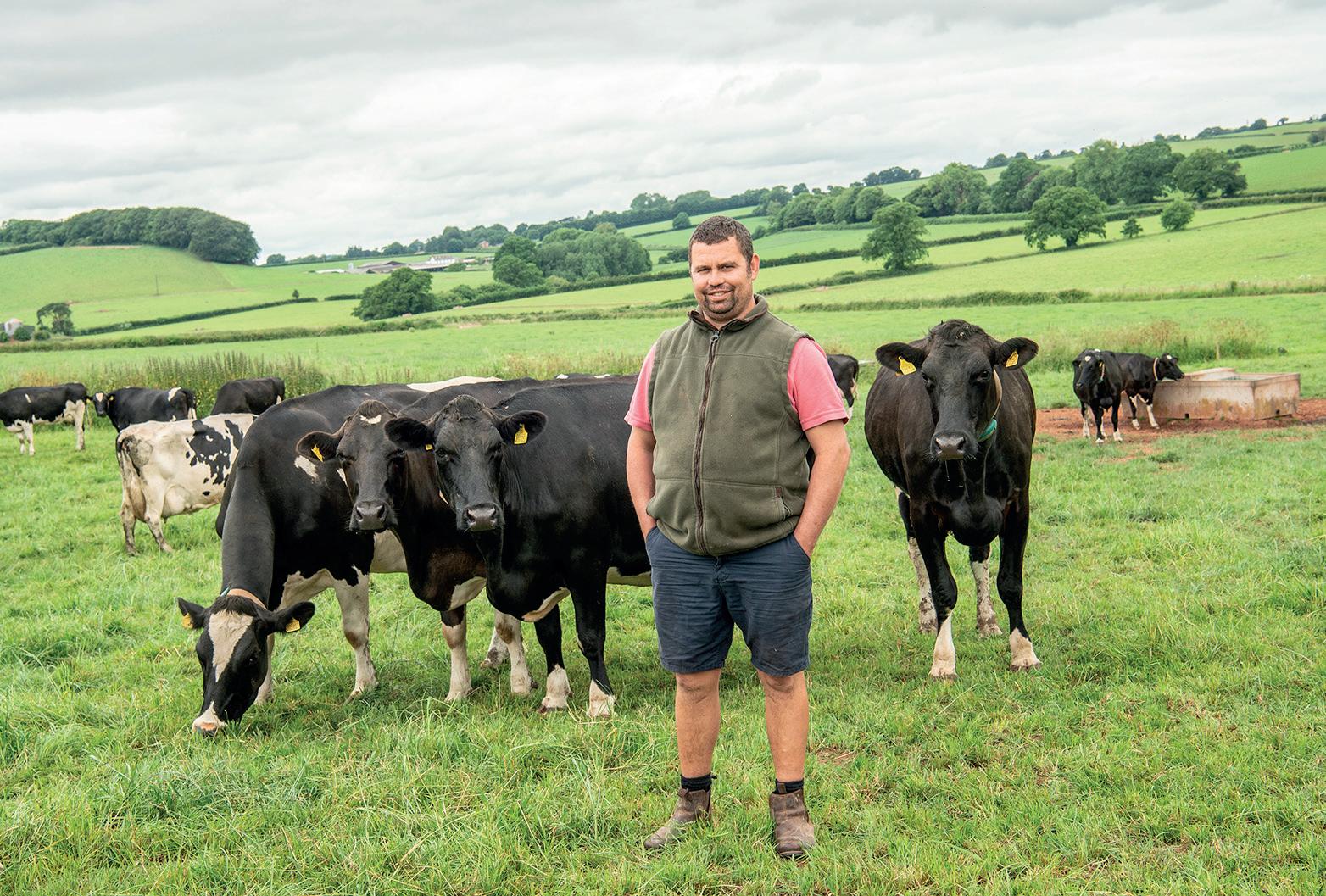
last year to install the GEA T8500 rotary parlour, complete with parlour building, collecting yard and comprehensive handling and foot care facilities, it felt like a milestone for the farm’s future.
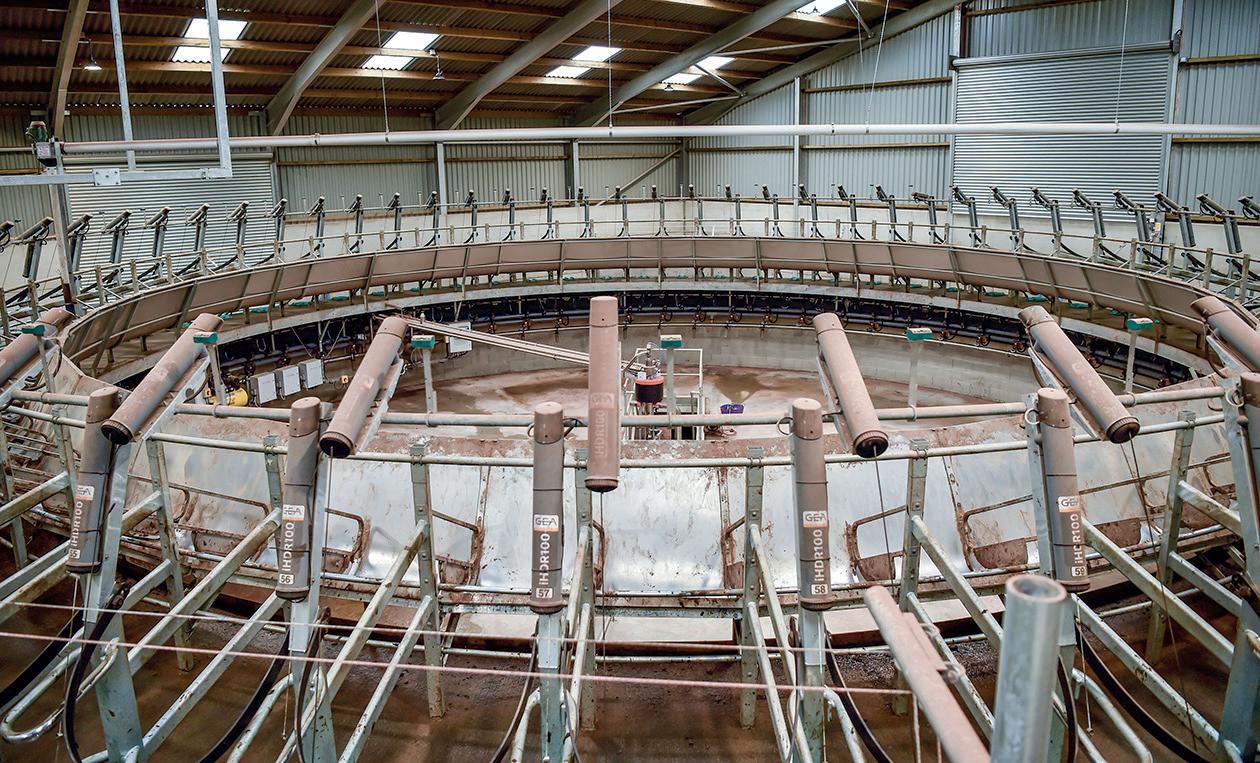
Appledore is home to 600 autumn-calving Irish Holstein Friesians, producing an average milk yield of 8,000 litres and 640kg of milk solids per cow on a 305-day lactation.
From the farm’s 158-hectare (390-acre) grazing platform and home-grown forage, his cows produce some 4,400 litres of milk, representing around 56% of total yield, with a 16% or 18% cake fed through the parlour.
Supplying Arla on a manufacturing contract, composition currently sits at 3.61% protein and 4.42% butterfat.
Chris wants his cows to be happy, healthy and fertile – efficiently converting the farm’s forage into milk, while producing the next generation of heifers. His philosophy is simple; making the most out of grass during the grazing season (mid-February/
March to November), along with silage and home-grown feeds during the winter housed period (November to turnout).
The Blakes’ dairy operation also incorporates a 300-cow unit in Winkleigh. The former beef and sheep farm, purchased in 2020, has undergone a dairy conversion and now boasts a 24:48 swing-over parlour with collection yard, handling facilities and sand-bedded cubicles for winter housing.
It also comprises a 78ha (193-acre) grazing platform and was self-stocked from the home farm.
The Winkleigh farm replicates much of the Appledore home farm, says Chris.
“The principles are the same; to get as much in the bulk tank from the forage we grow as efficiently as possible.”
As well as happy cows, he wants
The farm has a 158-hectare (390-acre) grazing platform.

happy sta . And, as the business has grown over the years and cow numbers have increased, milking through the 54:54 herringbone parlour at Appledore twice daily became di cult and time-consuming.
Peak production, morning milkings were taking up to four hours, resulting in cows spending more time standing in a collecting yard and less time grazing, lying down, drinking or at the feed trough.
And it was not just the cows Chris was concerned about, the
long milkings were also hard on his sta . He worried about the impact on them and future labour, too.
Turning back the clock, the Blakes’ herringbone parlour was originally installed in 2001 as a 40:40 before it was expanded to a 54:54 in 2015, to accommodate more cows.
is previous upgrade gave them insight into how investment and technology needed to keep up with their business’ pace of growth and


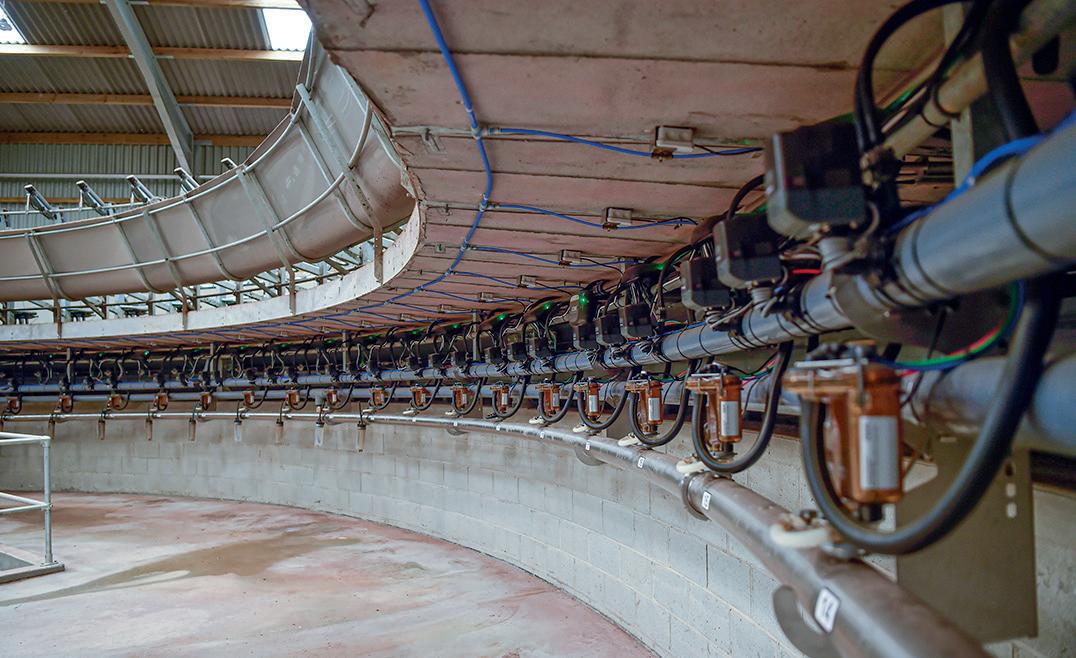

ambitions, while also addressing labour concerns.
“We could have spent more than £150,000 on upgrading the parlour again,” explains Chris.
“But we knew that we would not be able to further increase cow numbers and we would still have long milking hours and concerns about sta ng.
“Finding and retaining reliable, competent people is, I think, one of the hardest challenges in the dairy sector.”

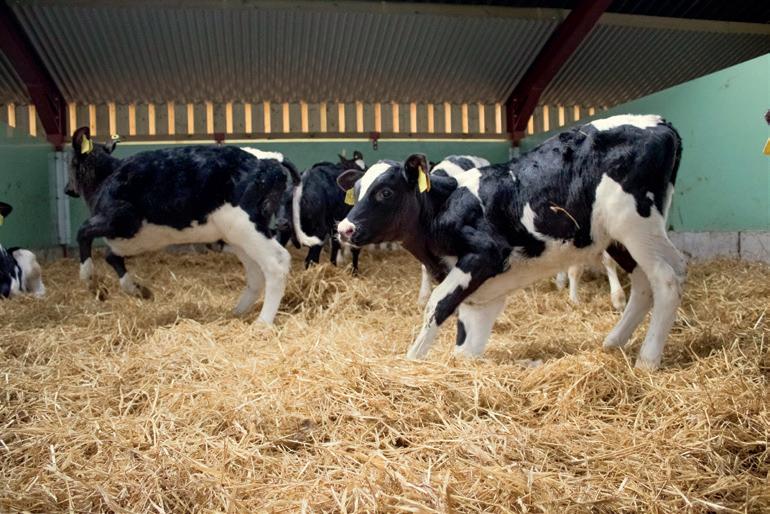
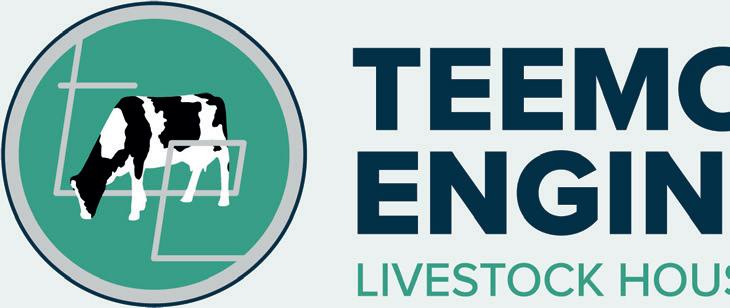

Robots did not make sense for the Blakes’ system, with the furthest elds up to 2km away from the parlour.
A rotary parlour, however, o ered the throughput with minimum labour as well as improved cow comfort and ow.
He says: “It is how we have grown our business; maximising milk from where we can walk cows and stocking the platform relatively high.”
Robustness and reliability were
rCarrying 238 R1 heifers and 250 R2 heifers to mitigate TB risk/stocking
rAverage total concentrate use: 1.8t/cow
rUp to 8kg cake fed in parlour, average 3kg/cow
rAutumn-calving: 12-week block (Mid-August to November)
rTop 50% of milking cows and heifers artificially inseminated (AI) to Irish Holstein Friesian,
important qualities when choosing the new parlour, as was integrating data from the system into the cow management so ware without hassle. And Chris was not looking for all the bells and whistles of optional features, either.
“I wanted something that had been proven to work well in a similar system to mine,” he says.
“It is essentially New Zealand Milfos working equipment and GEA technology. It uses the same GEA milk meters that we had used previously, which I like, and it is robust and simple.”
e 64-point rotary has adjustable rotation speed, automatic cup removers, milk meters, cluster drop system and automatic teat sprayers, which Chris says make milking more e cient, puts less strain on sta and provides consistency.
e set-up also features an automatic wash and an under-pass
everything else AI’d to Aberdeen-Angus beef
rHeifers synchronised
rCows and heifers averaging 77% six-week in-calf rate
rTypical replacement rate at 18-20%
rAnnual herd health review – all stock vaccinated against BVD, IBR and leptospirosis
rMastitis: 22 cases per 100 cows
system, which allows sta to quickly and safely access the wash room and control stations.
A main control screen displays cow data, including average daily milk and what she is being fed.
It allows the operator to instruct how the cow will exit the parlour, for example to segregate her for treatment if required.
Cows are ed with CowScout collars which work with the parlour’s automatic identi cation and sorting system.
ey also o er a more accurate means of monitoring individual and whole herd health, productivity and fertility – proving particularly useful for heat detection – and health indicators such as rumination.
“Rumination data helps us spot ‘o ’ cows, which in a rotary – where cows are in and out so quickly – acts

as a technical pair of eyes,” says Chris.
Cow ow and handling are common stressors, so Chris wanted to get it right.
“I probably spent more time trying to work out my exit area and handling, than the rest of planning.”
His handling system is comprehensive: a main exit race passes cows through a footbath, but he can also sort cows to the le or right using auto-segregation gates.
Segregated to the le , cows can be ltered down a herringbone race for arti cial insemination, with a separate walkway for sta for safety.
Cows can be segregated and guided to the foot trimming crush, which also has manoeuvrability around it for a telehandler.
Down the righthand race, he can hold 40-50 cows for actions such as pregnancy diagnosis.
“ e exit area is as important as the parlour set up and technology you buy into. Managing big numbers of cows e ciently is not just about buying big equipment. You need to think about the logistics,” says Chris.
With the rst cows moving through the new rotary on November 20, 2023, Chris says it is still too early to tell what the true productivity value of the parlour is –but milk is up and cows and people are spending a lot less time in the parlour.
He says: “We did not invest just to increase yields, the value is in how it has changed the working environment and use of time.
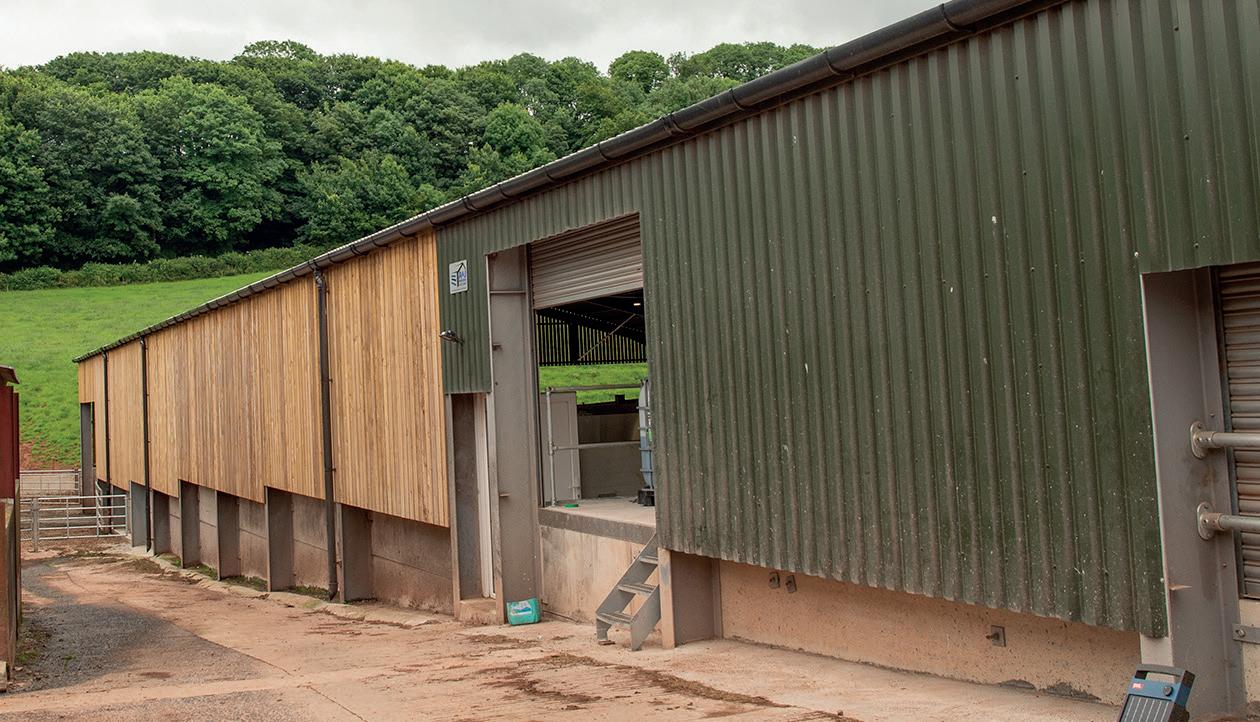

Mr Blake’s philosophy is to make the most out of grazing, home-grown feeds and silage. The £1 million investment includes the GEA T8500 rotary parlour, parlour building, collecting yard
“With 600 cows milked twice daily, in our old parlour that was seven to eight hours plus wash down for two people. We would also have to get rid of cull cows pre y quickly
rMaize silage: 35kg
rGrass silage: 20kg
rRape: 2kg
rMaize distillers: 2kg
rRolled wheat: 1.5kg
r18% dairy cake: 3-4 kg
in the spring because milking would become really hard work.
“With the rotary we have not had that pressure, so we have milked more cows this spring and into the summer, in a be er working environment, in less time and with less labour.
“Morning and a ernoon milkings are now both under two hours and we can milk with just one person if need be; just slow the rotary down a li le and be about 15-20 minutes slower.”
Chris is also due his annual herd health review and expects to see a reduction in mastitis cases.
“Our somatic cell counts have been be er since moving to the rotary. During the winter, our cell count averaged 40,000-50,000 lower than the past couple of winters, which were around 120,000.
He has also noticed a positive change in cow behaviour, with cows quieter and more relaxed through the whole milking process.
Chris says it is important to weigh up what you need and what are just expensive additions. For example, he opted out of control panels on every point, which would have cost up to £200,000 more.
“It was not going to make any di erence – and certainly not put £200,000 more milk in the bulk tank. I am really happy with what we have got here now; the technology and infrastructure serves us well and I am con dent about it as part of our investment for the future.”

Do you make maximum use of your robot
Using ForFarmers OptiRobot our Dairy and Robot Specialists are able to assess whether the interaction between robot settings, nutrition and health is optimal. It often turns out that small changes can make a big difference; Our Robot Specialists can help highlight areas where you can improve with the unique ForFarmers OptiRobot which provides:
9 Greater insight
9 More opportunities
9 Increased returns
For more information speak to your local ForFarmers Robotic Specialist or visit >


0330 678 0982
info.uk@forfarmers.eu www.forfarmers.co.uk @ForFarmersUK
‘Should there be so much emphasis
Charlie Taverner is the farming futures policy lead at the Food, Farming and Countryside Commission. He has a dairy farming background and previously worked as an agricultural journalist. He also has a PhD in the history of food.
quick quiz: What is the most popular action in the Sustainable Farming Incentive (SFI)?
In April this year, farmers across England were receiving £74.2 million for establishing and maintaining herbal leys – the action known as SAM3. Not only was this by far the most funded of the 23 available, it accounted for a quarter of all the money paid out. Based on a rate of £382 per hectare, just under 200,000 hectares were being managed with a mix of grasses, herbs and legumes. While the breakdown of that land hasn’t been published, this interest makes sense, particularly among livestock farmers. By integrating more diverse swards into their grazing platforms, they can potentially increase soil health, build resilience against drought and reduce fertiliser use, while receiving a reasonable payment, even after their costs. For many, it’s a no-brainer.
The question is whether it’s the right thing to do. For individuals, it comes down to whether they can make the leys work on their land and for their business. That money isn’t free cash: among the challenges are getting establishment right, working out which herbs work best in your soil, and maintaining that

diversity over at least three years. But plenty of grazers report that eventually the liveweight gains and milk yields stand up.
The bigger issue is whether the Government should put so much emphasis on herbal leys. These latest statistics come from a report published in July by the National Audit Office (NAO), reviewing Defra’s Farming and Countryside Programme. Only the wonks whose job it is to study policy will likely read the entire, wordy document.
But that’s a shame because the report gives a precious insider view on schemes now critical to farming finances, the environment and the shape of the countryside.
A central aim for SFI is to encourage at least 65% of land managers to adopt nature-friendly farming on at least 10% of their land by 2030. Herbal leys are a classic example. The varied and deeper rooting plant species help regenerate life in the soil as well as providing habitats for creatures above ground. By letting plants go to flower, a field becomes more attractive for pollinators.
Of course, there are other ways of providing these benefits. There has been chatter, especially online, about some land managers hastily converting established grassland to get the payment, without necessarily committing for the long run. Permanent pasture could be carefully managed to allow native species to return, though that obviously takes years. For the moment, the Government has landed on herbal leys as one of its tools of choice.
This reflects the report’s main critique of the whole scheme: its ‘iterative’ nature. This is the way SFI is being rolled out gradually and tweaked over time. It also allows farmers and landowners, wherever they are, to pick and mix options on pockets of land, without being tied into a suite of changes. This approach ensures feedback can be rapidly reflected, and has probably contributed to the SFI’s rising uptake. But, as the NAO points out, it has big drawbacks. First, by leaving the scheme open-ended, the overall
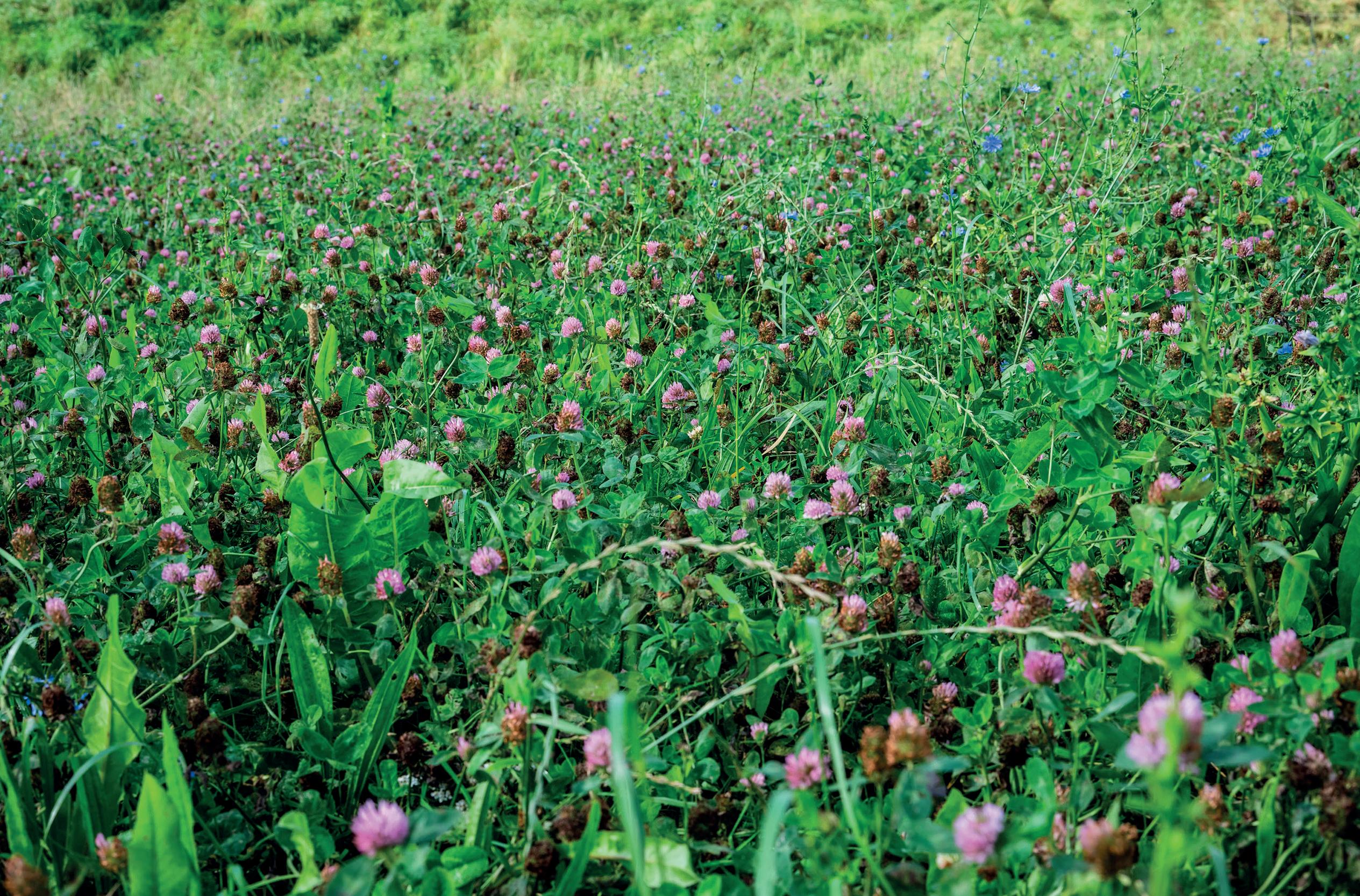
“ It’s vital all farmers feel they can trust that the Government is taking big, strategic decisions on their behalf
costs can balloon, as can the amounts poured into certain actions. at is money that might have gone towards more ambitious nature recovery projects, which might nd their budgets squeezed.
Second, it’s unclear if this piecemeal programme is achieving its overarching aims. It’s great that farmers everywhere are being incentivised to boost biodiversity, but Defra has itself admi ed the funding will need to become more targeted. If this happens, practices that are becoming standard, such as the herbal leys, might receive less money or lose it altogether.
It’s li le wonder that farmers are sceptical about the Government’s direction. Earlier this year, there was uproar about SFI’s possible impact on food security. In the latest round of Defra’s own opinion tracker,

just 40% of respondents said they were positive about their farming future.
ere are some low-cost ways that Ministers could rebuild dwindling con dence. ey could be upfront about their long-term plan for how they want Britain’s farmers to farm. ey could publish a transparent and accountable land use framework that balances the need for food, nature, housing, energy and all the other demands. And they could produce a regular impact report on how the various schemes are a ecting food production and hi ing environmental targets.
As we are realising, the new payment regime is reshaping how our land is used. But farming is complicated enough without these wider worries.
at’s why it’s vital all farmers feel they can trust that the Government is taking big, strategic decisions on their behalf.
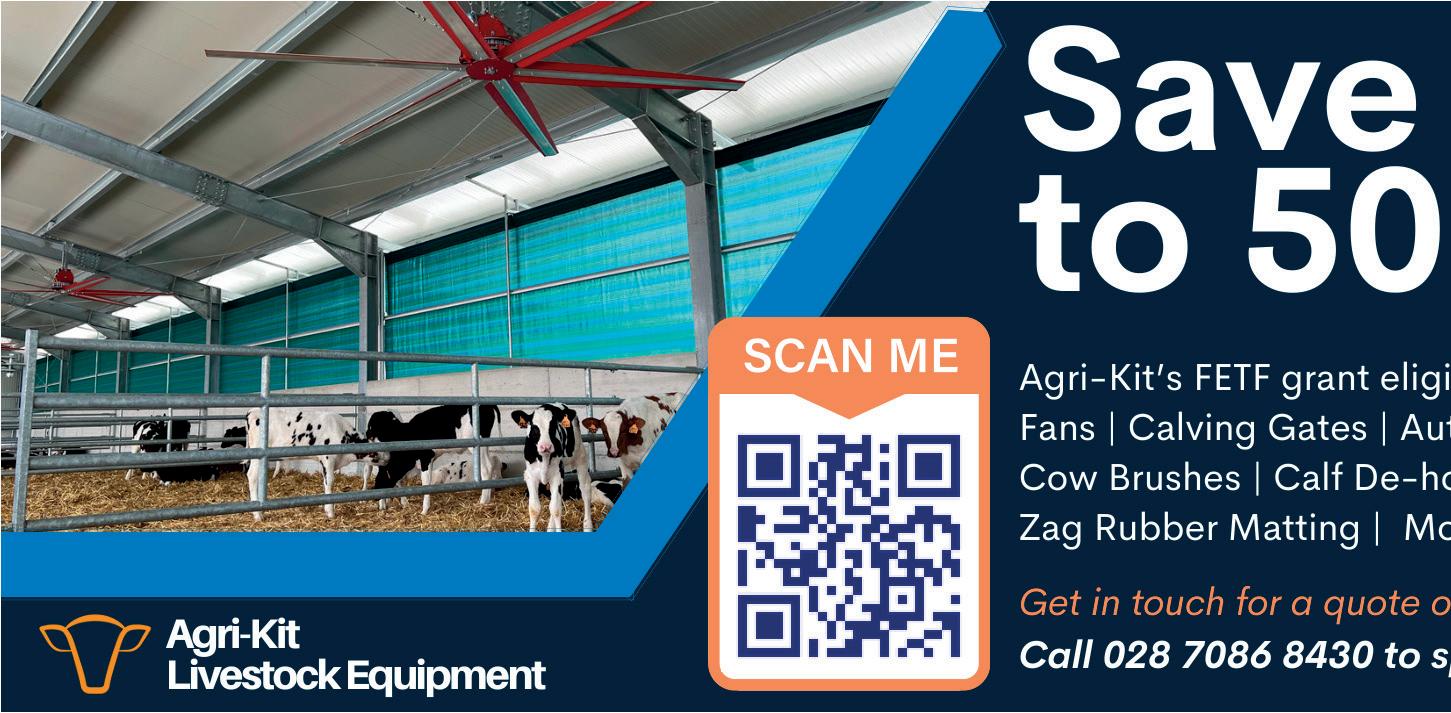
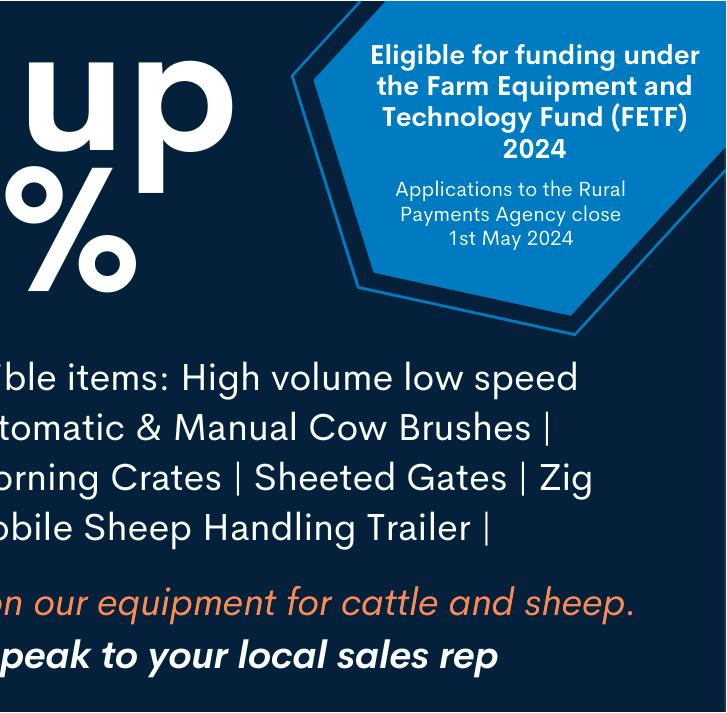

High concentrate diets and acidic clamp silage are some of the main causes of sub-acute ruminal acidosis in dairy cows. Katie Fallon reports.
Arelatively common nutritional condition seen among the UK’s dairy herds, subacute ruminal acidosis (SA ) is a result of the rumen pH dropping below six for a prolonged period of time.
Resulting in the burning of rumen papillae, ca le with SA are unable to absorb volatile fa y acids, and therefore unable to absorb energy e ciently.
Generally caused by the overfeeding of concentrates, a lack of bre in the diet, wet and acidic silages, or turnout onto lush grass,
SA is a reasonably common condition, but is not always easy to identify.
Debby Brown, veterinary technical manager at Dugdale Nutrition, says the condition can o en go under the radar in herds and cause niggling issues that are not always picked up on, or it can be more severe and show clinical signs.
She says: “Whether it is diagnosed or not is very dependant on who is spending time looking at those cows.”
Clinical signs of SA include
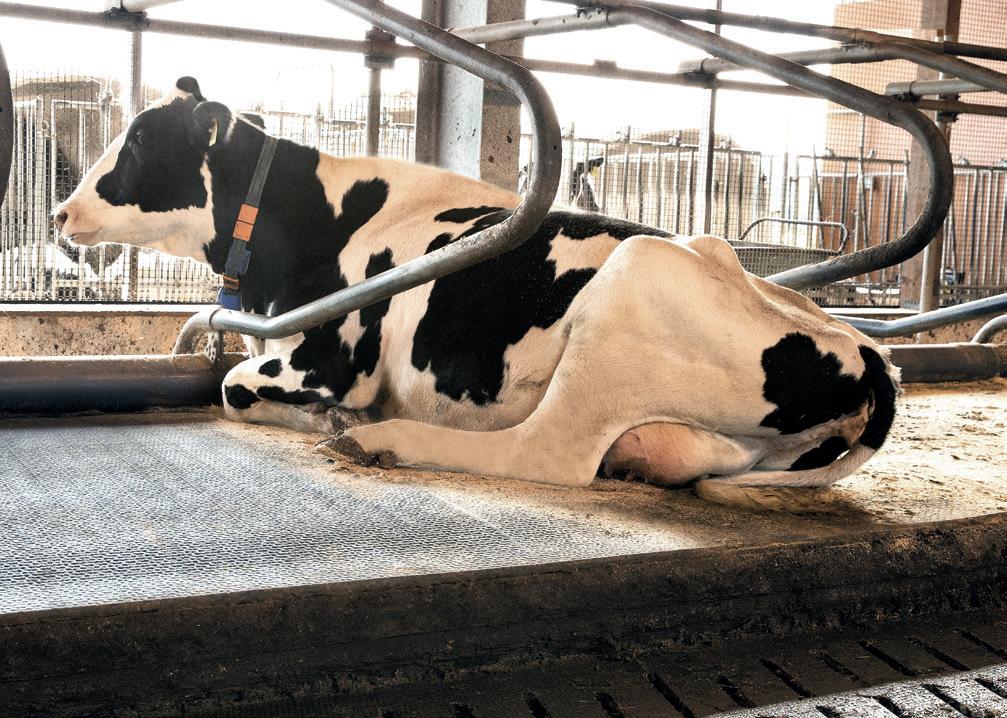


variable consistency of faeces, an increased amount of cud balls seen throughout the shed, reduced cudding rate and a reduction in the number of cows lying down and comfortably cudding.
She says: “In some situations, you will see a drop in bu erfat in the milk, and if you are striving for more milk, you will not achieve it. It de nitely holds milk back.”
Mrs Brown says some cows will be more a ected than others, depending on yield and the amount of cake being supplemented in the parlour, but it can also be a whole herd issue.
She adds: “You can walk
through a shed and feel that the cows are not quite right.”
Mrs Brown says diagnosis of the condition is based on walking around the cows and seeing clinical signs as well as in milk production. She says it is also possible for vets to carry out a rumenocentesis and take a sample of rumen content to check for SA , but the results are not always reliable.
“If it is not something that a herd has had historically and something has changed – such as suddenly changing onto a wet, acidic silage, or feeding a lot more concentrate – then you will see






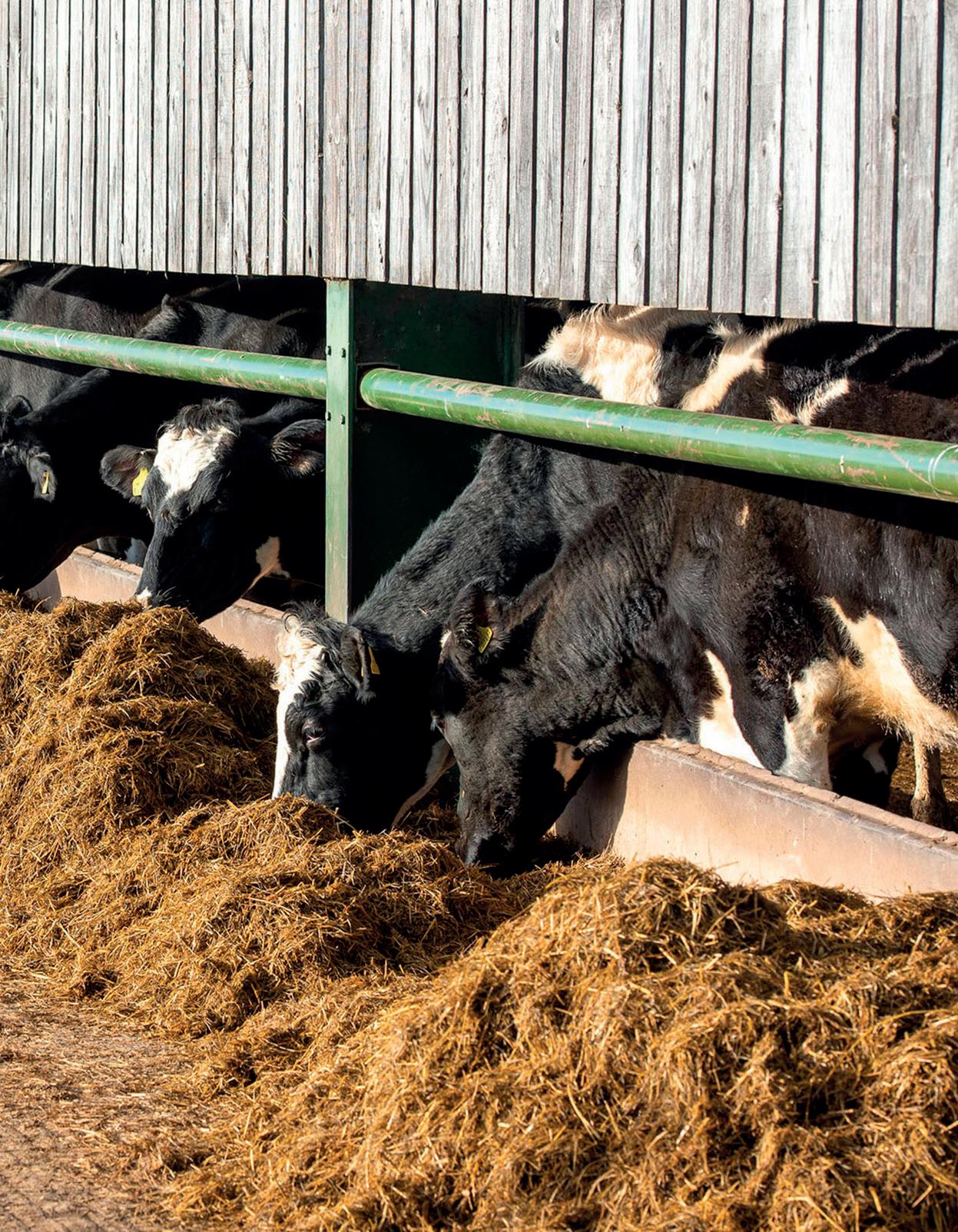
SA develop fairly quickly,” says Mrs Brown.
In this case, she says the condition is relatively easy to treat with dietary adjustments to raise the pH of the rumen, including the use of rumen bu ers.
“It might be that you add a bit more straw into the ration to slow down digestion or balance the silage out, or reduce the amount of concentrate and put a bit of dry forage in the ration,” she adds.
If SA has been present in the herd for a long period of time, Mrs Brown says readjusting the
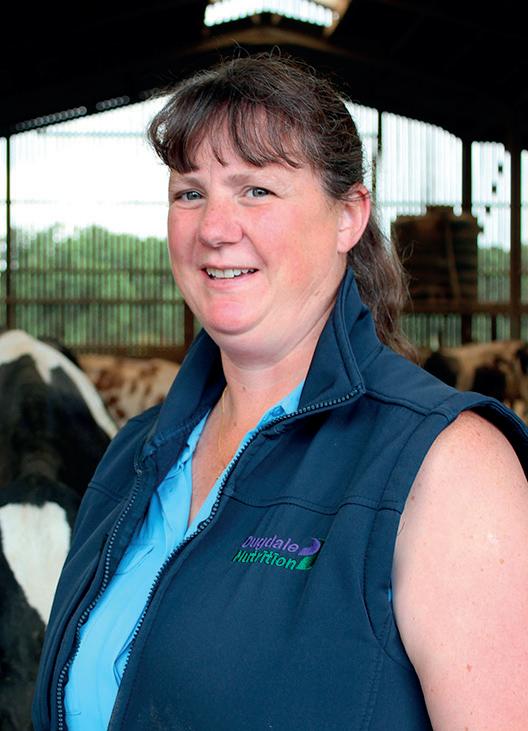
Debby Brown
diet is the only option in terms of treatment.
“In this situation, a lot of the time cows will have to go through a dry period and come back into lactation, so you are looking at a 12- to 18-month cycle before the rumen recovers,” she says.
She adds: “Some cows will never recover – it depends how long-term the damage is. e longer the SA goes on for, the more damage to the papillae and the longer it takes to recover.”
When looking at prevention, Mrs Brown advises ensuring diets contain enough bre as well as regularly sampling forages to combat acidic silages before they are fed to the herd.
She says: “It is a case of being on the ball more than anything else, so you can stop it before it starts.”
Mrs Brown advises that, as a minimum, silages should be sampled when changing clamps or if changes in the silage are noticed throughout a clamp.
“I would advise testing at least monthly. If you see sudden changes in the cows, even if you have not changed clamps, it is worth resampling to see if something has changed,” she says.

Apart from the sale of youngstock and any additional farm diversification projects, most income on any dairy unit is earned through milk yield and milk quality.
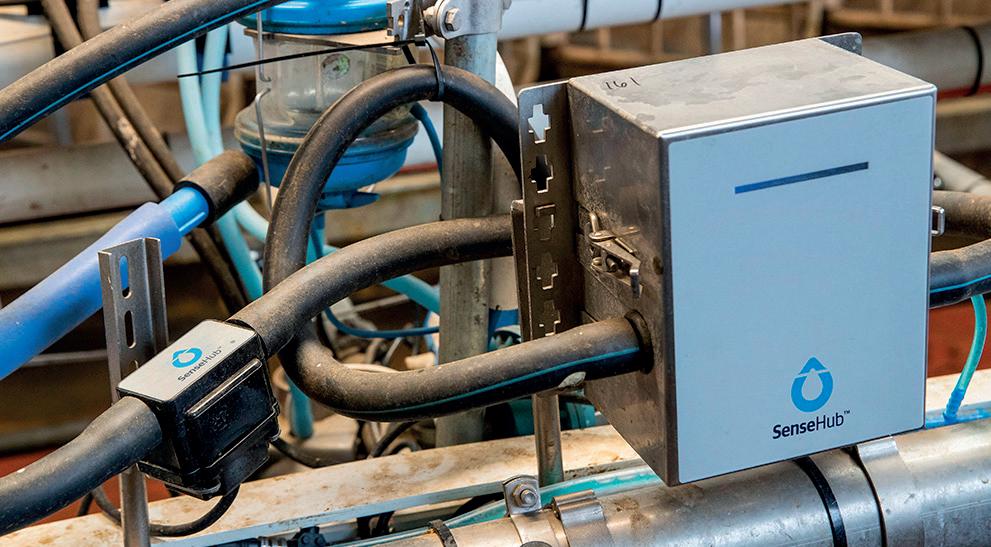
Milk yield is easy to measure, but analysing milk quality is typically dependent on monthly milk recording and/or tests carried out by the milk purchaser.
In both cases, the information obtained will be several days out of date by the time the results have been received.
Assessing milk quality at each milking has previously been prohibitively time-consuming and expensive, but there is now a new way to achieve daily milk analysis which does not require any additional labour capacity.
In addition to measuring rumination frequency and duration to assess the general well-being of dairy cattle and activity patterns to identify the tell-tale signs of heat events, the SenseHub Ecosystem from MSD Animal Health also enables herd managers to gain an improved understanding of their herd’s milk quality at every milking.
Two in-line milk monitors, both of which are compatible with any type or make of milking parlour, assess a range of key parameters as each individual cow is being milked.
The SenseHub Dairy In-Line MilkPlus Sensor monitors critical milk data,
such as yield, fat, protein, lactose, blood and conductivity.
Meanwhile, the SenseHub Dairy In-Line Somatic Cell Count Sensor provides individual somatic cell count (SCC) results within two minutes of the start of milking.
Data from these sensors is automatically displayed as easy-to-understand graphs and reports in the SenseHub app, which makes it simple for herd managers to keep a close eye on milking trends and milk quality of individual cows.
Animals can also be monitored on a group basis to guide longer term herd management decisions.
For farmers who want access to the milk quality insights offered by the MilkPlus and SCC sensors (plus the ability to control a SenseHub automatic sorting gate), but do not want to monitor for heat and health, the SenseHub Dairy system is compatible with Allflex Livestock Intelligence’s Electronic Identification (EID) eartags.
This entry-level EID-based package is available via the new SenseHub Essential application plan and provides farmers with the option to upgrade to the wider SenseHub Ecosystem at any point in the future.
Producer Sally Williams has developed a rigorous calf health and hygiene strategy, providing a
Sally Williams and her parents, Alex and Ruth Wilson, run a herd of 350 Holstein Friesians, housed indoors, with six robotic milkers.
e family also rear all their own beef progeny, including dairy bulls. In total, they manage 1,200 head of ca le.
Since coming back to work fulltime on the farm in 2009, Sally has focused on se ing up a series of calf health and hygiene management protocols that help ensure every calf is as robust as possible.
“We have a top-notch calf-rearer who is really motivated, making sure everything is done right for every calf, every time,” she says. “Mortality is less than 0.5%.”
e family’s calves are housed in hutches, ‘buddied up’ in pairs, with up to 100 calves in total at busy times.
Sally says the hutches are completely mucked out and disinfected between one group of calves and the next, before being li ed o the ground to expose them to UV light for at least three weeks before new calves come in.
e calf rearing area is twice the
J As well as maintaining the overall quality of livestock bedding, results from an on-farm trial have shown that using a natural microbial bedding conditioner can also help deliver an impressive reduction in ammonia emissions.
Lientjie Colahan, environmental product manager at Lallemand Animal Nutrition, says: “The mix of bacteria, enzymes and highly absorbent carrier absorbs excess moisture
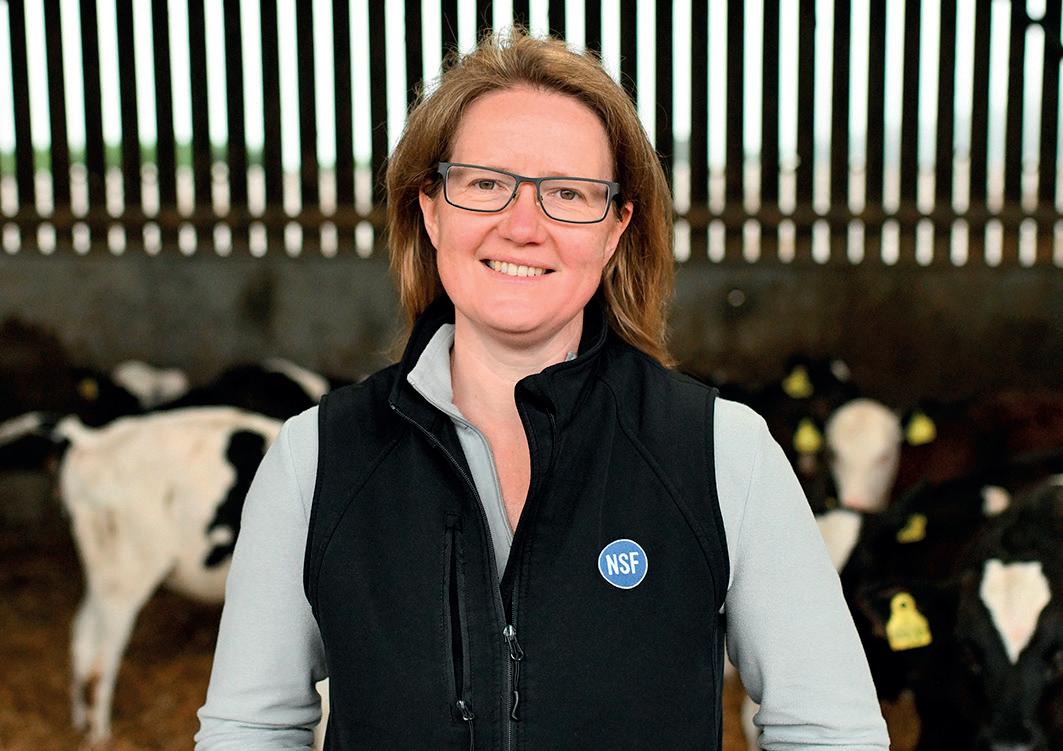
challenge and maintain calf health, welfare and performance, says Sally.
“We need all the cogs working together to make sure the calves are bombproof, paying meticulous a ention to detail in everything from feeding to hygiene,” she says.
“If there is ever a blip in one area, calves can usually withstand it because all the other pillars are still in place and we have laid strong groundwork.”

required size, so only half of it has calves at any time, leaving the remaining ground to rest. Strict hygiene protocols are followed for milk buckets and teats.
To prepare hutches for new calves, the calf-rearer spreads a microbial bedding conditioner on the ground before pu ing straw in, and then adds more conditioner on top of the straw.
Once calves are in, Sally says they apply the microbial bedding conditioner, Eazybed Pro, which supports the growth of positive microbes,
in bedding and helps maintain a positive microbial bedding condition.
“This results in reduced ammonia emissions and improved air quality.”
She adds: “The trial showed that the bedding conditioner reduced NH3 emissions by up to 50%. The air quality in the shed was maintained as a result of the maintenance of bedding dryness and microbial quality. The reduction of smell was particularly noticeable.”
three times a week to help maintain overall bedding hygiene and reduce the prevalence of bacterial problems.
“We started using it a couple of years ago when we were having challenges with crypto a ecting calves,” says Sally.
“An outbreak is a re ection on management. I wanted a proactive solution to help avoid future problems, as you are never going to be able to completely get rid of crypto in the calf’s environment.
“ e bedding conditioner is a gentle product for people to handle and it has de nitely helped us keep on top of protozoal and bacterial issues.”
Bedding hygiene is just one of the many management factors that combine to help reduce pathogen
Another crucial element of calf health protection at Clackmae Farm is their plentiful approach to colostrum management.
Sally says: “Newborn calves are given four litres of pasteurised colostrum via a tube, then for the rst ve days they are fed a highfat pasteurised milk containing high-quality colostrum.
“ e next stage is a pasteurised milk and milk powder mix.
“We feed far more than anyone else I have come across – calves are drinking 12 litres per day by three weeks old.”
A home-mixed blend is o ered from birth and calves are usually consistently eating it a er a week to 10 days.
As well as colostrum intake, further preventative health measures include a dose of feed additive each
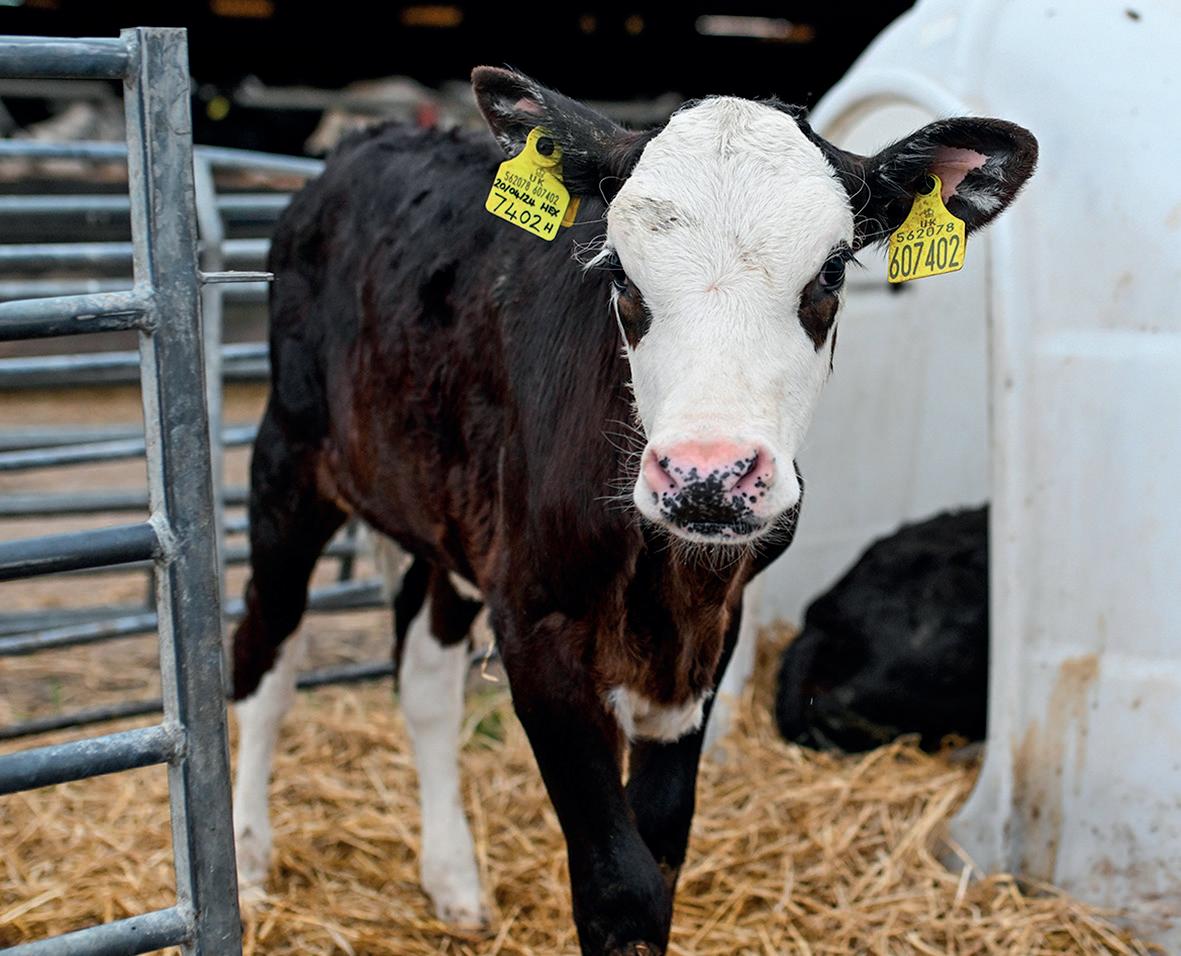

strong foundation for herd performance at Clackmae Farm in Berwickshire. Dairy Farmer reports.
morning and night. Tannic acid powder is also added to the milk once a day from birth.
e la er helps protect against cryptosporidiosis and coccidiosis, also giving protection against coccidiosis beyond weaning. At 10 days old, calves receive a Rispoval intranasal vaccination.
Sally says: “If any calf begins to look a li le o -colour, our calf-rearer always acts quickly, giving them an immune support gel to help stabilise the gut, along with Rehydion and a Metacam injection, before problems have a chance to develop.”
At six to seven weeks old, calves move from the hutches into the shed in groups of seven, where they remain on milk and are weaned very gradually at nine to 10 weeks old,
moving from twice-daily milk feeds to once a day, then coming o milk completely.
A weigh-band is used regularly from birth to monitor growth, with all dairy and bull calves managed and fed in the same way until they are six months old.
Sally adds: “We are a closed herd and, other than airborne disease spread, so many potential problems are down to gaps in monitoring and management. It is up to us to maintain and evolve our calf-rearing protocols; nothing is xed.
“ ere will be new health challenges appearing and we are always open to trying new things as new research comes up.”
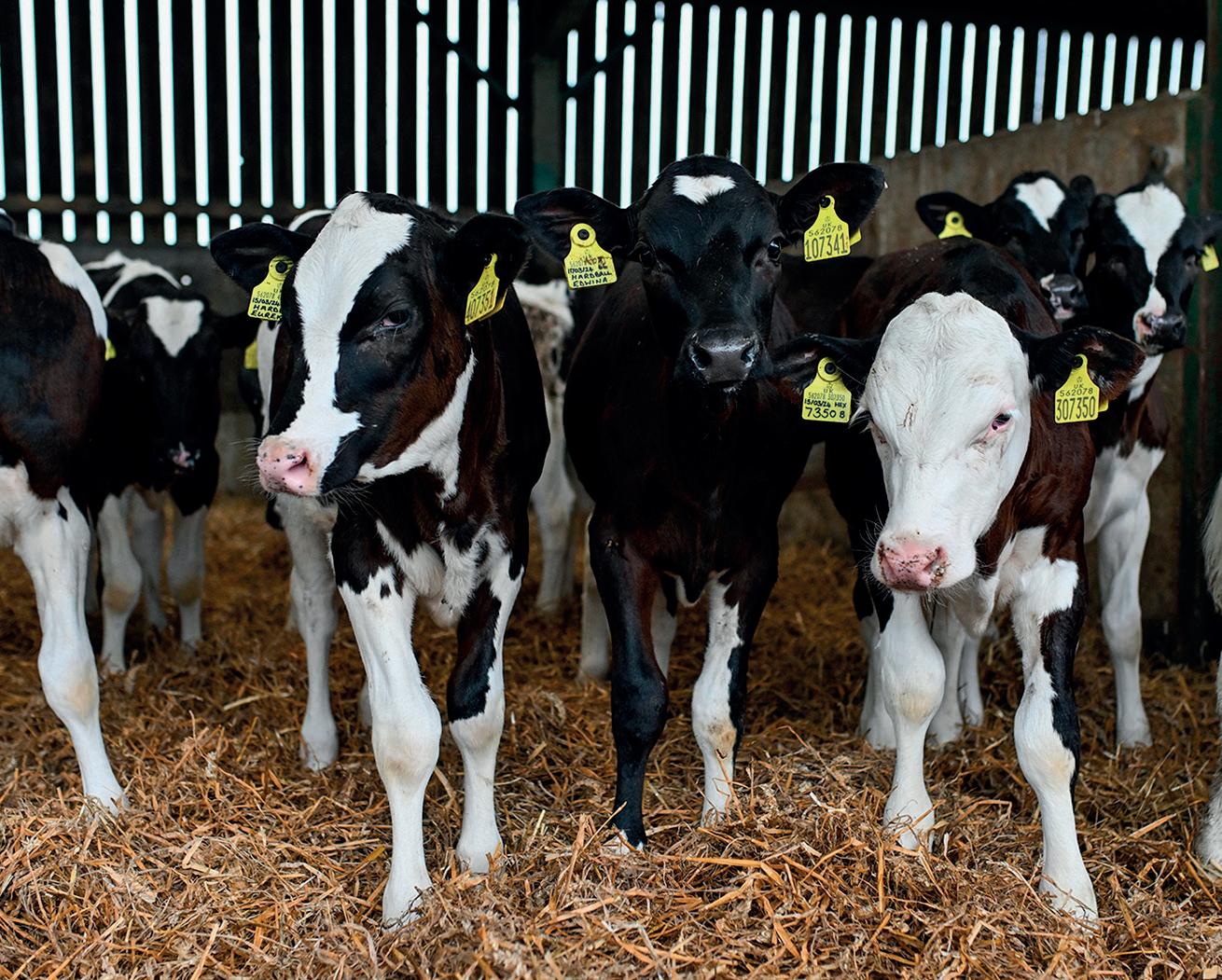
Calves are gradually weaned at nine to 10 weeks old, moving from twice-daily milk feeds to once a day, then coming off milk completely.


Achieving the highest possible outcomes for your livestock starts with the care and attention which goes into youngstock. In this series, Neogen, Trouw Nutrition and Virbac have teamed up to explain best practice when it comes to health, hygiene, genetics and nutrition.



Increasing the volume of milk replacer fed to calves prior to weaning is a proven strategy resulting in long-term benefits to fertility, survivability and lactation performance.
This has been demonstrated by Trouw Nutrition’s Lifestart trials, which compare groups of calves fed different volumes of high quality milk replacer. These results should not come as a surprise, says Dr Aaron Brown, Trouw Nutrition’s technical sales manager, as allowing calves to feed to appetite mimics their natural behaviour when feeding from their dams.
He says: “Young calves are driven to consume milk and allowing them to satisfy this behaviour from birth will support reaching the peak of the feed curve as quickly and efficiently as possible.
“The aim should be to match the natural feed curve so the peak allowance is typically consumed from as young as a few days old.
“When calves are allowed to feed to appetite, signs of hunger stress, such as vocalisation or unrewarded visits to the feeder, are much reduced.
“A survey commissioned by Trouw Nutrition showed 65% of dairy farmers are feeding their calves six litres or less of milk replacer per day. There is a misconception that if calves are fed less milk, starter feed consumption is optimised, but research shows it is not as simple as this.
“Studies show calves fed ad-lib or high volumes of good quality milk replacer grew more rapidly and had greater acceleration of solid feed intake when weaning commenced, compared with groups with more restricted access.”
In the first four weeks of their lives, calves are monogastric and therefore unable to properly digest solids.
Elevated feeding strategies over this period can optimise development and integrity of the gastrointestinal tract which promotes greater intakes throughout the cow’s life, according to Dr Brown.
Trouw Nutrition’s Lifestart trials compared calf groups made up from 86 Holstein heifers fed on two different rates of a high-quality milk replacer.
Dr Brown says: “Calves were split into two groups as calves and were fed twice-daily with one group receiving four litres of milk per calf per day and the other group receiving
eight litres of milk prior to weaning at eight weeks old.
“Those calves fed at the higher rate reached their target weight for first service 16 days ahead of the calves fed at the lower volume. These calves also went to yield an extra 400 litres on average over their first lactation.”
The study monitored the calves from birth and some of the group are now in their sixth lactation.
Results for the cohorts showed that 17% more of the group fed the higher volume of milk replacer finished their second lactation and ongoing survival rates in subsequent lactations were also significantly higher.
Dr Brown says some farmers opt for lower feeding rates because of concerns about cost.
He says these concerns are misplaced as much of this additional investment will be recouped in the short-term due to reductions in the number of days to first calving and lower incidence of disease.
He says: “Using an average cost of milk replacer of 37ppl, feeding an extra two litres of milk from birth to weaning will cost £32.
“However, the daily cost of feeding a heifer while she is not in milk is £2.30/day and so if age at first calving is reduced by eight days, this offers a feed cost saving alone of £20.
“Add in the earlier and higher
● Feed milk replacer at the concentration and volume required to achieve targeted growth rates –typically at least 10 litres per day fed as a minimum of two feeds
● Calves have a higher
energy requirement in cold environmental temperatures, requiring an average of 0.50.6MJ of energy for every 5degC drop in temperature below 15degC; adapt feeding regimes to meet this need
● Maintain a high standard
of cleanliness throughout the preparation and feeding process
● Ad-lib clean water from birth is essential for good rumen development and feed intake
● Drinking from a teat, rather than a bucket or trough, helps the calf satisfy its urge to suckle
milk yield and savings from reduced disease incidence the return on investment really starts to stack up.
“High growth rates in the first few weeks of life have been shown to demonstrate long-term benefits in relation to fertility, health, survivability and lactation performance.
“During the first four weeks of life, feed conversion rates for calves are high, as calves will convert more than half the weight of the feed they consume into growth.
“The first 50 days of a calf’s life are crucial for organ development, specifically the liver, lungs, heart and mammary tissue, so if milk is restricted over this period, animals cannot make up for this shortfall in later life.
“Furthermore, feeding higher volumes of milk over the first three to four weeks will not have any impact on the consumption of starter feed, as it is minimal at this age.
“Concerns that increased feeding rates in very young calves can lead to overspill of milk into the rumen are unproven.
“Calves are typically fed four litres of colostrum in one feed immediately after birth, with a second colostrum feed of two litres shortly afterwards. Most calves will consume this amount, so milk volume can usually be increased to eight litres within the first week.”
Dr Brown says supporting young calves with increased energy intake at a young age can also help prevent the often crippling effects of infections causing scours, such as cryptosporidium.
He says: “Allowing higher intakes helps calves to recover more quickly from cryptosporidium because the energy supplied
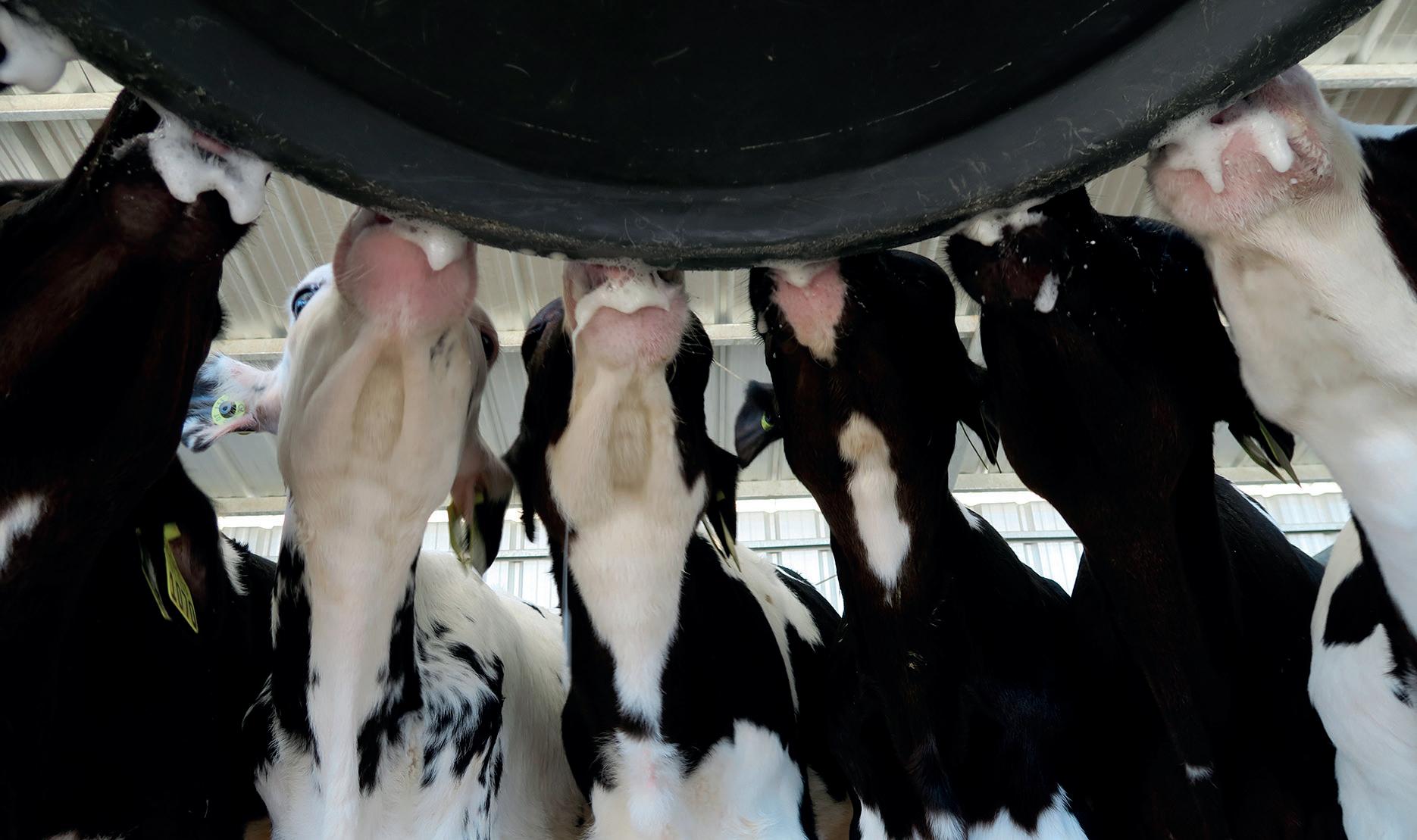
supports hydration and helps the calf to mount an immune response. This feeding regime will promote the development of the gastrointestinal tract, thus improving the ability of calves to digest solid feed as they approach weaning age.”
Choosing a milk replacer which can be fed at higher volumes is important, with composition closely resembling cow’s milk with a higher percentage of dairy protein.
Raw whole milk is typically composed of 32% fat, 26% protein and 36% lactose on a dry matter basis.
Milk replacers which are high in digestible dairy protein and the correct fatty acid balance will reduce the likelihood of scours and abomasal bloat, Dr Brown says.
“Calves fed a milk replacer with a higher proportion of dairy protein and a fatty acid content
with a composition which is as close as possible to the equivalent in cow’s milk will achieve higher growth rates and improved organ development.
“Milk replacers containing more short- and medium-chain fatty acids are more easily digestible by the calf. They can, therefore, be fed at the higher rates recommended in the Lifestart trials with minimal risk of gastral upsets.
“Trouw Nutrition milk replacers have optimal vegetable oil content to provide better quality fats with a similar macronutrient content to cow’s milk.”
Dr Brown advises feeding milk replacers as close to appetite as possible in the first four to six weeks.
He advocates careful observation of milk intakes of individual
calves to guide feeding rates, as some calves will increase their consumption more quickly over time than others.
He says: “Higher intakes can be achieved with two feeds of five to six litres each per day, but feeding more frequently is always desirable. The use of automatic feeders can enable ad-lib provision of milk replacer, promoting higher intakes.
“Feeding eight litres or more per day or more of a high-quality milk replacer to pre-weaning calves unlocks their genetic potential.
“Proven benefits include a reduced age at first calving, increased lifetime productivity and improved profitability, resulting in a reduction in the cow’s carbon footprint.”
l The combined expertise of Neogen, Trouw Nutrition and Virbac provides valuable insight into best practices for health, genetics and nutrition. By implementing these strategies, farmers can improve the quality and performance of their herds while promoting better animal welfare. Investing in youngstock through preventative care, genetic evaluation and high-quality nutrition is a key factor in achieving successful livestock production.
Running two dairy farms in a co-operative model is proving costly in the Czech Republic in terms of logistics, labour and equipment costs.
With that in mind, the agricultural co-operative Kozichovice, with a total of 600 milking cows, will merge its two farms on to one location, with the goal of saving 15% in operational costs.
e co-op was founded in 1950, then re-established again in 1989, with 230 small land and property owners, following the Velvet Revolution, which saw the end of communist rule in the country.
Farm manager Jakub Fukal
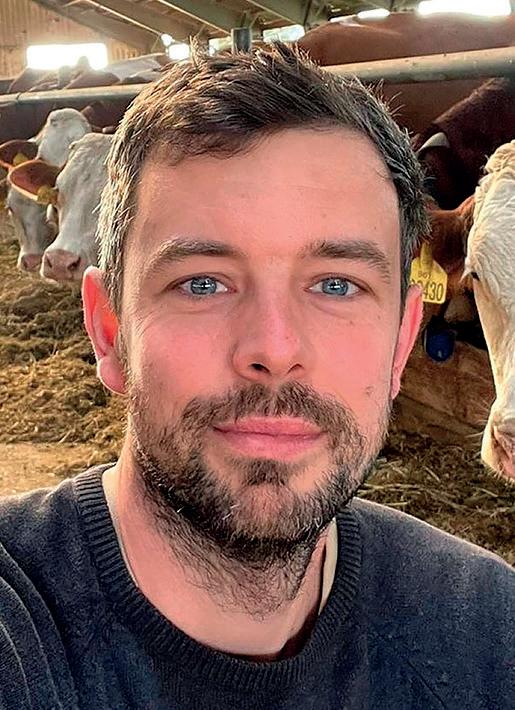
A Czech co-operative plans to merge its two dairy farms in 2025 to save 15% in operational costs. Chris McCullough reports.
explains the farm is located in the middle of Czechia at an altitude of 465 metres above sea level, with an average annual rainfall of about 450mm.
He says: “We cultivate 2,100 hectares of crops, run two dairy farms and also operate a biogas plant.
“Elections within the co-op are held every ve years and all members elect seven members on to the management board, from which one overall manager is chosen.
“In total, we run 600 cows of the Czech red breed, much like the Fleckvieh or Simmental breed, across the two farms.”
e herd’s average yield per cow is 9,100kg of milk at 3.8% bu erfat and 3.5% protein. Each farm has 300 cows which are milked twice a day.
Cows are arti cially inseminated with genetics from Czech and German bulls.
Mr Fukal says: “Our breeding
strategy is to have strong animals with healthy legs, bones and regular udders. Hand in hand with healthy animals goes longevity, which is also what we aim for.
“One of our goals is to try to improve the cow’s udder shape as we are struggling somewhat with udder irregularity.
“Heifers undergo genomic testing and are paired with suitable sires to achieve our breeding goals.”
e two farms within the co-op are operated independently of each other. Two employees feed the cows and clean the barns, while two sta milk the cows on shi rotations.
In total, there are 16 people on both farms as part of the milking team. e co-op employs a total of 67 people, 24 of which work in livestock production.
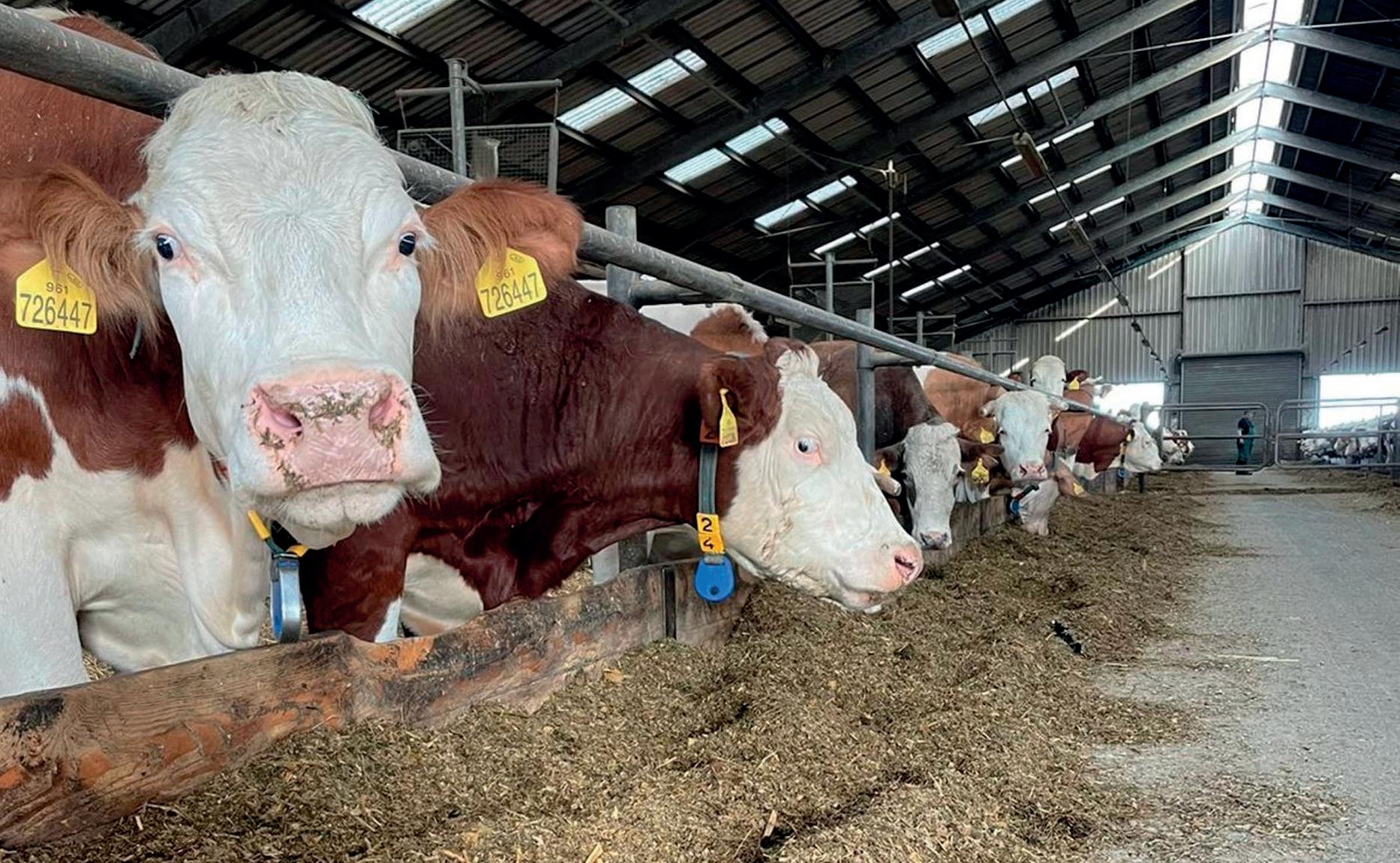

Cows are milked using two milking parlours – a DeLaval seven-a-side herringbone and a Westfalia six-a-side auto tandem.
Mr Fukal says: “Cows are milked twice per day. We start milking in the morning at 3am and nish at 8am, then in the a ernoon we start milking at 2pm and nish at 7pm.
“Our milk is sold to Madeta, the largest dairy processor in Czechia, which handles one million litres of milk per day. It is sold to the processor through a marketing co-operative, which delivers 100,000 litres of milk per day to the dairy.
“Our daily milk production is 16,000 litres and we are trading at 0.1095 Czech Koruna per litre [36ppl].”
Kozichovice continues to invest in the farms, upgrading equipment and infrastructure, and has plans to merge the two farms to one location.
Mr Fukal says: “Last year, we bought a new feed wagon, and the
rCows are housed in groups all year round according to their lactation, and fed an appropriate total mixed ration (TMR)
rCows are fed with a Storti horizontal feed wagon on one farm and the other farm uses a vertical feed wagon of the same brand
rThe TMR for one cow per day consists of 24kg of maize silage, 10kg of alfalfa and peas, 7kg of complete feed mix, 2.5kg of rape meal, 0.5kg of straw and two to four litres of water depending on the dry matter of the TMR
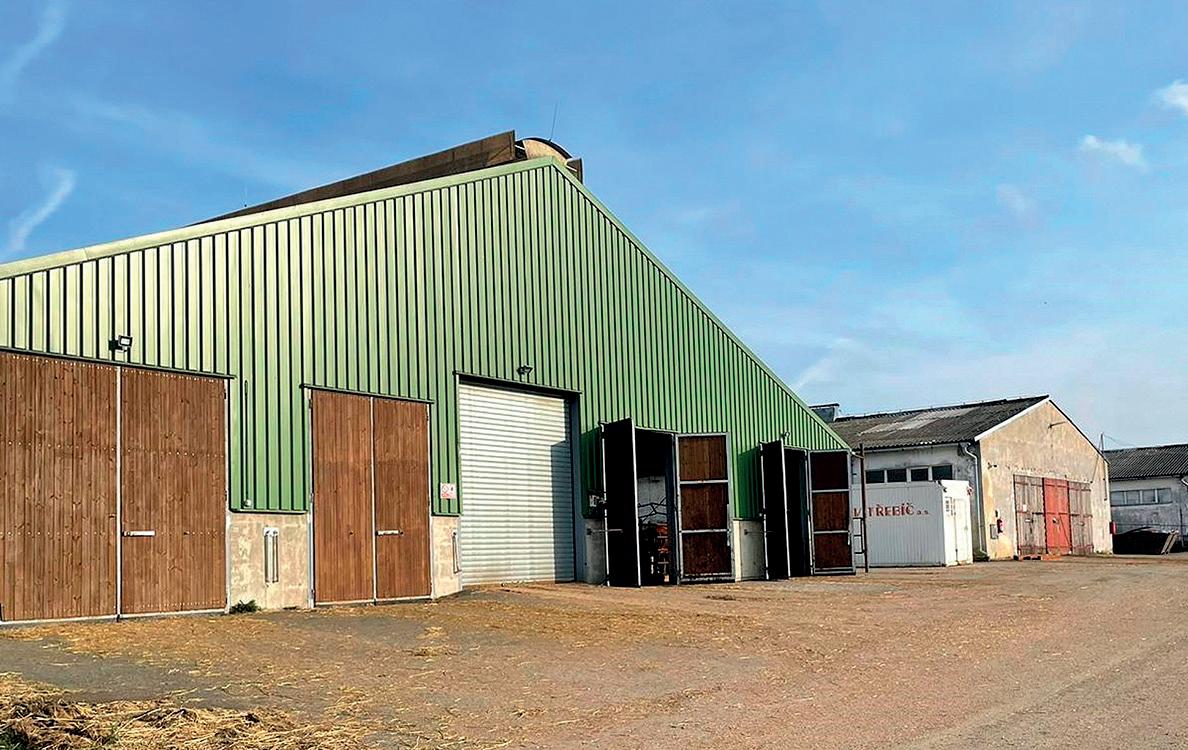
ventilation system in the dairy barns was upgraded.
“We have plans later this year to construct a new DeLaval 15-a-side parallel milking parlour on one of the farms with an 18,000-litre milk tank.
“And we plan to construct a new cow barn for 320 dairy cows some time in 2025. We will also be modernising the barns for the dairy calves.” e total investment for these
projects is expected to be about 50 million Czech Koruna (£1.6m).
Mr Fukal says: “ e main reason for this signi cant investment is because in 2025 we aim to merge our two farms together into one location to reduce operating costs.
“We also plan to sell our own beef and milk through self-service vending machines on-farm.”
Free next working day UK mainland & Ireland delivery ORDER BY 3PM when you spend £100 online excluding VAT Make your life easier with our Electric Farmer Crush Do ring us if you’d like more information!

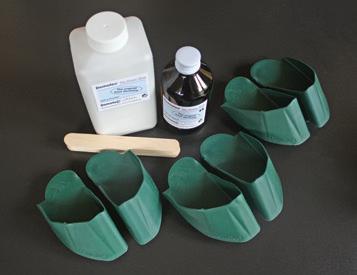
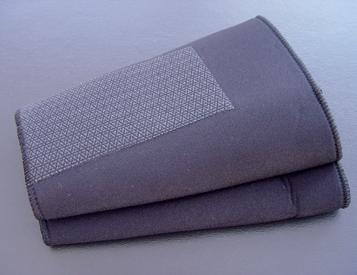

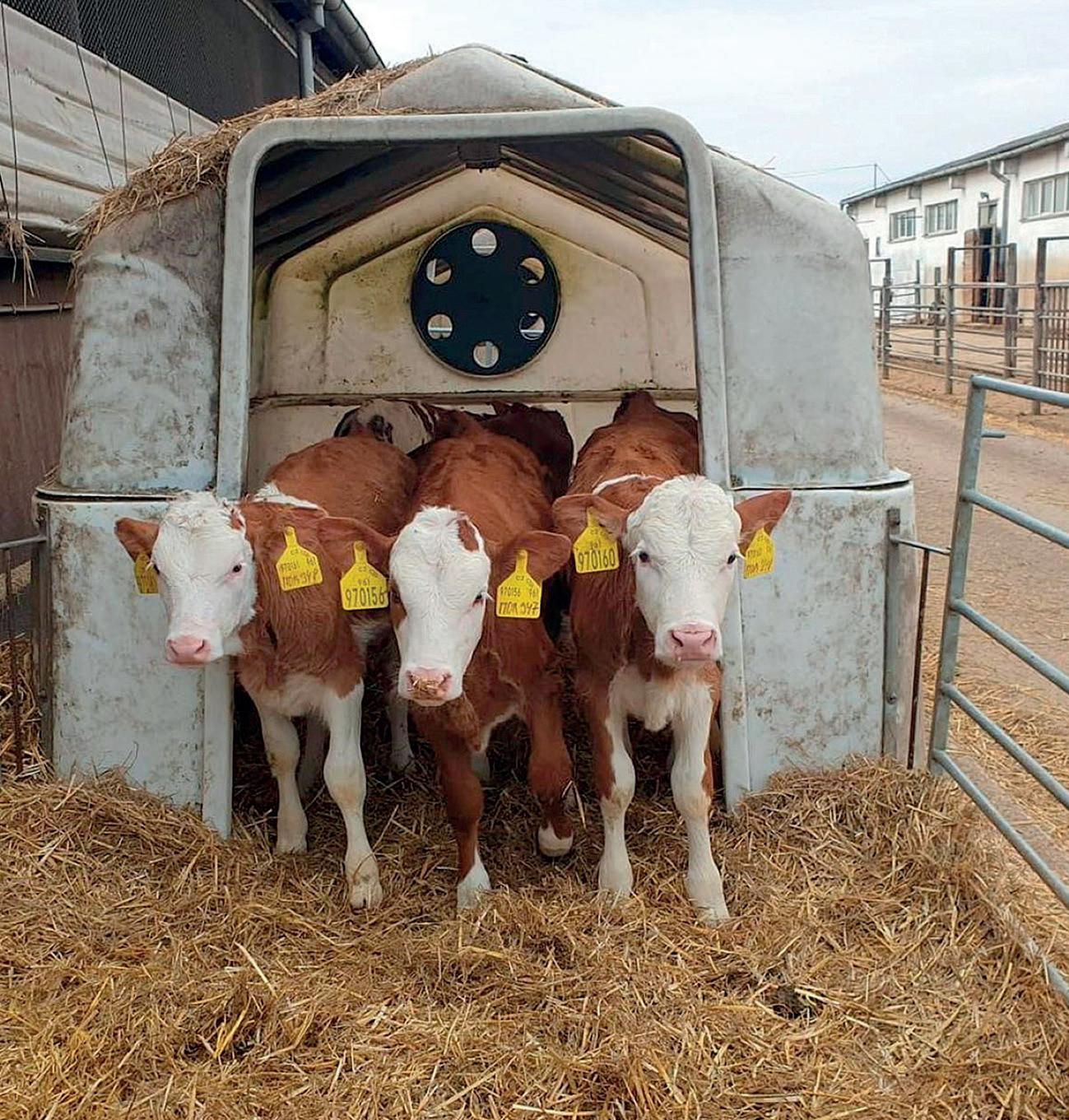

As with most dairy farms around the world, the main problem on this co-op farm is sourcing experienced labour.
Mr Fukal says: “At the moment, this hard labour job is not regarded as lucrative within society, especially because of weekend shi s, night
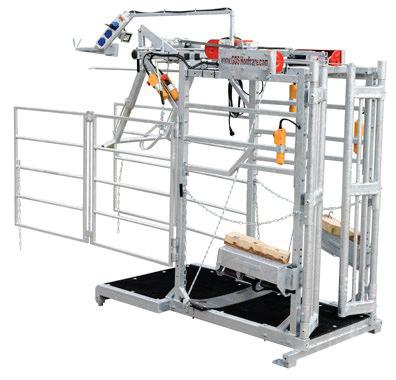

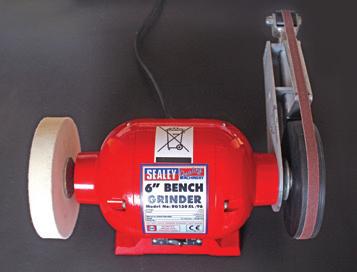

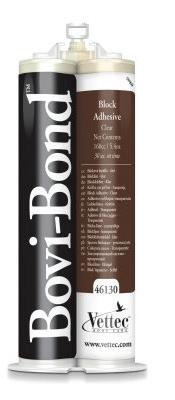

shi s, etc. However, we try to o er people appropriate salary conditions and employ people mainly from Czechia.
“Other challenges we face are uctuating milk prices and the EU Green Deal will have some major implications.”

From farmer cattle crushes to wooden blocks, we have everything you need to keep your cows' feet healthy!

"Thank you to Steve and his team for an excellent and very quick service and very competitive prices every time, thanks!”

Breeding company Viking Genetics recently held a conference where updates on research and milk price predictions were given. Ellie Layton reports.
Astudy carried out in 2023 has compared the performance of three-way cross-bred cows against pure-bred Holstein cows.
Carried out by Italian professor of animal science Dr Giovanni Bittante, the study looked at a range of body measurements, as well as different metrics of the cows’ productivity and production efficiency.
The study involved 791 cows, 440 cross-breds (comprising a cross of the Viking Red, Montbeliarde and Holstein breeds) and 351 purebreds, managed across two herds.
Within each herd, cross-breds and pure-breds were managed as one group, being reared and milked together and fed the same diets.
The heart girth, height at withers, and body length were measured, and body condition score (BCS) was determined on all cows on a single test day.
Dr Bittante said: “The body weight of 225 cows was used to develop an equation to predict weight from body size traits, parity and days in milk, which was then used to estimate the total body weight

of the group and protein and lipid contents of each animal.”
Dr Bittante said that he found that combining measures of production and efficiency traits related to body composition and the energy cost of production seemed to be more effective criteria for comparing cross-bred and pure-bred Holstein cows than just milk, fat, and protein yields.
“Evidence suggested that maintenance energy requirements may be closely related to body protein mass and we believed Holstein and crossbred cows may be different in body
JAlso speaking at the conference, dairy market analyst Chris Walkland, said he predicted a plateau in prices ahead of autumn.
He said: “We have had a good run of milk prices, which has been echoed globally, although I think it may be ending as we start to see a plateau trend amid steadying prices.”
Despite the spotlight on the
dairy sector not always being positive, Mr Walkland reassured farmers that this was an exciting time to be in the dairy industry, with significant investments from processors and fellow dairy farmers being made.
Mr Walkland said: “Although producer numbers have fallen over the past decade, by up to one third in some counties, businesses are expanding and,
composition, so we measured their net energy for maintenance,” he said.
“On the same day that body measurements were collected, individual test-day milk yield and fat and protein contents were retrieved once from the official Italian milk recording system.”
It was found that cross-breds had similar predicted body weight and net energy for maintenance when compared with the Holsteins. However, net energy for mainten-
as a result, we are still seeing the same production levels.”
However, he added the cost of staying in production was increasing and environmental demands were also stronger.
He said: “European politicians are forgetting about food production, and they are obsessed with emissions and water regulations.
“Of course, there needs to be a handle on nitrates, water
ance of cross-breds was 3.8% lower than that of the Holsteins.
He said: “We also found that in our environment, cross-bred cows yielded 4.8% less milk and wasted 3.4% less energy than the pure-bred Holsteins. When comparing genetic groups with production traits, it suggested that the cross-breds and pure-breds have the same ability and efficiency per unit of body protein mass.”
Looking towards the end of life, Dr Bittante observed cull cow carcase traits in a separate trial. This trial involved data taken from 18,014 cross-bred and Holstein cows slaughtered in four slaughterhouses, with all cows graded using the EUROP grid. Dr Bittante said carcases from culled cross-bred cows graded 13% higher for fat compared with culled pure-bred Holsteins from the same herd. He said: “Despite Holsteins having a higher body weight, cross-bred cows exceeded their carcase weight and their higher fat level translated to their lower maintenance cost. Holsteins displayed a higher protein level, which comes at a higher production cost.”
quality and similar aspects, but one day they will wake up and say we have pushed this too far; food is too expensive and there will be a revolt.”
To help secure the market for dairy products in the future, Mr Walkland said there was a need to ‘prove consumers wrong’. He said: “We need to give them permission to eat our dairy products without guilt.”









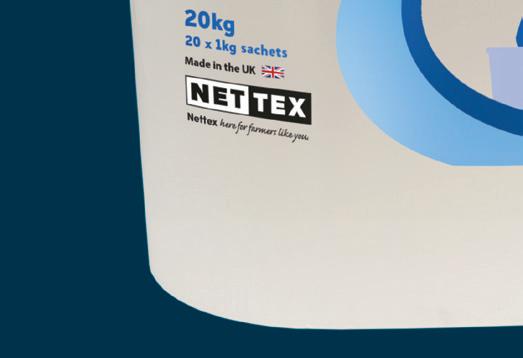





B r i t ishfarmingproducts createdbyexpe r t s Bir t i s h farmingproducts createdb y e x p e r st
A series of farm events organised by Stride, the UK dairy mobility initiative, highlighted the importance of prevention strategies in reducing the consequences of poor mobility. Dairy Farmer reports.
Mobility remains a major issue on dairy farms, but a greater focus on prevention will help reduce mobility issues across all farm systems, according to Ma Dobbs, chair of the Stride technical board.
Speaking at a farm event, he told delegates that this was one of the conclusions from the recent national mobility survey conducted by Stride, a not-for-pro t industry initiative headed up by Ceva, HerdVision, IVC Farm Vets, Neogen and Zinpro.
He said: “As much of 80% of foot health problems are a ributable to previous lameness in the herd, so farms need to implement comprehensive prevention protocols to help avoid mobility issues becoming a chronic problem.”
Gillian Whitehurst, clinical director at Glenthorne Vets and regional head of IVC Farm Vets, said once a cow becomes lame, in ammation will damage the foot tissue, predisposing cows to repeat problems.
She said the key to prevention was early detection and prompt e ective treatment and added there needed to be a shi in a itude towards mobility scoring. She said it must be seen as an e ective way to pick up changes in mobility quickly and not just as a benchmark or to ful l the requirements of the milk processor. Frequency of mobility scoring needs to be increased too.
She said: “Any cows agged up as score two should have feet checked within a maximum of 48 hours. Cows at score three must be checked
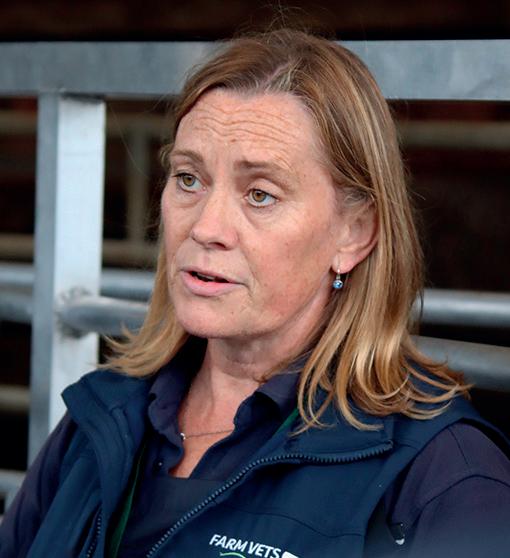
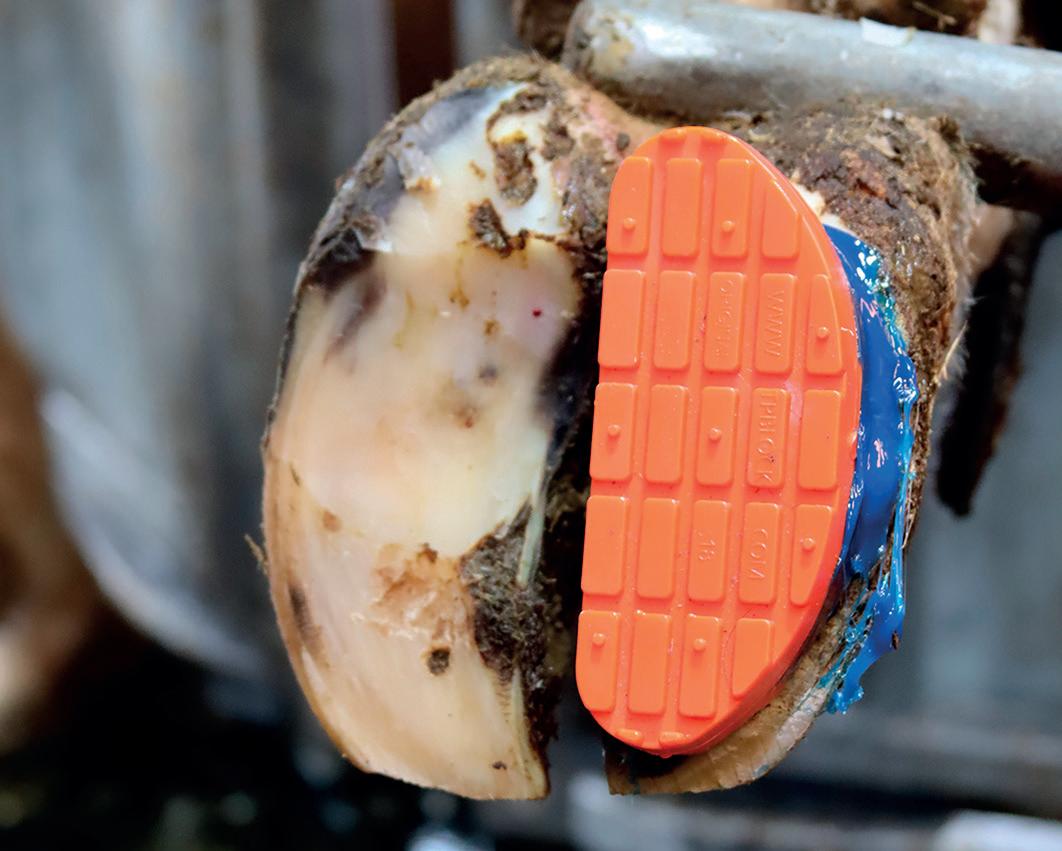
Ms resh said camera technology could also be used to score heifers and dry cows, and Jonathan Huxtable, of Zinpro, said the transition period was crucial in helping reduce the consequences of compromised mobility.

quicker. It is inevitable that if you mobility score more frequently, there will be a peak of score two and three cows to treat initially as you get on top of problems, but this should be a short-term issue.”
Ms Whitehurst advised that a ected feet should be trimmed and a block applied if required.
“Cows should also receive a non-steroidal painkiller to help red-

uce both pain and in ammation. She said blocks should be checked and replaced every four weeks as necessary, explaining that a poorly positioned block was worse than no block.
e biggest reasons given for not mobility scoring cows more o en are the time taken to both score cows and interpret the results and having suitably trained sta . is means many farms rely on a Register of Mobility
Scorers-trained professional and inevitably less frequent scoring.
Georgia resh, of HerdVision, said: “One option to overcome these issues and to ensure problem cows are spo ed sooner and more consistently is to use automation.
“Camera technologies mean milking cows can be mobility scored every day with the data analysed and problem cows reported sooner and automatically to an app accessible by people across the farm team.”
He said lameness is a transition disease and increased lameness is seen in cows which do not transition well. He added compromised mobility in transition cows would result in lower dry ma er intake (DMI) in both pre- and post-calving cows.
He said: “If DMI is reduced, cows will mobilise body fat, including fat from the foot pad, which will predispose cows to foot problems.
“If we manage transition cows be er, we can ensure be er DMIs and prevent loss of the footpad.”
He said transition cows needed plenty of space and advised no more than 80% occupancy in transition cow housing. Cubicles should be larger to accommodate the increased size of heavily pregnant cows.
He said: “If cubicles are too small, cows will nd it harder to get in and out, increasing the stress on the ankles, hooves, tendons and ligaments, resulting in a greater risk of compromised mobility.
“Set a target of zero lameness in dry cows. Carry out a hoof check two weeks before going dry and rectify any problems at this stage. en putting cows in a good environment with reduced stress will give them the time to rest and recover.”
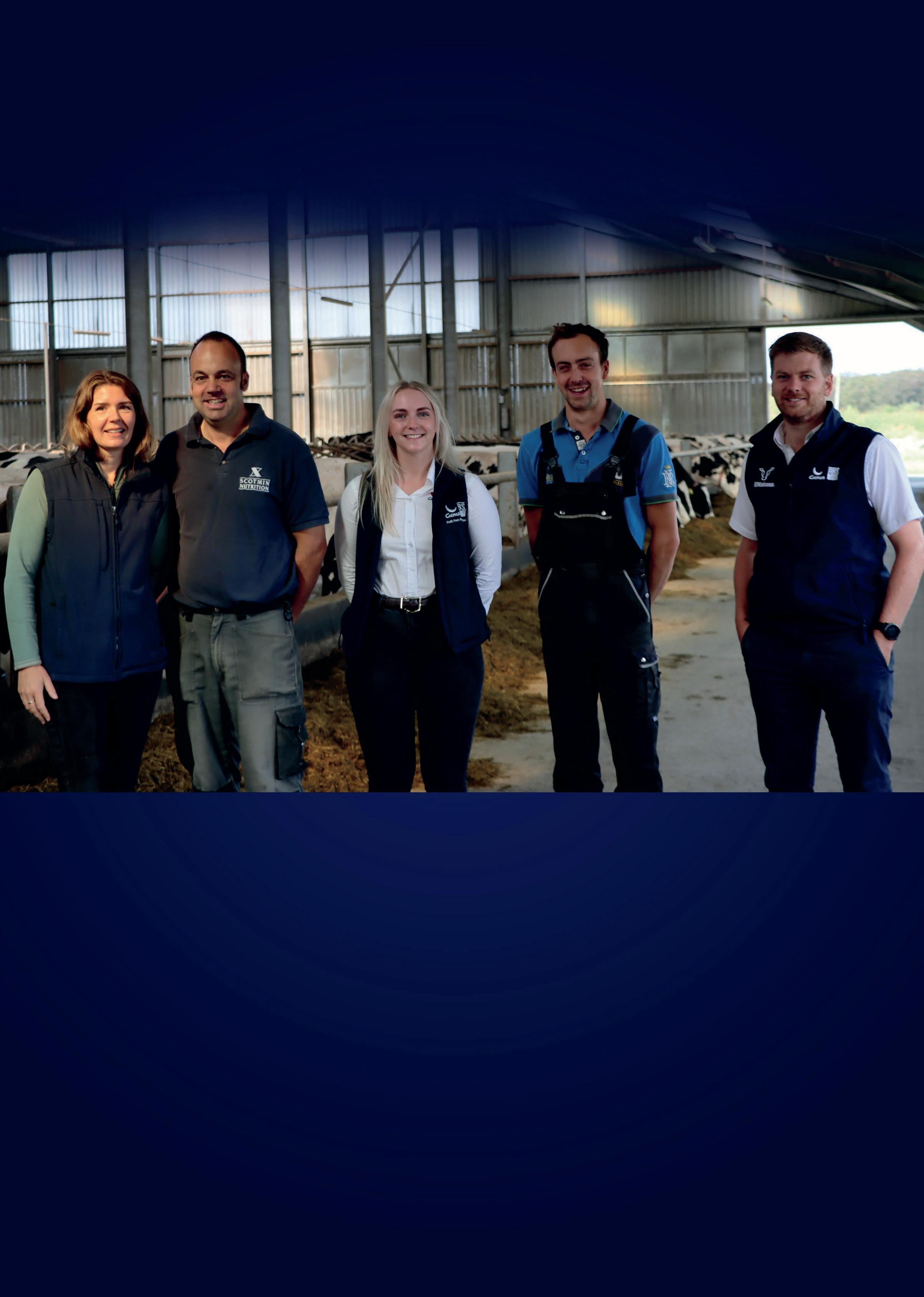
e n a b l e s m o r e i n f o r m e d b r e e d i n g d e c i s i o n s t o c r ea t e f u t
Accelerate your herd’s potential G E N E a d v a n c e ® i s t h e n e x t s t e p f o r b ui l d i n g p r o g r e s s i v e,
h e r d r e p l a c em e n t s , w i t h c u t t i n g -
g e d i g i t a l t
s a n d t o
- t i e r g e n e t i c s . O ur t ea m b e c o m e p a r t o f y o ur t e a m ; p r o v i d i n g
e x p er t i s e , p er s o n a l i s e d b r e e d i n g p l a n s , a n d o n g o i n g g en et i c
r e v i ew s t o p r o d u c e b e t t e r c o w s f a s t er
W e ’ r e d e d i c a t e d t o a c c el e r a t i n g y o u r h e r d ’ s g e n e t i c p r o g r e s s J o i n u s
C a l l u s t o d a y o n o r s c a n t h e Q R c o d e t o
d i s c o v e r h o w w e ’ r e m a k i n g f a r m i n g B e t t e r T o g e t h e r . 0 1 2 7 0 6 1 6 6 8 1

















qr code
There are several positives offering welcome news for the dairy sector following the unprecedented challenges over the past 12 months. Dairy Farmer reports.
According to the latest Kingshay Dairy Costings Focus Report, following a sharp drop in milk prices to an average of 36.49ppl in July 2023, values have steadily risen – but they still do not cover the full cost of production or provide a fair return for family labour for many farmers. e gap between the highest and lowest milk prices has also uctuated, peaking at 13.8ppl in March 2023 before narrowing to 11.6ppl in March 2024.
Kathryn Rowland, Kingshay’s senior farm services manager, says: “It is clear the UK milk market is changing as retailers and consumers demand more. Given the increased focus on climate change, it is essential that the market can deliver premiums to cover the extra e ort and costs on-farm.
“Milk processors like First Milk are already o ering premiums for regenerative farming practices and, going forward, it is likely that the range in pricing within contracts – let alone between them – is going to widen.”
An insight into trends over the past 10 years reveals that while average milk yields have slightly increased and remain in the mid 8,000 litres per cow range, milk solids have hit a new record of 646kg/cow, marking almost an 11% increase over the past 10 years, outpacing the 5.4% rise in milk yield. is is most likely due to producers focusing on feed e ciency and ful lling their milk contract requirements, the report says.
Average herd sizes have increased by two head, year-on-year, and now

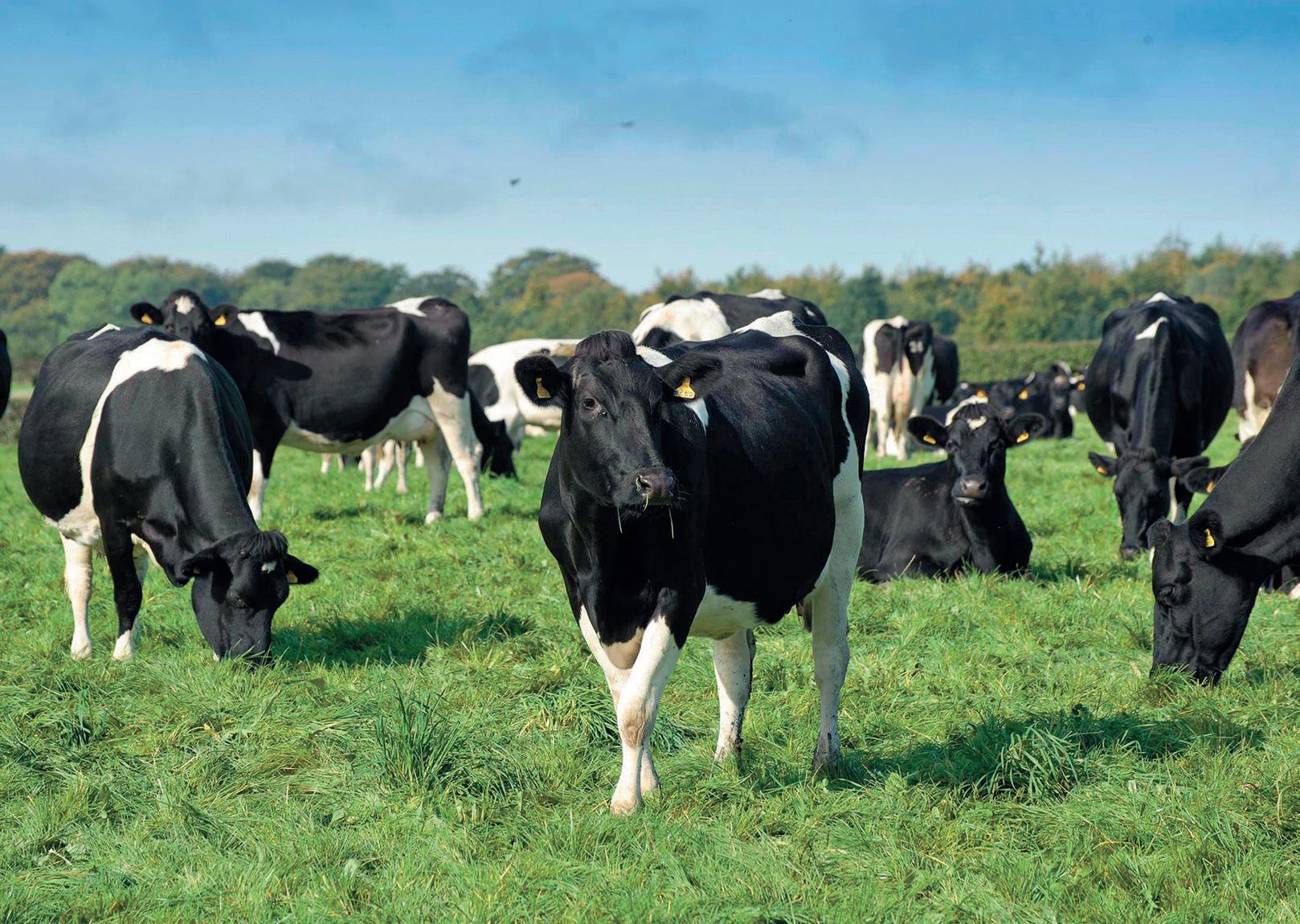
stand at 219 cows compared to 185 in 2014. Stocking rates have also seen a rise, reaching 2.39 cows/hectare compared to 2.25 a decade ago.
e atrocious weather means that, unsurprisingly, milk from forage has decreased by 3% on last year to 2,691 litres/cow. Although, Scotland managed to buck the trend with a 16% year-on-year increase.
On the health front, herd health has generally improved in nearly all areas. Mastitis cases have decreased to an average of 26 cases per 100 cows, indicating be er management, facilities, breeding and recording.
However, lameness has seen an increase which, having declined annually since 2020, jumped by four cases per 100 cows to 37. is was
likely due to poor weather conditions in 2023/24 a ecting grazing access and leading to longer housing periods. Mobility scores remain identical to last year, with 5.9% of the herd scoring 2 or 3, suggesting changes in lameness recording practices.
Fertility trends have returned to normal following the hot summer of 2022/23, which negatively impacted oestrus cycles. e calving interval has narrowed back to match 2021/22 levels at 393 days, with days to rst service at 70 – one day longer than in 2021/22.
e 200-day not-in-calf rate was 12%, which was one percentage point below 2021/22, while the infertility culling rate dropped back to match the previous year’s 6.7%.
e cost of an extended calving
interval has dropped from £5.89/day per cow to £4.88/day, mainly due to lower milk prices and feed costs.
E ciency varies widely across production systems, with all-yearround calving herds with a housing focus producing the greatest margin per cow (£2,495/cow) and autumn/split block calving herds with a grazing focus giving the highest margin per litre (29ppl).
Similar trends in milk prices were seen in organic herds, with the margin over purchased feed per cow dropping by 13.9% to £2,048, compared with £2,380 the previous year. Although organic herds are much larger compared to conventional, herd size has also grown by 19% over the past decade to 243 cows.

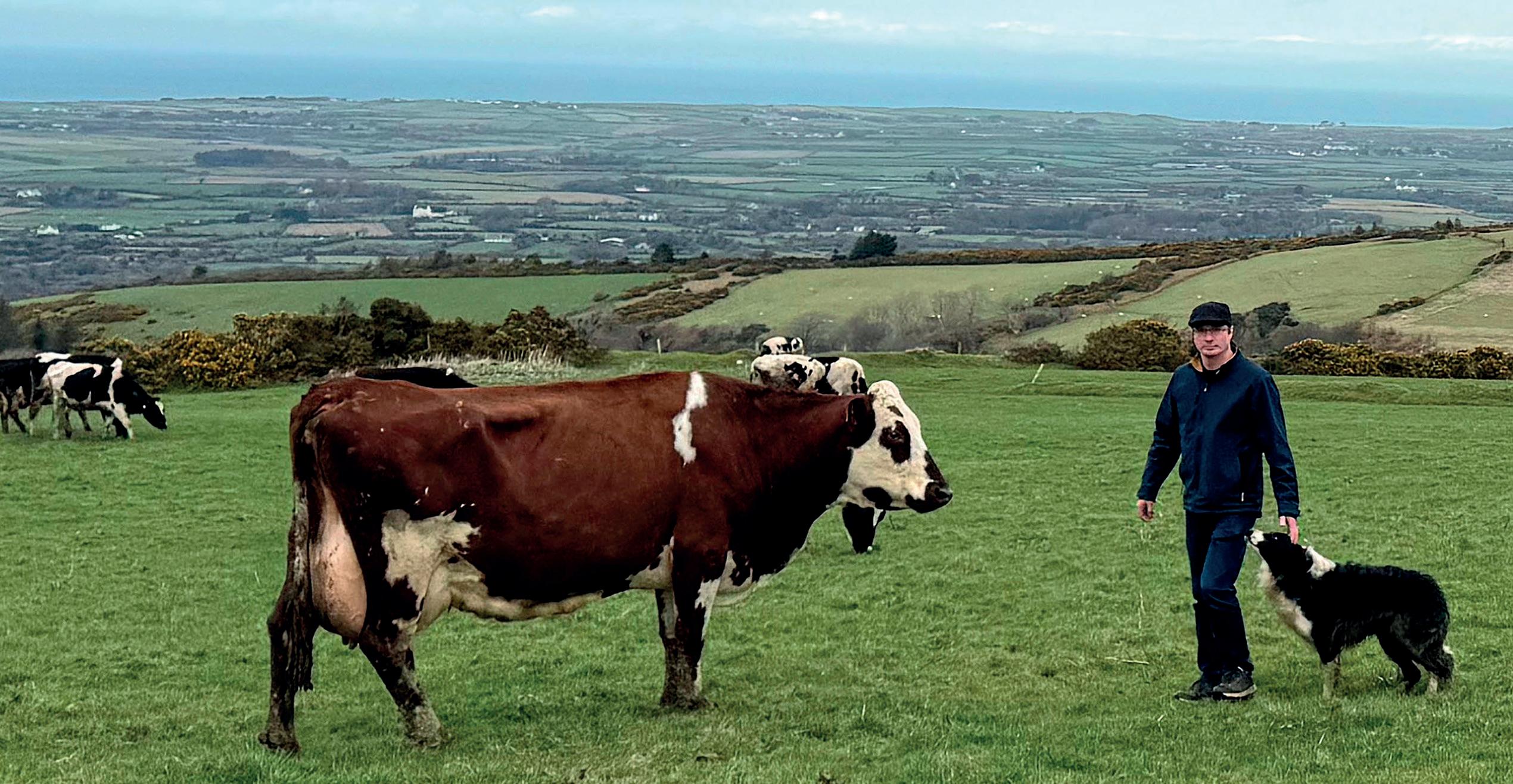
A former accountant has taken a leap into dairy farming, with milk from his 40-cow herd sold direct to the public on the Isle of Man. Chris McCullough reports.
Starting up a dairy farm on the Isle of Man was a goal Carl Huxham set himself over 10 years ago, and it is one he achieved by keeping things simple.
Back in 2006, just a year a er graduating with a business degree, Carl purchased 34 hectares (85 acres) of land to run a suckler herd on alongside his day job as an accountant.
In 2007, with the help of a £20,000 Young Farmers and New Entrants Start-Up Grant, Carl was able to build the rst shed that the parlour is now located in, and this heralded the foundations of what is now Cronk Aalin Farm in Sulby.
Carl says: “I le accountancy in 2012 with the aim of milking cows and retailing the milk direct to doorsteps. I purchased a secondhand milking set-up comprising a Fullwood 16-point parlour with a 1,600 litre bulk tank and water heaters, all for £8,000.
“ e cubicle sheds were completed that year and I installed the parlour over a six-month period. During that installation, I changed the system to an eight-point


swingover, adding ACRs and milk meters. With the infrastructure in place, I purchased 24 heifers and we started milking, initially feeding the milk to calves.”
In 2014, together with his wife Sarah, Carl launched the Aalin Dairy business producing milk and delivering it straight to customers.
He says: “In the beginning, I milked the cows, washed the empty glass bo les, then pasteurised, bo led and delivered the milk.
“Over the last 10 years, the milk rounds have increased to nine. We are now using electric vans to make
the deliveries, covering the top half of the Isle of Man.
“Our farm really has been built from scratch over the past 18 years.”
A house on the farm was nished in 2015 and an indoor silage pit was built in 2022.
In 2020, Carl was able to buy 8ha (21 acres) from a neighbour.
Herd
Cronk Aalin Farm is home to a modest-sized herd of 40 cows, which started o dominated by the Holstein Friesian breed. Carl is now adding the Montbeliarde and Ayr-
shire breeds into the mix to suit land conditions more.
e average yield of the herd is 6,000-7,000 litres per cow per year at an average 4.8% bu erfat and 3.4% protein.
Carl says: “Being on a hill farm ranging from 480 feet to 900 above sea level, we need a cow that has strength and good feet, which is why I now favour the Montbeliarde. I personally like red cows, therefore all of our chosen AI bulls must be red.”
Cows are normally grazed from March to November in one group, and are housed in the winter on cubicles bedded with straw.
When at grass, cows are supplemented with 2kg of a 17% concentrate, which is fed in the parlour. is ration changes in the winter to grass silage mixed with pea and barley wholecrop and rolled oats, with a 20% cake fed at 4kg/cow/day.
Carl says he aims to rear ve replacement heifers per year using AI.
He says: “Currently, we are running a Limousin sweeper bull, but there is li le demand for beef cross calves locally.
“ ey are generally reared to about three or four months old and
rSurplus milk is made into yoghurt
rYoghurt and cream from Aailin Dairy has won Great Taste Awards
then sold to other farmers on mainland UK.”
e Huxhams employ one fulltime employee on the farm and another full-time employee to work in the milk processing room. A team of 11 delivery drivers work on a rota system delivering the milk on Mondays, Wednesdays and Fridays.
Carl says: “I milk the cows and oversee the farm operations, while Sarah looks a er all the paperwork and the customer side of the business. All our milk is sold at 85p per pint, delivered direct to the customer base by our drivers. We use pint glass bo les to sell the milk in, which are washed and reused, [therefore] increasing our sustainability.”
rThere are another 27 dairy farms on the Isle of Man and they all supply the island’s central processor, with one also retailing some milk to customers
Even though Carl has invested in the farm since its humble beginnings, he continues to enhance it, but at the same time keeps things simple.
He says: “We operate a simple system. I guess our biggest investment is having all our own machinery to harvest forage by ourselves. We are now operating a trailed Lely Storm forager plus two 8.5-tonne silage trailers.
“Our future plans here on-farm are to become more e cient and reduce costs. Being on an island, our input costs are all quite high as everything incurs a shipping cost.
“We may be free from bovine TB and BVD on the island, but exporting stock for sale is also expensive. Importing stock is currently banned due to the UK bluetongue outbreak.”
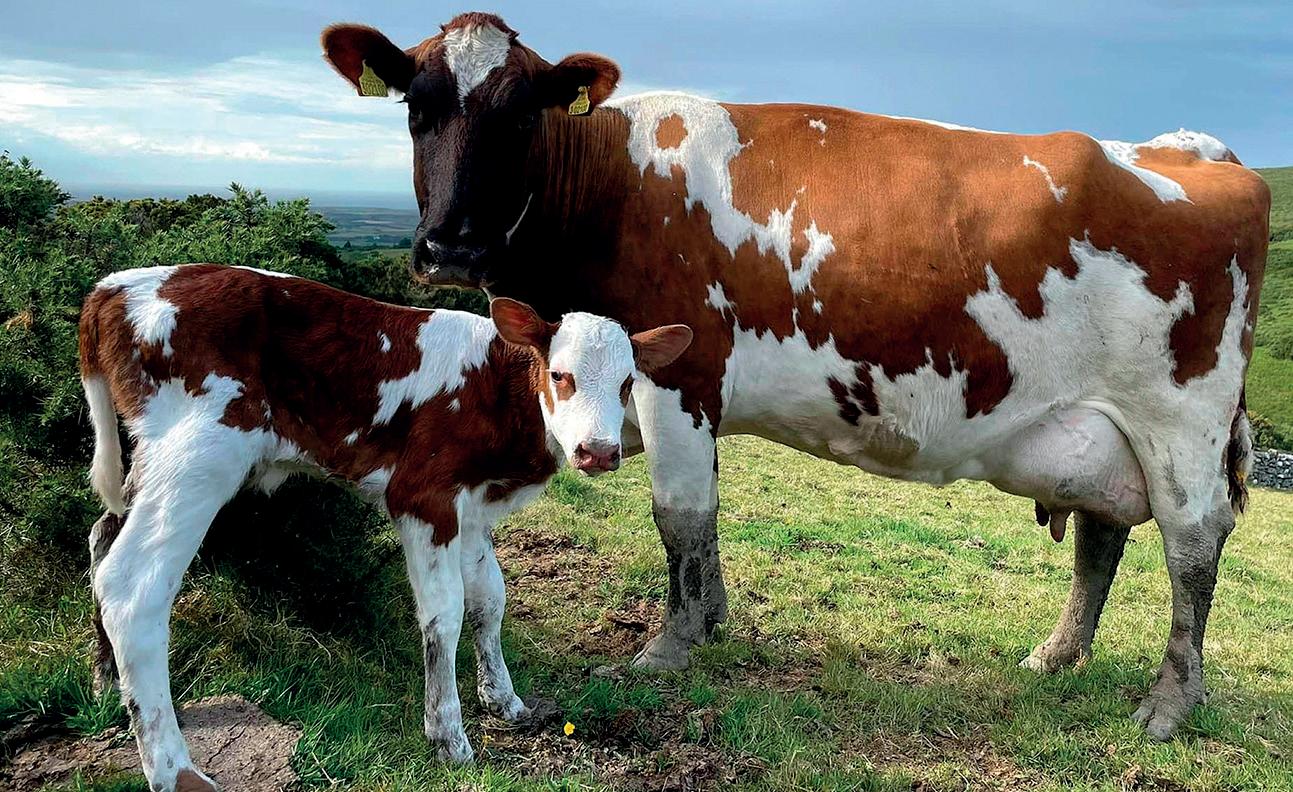

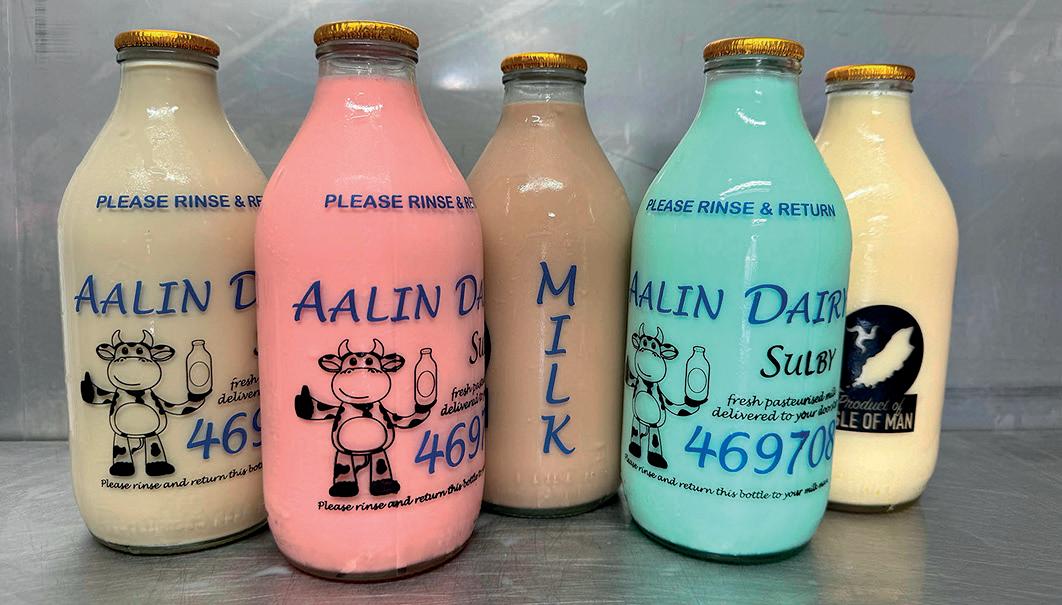
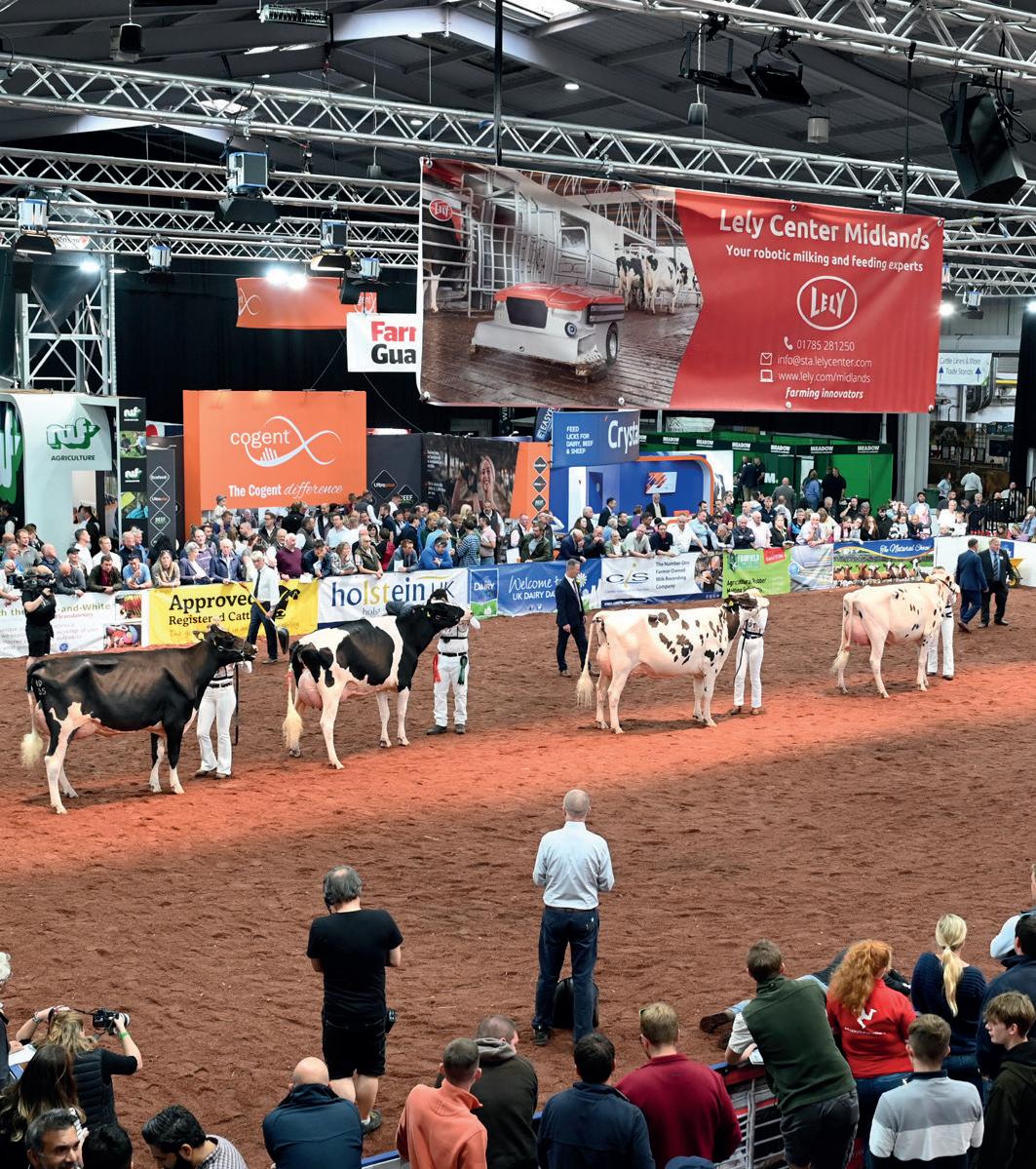
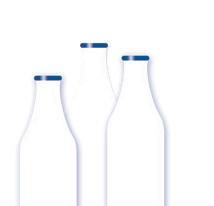

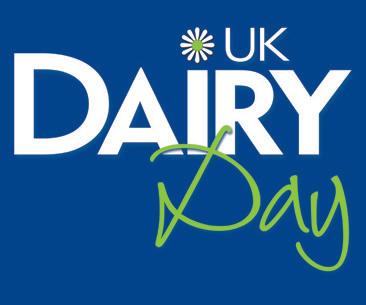






Harnessing the medicinal power of plants to improve livestock feed efficiency and production is the goal of Nutreco’s new Garden of the Future programme. Chris McCullough reports.
Aphytotechnology research centre named the ‘Garden of the Future’ has been opened in Switzerland by the Netherlands-based animal nutrition company Nutreco, which is aiming to improve livestock feeding using plants.
e facility is located in an area known as the ‘Phyto Valley’, which contains a network of phyto-pharmaceutical companies, startups and laboratories.
It is focused on creating phytotechnology solutions, called ‘phyto-complexes’ (which, translated, means ‘plants’ or ‘plant metabolites’). When added to feed, these have physiological impacts that consistently support the performance, health, and welfare of aquatic species, farm animals and companion animals.
Nutreco says many of its phyto-complexes come from plants that have not been cultivated before, which requires the team at the
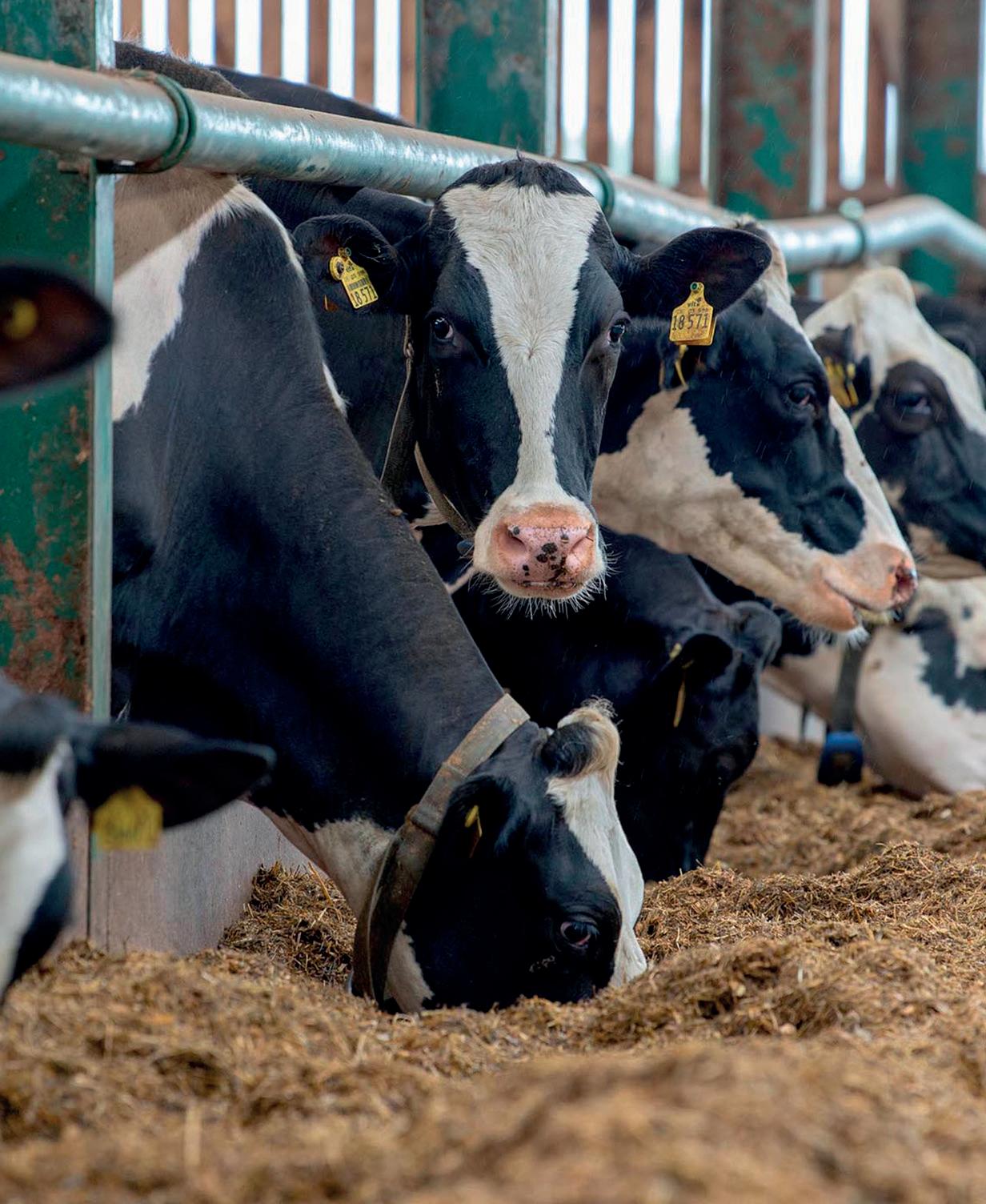
Garden of the Future to have a high level of plant production expertise to create vertically integrated plant supply chains for these new plants.
e Garden of the Future facility includes access to a 500sq.m experimental greenhouse for plant breeding and propagation, a 5,000sq.m vegetative mass propagation greenhouse, about 30 hectares of cultivation space and a Future Garden to display the facility’s novel plants.
Nutreco’s chief executive, David Blakemore, says the work being done at the facility is ‘groundbreaking’.
He says: “Nutreco’s Garden of the Future will help us address many of the speci c challenges our customers face and support them in improving performance, health and welfare in unprecedented new ways.
“Nutreco’s phyto-complexes are unmatched in quality and consistency, and most use plants that have never before been cultivated for animal nutrition.
“We believe these products will

bene t producers around the world and play a very important role in helping us achieve our purpose of feeding the future.”
David Bravo, Nutreco chief science o cer, says: “ e team at Nutreco’s Garden of the Future has already taken great strides in lling our innovation portfolio with new solutions directly addressing our customers’ challenges, with four phyto-complex products already launched and 17 in the pipeline.
“So far, we have collected about 450 unique plant material samples and are performing eld trials and production in seven countries.
“Farmers can be assured that all our new products from the garden plants undergo vigorous testing, at least ve or ten times in di erent conditions around the world, before they would be put on the market.”




animal feed company, Trouw Nutrition.
Mr Blakemore says: “Our team will already have a clear working knowledge of the challenges livestock farmers face, as we are on farms every day.
“When we have developed a new feed additive, before the farmer sees it, our teams have said: ‘Here are the challenges we have identi ed, and here is how we can work today to develop a potential solution’.





Nutreco says it has already established a new product from the garden that can help with the metabolic exibility of dairy cows, which has undergone several trials.
e company also says it is testing products that can reduce methane production in ca le, which should be available in about 18 months’ time. ese products will be delivered commercially through its dedicated
“When that solution is identi ed, it goes back to our team who will carry out the trial work to ensure that product will deliver at the price point that we have identi ed and at the expected increase in productivity or performance.
“ en it becomes a project and goes through our pipeline. Plants are identi ed, harvested, and formulated into a feed additive. en it goes back to our team in the full con dence that we have done the trials and it is ready to go in front of the customer.”
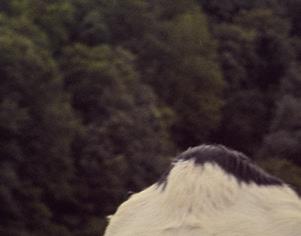
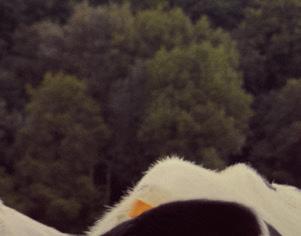



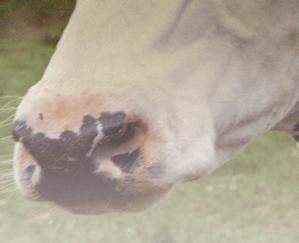
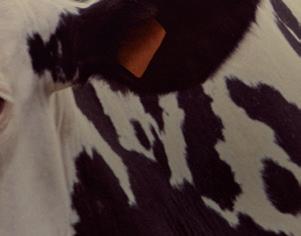
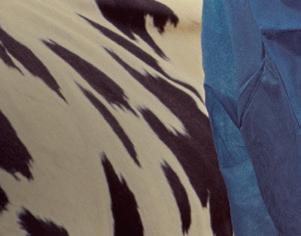

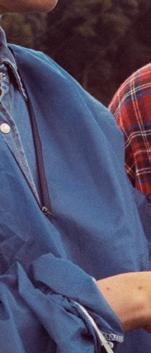


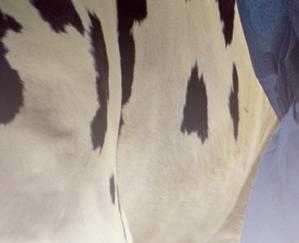
Ask your vet about your mastitis prevention plan












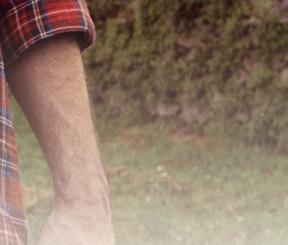
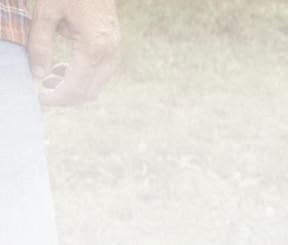


Andrew Biggs BVSc, FRCVS and Vale Veterinary Laboratory Data Primary pathogen identified in all high SCC and clinical mastitis milk samples from 2019-2021. STARTVAC® Inactivated vaccine, Bovine mastitis, in injectable emulsion. COMPOSITION PER DOSE (2 ML): Inactivated Escherichia coli (J5) 50 RED60*; Inactivated Staphylococcus aureus (CP8) SP 140strain expressing SAAC** 50 RED80***. Adjuvant. * RED60: Rabbit effective dose in 60% of the animals (serology). **SAAC: Slime Associated Antigenic Complex. ***RED80: Rabbit effective dose in 80% of the animals (serology). INDICATIONS: Cows and Heifers: To prevent Mastitis. For herd immunisation of healthy cows and heifers, in dairy cattle herds with recurring mastitis problems, to reduce the incidence of sub-clinical mastitis and the incidence and the severity of the clinical signs of clinical mastitis caused by Staphylococcus aureus, coliforms and coagulasenegative staphylococci.The full immunisation scheme induces immunity from aproximately day 13 after the first injection until approximately day 78 after the third injection (equivalent to 130 days postparturition). Further information available from the SPC or on www.hipra.com. For more information about side-effects, precautions, warnings and contraindications please refer to the SPC, the packaging or product leaflet. LEGAL CATEGORY: POM-V- Veterinary medicinal product under veterinary prescription. MARKETING AUTHORISATION HOLDER: Laboratorios Hipra, S.A. la Selva, 135, 17170-AMER (Girona) SPAIN. MARKETING AUTHORISATION NUMBERS: UK(GB): Vm17533/5010, UK(NI): EU/2/08/092/003-6. Use Medicines Responsibly.
UBAC®, emulsion for injection for cattle. COMPOSITION PER DOSE: Lipoteichoic acid (LTA) from Biofilm Adhesion Component (BAC) of Streptococcus uberis, strain 5616 ≥ 1 RPU. Montanide ISA 907.1 mg. Monophosphoryl Lipid A (MPLA). INDICATIONS: For active immunisation of healthy cows and heifers to reduce the incidence of clinical intramammary infections caused by Streptococcus uberis, to reduce the somatic cell count in Streptococcus uberis positive quarter milk samples and to reduce milk production losses caused by Streptococcus uberis intramammary infections. Further information available from the SPC or on www.hipra.com. For more information about side-effects, precautions, warnings and contra-indications please refer to the SPC, the packaging or product leaflet. LEGAL CATEGORY: POMV- Veterinary medicinal product under veterinary prescription. MARKETING AUTHORISATION HOLDER: LABORATORIOS HIPRA S.A. Avda. la Selva 135. 17170 Amer (Girona) Spain. MARKETING AUTHORISATION NUMBERS: UK(GB): Vm17533/5011, UK(NI): EU/2/18/227/001-004. Use Medicines Responsibly.
These products are not licensed for concurrent use. A decision to use either of these vaccines before or after any other veterinary medicinal product therefore needs to be made on a case-by-case basis.
Maximising efficiency from their high performing herd is the aim for the Cargill family who are modernising their system, with the latest edition being four new Lely milking robots. Ellie Layton finds out more.
The installation of an automatic feeding system in 2019 was the start of the robotic journey for the Cargill family, who could see that automation would enable them to pursue their aim of getting the most from their herd at the same time as ensuring they had a positive work-life balance.
David Cargill, who farms in partnership with his father Stephen at Hollybank Farm in Ballyclare, runs a fully housed
180-cow pedigree Holstein herd under the Hollybank pre x. e farm is 182 hectares (450 acres), with 101ha (250 acres) owned and the remainder rented.
Based 213 metres (700 feet) above sea level, growing crops can prove challenging but they are as self-su cient as possible, with cropping including 16ha (40 acres) of rye, 12ha (30 acres) of winter wheat which is crimped and 14ha (35 acres) of maize grown under plastic. e remainder is down to grass,
which has proved very successful with plans to sell this year’s grass standing a er last year’s bumper ve cuts.
e Cargills are commi ed to breeding cows with high genetic merit and the ability to produce large volumes of high-quality milk in a sustainable manner.
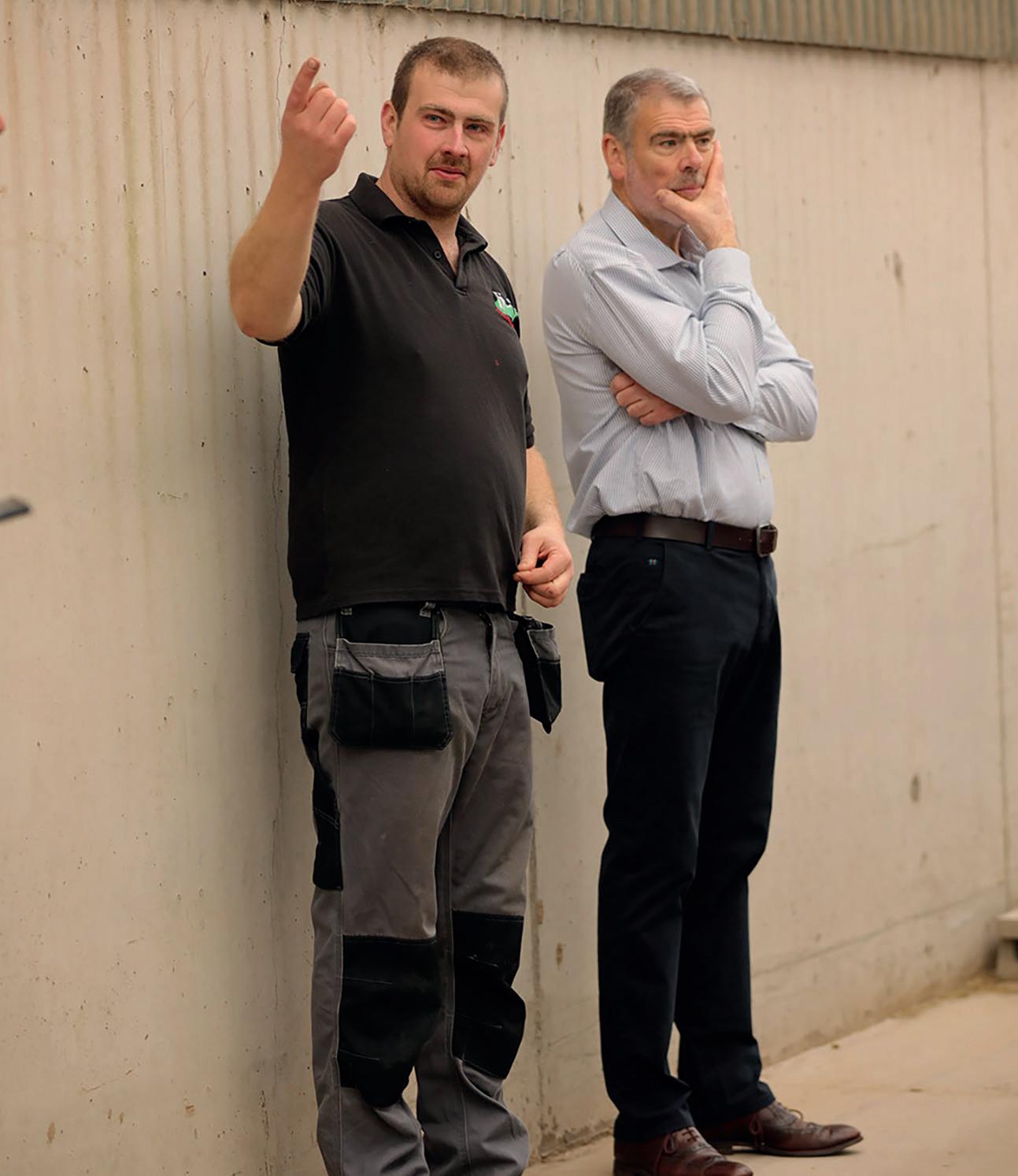

eir farming journey started on the family’s original holding, Fernbank, a 32ha (78-acre) mixed farm, which Stephen purchased from his wife’s father. en in 2013 they took the opportunity to purchase the neighbouring farm, Hollybank, and start a dairy farm from scratch.
David is on the family farm full-time, while Stephen works on the farm part-time alongside the running of a timber business.
Stephen says his experience of dairy started in college at Greenmount and now David, who is
rMilking 180 Holsteins
rYielding 39 litres a cow daily at 4.2% butterfat and 3.2% protein
rCows are genomic tested
rSexed semen breeding followed by Aberdeen-Angus
rFour Lely A5 Astronauts recently installed
rThe farm has a 100kW solar panel system
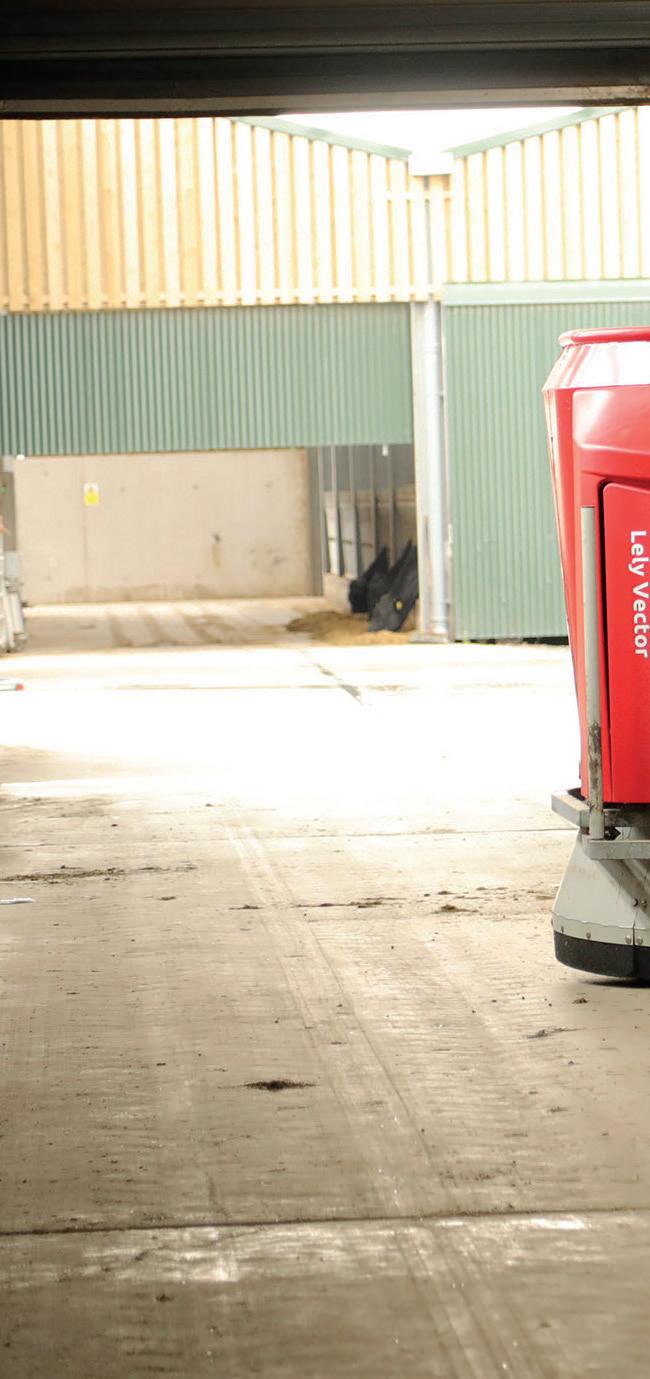

an engineer by trade, has been given the chance to return home and start the family’s dairy system which has followed a careful planning phase.
David adds that following the purchase of Hollybank, they removed all the old buildings to allow them to maximise the potential for the new unit. is includes a multi-functional shed which covers three silage pits, a youngstock shed, cubicle shed which houses the milking robots and a dry cow shed which is also used to nish their dairy beef and neighbours their custom Lely Vector kitchen. He says: “Our venture was planned around our desired farming system, but with labour and engineering high on the priority list to achieve the best possible results. We did not want to rely on labour availability and work-life balance is a big consideration, so this has all
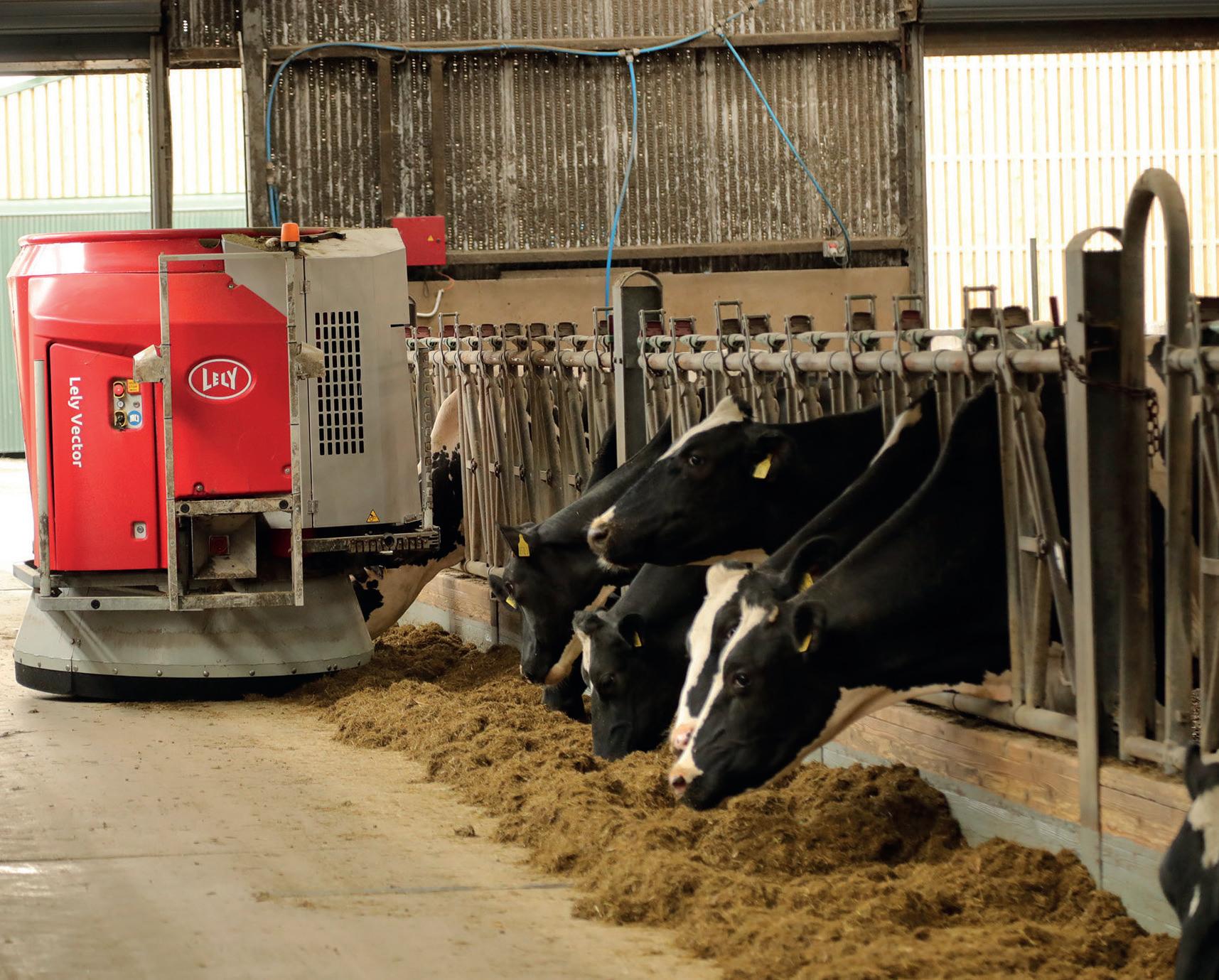
been factored to produce what we have today.”
When establishing the herd, they decided to purchase and rear youngstock to ensure the best start was given to produce a more productive cow, which David believes was the best choice they could have made despite being a longer process.
Despite early exploration with robot milking when they estab-
lished the new dairy in 2013, a decision was made to install an 18-point swing-over parlour in 2016 following difficulties with technical support at the time.
David says: “Conventional milking worked successfully, however following the sudden loss of our herdsman last spring, it made us re-evaluate our
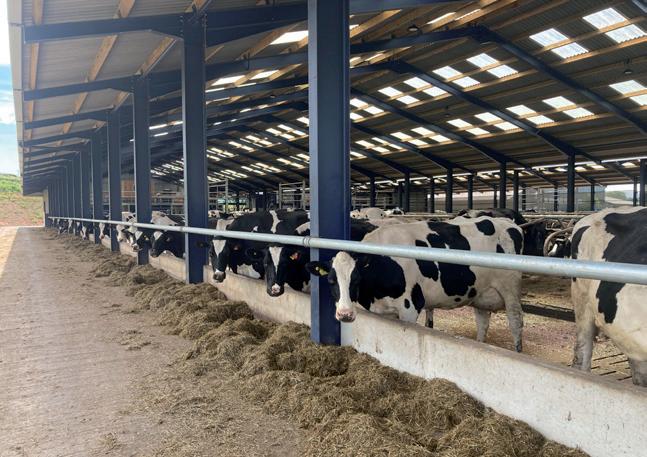
labour situation. You must have a quality of life in any job, and agriculture is one of the trickiest. Farming is repetitive, but it must be enjoyable, otherwise you cannot get good retention of staff.”
And with long milking times for their three-times-a-day system, the decision was made to return to robotic milking, this time with the recent installa-
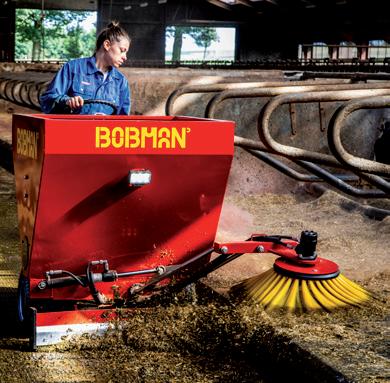
Our venture was planned around our desired farming system
DAVID CARGILL
tion of four Lely robots in July, which included the company’s 50,000th unit.
David says he was encouraged to move back into robots, after eight years of milking through a conventional parlour, having been impressed at the level of support which has been provided since he invested in a Lely Vector feeding system two years ago to feed both the dairy and dairy beef cattle.
Stephen adds: “We want to be milking cows for generations to come, and that is why we have made the investment –everything we do, we do for our long-term future – just like we galvanise steel on the yard, we want to galvanise our business.
“A major reason for installing robots was to increase the potential of our high-performing cows, while reducing labour costs. We know that our cows

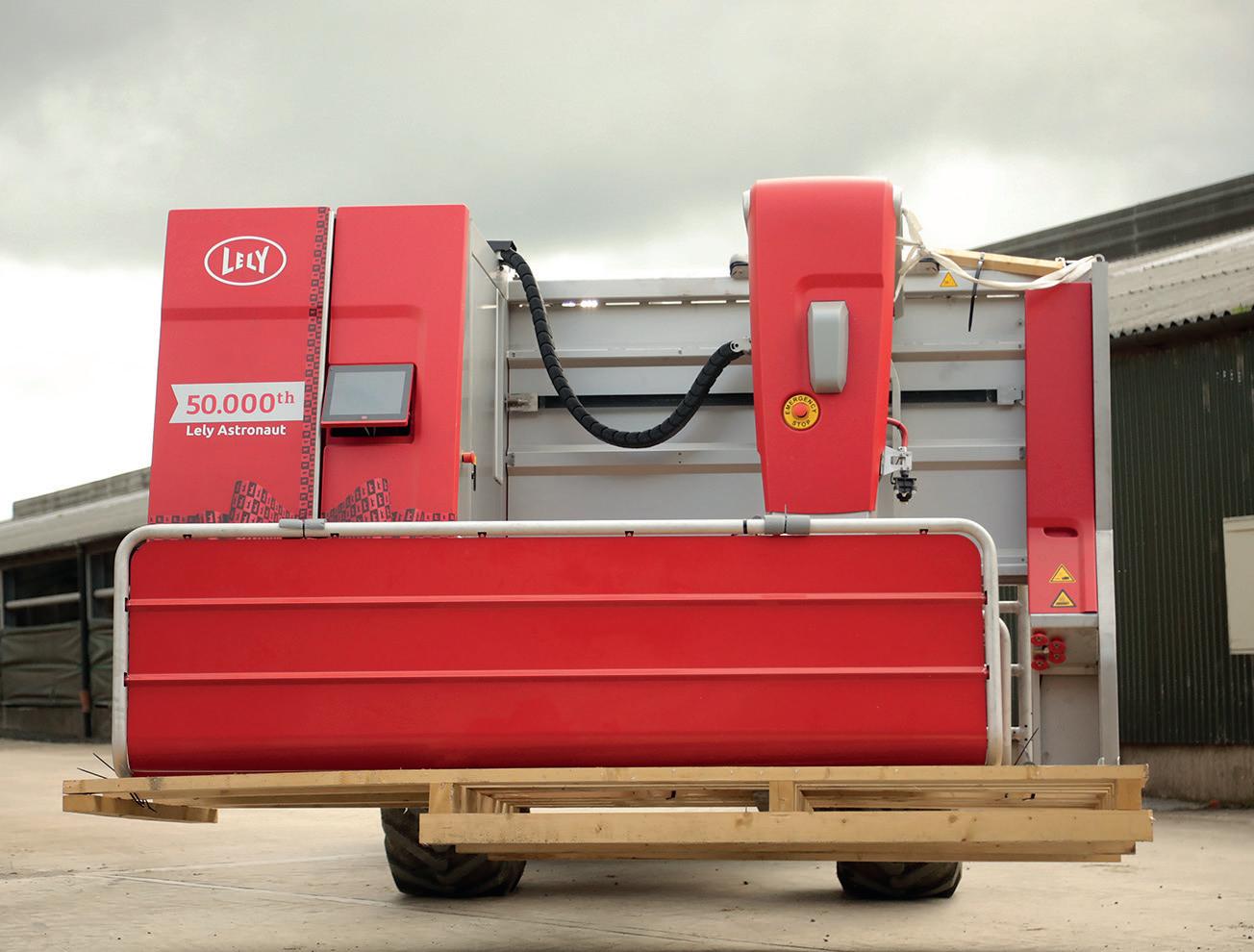
are capable of high yields, so by introducing robots, we will be able to do both.”
e cows are averaging 39 litres per day at 4.2% bu erfat and 3.2% protein, with a somatic cell count of 130,000.
Reintroducing automation is something that David believes will aid their high a ention to detail protocols to promote cow health, helping them to a end to what is not visible to the human eye.
And this has been proven to them, by the improvements which have been seen following the introduction of their Lely Vector.
Feeding accuracy, measured by the feed requested versus
what is loaded, is hi ing 97.8% at Hollybank and feed waste has been reduced, too.
Cow health
is has improved fresh cow health, with ketosis incidence going from 20% to 5% and a considerable reduction in milk fever, with no cases seen over the past 12 months.
Stephen says: “Prior to installing the Vector, I could tell the di erence between the rations made by three di erent team members.
“ is consistency has made a huge di erence to cow health, while feeding time has also been

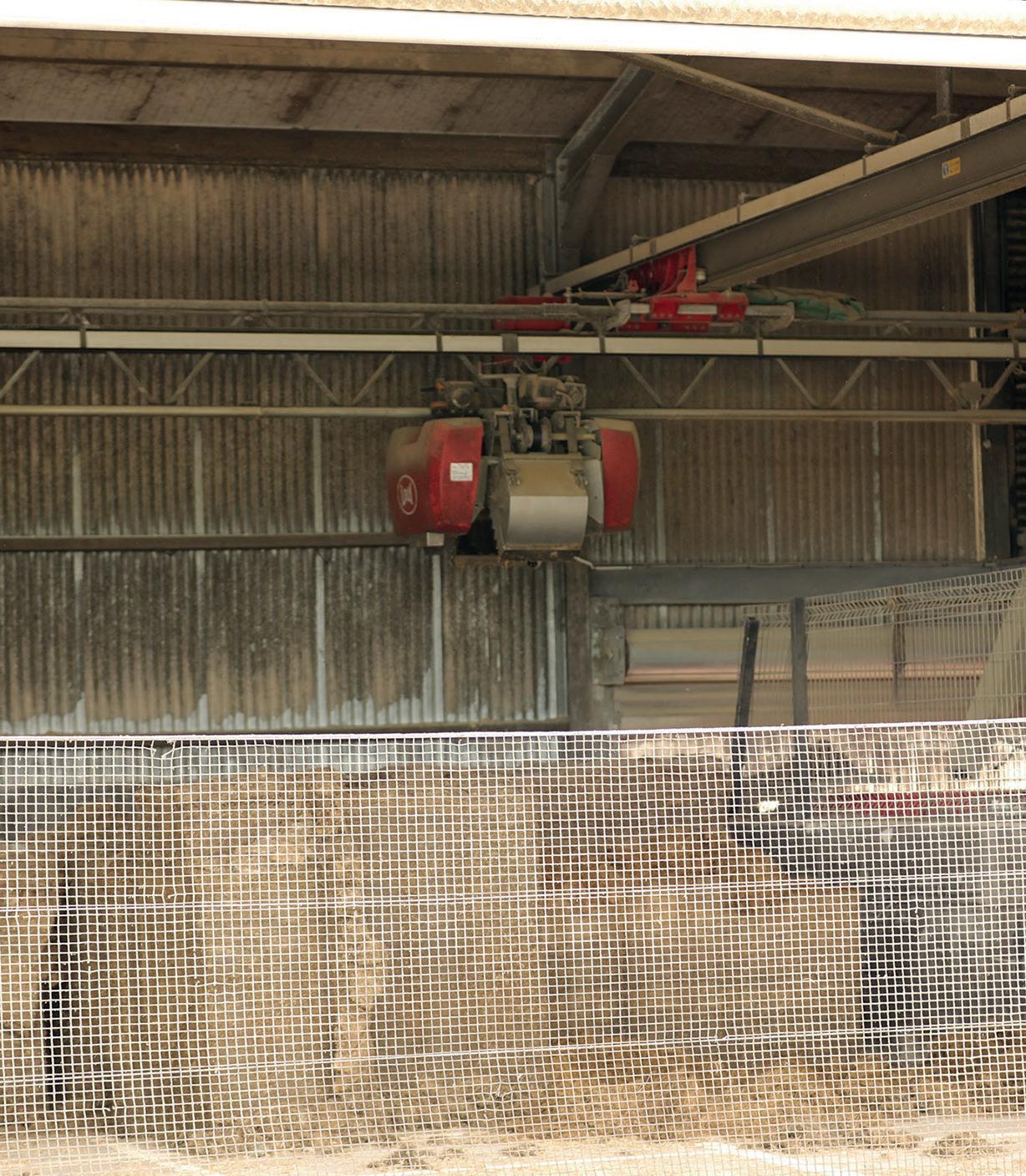
Feeding accuracy, measured by the feed requested versus what is loaded, is hitting 97.8% following the introduction of the Lely Vector.

reduced from four hours daily to just four-and-a-half hours per week, despite feeding more diets which has enabled us to save more than £25,000 in labour.”
But David says the bene ts go beyond economic savings, with milk yields li ing almost immediately by two litres a cow and milk from forage also increasing from 3,700 litres to 4,100 litres annually.
Heifer growth rates have improved signi cantly which has enabled the Cargills to reduce the age at bulling to 12-13 months, lowering the age at rst calving by two months to 22 months.
As well as providing the best
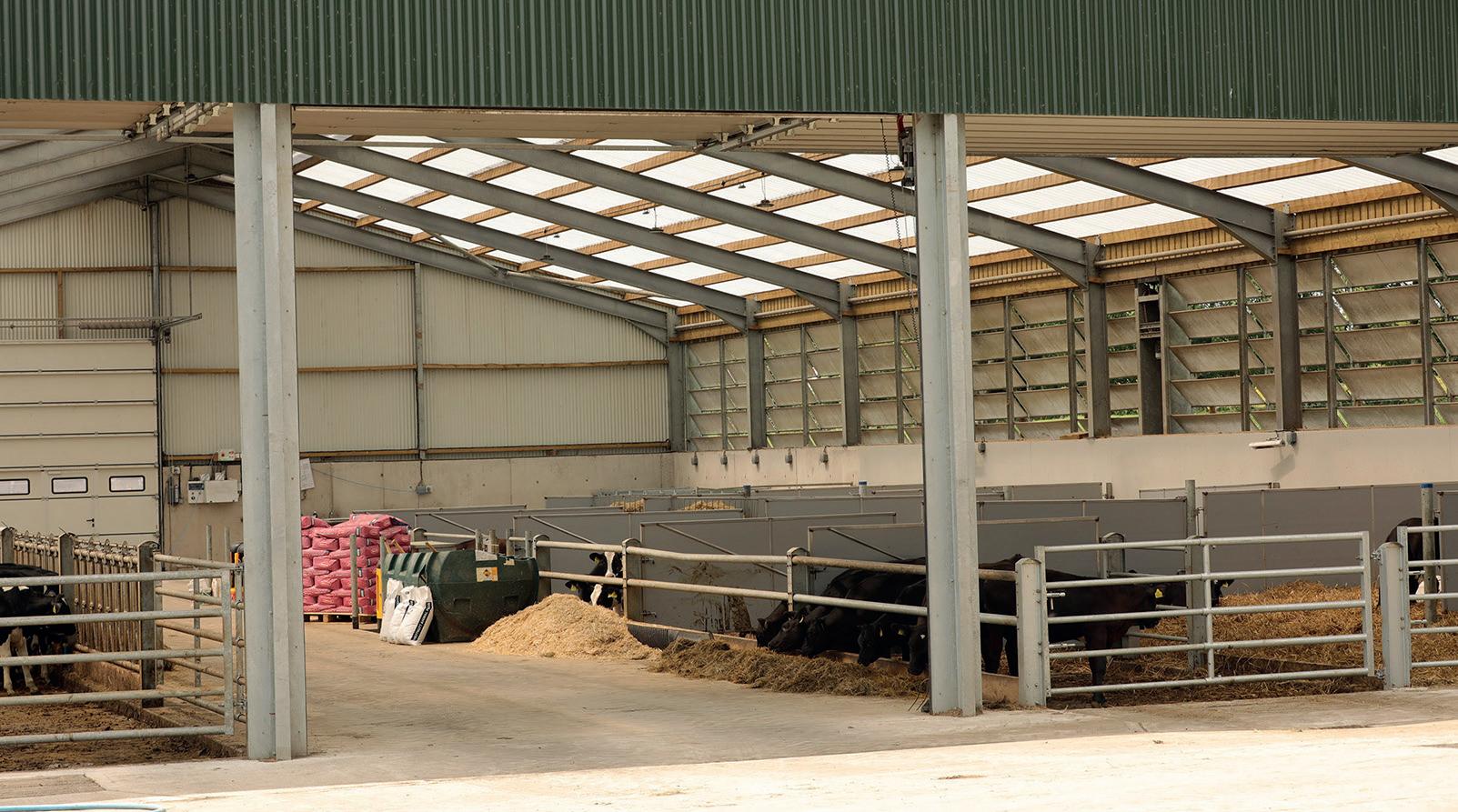
for their cows once in production, calf health is an important part of the system for the Cargills. eir specially- built youngstock housing gives their heifers the best possible start. Reared on the same yard, their building has a polycarbonate roof, to allow natural light in while the sla ed shed sides are opened most of the time to promote ventilation. ey have recently started trialling a microbial smoke bomb, which helps them check ventilation while sterilising surfaces and bene ting calf health.
e calves are penned individually for the rst two weeks, fed eight litres of milk a day, with 1kg of milk powder and are transitioned onto automatic calf feeders alongside straw. At 10 weeks they are transitioned onto an 18% protein nut, when chopped silage is added to straw.
Calves also have access to old ma ed cubicles from weaning to train them for later life.
e calves are on a vaccination programme, receiving a vaccine for IBR, BVD, leptospirosis, salmonella and RSV.
David says: “Our calves are happy, healthy and full of energy, which has resulted in recently installing lockable barriers to safely handle them.”
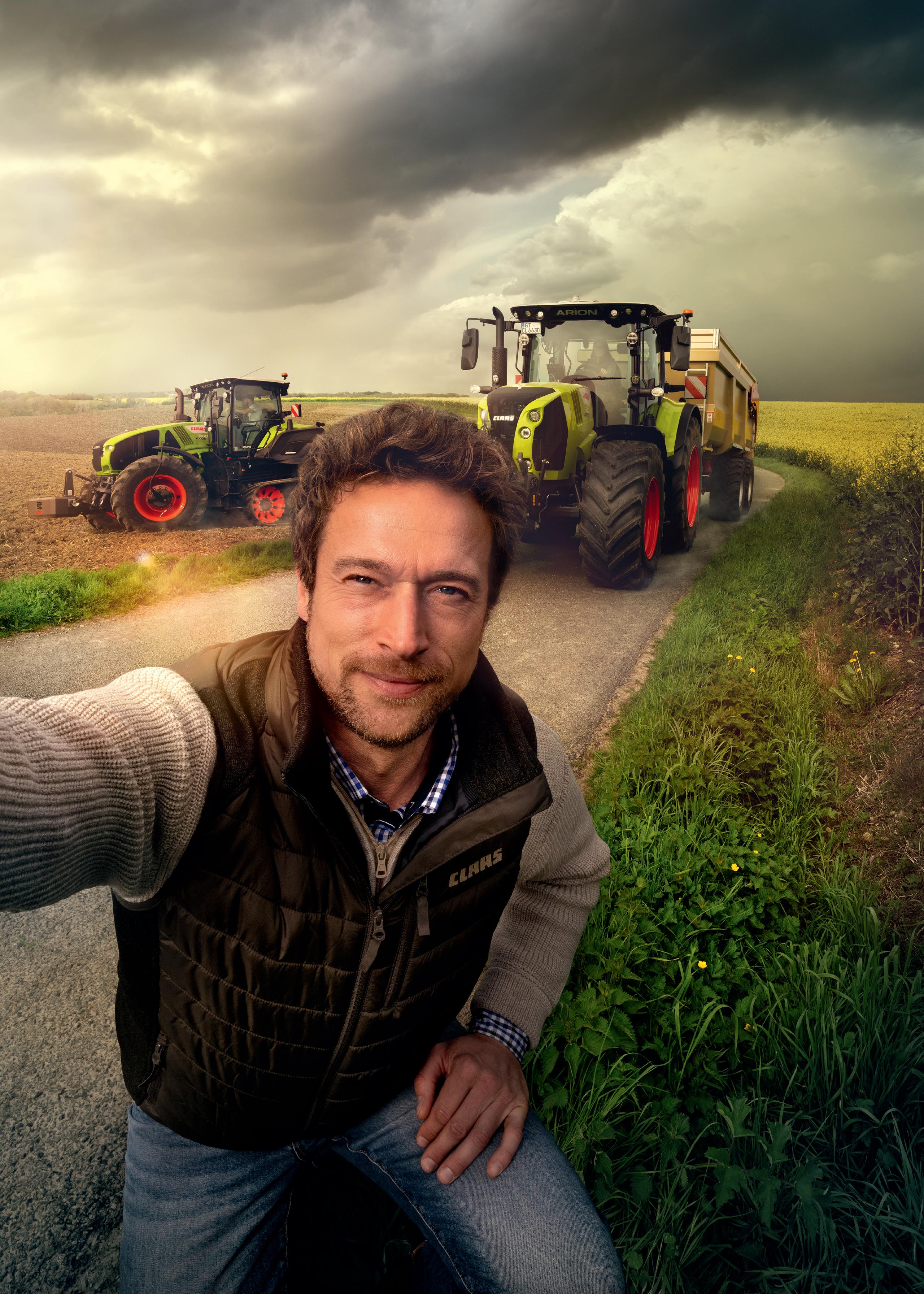
This year’s prolonged winter has turned plans for future forage supplies inside out, but for those with cereal or maize crops in the ground, could alkalage be an option? Dairy Farmer reports.


Cereals and maize crops are weeks behind their usual growth stages in some parts of the country, and consequently there is going to be a higher demand for purchased starch on many dairy units, says Dugdale Nutrition veterinary technical manager Dr Debby Brown.
“Fermented wholecrop or maize silages which analyse around the pH3.7 mark are acidic and can increase the risk of sub-acute ruminal acidosis [SA ], which can lead to rumen disorders that will exacerbate the herd’s health challenges and in turn have knock on e ects to overall performance, including yield and fertility,” she says.
“ e key is to supply the correct nutrients to balance e ective rumen degradable protein and fermentable
metabolisable energy to maintain a good rumen microbial population for optimum feed conversion.
“Introducing alkasystems technology o ers producers with the opportunity to treat any fully ripe cereal crop to produce alkalage and achieve a threefold bene t.”
A er the fully mature cereal crop is treated with the Home n’ Dry pellets during clamping and then sheeted, ammonia is released by enzyme action. A further reaction occurs leaving behind alkaline ammonium salts, in the form of mainly ammonium bicarbonate which buffers the wholecrop to at least pH8.5 and provides a nitrogen source that subsequently increases the crop’s protein content to an average 14%.
e ammonia also reacts with lignin in the wholecrop plant cell walls and enhances its digestibility.
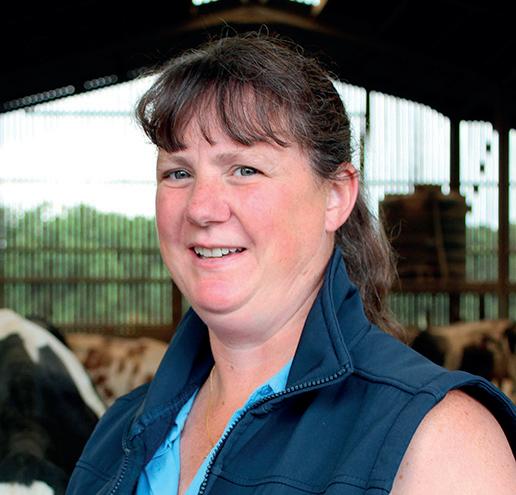
Furthermore, the high starch in the clamped mature wholecrop helps drive the rumen micro ora’s performance, which in turn, when fed in a TMR, improves the digestion of silages. It also balances the nitrogen in the grass silage crops and supports herd fertility.
Dr Brown says: “Since alkalage is made by harvesting a fully mature cereal crop, its dry ma er is
maximised, consequently extra forage per acre is achieved compared to traditional fermented wholecrop.
“Alkalage can also be successfully fed alongside maize silage, reducing the possible challenges from a high starch diet, providing some of the extra protein and a more rumen digestible starch required to drive the rumen micro ora and ensure the best use of maize silage is achieved.
“Maize silage and alkalage are usually stable crops and of a reasonably consistent nutrient value which helps diet balance with changing grass-based forages throughout the year. e alkalage pH helps balance the acidic pH of grass silages and some maize silages, ensuring the bre digesting bacteria in the rumen have the environment required to optimise their performance.”
JIntroducing alkalage to a partial mixed ration diet has resulted in significant health improvements for David Shuttleworth’s 500cow flying Holstein herd, averaging 10,000 litres at the 214-hectare (530-acre) unit.
Mr Shuttleworth says: “Cow health has massively benefitted after replacing fermented wholecrop with alkalage in the silage-based diet. Before we used to have up to half a dozen cows each vet visit to be checked because they were not getting going or firing off right. Now the vet visits incur very few to check.
“We are using fewer fertility drugs and fewer antibiotics. We target cows for fertility support dependent on their health and yield utilising PRIDs where necessary.”
He says cow losses have been reduced to just one cow, if that, every three months and the herd has had no right displaced abomasums, whereas previously he used to see several in a year.
He says: “The economics also add up in terms of the alkalage providing 4% extra crude protein, 7% higher starch and 40% more dry matter, which in turn has enabled us to reduce the quantity of purchased protein and starch we would previously have fed.”
Feeding fermented wholecrop had provided a solution to producing milk from homegrown forage until last year when the weather and forage growth challenges eventually led Mr Shuttleworth to change direction harvesting the unit’s 47ha (115 acres) of wheat four weeks later when ripe in September and treating it with alkasytems technology.
“We are aware that buying

in all our replacements through the ring and with no rearing history, means there are more health challenges, and always potential for issues around calving and in early lactation. Many are gut related, consequently rumen health and development are of key concern in these cows,” he says. “We have found that alkasystems technology can provide a substrate which reduces the risk of any gut health issues.”
Dr Brown says: “Alkalage provides an increased nitrogen source to feed the rumen microbes so they can better utilise the energy provided in the diet as well as alkalage resulting in an improved rumen environment, and a more productive microbial population. In turn, this leads to more microbial protein being produced along with more milk.
“The neutralised rumen enables the rumen papillae to be maintained and grow instead of being damaged in a sub-acute ruminal acidosis scenario, consequently the more volatile fatty acids produced by the microbes are absorbed and converted into energy for the cow via the liver. The healthier rumen results in better feed intake, especially at the critical transition stage, and this, minimises the risk of the abomasum becoming inflamed, full of gas, and then displacing in the abdomen.”
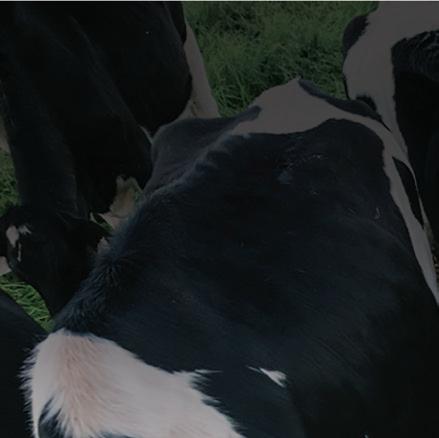
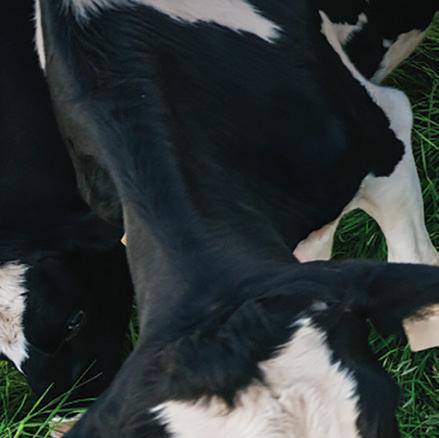
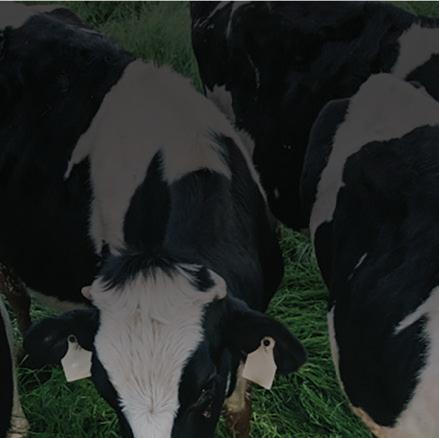

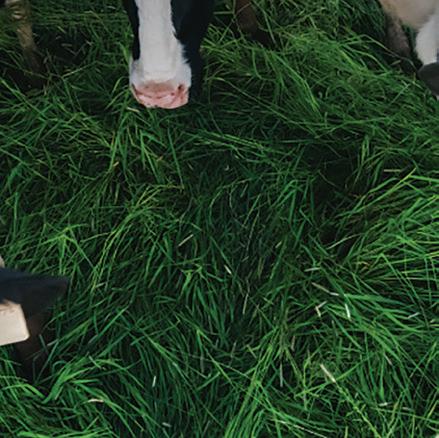
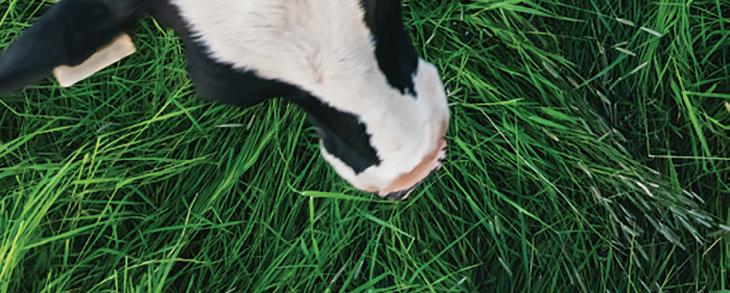

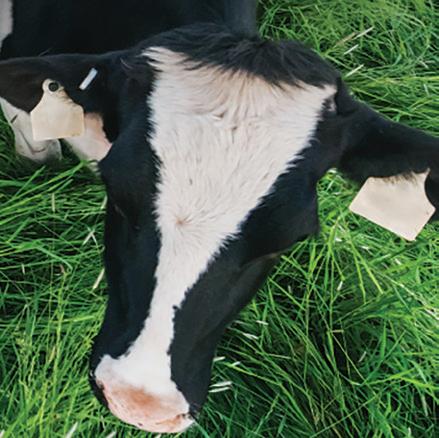

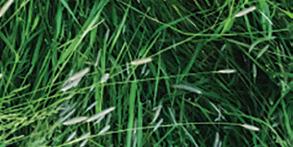
HerdVision customers typically save £116* per cow, per year using BCS data to improve fertility management & feeding.
TO SEE YOUR FARM’S POTENTIAL COST SAVING, VISIT OUR FREE COWCULATOR BY SCANNING BELOW
















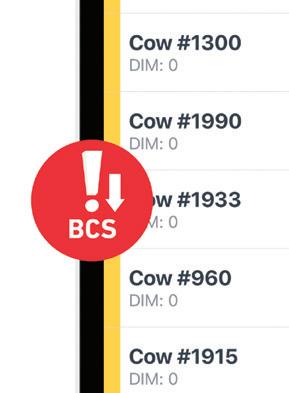



For one Derbyshire calf rearer, attention to detail with colostrum management has led to benefits in weight gain and calf health. Dairy Farmer reports.
Having worked at Old House Farm, near Buxton, for seven years, Zach Sczesniok moved across to the calf rearing operation 18 months ago, and he now heads up calf rearing for the 340-head all-yearround calving herd.
e farm operates a zero-grazing system with cows fed a total mixed ration (TMR) and milked three times a day.
e close-up cows are housed in a loose straw pen for three weeks prior to calving, and fed on a transition TMR. Mr Sczesniok removes the calves around half-an-hour a er birth, while any suspected Johne’s calving cows are housed separately, with the calves snatched at birth.
Calves generally have four litres of fresh colostrum before moving onto milk powder.
Mr Sczesniok says: “With the colostrum, I aim for 28% on the
brix refractometer. I also freeze the good colostrum.
“ en a er two days, they move onto milk powder, which is fed through a machine at around day seven. ey stay on that until they are weaned at about 10 weeks, peaking at nine litres of milk powder a day.”
Calves are kept in a shed in two

When

pens in batches of 20-22 calves, with a milk machine for each batch. ey have concentrate available to eat from the start.
Mr Sczesniok says: “I did not like calf starter pellets – I felt they were really small, so I started feeding a rearing nut. I was recommended Wynnstay’s Start and Wean pellet, so I tried that and the calves are doing really well on it.
“ ey are on ad-lib feed for 12 weeks, then they will go onto a rearing pellet before moving to a TMR, with the rearing pellet to top it up at three-and-a-half to four months old.”
Calves are weighed monthly and Mr Sczesniok says he aims for a daily liveweight gain of 1kg.
He says: “ ey used to average about 0.75kg. I am happy now if they are about 1kg. For the farm itself, 0.8kg is ne, but I like to overachieve and try to be be er.”
Because I give them good colostrum, they have a good immune system
ZACH SCZESNIOK
e farm also has a Wagyu beef enterprise, and calves are reared the same as the dairy calves.
He says: “ e only di erence is that the Wagyu calves stay on ad-lib concentrate until they reach 150kg liveweight. Generally, we achieve 180-190kg at ve months old, they are then sold.”
When it comes to calf health, Mr Sczesniok keeps a watchful eye on any respiratory problems.
He says: “Because I give them good colostrum, they have a good immune system, so if we do have any issues with scours, 90% of calves will recover with next to no treatment.”
He has had a problem with cryptosporidium in the past.
He says: “ at was the biggest cause of scours, and I used to use an oral treatment which reduces diarrhoea caused by cryptosporidium, but I wanted to move away from it.
“I felt like it was a waste of time, because I would still get sick calves. I do not think I treat any more calves now than I did when I was using the medication. I have not used it now for at least 15 months.”
Cu ing the treatment out has helped to reduce the time and money spent on the calves.
He says: “With the medication it was a week’s course, so I could not move them on from the milk machine until a er that; now I do not have to wait. And it is quite an expensive option, so it has reduced the cost of production.
“I nd that because the colostrum is high quality and it gets the calves o to a good start with a strong immune system, I do not have much of a scour problem anyway.”
Mr Sczesniok is a member of a Calf Club with his vets, LLM. He says: “ e vet techs come and vaccinate for pneumonia, then calves go onto a bovine viral diarrhoea programme before they get to the arti cial insemination stage at 12 months old.”




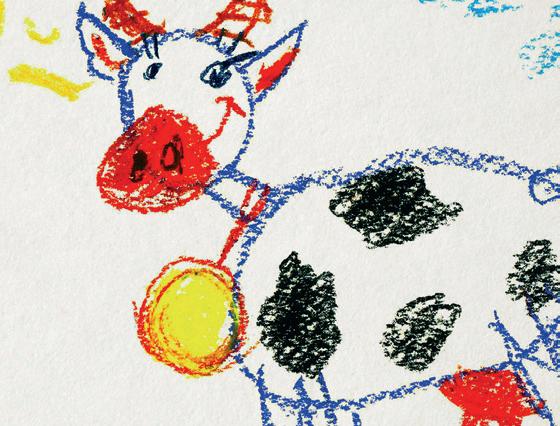
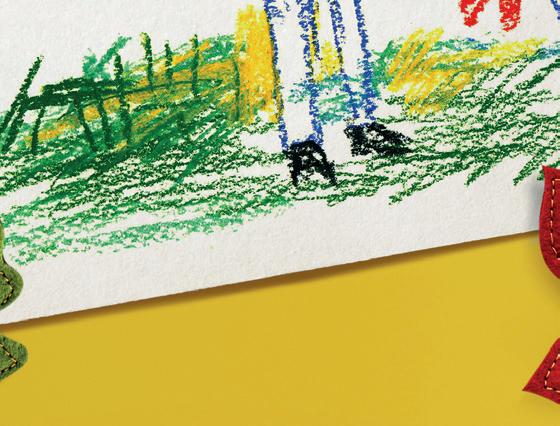








The sequential use of identical PI3 and RSV antigens in live and killed presentations, called a PRIME-BOOST effect, can optimise the immune response to two of the key viral pathogens associated with bovine respiratory disease (BRD).

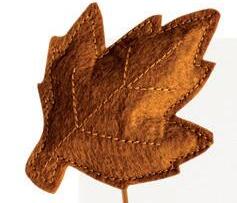

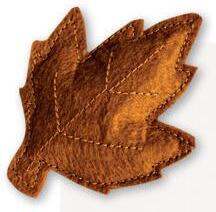
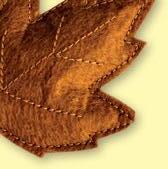
References: 1. Philippe-Reversat et al. (2017) Acta Vet BRNO. 86: 325–332 2. Metcalfe et al. (2020) Vet Record Open 7: e000429 3. Ellis et al. (2018) Can Vet J. 59: 1311–1319 ® our farm has the ha iest Cows in the world!





BOVALTO® is the ONLY BRD VACCINE RANGE which provides ALL of these benefits:
Efficacy proven by challenge studies1
A duration of immunity proven by challenge: 12 weeks for BOVALTO Respi Intranasal2
6 months for BOVALTO Respi injectables1


Intranasal efficacy against BRSV and PI3 unaffected by MDAs, providing the optimal start to immune protection against BRD2




Bovalto® Respi Intranasal, nasal spray, lyophilisate and solvent for suspension contains Bovine parainfluenza 3 virus (PI3V), modified live virus, strain Bio 23/A 105.0 – 107.5 TCID50 and Bovine respiratory syncytial virus (BRSV), modified live virus, strain Bio 24/A 104.0 – 106.0 TCID50. Bovalto® Respi 3 Suspension for Injection and Bovalto® Respi 4 Suspension for injection contain inactivated bovine respiratory syncytial virus, strain BIO-24, inactivated bovine parainfluenza 3 virus, strain BIO- 23 and inactivated Mannheimia haemolytica, serotype A1 strain DSM 5283. Bovalto® Respi 4 also contains inactivated bovine viral diarrhoea virus, strain BIO-25. UK:
Enables sequential use of identical PI3 and RSV antigens in different forms for rapid and long-lasting immunity3

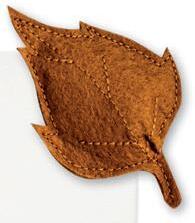


POM-V IE: POM (E). Advice should be sought from the prescriber. Further information available in the SPCs or from Boehringer Ingelheim Animal Health UK Ltd, RG12 8YS, UK. UK Tel: 01344 746957, IE Tel: 01 291 3985. Email: vetenquiries@boehringer-ingelheim.com. Bovalto® is a registered trademark of the Boehringer Ingelheim Animal Health France, used under licence. ©2022 Boehringer Ingelheim Animal Health UK Ltd. All rights reserved. Date of preparation: September 2022 BOV-0108-2022. Use Medicines Responsibly.


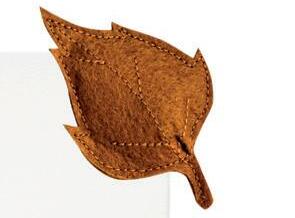


Herbal leys are a central part of the long-term improvement programme for Sophie Alexander, who farms Hemsworth Farm, near Blandford Forum, Dorset. Sara Gregson reports.
Aer converting her farm to organic over several years from 2009, farmer Sophie Alexander, who took over the 540-hectare (1,323-acre)
Hemsworth Farm, near Blandford Forum, Dorset, 14 years ago, is aiming to restore soil health a er many years of continuous arable cropping.
Speaking to delegates visiting her farm as part of the British Grassland Society summer meeting, Ms Alexander said she soon realised livestock were needed on the farm.
“We started running a neighbour’s heifers on perennial ryegrass and white clover leys. But summers are so dry here that these shortrooted plants easily burnt o and the grazing pressure of the youngstock was not high enough. is is when we decided to grow herbal leys and to start our own milking herd.”
e rst diverse leys, which included a range of grasses, clovers and herbs, as well as chicory and plantain, were sown eight years ago and are used for cow grazing in elds closest to the parlour.
e elds are grazed rotationally,
with at least a three-week rest period. Fields further away are down to cu ing leys, incorporating red and crimson clovers, lucerne and vetch, and perennial and Italian ryegrasses.
e 240 Viking Red dairy cows, which originated from heifers bought from several Swedish dairy farms in spring 2020, graze the elds every day all year. e composite breed is bigger than a Friesian/ Jersey cross and had a high health status, being IBR, BVD and Johne’s free. is was important for Ms Alexander, as she was se ing up a fresh new herd on clean land.
e farm is based on solid chalk with 40cm of top soil, so
it is free-draining and rarely becomes muddy. e herbal leys are grazed for four years and the cows outwintered on them in their nal year, before returning to an arable crop the following spring. is is usually a bi-crop of wheat and beans, followed by winter oats sold for milling. ey are then ploughed and drilled back to a herbal ley.
All the arable and winter forage work is carried out by a local contractor.
“Winters are never bi erly cold and the cows, which are dry from just before Christmas, are moved
twice a day to keep them clean and to preserve soil structure,” Ms Alexander said.
“Silage and hay bales are rolled out to supplement their grazing. At the moment we are still buying in some winter forage – but hope to produce enough of our own in the future.”
e cows block calve in spring outdoors, starting from March 1, by which time the swards have started to grow. e cows are milked twice a day and last year yielded an average of 4,800 litres at 4% fat and 3% protein content.
e target is to be achieving yields of up to 5,500 litres per cow per year. e milk is sold to Arla. Up to 750kg
per cow per year of mainly homegrown feeds are fed in the parlour, including oats, peas and beans.
e cows are served with sexed semen for 24 days at the start of June with a 96% submission rate and 60% conception rate. Sweeper bulls mop up any cows not in calf.
Tissue samples taken from the heifers are genomically tested in Scandinavia. ey are then articially inseminated with semen from bulls that will improve their speci c production traits, including milk from forage and solids.
Grazing infrastructure including livestock fencing and water troughs fed from a bore hole had been installed when the neighbouring farmer’s heifers rst came onto the farm. An outdoor New Zealand style 24/48 milking parlour was built and ready for the rst dairy cow calving in 2021. Chalk tracks were put down so cows can reach the furthest elds which are 2.8km away.
Ms Alexander said she sees increasing biodiversity as the key to
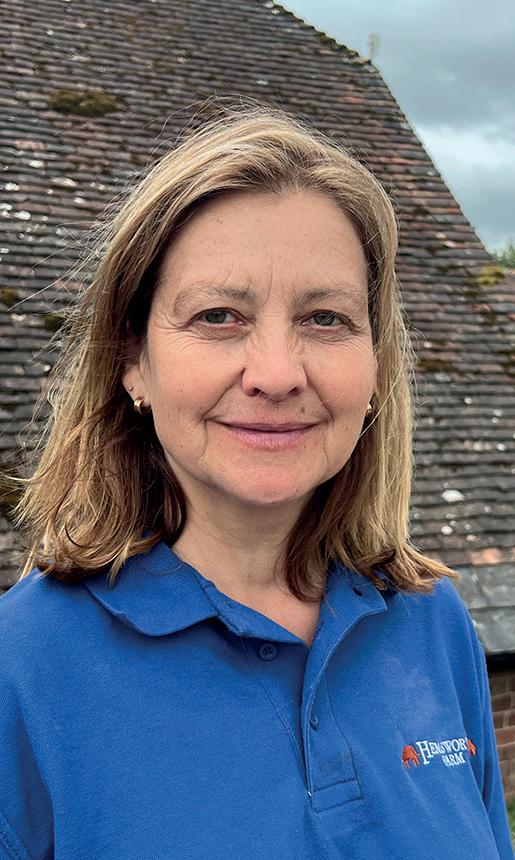
improving the chemical, biological and physical elements in the light, chalky soils. e farm is in the sixth year of a professional survey and the nal year of a project funded by Innovate UK and Defra’s Farming Innovation Programme, trialling digital monitoring 24/7. During 2023/24 there was an increase

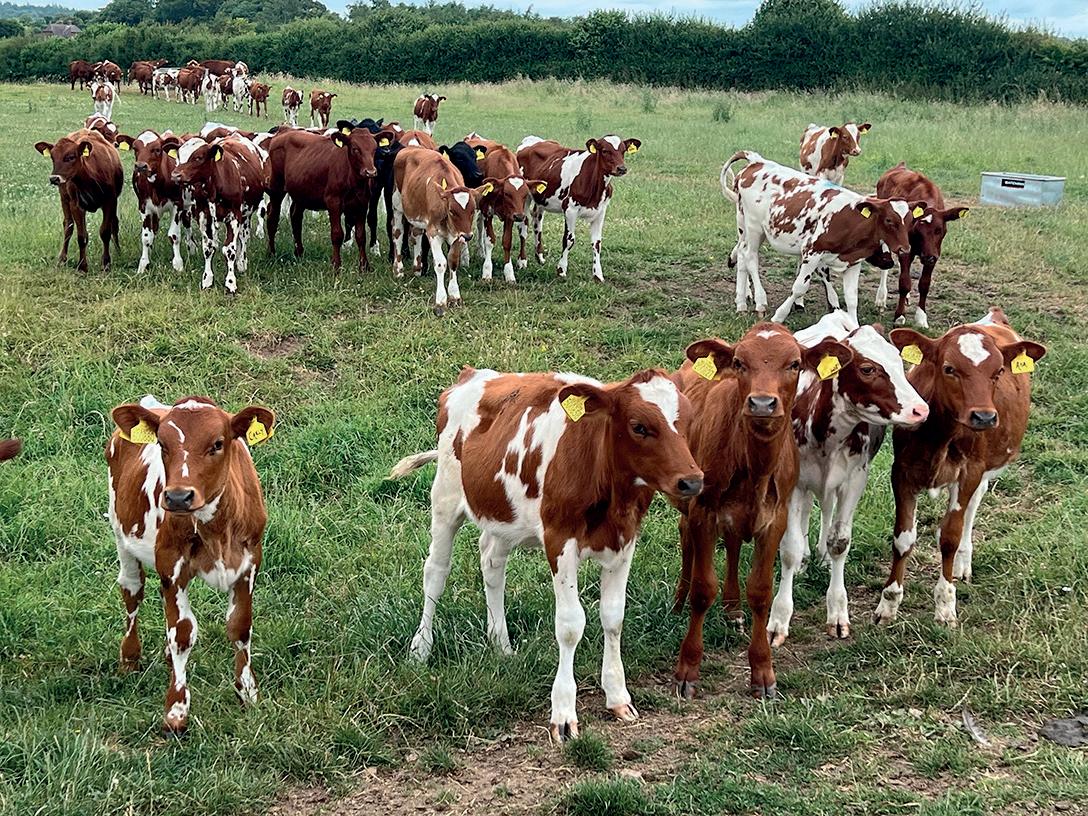
of 1,500 new species not found in the rst ve years, including rare spiders, bu er ies and birds.
Ms Alexander said: “We have put in 20ha of eld margins and bu er strips, 28km of hedges and eight hectares of woodland, with more
tree planting planned to create shade and shelter, particularly for the youngstock in the more exposed elds. At the start, I was told it would take 15 years to restore these soils and I think that will be about right. e soil and the environment of the farm is in much be er health than it was 14 years ago.”



































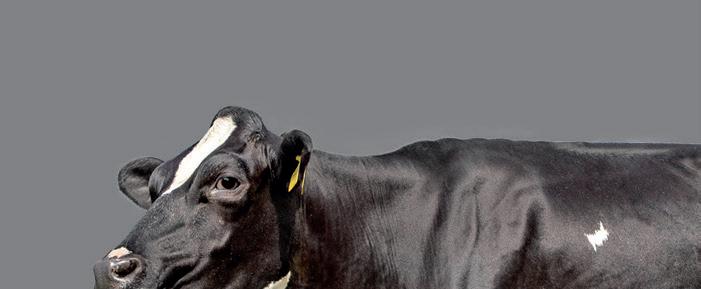


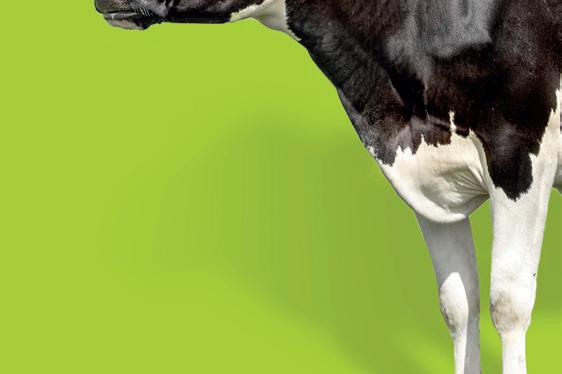








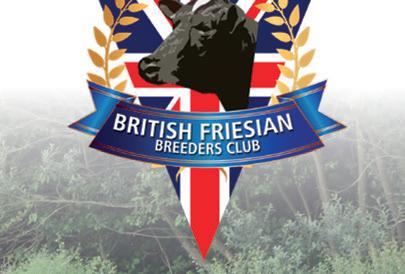
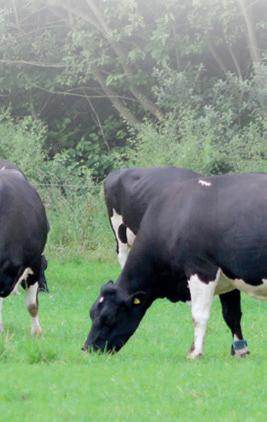
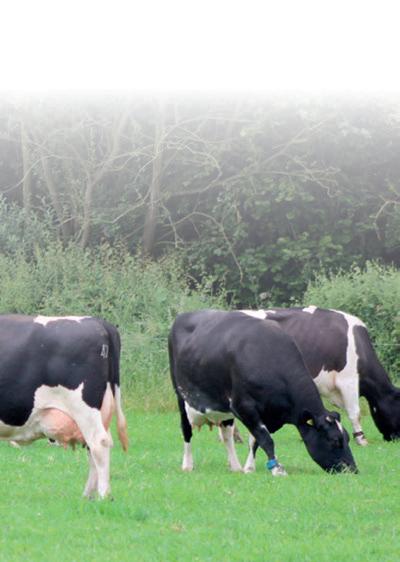
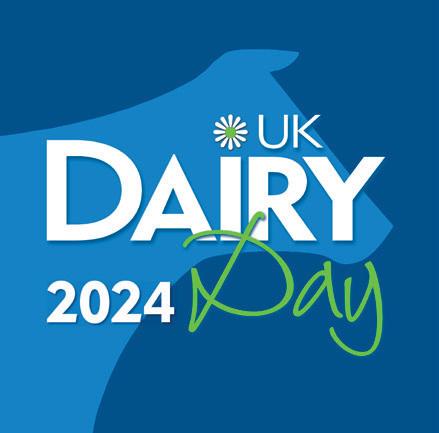
Livestock farmers could significantly reduce the risk of environmental damage that disposal of spent footbath solutions poses with just a few changes on-farm. Dairy Farmer reports.
Afew minor tweaks around the farmyard could help livestock farmers greatly reduce the risk that disposal of spent footbath solutions might cause environmental damage.
Researchers at the University of No ingham combined mathematical modelling with on-farm studies to determine where the problems occurred and suggest ways of mitigating them.
e slurry pit was a key area of focus, with the new study conrming observations made during a previous project that leaving a slurry pit undisturbed for at least 60 days could help reduce risks.
Prof Dov Stekel, professor of computational biology in the University’s School of Biosciences, who led the studies, says: “What we initially found was that the slurry tank/pit was not as scary a place as we thought for the spread of antimicrobial resistant genes.
“In fact, if le alone for a period of time, the bacteria would die in such as hostile environment.
“What was also interesting was that we were seeing uctuations in particularly problematic drugresistant strains of bacteria called Escherichia coli (e-coli).
“When we investigated this further, using a combination of computer modelling and on-farm research, we found a direct correlation between the emptying of water from zinc and copper footbaths into the slurry tank and these spikes.”
He suggests this highlights farm-speci c opportunities to reduce antimicrobial resistance problems – beyond just antibiotic use reduction – and including more


Storing spent footbath solutions for a period before disposal could help reduce the environmental risk they pose.
careful disposal or recycling of waste antimicrobial metals.
On this issue his colleague Dr John Hobman, associate professor of microbiology in the School of Biosciences, adds: “Metals and other antimicrobial agents, such as formalin and glutaraldehyde, are known to have a co-selective e ect on antibiotic resistance.
“ is means that antibiotic resistant bacteria could persist in the slurry even a er the antibiotics have degraded.”
If left alone, bacteria will die in such a hostile environment
PROF DOV STEKEL
Prof Stekel adds that the work has highlighted how these bacteria moves through the farm, which should help design wastewater management practices that can mitigate problems.
In a related project, engineers at the University showed that using layered double hydroxides – applied as a powder mix to the waste watercan remove copper and zinc from it.
While new concepts are being developed, Prof Stekel says farmers can use a range of mitigations. “ ey should consider avoiding treatments that include ingredients that are long-lived in the environment, in favour of those that are recognised to decompose more quickly.
“Vets also have clear guidance about avoiding antibiotics that are critical human medicines via both the Veterinary Medicines Directive and the British Veterinary Association.
“ e issue is that elements like copper and zinc are chosen for their e cacy. ey are toxic to many bacteria which is why they are used in the rst place.”
To minimise risks, he suggests farmers follow some simple protocols: “Where possible it would be best for farmers to use two slurry stores; one to receive fresh material and the other to spread from, so that all slurry is stored prior to spreading.
“ at obviously may only be an option for larger scale dairy units that have the appropriate facilities.”
To miminise the risk of persistent chemicals posing environmental risks, his colleague Prof Paul Wilson, professor of agricultural economics, suggests farmers install a bund around the footbath to contain splashes or spills.
And storing spent footbath solutions that contain persistent elements for a period before disposal could help reduce the environmental risk they pose.
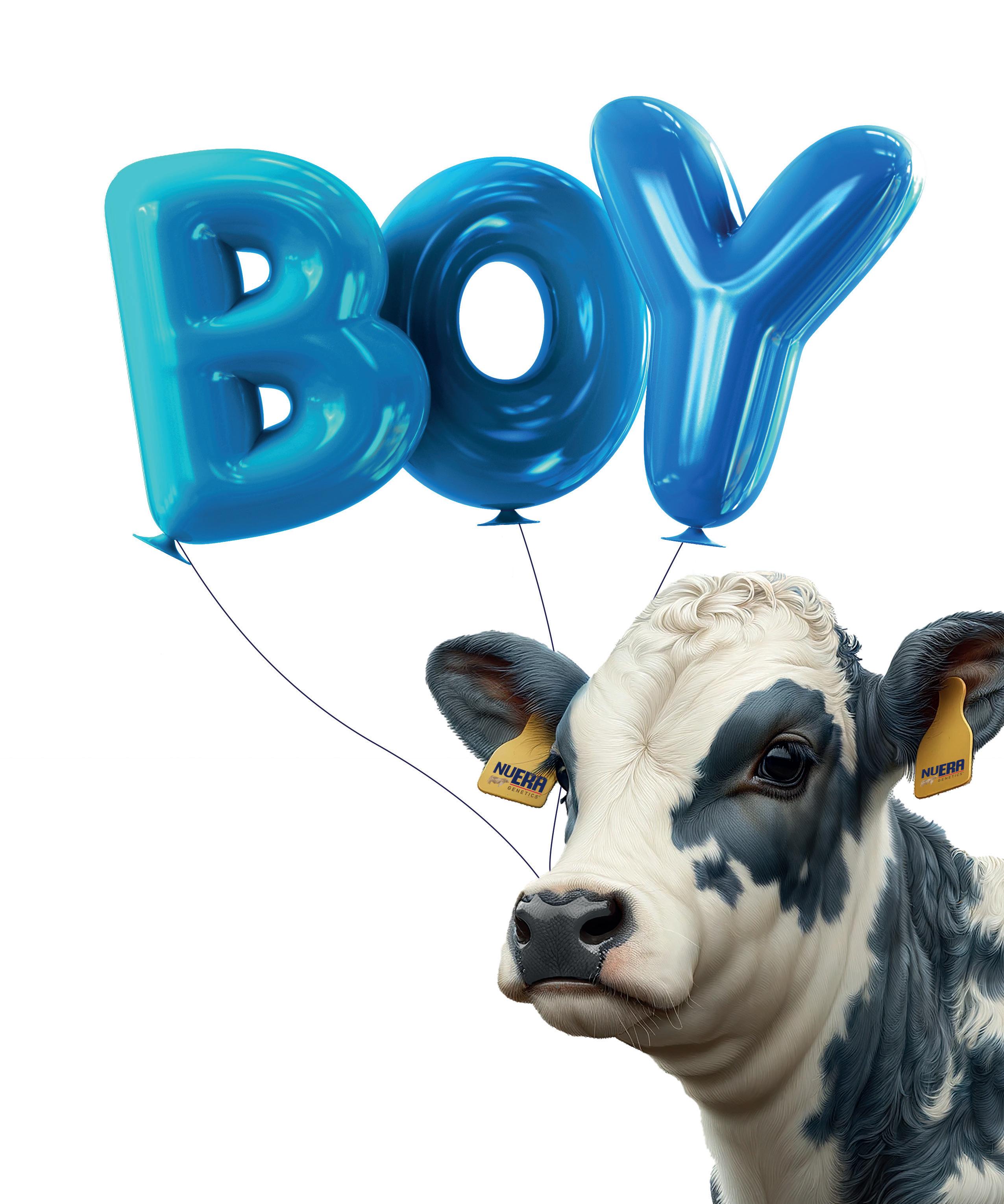
Beef on dairy genetics, but not as you know it
For forward thinking dairy farmers looking to increase the profitability of their dairy beef animals. Sexcel Male Beef ensures the delivery of high fertility, easy-calving, exceptional quality male off-spring. Seamlessly integrated into personalised genetic plans, these genetics guarantee a maximised beef cash calf crop.
The addition of Aberdeen-Angus genetics has created a robust market for beef stores for one Worcestershire dairy farm looking to enhance its farm business. Dairy Farmer reports.
Angela Turney returned to her family’s dairy farm in 2017, and now manages the 300-cow Friesian herd in Malvern, alongside her parents, Francis and Diana Harcombe.
e herd operates an autumn block calving system, with twicedaily milking through a 24/48 GEA herringbone parlour. Milk yields average 7,000 litres per cow per year, sold on direct contract to Muller.
Mrs Turney says running a sustainable, self-su cient operation that utilises home-grown feed, is very much the focus for their farm, which comprises 344 hectares (850 acres) of grazing and arable.
“We could push for more milk but it is not my priority to drive the cows to their limits”, says Mrs Turney.
“I want long life, healthy and e cient cows – so our current milk yield is their sweet spot.”
She explains other than calf milk powder, starter feed and a soya blend during winter, which is supplied by GLW feeds, all other supplies are grown on the farm, including maize, cereals and straw for their loose housed yards.
Starting in November, cows and heifers are served to natural heat by arti cial insemination (AI) with Friesian sexed semen, the target is to achieve 100 dairy bred heifer calves to retain as replacements.
Cows which return a er second service, or that are unsuitable to breed dairy replacements, run with their Aberdeen-Angus bulls, with all beef calves reared on the farm and sold privately to a nearby nishing unit at 16 to 18 months old.
Mrs Turney says: “We invested in CowManager ear tag sensors in 2023 and have been very pleased with their performance, acting as an additional pair of eyes.
“It allows us to react to health alerts but most importantly be much more accurate with our heat detection and timing of services.
“ is has been a huge help in tightening our calving block, but inevitably there will be some that still slip through the net, which
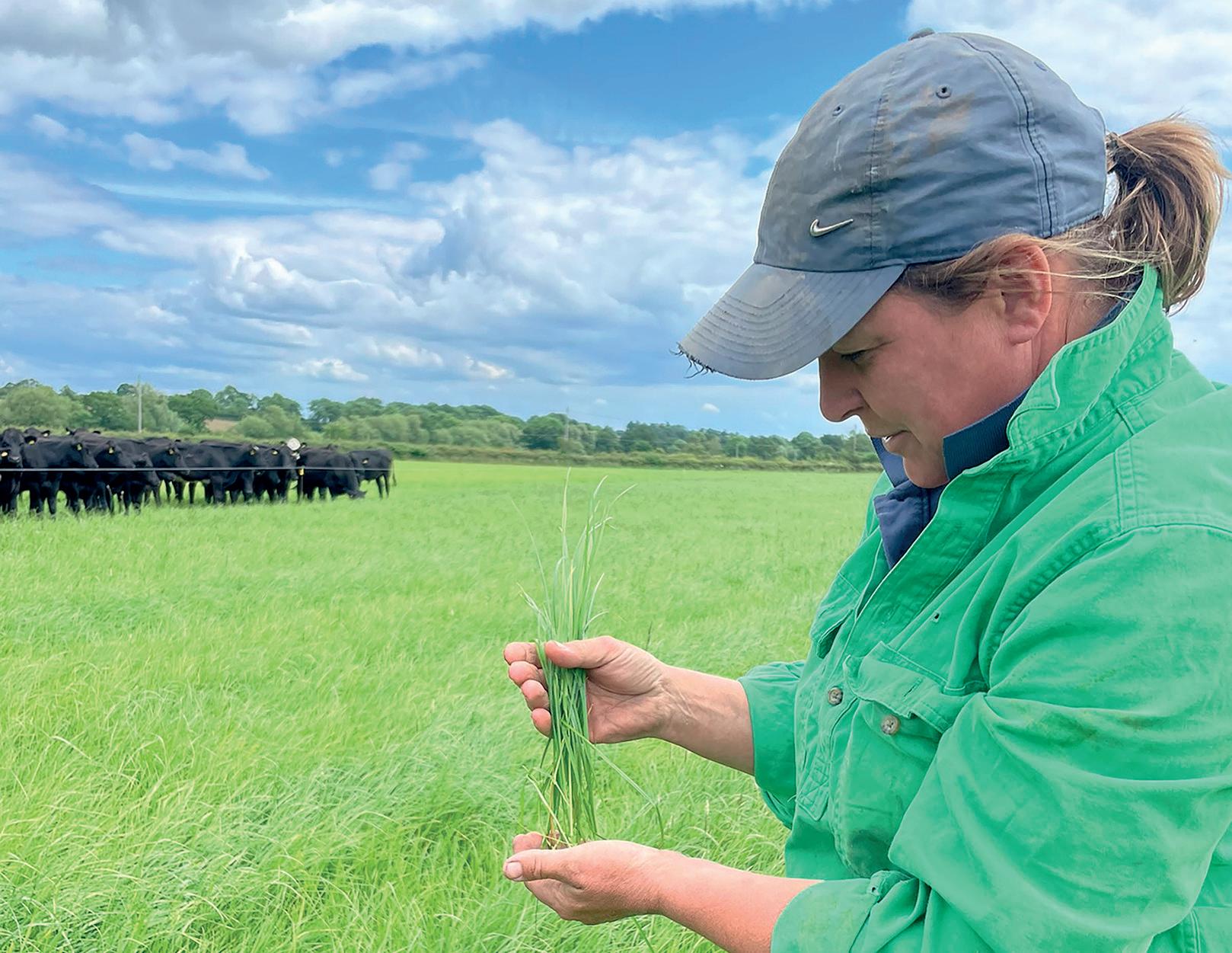

are then swept up by the Aberdeen-Angus bull.”
Running a closed herd allows Mrs Turney to have full control over the characteristics they breed for.
She knows what is needed to work in their system, and when it comes to using beef sires, she carefully balances trait selection to suit both the dairy herd and their store beef operation.
Explaining her priorities for breeding dairy replacements, she says: “Ultimately, I need t cattle; they can walk up to a mile a day between grazing paddocks and the parlour along a network of 12,000 concrete railway sleepers, which takes up a proportion of their energy not being used to produce milk.
“But practically and logistically, that is what they need to be able to do here, and we take a great deal of pleasure seeing our herd out grazing.
“A good grazing animal is vital to achieve our grass residuals, we put fresh grass in front of the herd twice a day and keep them out for as long as possible throughout the year.”
Having previously used Limousin and Simmental bulls as sweepers, Mrs Turney is content with what the Aberdeen-Angus genetics have brought to the herd for over 15 years
“We were not ge ing consistency with the bulls before, both in their fertility and the calves produced. Simplicity is key, and that was not the way to keep things simple.”
e farm has sourced a number of Aberdeen-Angus bulls from Paul Westaway and his Melview herd. She says they provide what she needs to work in harmony with
the dairy herd, including a short gestation, easy calving and a good temperament.
“ ey are good-sized bulls that I know will work with the stature of the Friesians and produce a decent-sized calf without any calving issues.
“Any intervention at calving limits her ability to get back into calf the following year.”
And Mrs Turney says with calving outdoors they also need vigorous calves that get up and suck, with a good temperament to make handling easier.
She adds: “We take care in rearing both the dairy and the beef sired calves; if you are not willing to invest time and e ort at this stage, then it is a waste of time. e dairy cross beef calves have a great temperament, and that comes from having a bull you do not feel the need to watch over your shoulder whenever you are in the same eld.”
Mrs Turney explains the breed’s innate hardiness and ability to thrive

o forage also lends itself to the low cost out-wintering system. is is important in alleviating the pinch points in the farm’s winter housing space while ing in with their ethos of maximising forage.
“All the cows and calves are housed inside, but we are able to out-winter 100 Aberdeen-

Angus weanlings on fodder beet and they are perfectly happy on the lighter free-draining land around the farm.”
With a strong market for Aberdeen-Angus named sired ca le, four years ago, Mrs Turney started selling approximately 90 dairy cross beef stores direct to a nishing unit, having previously sold them at Worcester market.
She says: “ ey are o en more a ractive to nishing units than other beef breeds because of the market premium on o er and their ability to nish quickly.”
All beef calves are reared on-farm and then grown on to 16-18 months of age before being sold to Gloucestershire nisher, Peter Hewle , who mostly supplies Co-op, as well as a few butchers.







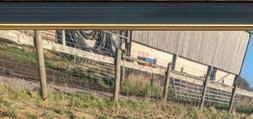





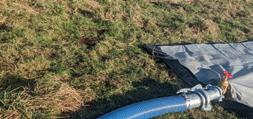

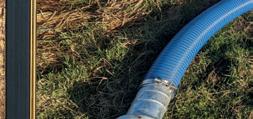


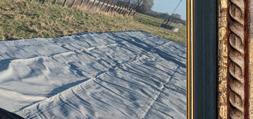
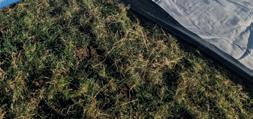













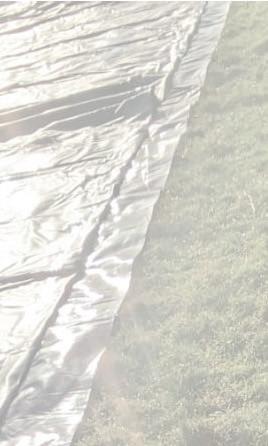


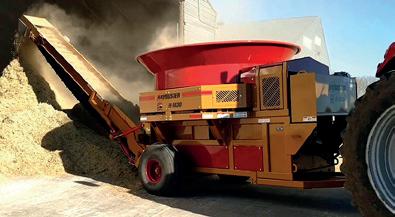

Tub Grinders
- Exclusive UK Distributor of Haybuster & Rotogrind Grinders.
- Range of models from 5t - 25t / hour output.
- New, used & refurbished machines available.
- Ideal for straw, hay, green waste, roots, biogas feeds etc.
Root Choppers & Cleaners










































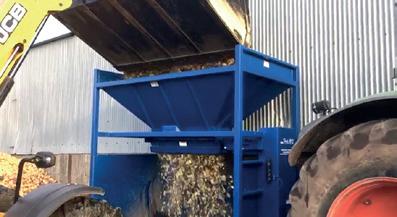
- Loader, 3 point linkage, free standing PTO and electric drive available
- UK Distributor of VDW range of choppers, cleaners & feed dispensing equipment
- Output from 10t/hour to over 120t/hour available
Diet Feeders
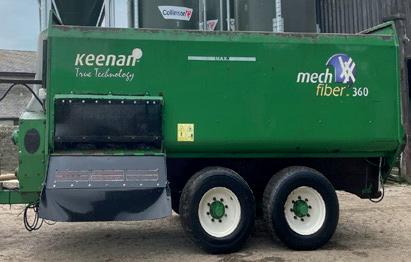
- Largest stock of mixers in the UKover 50 machines in current stock
- Refurbished, used & nearly new units available
- New Mini Mixer available
- Diet feeder parts available- Blades, Conveyor belts, gearboxes, weigh cells.
- All feeders undergo 30 point service
- Finance available subject to terms
- Nationwide delivery available
Current Used Stock:
- Trioliet 12, 20, 24

- Strautmann 14, 24
- BvL 12, 15, 17, 20, 24
- JF Kongskilde12, 14, 22 x 2, 24
- Kverneland 614 x 2
- Seko Samaurai 12
- Keenan 140, 320, 340, 360, 380
- Siloking 16, 18, 22
- Shelbourne Reynolds 11, 13 x 2, 22, CB150
- Abbey 18, 30, 18 for parts
- Hi Spec 16, 27, 16 Mixmax




















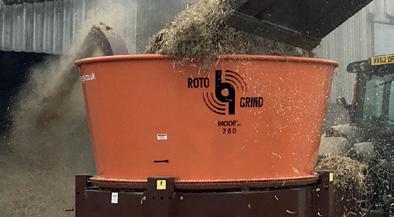
- Redrock 16, 20
- Rotogrind 760 x 3
- Teagle C12 tub grinder
- Farmhand 880 tub grinder
An autumn-sown catch crop could mitigate shortfalls in forage availability this winter and unlock additional revenue from the Sustainable Farming Incentive. Dairy Farmer reports.
Aer one of the wettest years in recent history, the summer has not given growers any respite, with unrelenting rain showers and below average sunshine preventing forage crops from growing as hoped.
Lower than usual hours of sunshine and a corresponding lack of heat units have slowed grass growth, with a large proportion of livestock producers expressing concern that second and subsequent cuts of silage grass simply have not produced the biomass required to ll clamps.
e sub-optimal weather has also impacted maize growth so far this year, with concern building that unless conditions improve and remain improved for the remainder of the growing season, the forage stock challenge could be compounded by low maize yields.
Simon Montgomery, of ProCam, says for producers with serious concerns about winter forage stocks, now is the time to start formulating a contingency plan.
He says: “One way of plugging the gap is to plant a catch crop as soon as the autumn’s cereal and/or maize harvests have concluded.”

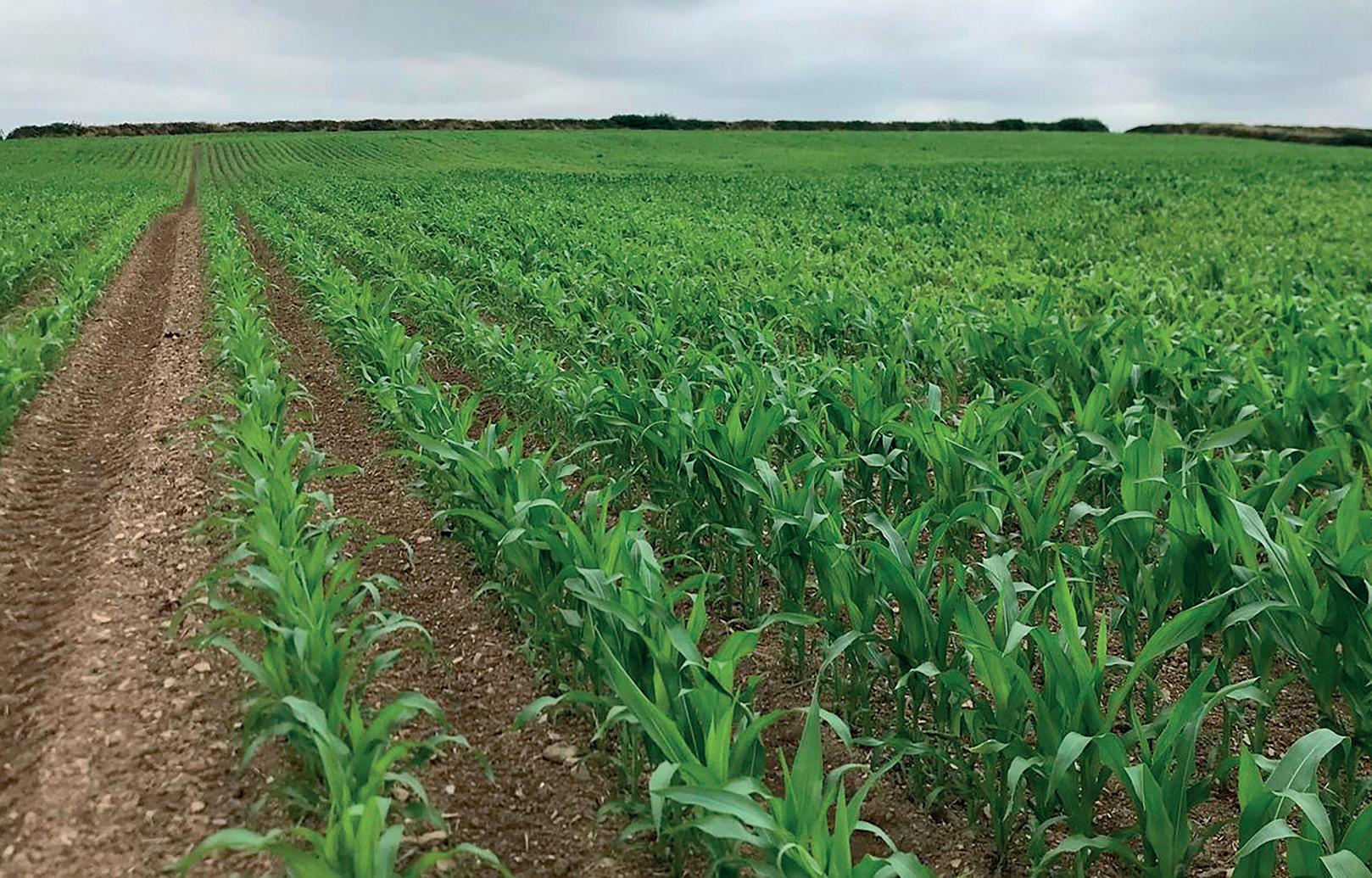
Growers have three main options, says Mr Montgomery.
“ ey can either opt to drill a fast-growing single species ryegrass ley, choose a triticale based multi-species mixture which will have the added advantage of qualifying for a Sustainable Farming Incentive [SFI] payment under the scheme’s SAM2 classi cation, or look at a forage and rye type mixture.”
For the former, Mr Montgomery recommends ProCam’s ‘Hurricane III’ mixture from the company’s Field Options range of forage seeds.
He says: “Based on a new, high performance and exceptionally hardy diploid Westerwold ryegrass, Hurricane III is ideal in scenarios where grass is required in a hurry.
“Sown a er maize, its combination of complementary varieties produces big cuts of silage early in spring, with UK trials showing it can deliver as much as 8.1-9.1 tonnes of

dry ma er per hectare. It is also suitable for spring and autumn grazing when managed correctly and will easily persist for at least 12 months.”
For producers more interested in growing a multi-species catch crop – to produce biomass and to secure an SFI payment – ProCam’s ‘T101 N-Max’ seed mixture is more appropriate.
Triticale
He says: “N-Max is based on an 80:20 mixture of forage triticale and hairy winter vetch. e triticale element is more robust and faster establishing than forage rye, which makes it ideal for the production of spring forage for early stock turnout and to reduce the reliance on bought-in feed when silage clamps run empty.
“It also meets the SAM2 specication by providing over-winter ground cover which scavenges existing nutrients and prevents leaching
losses and reduces soil erosion. And it excels at suppressing autumn weeds, and, thanks to its ability to withstand even the harshest of winters which enables it to keep growing through winter, it has the best potential for producing spring biomass with a similar feed value to forage rye.”
As a third option, N-Rich –which comprises an 80:20 split of forage rye and hairy winter vetch varieties – is also suitable for drilling a er maize.
He says: “N-Rich occupies the middle ground for those who might not have the con dence to grow a triticale-based ley.
“It too continues to grow even in very hard winters and produces a good biomass for spring cu ing or can be grazed from January onwards. And it is also SAM2compliant, which means producers electing for this option can also bene t from an SFI payment.”

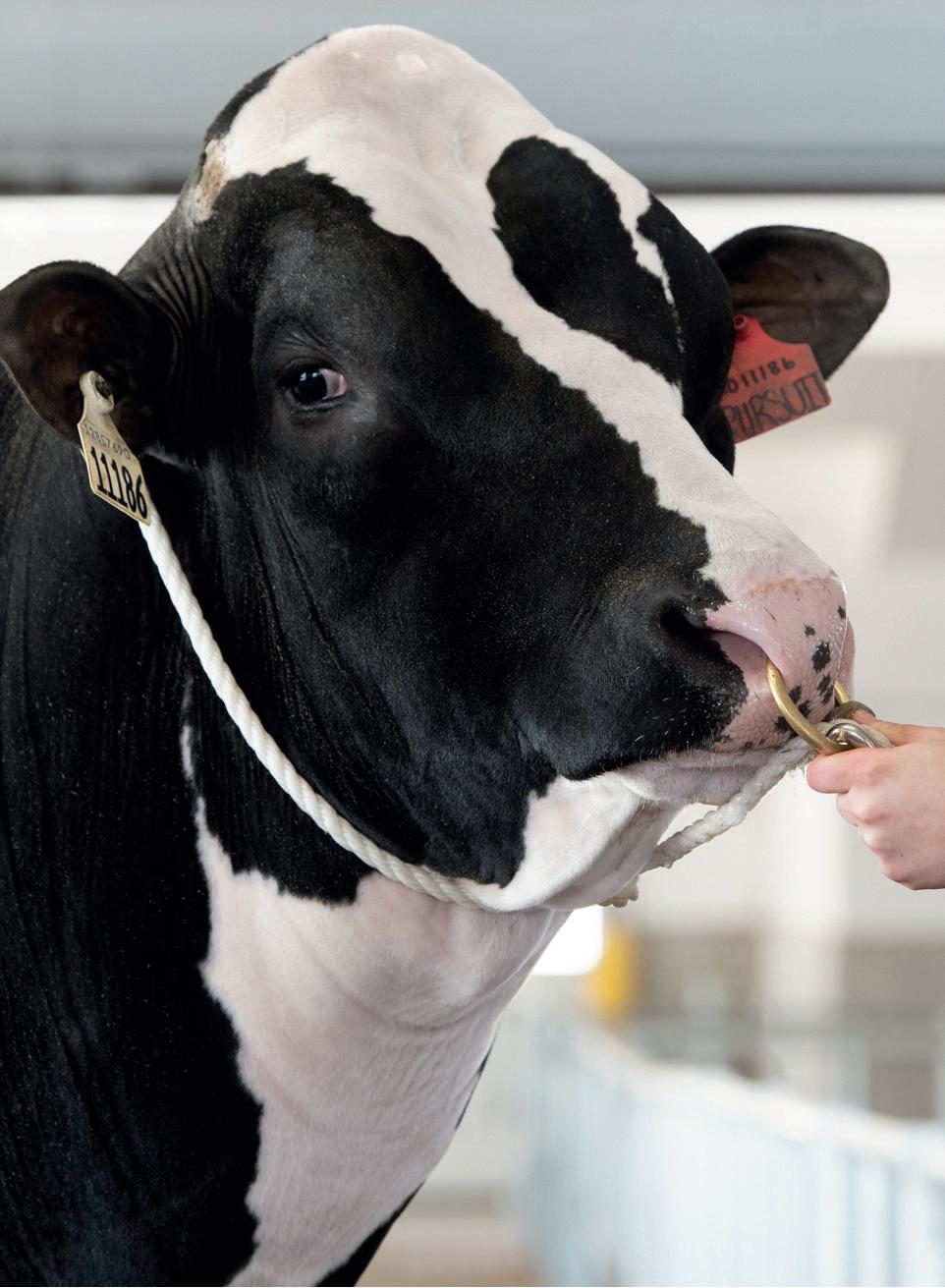
“The greatness of our lives is not what we leave behind but in what we send forward”
With the aim of a profitable and sustainable future, Jo and Alex Gidlow are keen to push their family farm on by increasing cow numbers and future-proofing the system. Dairy Farmer reports.
Building projects and long-term planning have seen brother and sister Alex and Jo Gidlow pushing things forward at Springwood Farm, Derbyshire.
Running at 500 cows, the milking herd is yielding 11,400kg at 4.52% bu erfat and 3.34% protein, with Alex and Jo recently taking on an Asda-aligned Arla contract, which rewards these high milk solids. With cow numbers on the rise, support from Kite’s Chris Flint over the last seven years has been invaluable, says Alex.
He says: “We have been growing the herd and have been breeding more and more heifers to get numbers up. Chris has pushed yields and the whole farm forward and is help-
ing to guide us towards a pro table and sustainable future.”
Owned by the Staunton Harold Estate, the farm spans 202 hectares (500 acres), with Alex and Jo being the last generation in a three-generation tenancy.
e farm also buys about 162ha (400 acres) of standing maize on a per tonnage basis, with muck going the other way. With their own umbilical system and muck separator, exporting and handling muck is easy and e cient.
A compact feeding programme has also been adopted, involving the addition of water to diets.
Milkers receive a total mixed ration of grass, maize, rapemeal,
sweet mix and caustic wheat, and nothing is fed in the parlour.
Breeding decisions are now based on the pro table lifetime index, while Cogent’s Ecofeed index plays a key part in making breeding decisions. All females are genomically tested and matched to appropriate bulls digitally, with the computer le to make the decisions.
Alex says: “ rough testing and serving the right cow and in following this system, the herd’s genetic potential has been pushed forward.
“Our cows are pre y typey. I am interested in genetics and am happy to follow the computer in matching bulls to cows based on genomic results. I am more concerned about ensuring we are running as commercially as possible.”

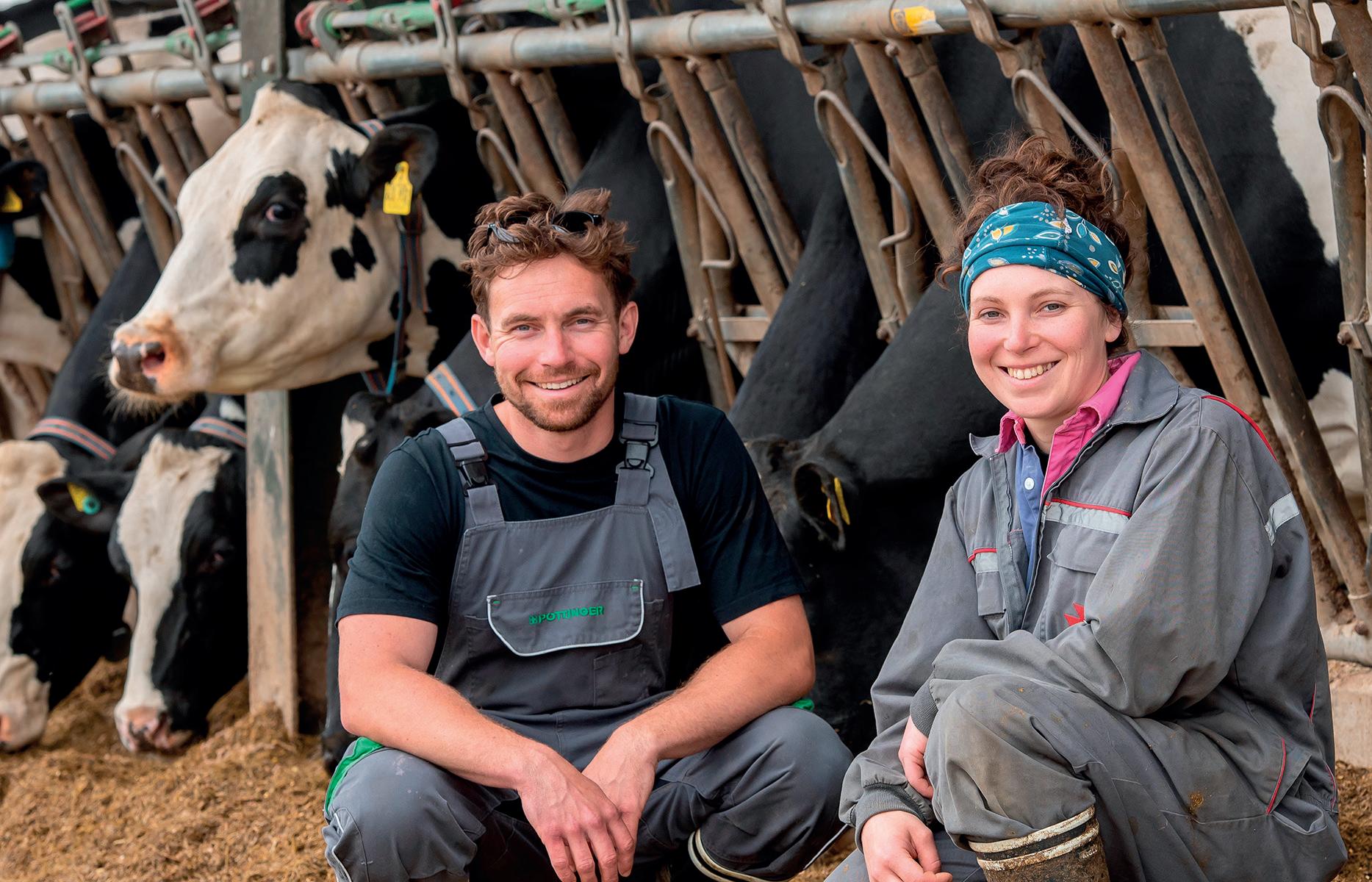
I am interested in genetics and am happy to follow the computer in matching bulls to cows
ALEX GIDLOW
About 45 straws of sexed black and white semen is purchased every month to breed replacement heifers. Sexed Angus straws are used on the rest of the herd, as well as an Angus sweeper bull. In order to concentrate on dry cow management, a contract heifer rearer forms an integral part of the family’s operation.
Dry cows now occupy a separate building, are bedded on sand and are put in socially stable groups.
At 15 weeks of age, calves go to Mark and Tom Spalton, who rear heifers solely for the Gidlows.
On their return to the main farm at 12 months of age they are served,
rFarming 202 hectares (500 acres) and milking 500 cows
rMilkers fed a total mixed ration of grass, maize, rapemeal, sweet mix and caustic wheat
rThe farm also tests British Blue semen for Cogent

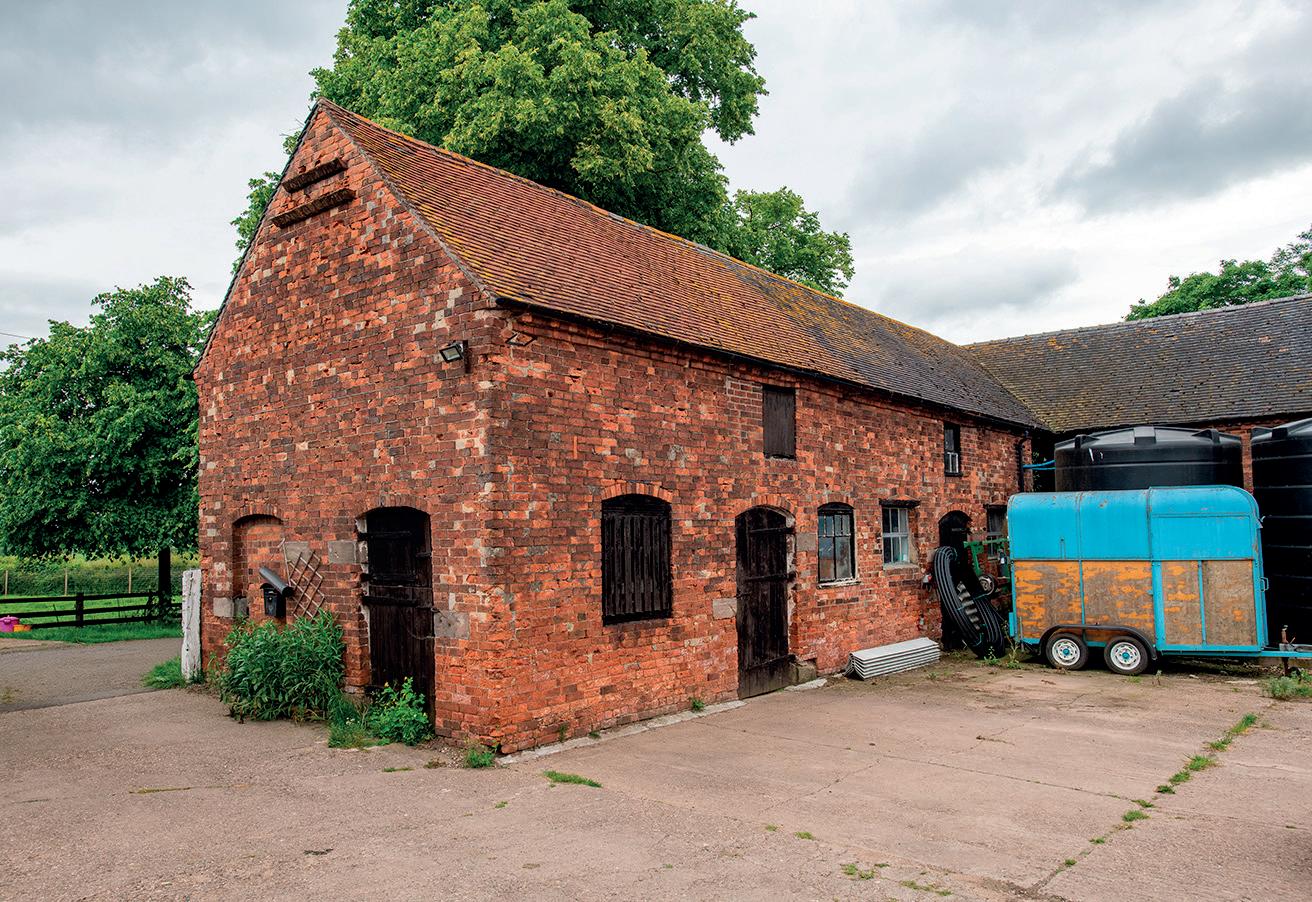
which Alex says is achievable due to the good nutritional start they receive as calves.
Holstein calves all have milk powder, feeding eight litres at 150g/litre at peak consumption at about three weeks old via a teat feeder. e rst four feeds are colostrum
to make the most of animals’ epigenetics, says Alex.
All beef calves are sold at two to three weeks of age to Livestock Link to be reared on.
Calves are weaned at 10 weeks of age, with milk intakes reduced at eight weeks. Calves also have
access to chopped straw and a rearer pellet from two days old, consuming about 3kg at the time of weaning.
Five years ago, the family put up a new 112-cubicle shed for early lactation cows and the improvement
in performance was seen almost immediately.
Alex says: “Cow numbers had been climbing up and space was at a premium in our old building. “ e new barn was designed for cow comfort, with wide passageways, lots of feed space and
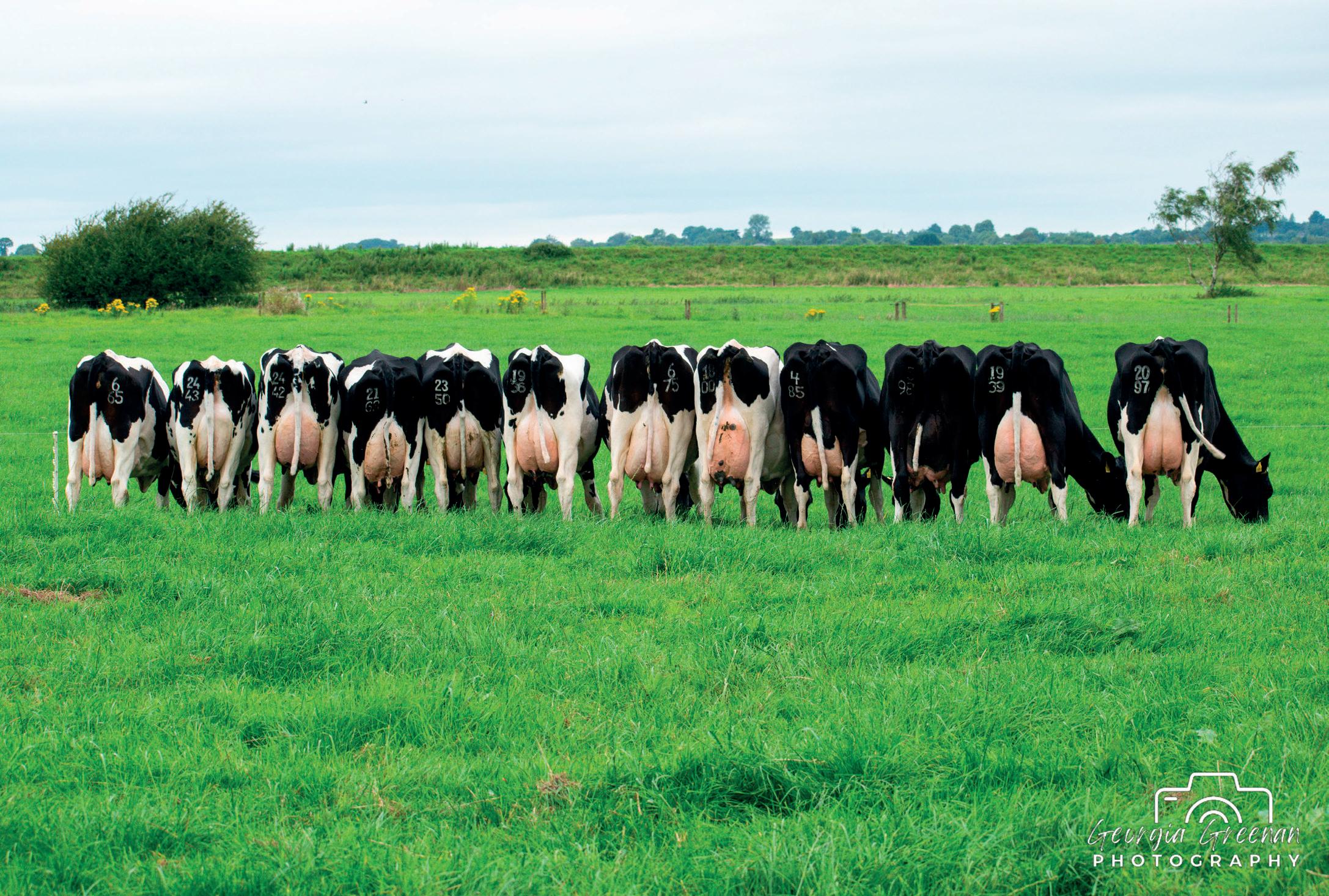

the high pitch roof, which brings in fresh air and light.”
Cows and heifers are all bedded on sand, which is increasingly cost-competitive when compared with the current price of sawdust. rough advice from Chris, they have started reusing sand, le ing it rest in a heap in the eld and le ing the rain wash the muck out before reusing.
Chris says: “We have seen great improvements in cow comfort and ow. We also took the opportunity to alter some of our existing older sheds by ripping out some cubicles to make them be er for the bigger, high-yielding cows, which also now enjoy big passageways and plenty of loa ng space. We also have plans to put up another dry shed for calving.”
Alex says they are lucky to have a helpful and supportive landlord. With their assistance, two years ago, an old brick barn was converted into a functional sta room for their nine members of sta , with kitchen and washing facilities.
He says: “Creating the sta room has given the sta their own space for lunch and allows them to shower before they leave work.”
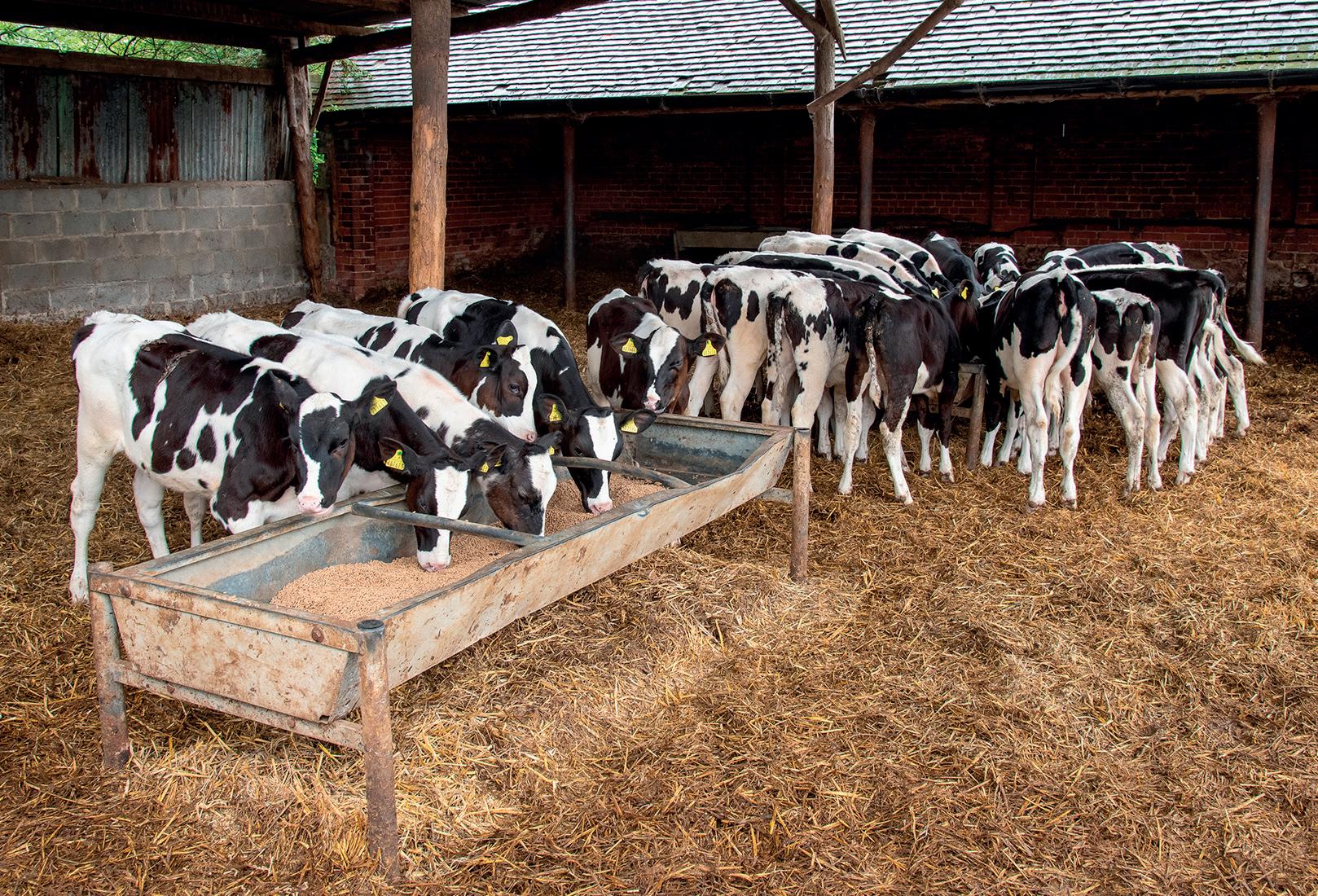
It is clear the Gidlows’ approach to managing sta pays dividends, as the newest member of sta has been at the farm for two years.
More recently, work has been carried out to build the farm’s succession plan, with father Paul transferring part of the farm to Alex and Jo.
Alex says: “Succession is obviously very important and Chris has been very helpful in guiding


us through the process. It has also been hugely time-consuming.”
With Alex and Jo in the driving seats, opportunities for personal development are taken hold of. rough their milk buyer, Arla, Alex has been involved in Best Practice Groups, sponsored by Asda, since 2007.
ey then joined the Asda Challengers Group in 2013, the Asda Innovators Group in 2014 and, more


recently, Jo has become involved with their local Arla R500 Group.
Alex says: “ ese groups give us opportunity to get o -farm, see other businesses, be exposed to new ideas and discuss key topics with other farmers. ey challenge what we are doing.
“Being the last generation with any certainty on the farm, all we can do is keep pushing forward the business in the way we see t.”
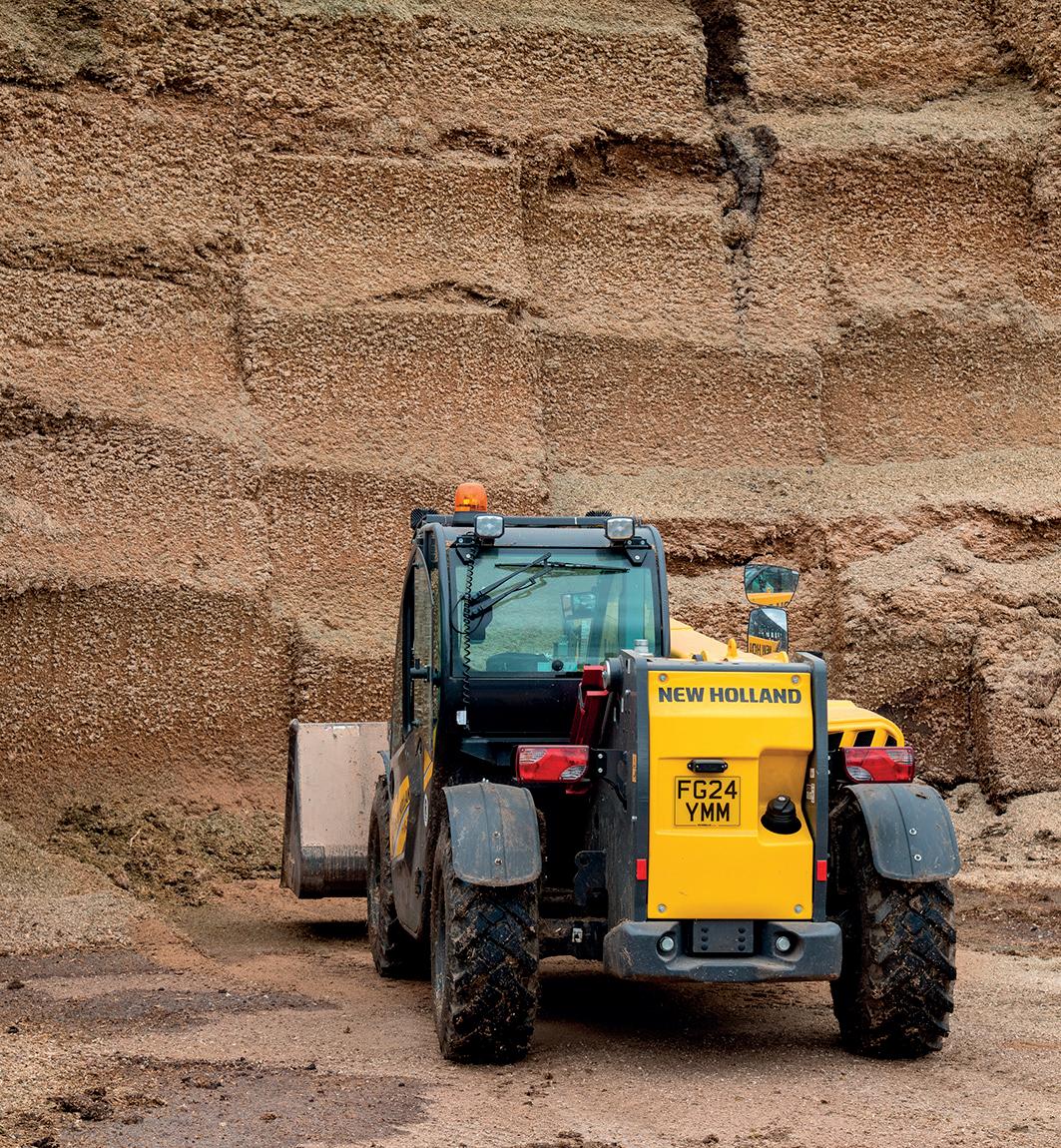
























































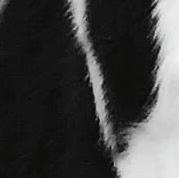




























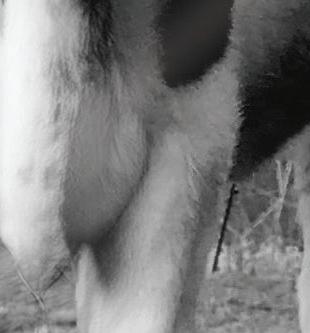
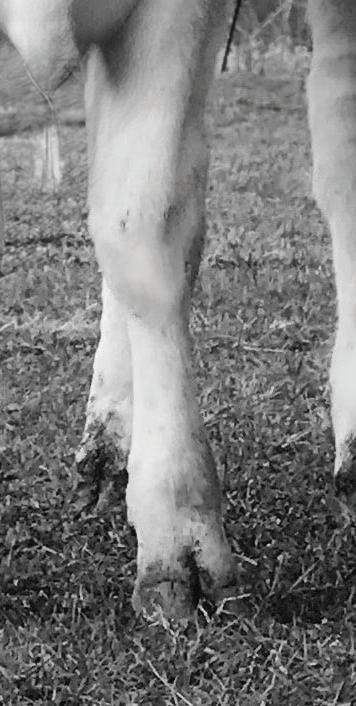




































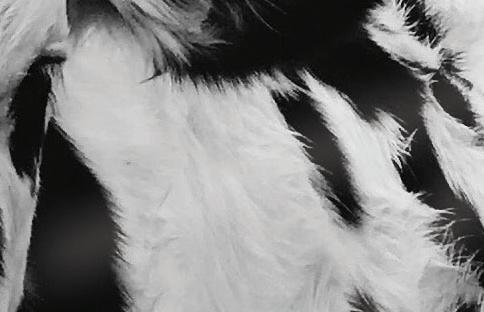






















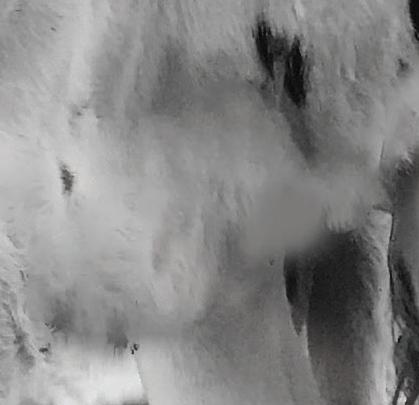
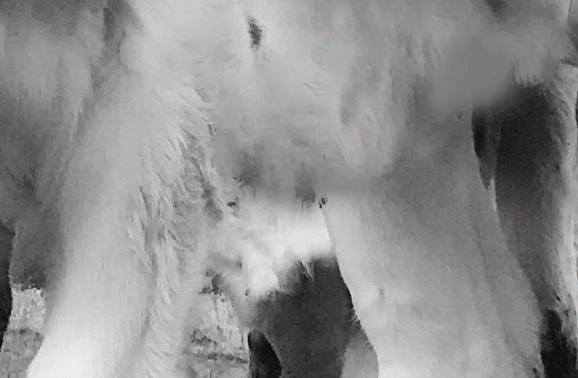




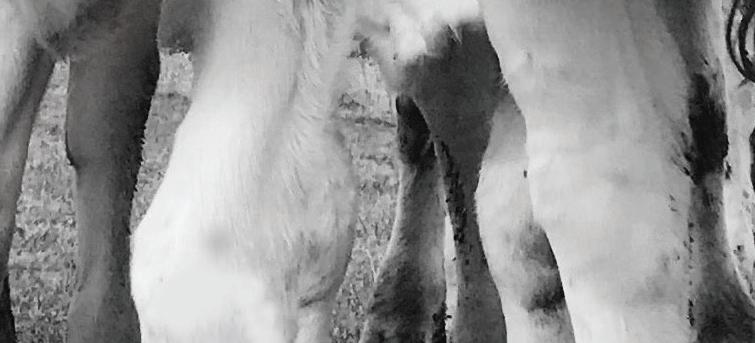





















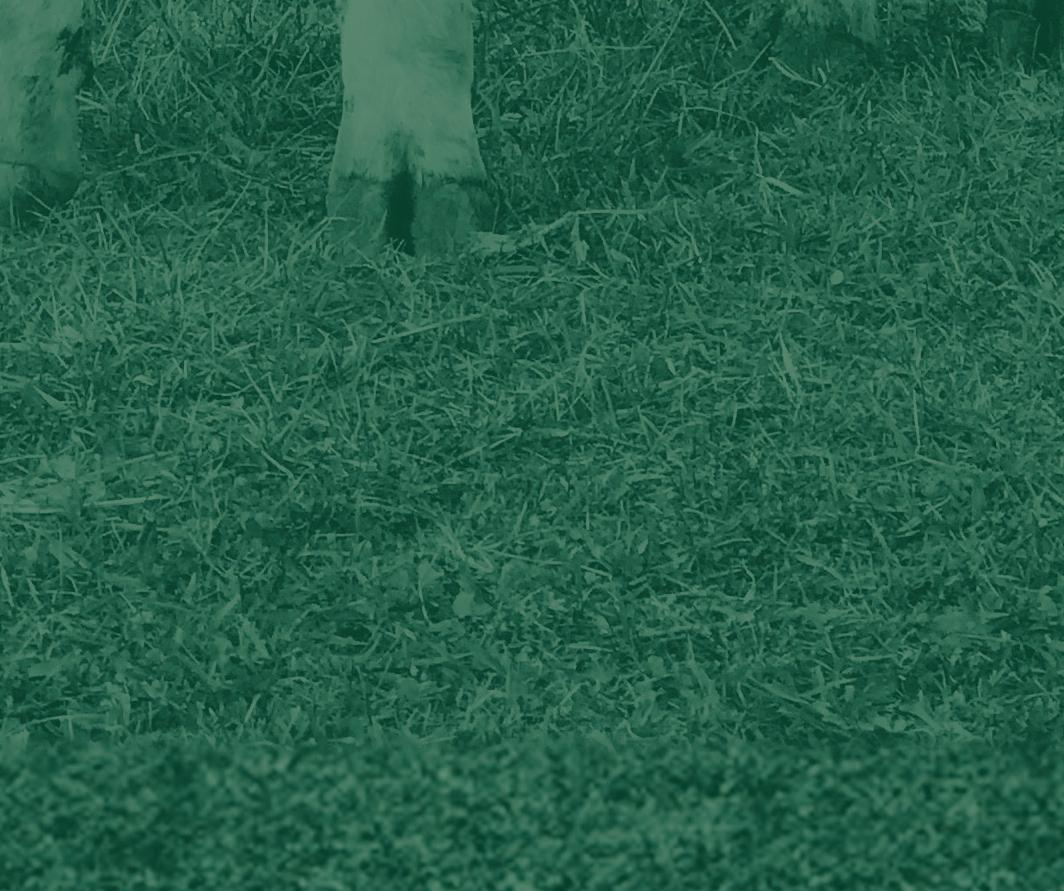





















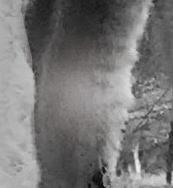
























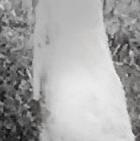
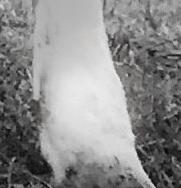





A simple management approach combined with a commitment to produce as much milk as possible from home-grown forage is proving to be a sound business formula for one Nottinghamshire dairy farming family. Dairy Farmer reports.
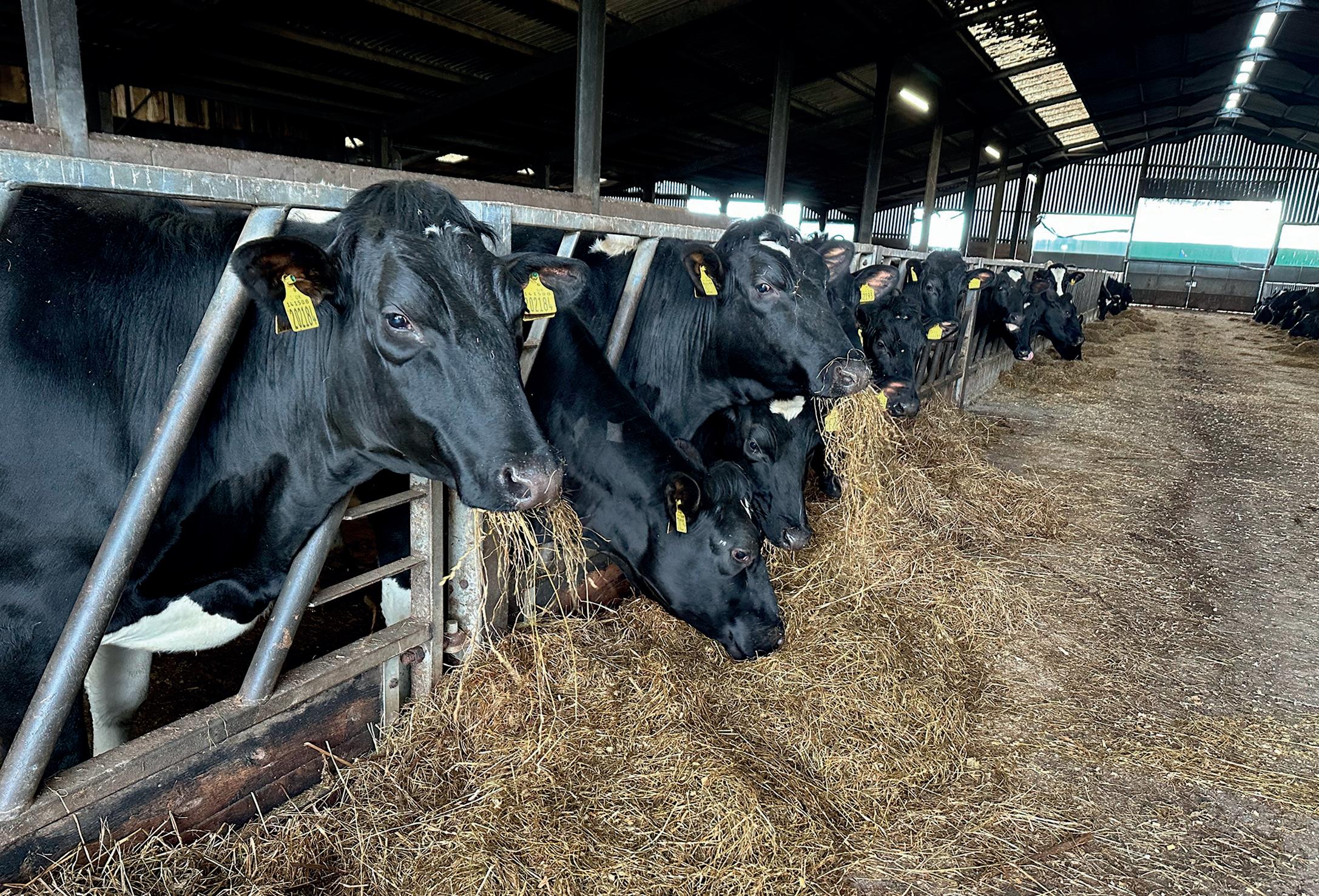

3.55%.
High quality maize fed in a simple forage-based system is helping the Jukes family achieve more than 60% of milk from forage and a margin over purchased feed (MOPF) of nearly £2,300/cow. Producing high quality milk for Long Clawson Stilton cheese production, the family’s aim is to produce the highest quality milk they can while keeping costs low and avoiding over-reliance on complex machinery or infrastructure,
explains Steve Jukes who farms at Gables Farm, Newark, with his wife Carina and son Ollie.
Steve says: “We are a family business and want to keep farming that way into the future, so we are not trying to produce the highest yields possible and introduce a lot of stress into the system for the sake of it.
“So, for example, we are currently producing 6,700 litres/ cow/year from a 115-strong commercial British Friesian herd that is calving all year round and
out on grass from March to November.
“We rear all our own heifers and use sexed semen to manage the number of beef animals we produce. Any beef calves are sold on early so we are not complicating the system.”
Steve explains grass silage is made in big bales, maize is Ag-bagged.
e farm does not own a mixer wagon and he says he achieves ‘perfectly good results’ from
layering maize on top of the grass silage in the winter.
He adds: “For us, silage clamps mean big investment and mixer wagons and the like introduce greater expense and another thing that can go wrong, so if we can run a successful business producing high quality milk without them, that suits us ne.
“Rolling bu erfat is currently more than 4.8%, protein is 3.55% and MOPF is £2,283/cow/year.
“We are also ge ing up to seven or eight lactations per cow,
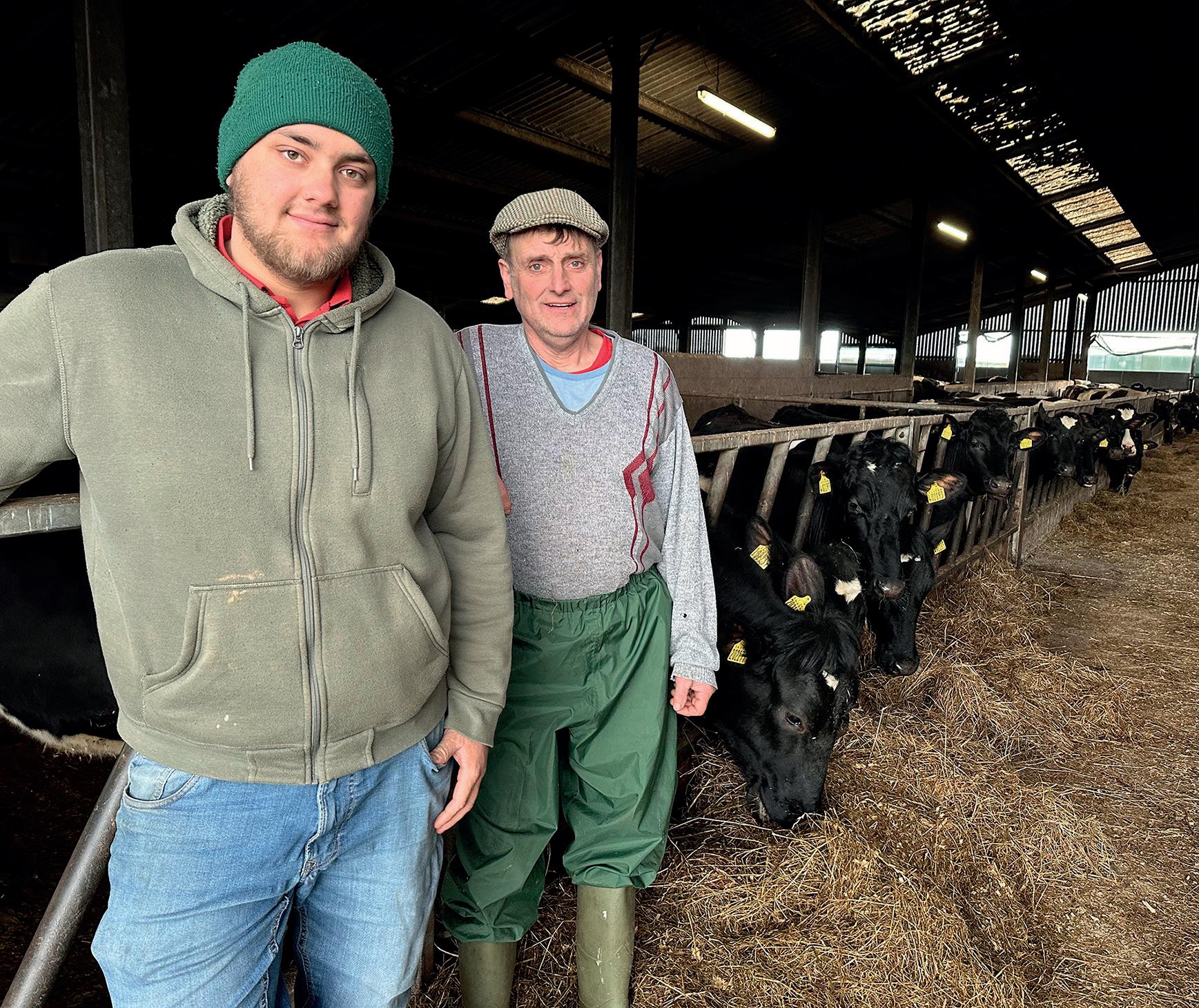
so I think we are achieving our objective of running a low stress, sustainable business with a focus on quality.”

rThe day-to-day work is carried out by Steve, wife Carina and son Ollie
rThe farm comprises 55 hectares (135 acres) owned, supplemented by 8ha (20 acres) of rented land
r115-cow British Friesian herd producing 6,700 litres/cow/year
layer of maize silage is put on top of using an auger bucket.
“High yielders are fed up to 6kg of an 18% compound in the parlour with the low yielders getting 1kg.
Steve says grassland management is kept fairly simple, with limited use of nitrogen and reseeding only where necessary. However, he adds he is a big fan of maize and has been growing the crop for more than 20 years.
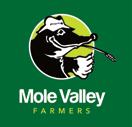
He says: “It has become a vital

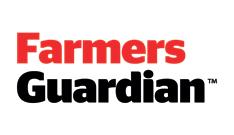
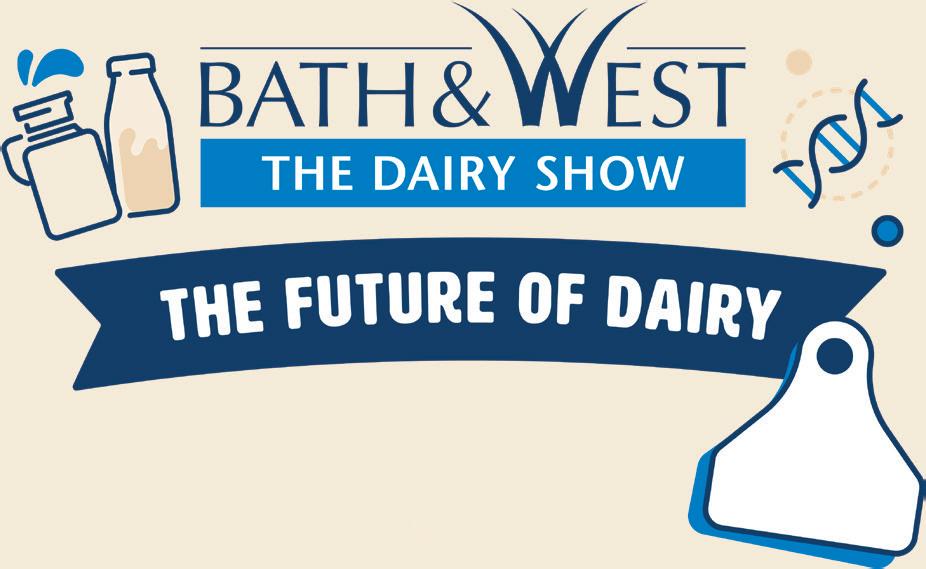
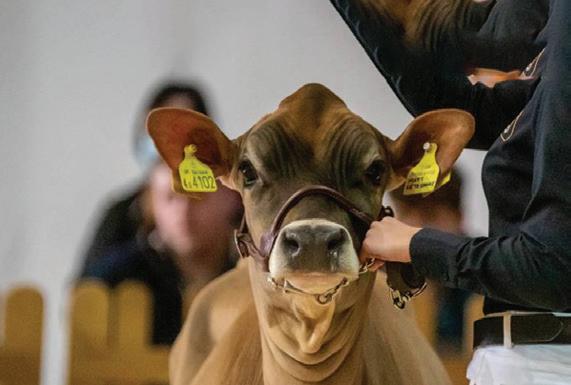
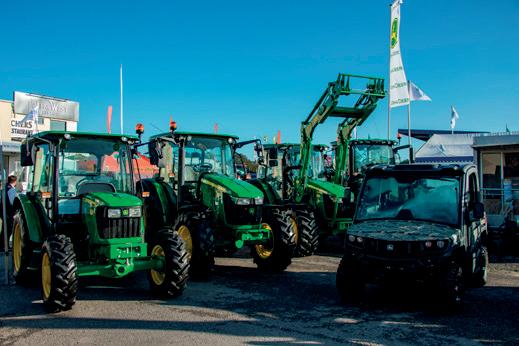
part of our feeding regime, not just during the winter, but we also feed it as bu er at times when the cows are at grass.
“In the winter, grass silage is fed out with a bale unroller and a
“ e high yielders also receive 1kg of a 38% crude protein maize balancer, and that is pre y much it.”
According to Malcolm Coulby, of MRC Agriculture, who advises the Jukes on feeding and variety choice, the pared-down approach







































































































































































































































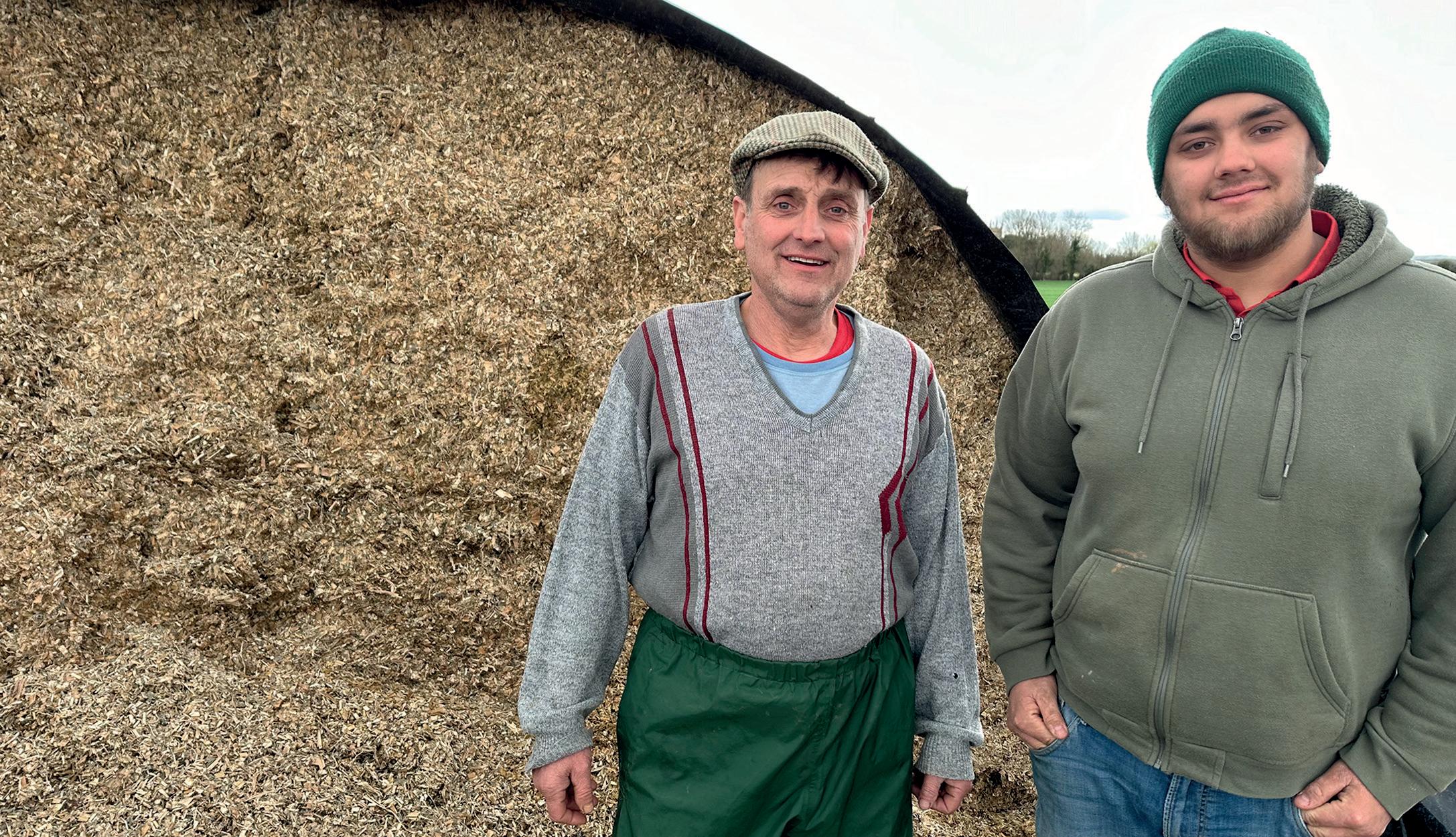

works best with high energy maize featuring high levels of digestibility.
“We are aiming for a roughly 50:50 mix of grass silage to maize in the ration and the maize has a lot of work to do in providing the energy needed to drive the yields and the high levels of bu erfat and protein required by their milk buyer.”
Malcolm says: “ e farm’s location suits early varieties and, in the past, we have seen good results with ES Lovely, but last year all the 12 hectares grown were ES Bonnie and that is the case again this year.
“Bonnie is a maturity class 8 variety which means it is appropriate for most parts of the UK, apart from the more marginal areas, and combines early cob ripeness with high yields of forage, even in regions with less heat units.
“Good starch levels together with very high overall digestibility and, in particular, a cell wall digestibility of 59.6%, mean the high levels of energy contained are easily accessible to the cows, so you get the best of both worlds.
“It feeds really well in a TMR, but is ideal in simpler systems where it complements good quality grass silage really well.”
Yield at Gables Farm last year was around 50t/ha (20t/acre) freshweight at 32-33% dry ma er with a maize speci c additive added at Ag-bagging to rapidly drop pH and minimise any potential wastage.
e maize went on to give an analysis of 11.8 MJ.kg DM metabolisable energy, 31.3% starch and 81.5% starch degradability with a D-value of 75.3.”
Steve says last year’s high performing maize crop contributed to the li in milk from forage from the 52% of the previous year to the current 61%.
He says: “Good quality maize makes such a di erence to us and you really notice it as soon as you start feeding it.
“Consistency and reliability of production are therefore key, because the last thing we want to be doing is having to buy in a lot of extra feed if we get things wrong. “ at 20 years’ plus experience,
combined with the type of resilience and yield potential you get with modern varieties, means we have a pre y good system in place now and I do not think we will be rushing to change things in the future.
“We are looking at the new Sustainable Farming Incentive and there are some interesting areas worthy of consideration, along the lines of building soil organic ma er, growing more clover and building a nutrient management plan.”
He adds that a lift in cow numbers is also on the cards, but probably no more than 10 to 15%, as beyond that would need significant investment in new infrastructure, which would work against the ethos of the business.
He says: “Our objective will always be to keep an eye on costs, produce a high quality product from as much home grown forage as we can and keep things as simple as possible.”
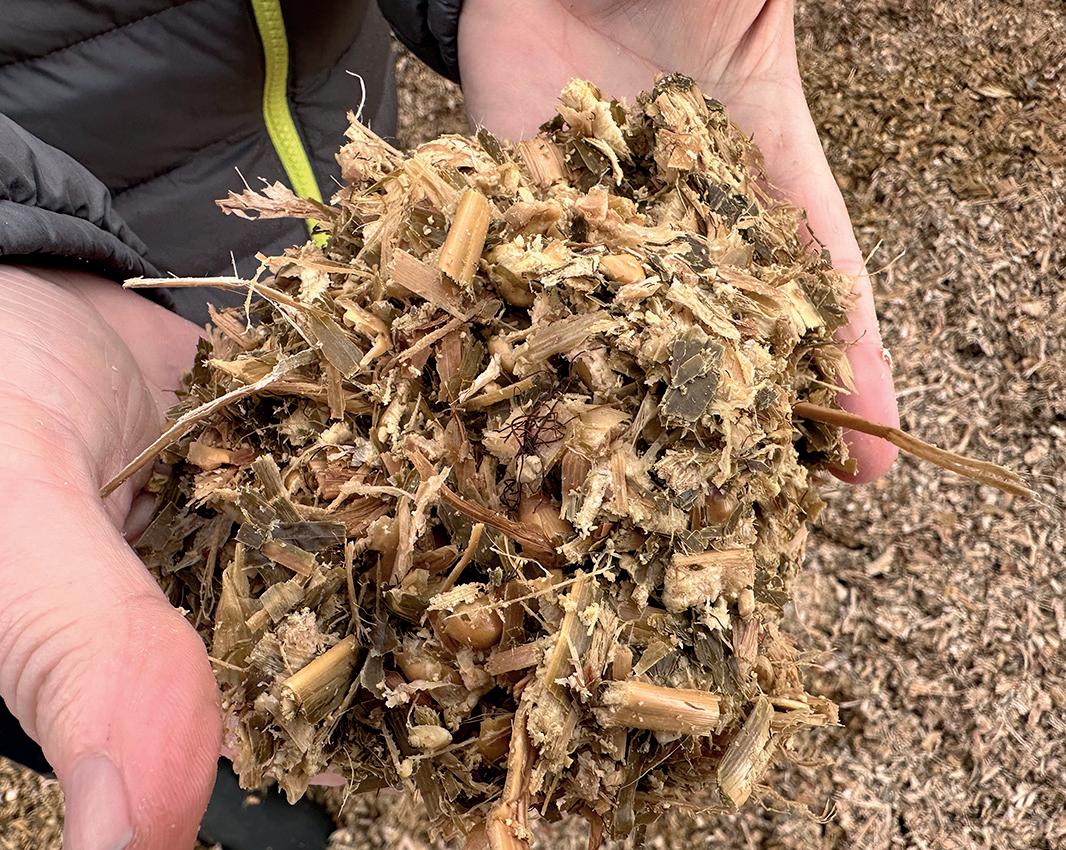
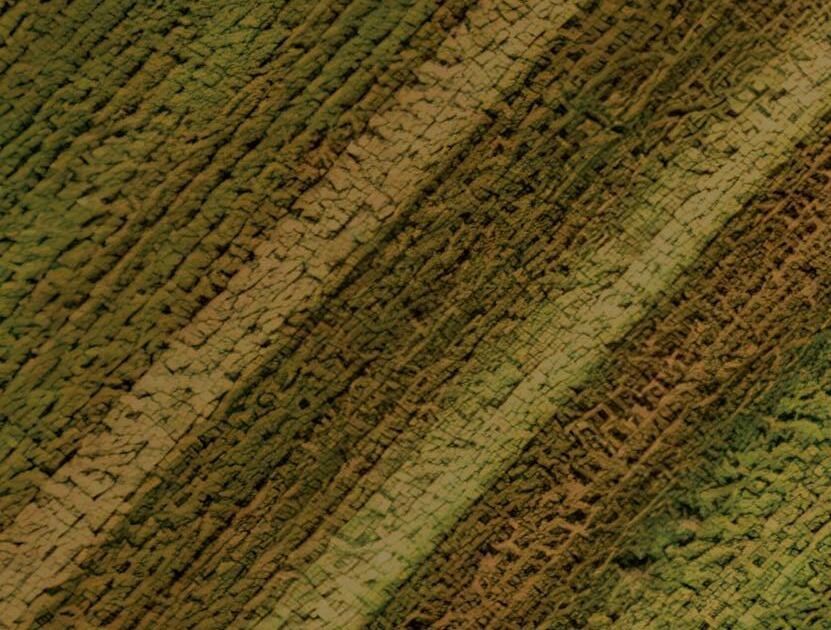



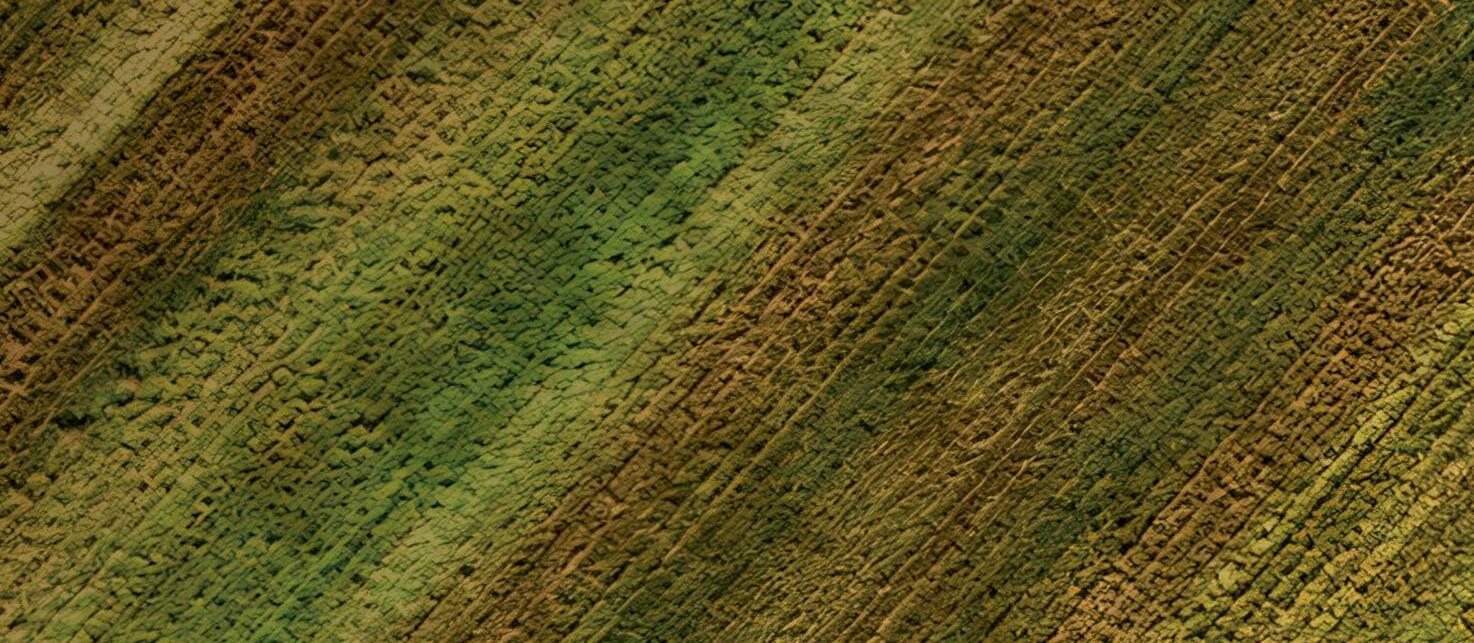

























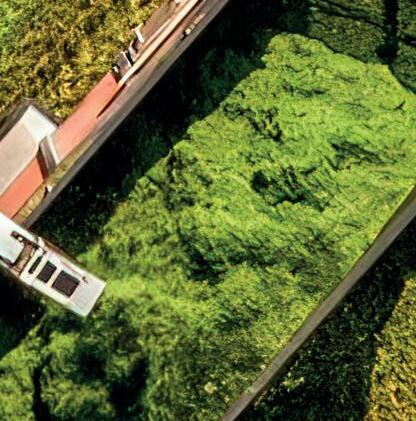












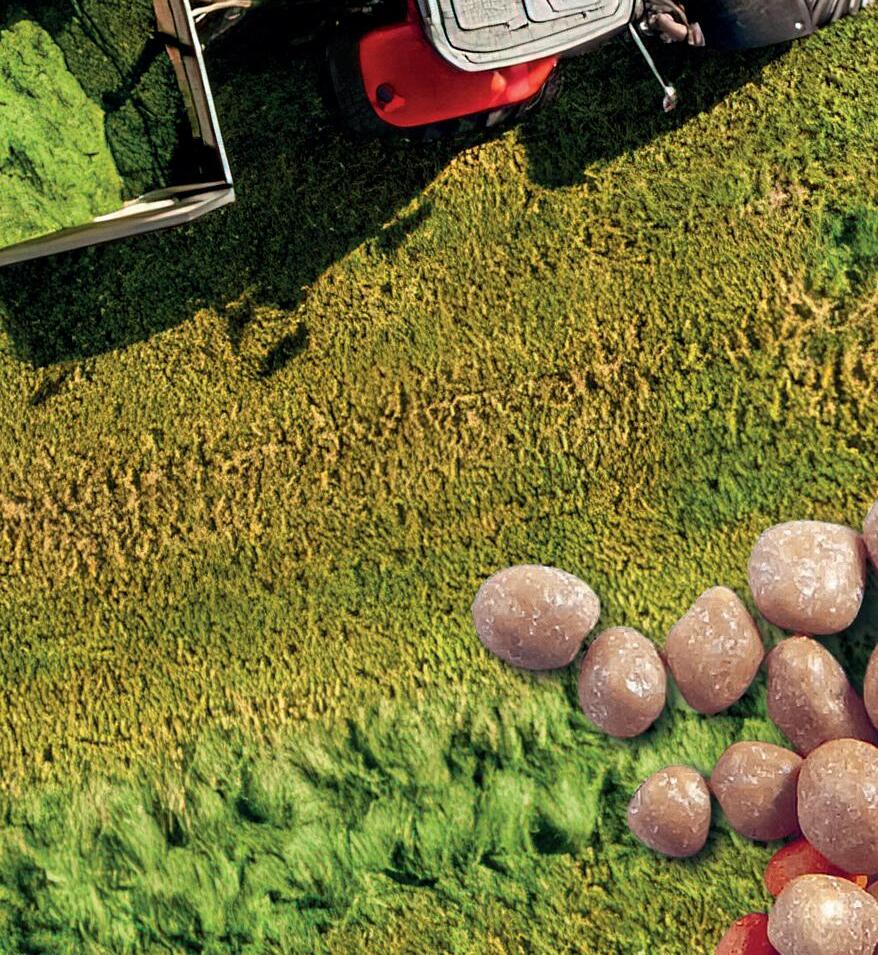


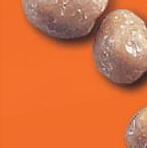
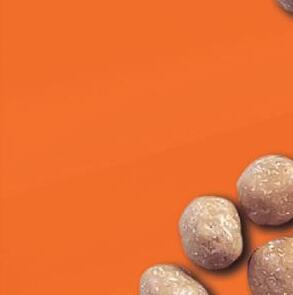


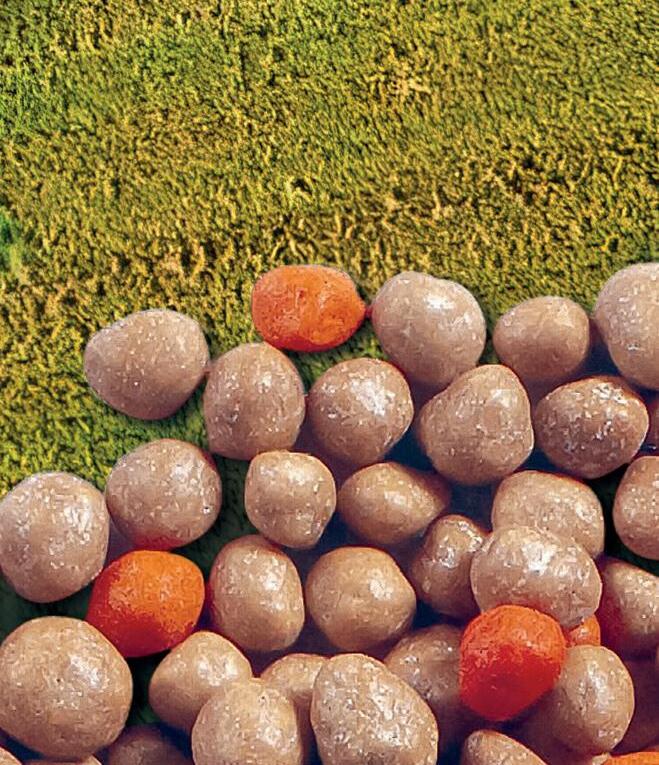


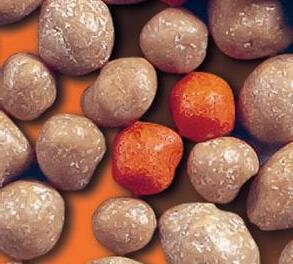
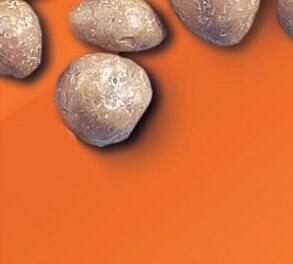

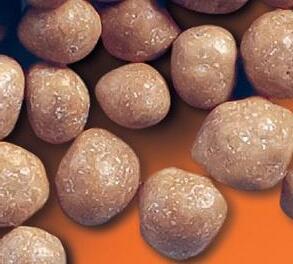


UK Dairy Day takes place on September 11, and once again visitors can expect to see show cows and trade stands, along with live demonstrations and a packed seminar programme.
Jersey judge looking for style
The countdown is on to the 10th anniversary of UK Dairy Day, which takes place at the International Centre, Telford, on September 11, 2024.
e internal and external exhibition areas will host existing and new trade exhibitors, including feed manufacturers, animal health suppliers, vets, milk buyers, dairy and farm equipment suppliers, plus professional service providers and charities.
With more than 280 trade stands and the rst oor Sharing Knowledge Zone, there will be an extensive display of products and services supported with expert advice.
A showcase of new products exhibitors have launched in the past 12 months will feature in the concourse.
As well as the industry panels and seminars, there will be live foot trimming and knife sharpening demonstration from Tim Carter, and Scarsdale Vets with the ‘Beneath the Black and White’ calf painting.
e UK Dairy Day 2024 ca le show will feature six dairy breeds, with a leading line-up of judges who will cast their professional eye over the showring.
e Holstein UK banners will be presented to the Premier
rSeptember 11, 2024; doors open at 8am
rFree entry and parking, with no need to pre-register
rUK Dairy Day is an accredited event with Dairy Pro CPD and BASIS CPD points
rFor more details and to view the live-streaming of the cattle show, visit ukdairyday.co.uk
70 JUDGES Who will be taking to the ring?
Breeder and Premier Exhibitor of the show.
One of the a ernoon’s highlights in the showring is always the presentation of the Holstein UK Premier Herd Award, with the 2024 winner being announced, judged by last year’s winner the Wills family of Willsbro Holsteins.
e full ca le show will be live-streamed throughout the day,
with commentary for those unable to a end.
e internal exhibition area by Hall 3 ca le stalls will feature type classi cation and linear scoring demonstrations for the Ayrshire, Jersey and Holstein breeds.
e demonstrations, by National Bovine Data Centre (NBDC) classi-
ers, will be held at 12.30pm and 2.30pm.
e NBDC type classi cation scheme currently evaluates more than 130,000 dairy and beef animals every year, operating an internationally recognised appraisal system, providing an overall classi cation score for heifers and cows, which can substantially increase their value.
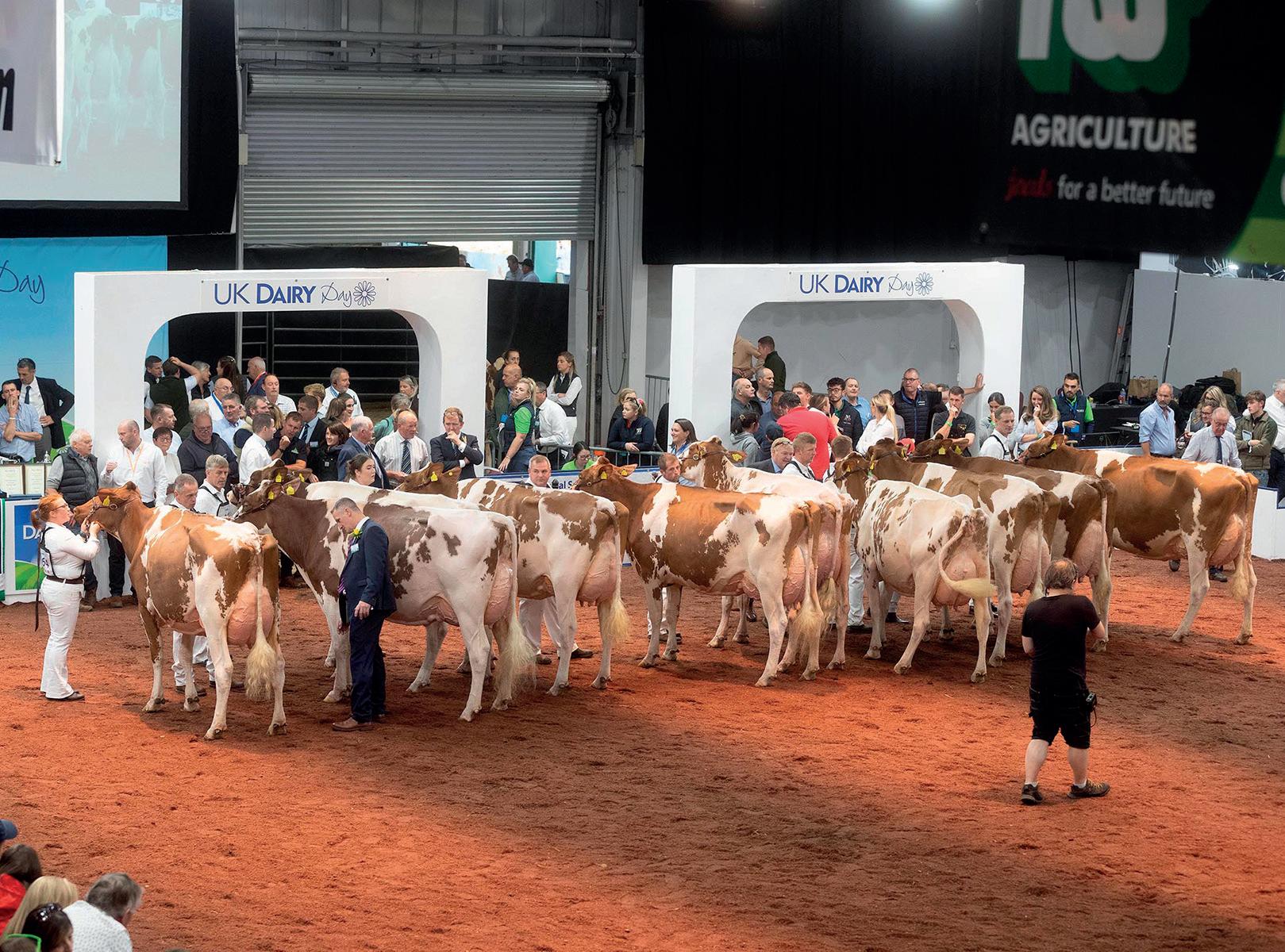

and make the most of the rumen buffer that gets the job done
Maximise milk yield without the risk of SARA with OmyaFeed C MgO, a palatable rumen buffer made from finely ground natural minerals. It can be used as a preventative or curative solution for SARA in high-yielding dairy cows fed a high starch, low fibre diet.
Just 130g of OmyaFeed C MgO per cow per day is required for effective rumen health, compared with more than double the amount of sodium bicarbonate/calcium carbonate mix.
This saves money and creates space in the ration for further feed materials. OmyaFeed C MgO is very cost effective at under 7p/cow/day.
To find out how you can milk the advantages of OmyaFeed C MgO, contact: David Bonsall on 07773 180664 or email david.bonsall@omya.com.
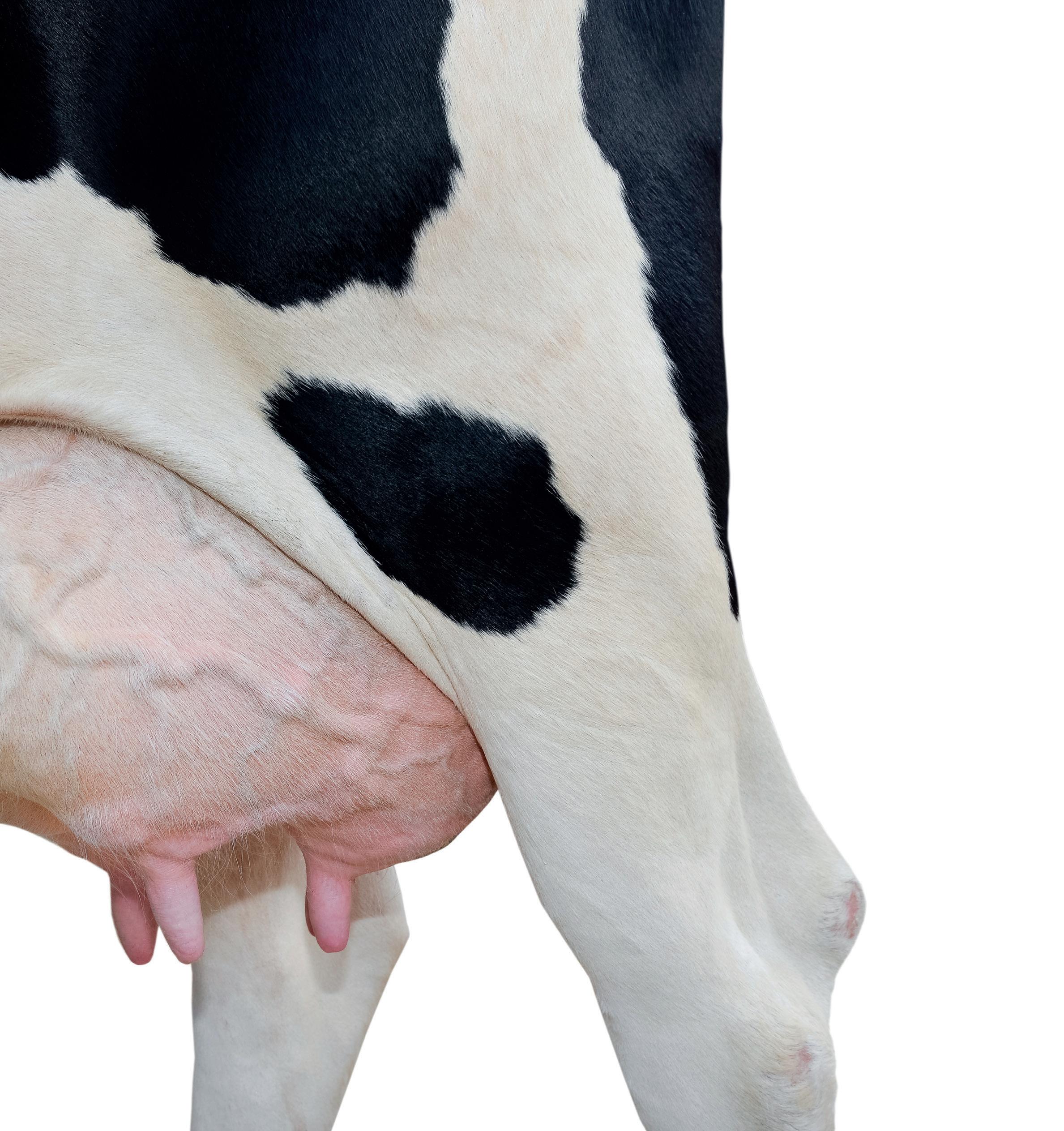

Cumbrian dairy farmer Willie Taylor will be judging the Jersey entries at this year’s UK Dairy Day. Wendy Short speaks to him ahead of his assignment.
After buying a Jersey for a ‘bit of extra interest’, Willie Taylor was so impressed with the breed that he went on to establish the 20-cow ‘Jaytee’ pedigree Jersey herd, which is milked alongside the family’s 80 Holsteins and a flying summer herd at The Harras farm, near Carlisle.
Many producers add Jerseys to their herds to boost milk constituent figures, but this was not the motivation for Mr Taylor.
He says: “I bought my first Jersey cow in 2005 and because she fitted in so well another soon joined her, and the pedigree herd grew from there. The Jerseys have a lot of good qualities. They may be smaller than the Holsteins, but they are definitely the bosses.
“The cows are strong and fit, with good longevity. Some are in their seventh and eighth lactations and they are still making a positive
contribution to the business. They do help to improve milk butterfat percentages for our contract with Arla and that is an added bonus.”
Catching the judge’s eye
The ideal Jersey cow ‘has yet to be bred,’ says Mr Taylor, who also judges Holstein cows. However, he has a clear idea of what he will be looking for when takes to the judging ring.
He says: “I like something that catches the eye. It must have a lot of style, but functionality is also very important. A winning animal should have good feet and legs and correct locomotion. The udder must be well attached, and the body will need plenty of width at the front end. A cow is like a sports car; if it lacks a powerful engine, it will not be able to go fast. Therefore, I will pass over a cow which is narrow in the chest.
“The size of a Jersey cow is lower down on my list of priorities, so leg length is irrelevant, provided
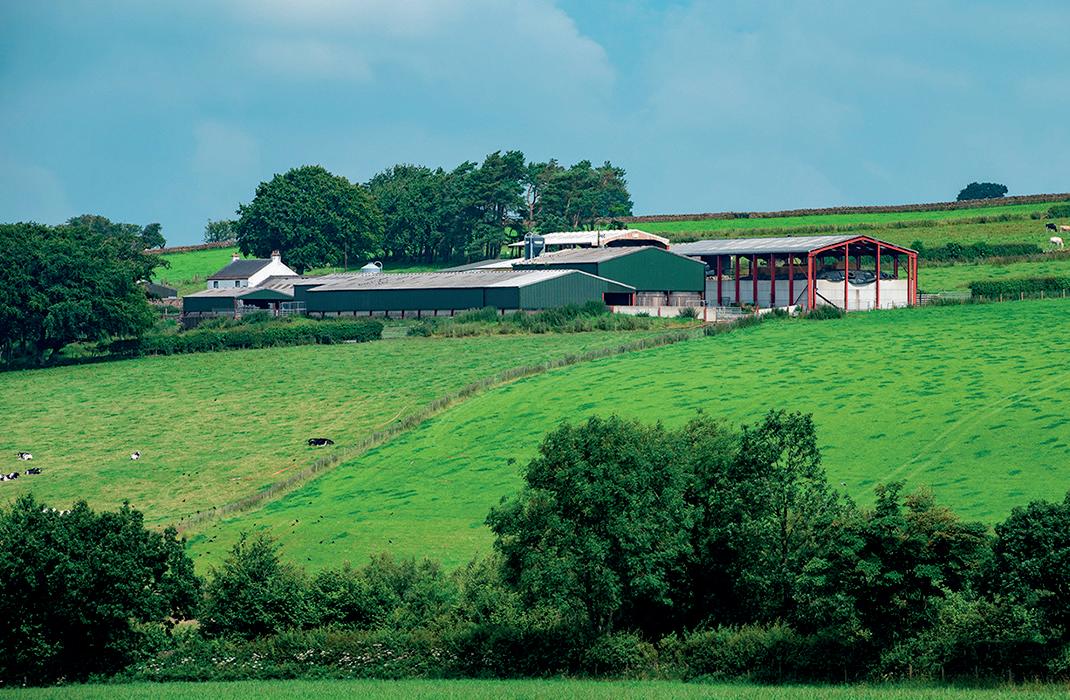
the body has the capacity to turn grass or silage into milk.”
Mr Taylor farms 101 hectares (250 acres) with his mother Evelyn and his nephew Rhys McKie.
The herd calves all year round and is housed in cubicles, with the total mixed ration topped up using concentrates fed to yield in the parlour.
During the grazing season, which usually runs from May to October
or November, cows are housed overnight. Numbers are expanded through the spring purchase of an additional 20-25 head of black and whites which are culled in the autumn. This takes advantage of the summer seasonality milk payment.
Mr Taylor sits on the Jersey Cattle Society judging panel and has travelled extensively in his role, assessing cattle all over the country.
He is also a past chair of the Cumbria-based Lakes Jersey Club. He nds a ready explanation for his strong commitment to being a show ca le judge for the past 25 years.
“I like being around good cows,” he says. “It is enjoyable to travel to parts of the country that I would not otherwise visit and to meet new people, as well as catching up with old friends on the show circuit. I also attend the society’s annual general meetings.”
At home, the family has a long history of showing their Jerseys and their Harras Holsteins at local events, including the Dalston and Skelton Shows in Cumbria.
Bovine TB restrictions have prevented show outings in recent years, and their most recent achievement is a breed championship with a Holstein at Skelton Show in 2018. ey also had a placing with one of the Jerseys at the same event and have taken red ribbons locally on many previous occasions.

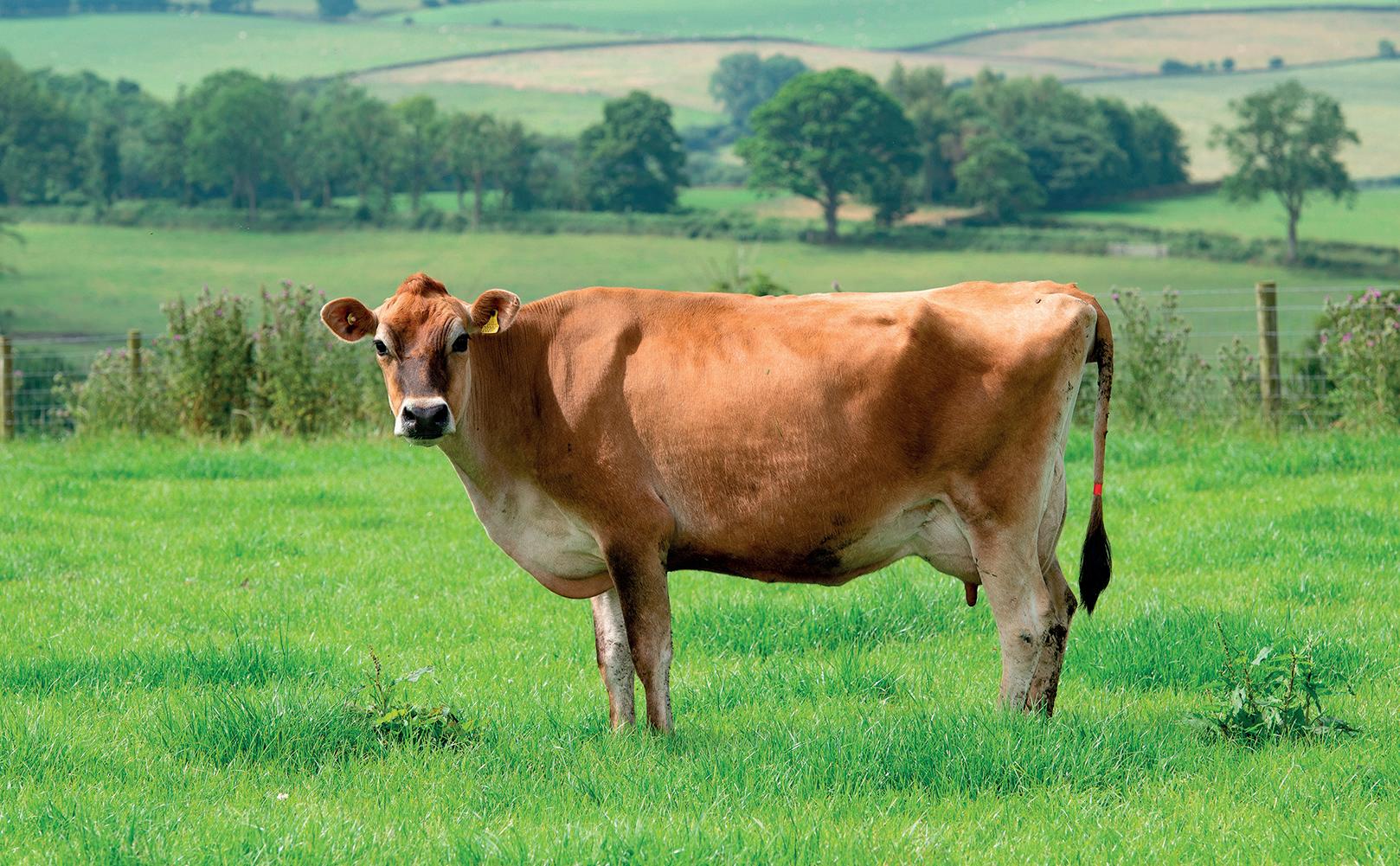
Sexed semen is used extensively on the Jerseys, with the lower end put to a British Blue sire. Among the Jersey bulls used are Rivermead Casino Addiction and Bayview Explore, both of which have calves on the ground. Meanwhile, the rst


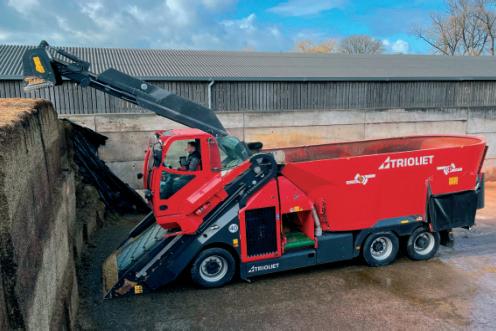
Mr Taylor says: “ ere are plenty of good Jersey bulls to choose from, although one or two that have been
used across the herd have failed to click. at has to be accepted, because it is all part of breeding cows, and it is what makes it such an interesting subject.
“I always study the bull’s dam in detail, as a good cow is the end
Some of the Jerseys are in their seventh and eighth lactation and still adding value to the business.
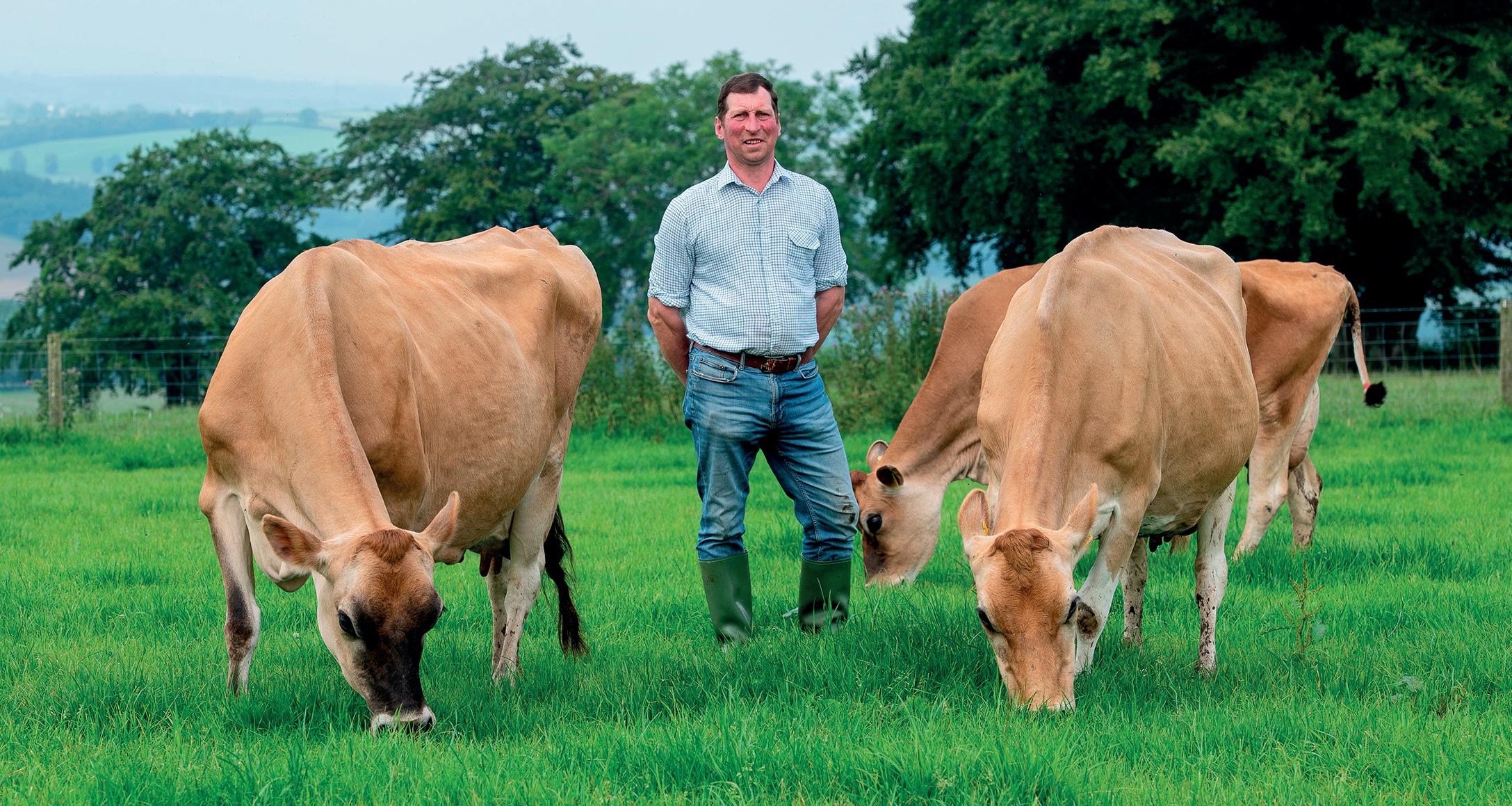
goal. Sire gures are considered, but only if the dam pedigree stacks up.”
Dance, Pet and Eileen are among the main cow families at e Harras.
“Some of our cows go back to the Shellen herd and we also have cows from the Twinkle family, which came from the Bayview herd in Lancashire,” says Mr Taylor.
“Jaytee Precision Fenella was probably the best cow we have ever bred; she won her class at Skelton Show, had good conformation and milked extremely well.
“Her sire, Shellen Precision, gave great performance in the herd. I would describe him as the complete package, with the gures to back him up. Precision was such a tremendous bull that I would like to nd another like him. He o ered a perfect t for our stamp of cow.”
Mr Taylor is not a fan of technology, but his nephew is keen to embrace new ideas and the cows have recently been ed with smaXtec boluses. e product helps with heat detection and pregnancy onset and gives early disease alerts, monitoring rumination, inner body temperature and water intake.
e sexed semen policy has been in place for about six years and AI is carried out in-house, with favourable results for conception rates. Any
Jersey and Holstein calves that are not required as replacements are bucket-fed and move on to group pens containing about half a dozen head. e beef calves are sold weaned at 10-12 weeks old.
Grazing system
e soil type at e Harras is made up of sandy loams and clays.
e elds can be prone to summer drought and Tyfon, a cross between a stubble turnip and Chinese cabbage sown in the spring, is grown as a supplementary feed, to make up for any shortfalls in grass productivity within the rotational grazing system. Wholecrop wheat is also grown as a total mixed ration ingredient on the unit.
In addition to the dairy herd, the farm also carries a ying ock of Texel, Su olk and Mule hoggs. Purchased in the autumn, they go to a Texel tup and are sold with their lambs at foot in May. is summer, the Jerseys will be grazing elds up to 228 metres (750 feet) above sea-level with their Holstein companions. Mr Taylor points to the bene ts of keeping the two breeds.
He says: “I like them both. e Holsteins ll the tank and the Jerseys make up for their lower cull value

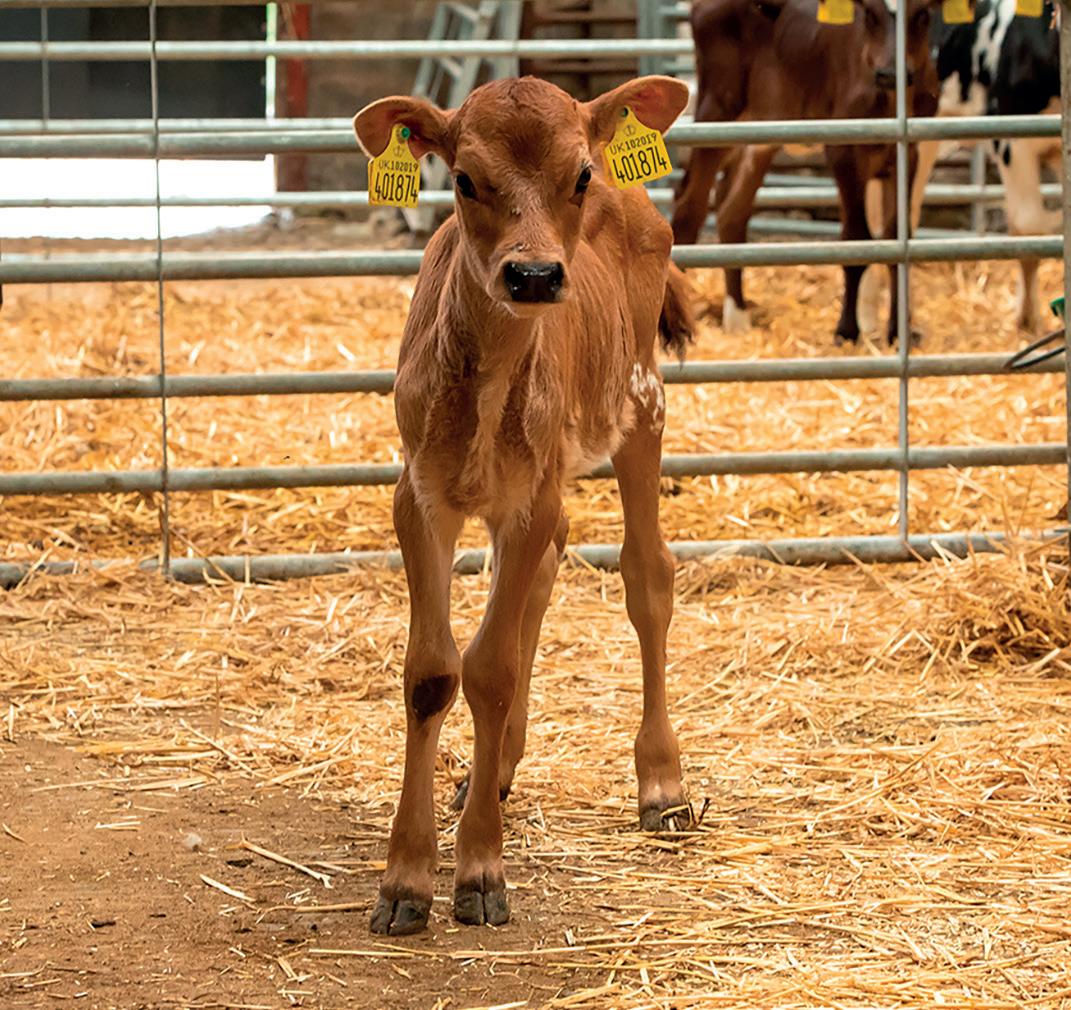
because of their durability. ey each have qualities that match with our farming system. Cow numbers are likely to stay the same into the future, as the farm is fairly tightly stocked.
“ e biggest challenge faced by the business is milk price volatility, but there is li le that we can do about that, so our focus will remain on trying to get the best out of the breeds and on keeping input costs as low as possible.”
rThe average Jersey yield is just under 7,000kg, with the Holsteins at 9,000kg
rHeifers calved at 24 months
rGiven the flying herd, the herd is vaccinated extensively for protection against all the major infectious diseases, including leptospirosis, IBR and BVD
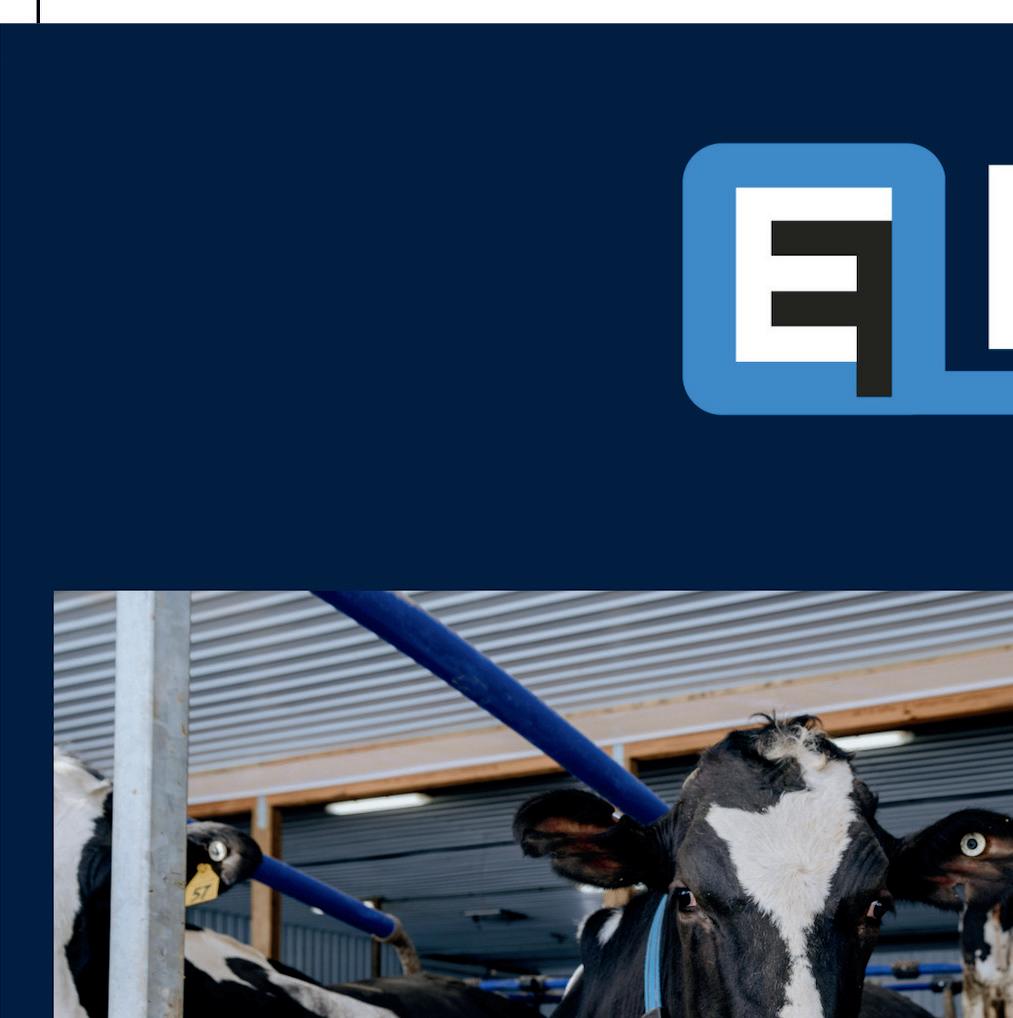
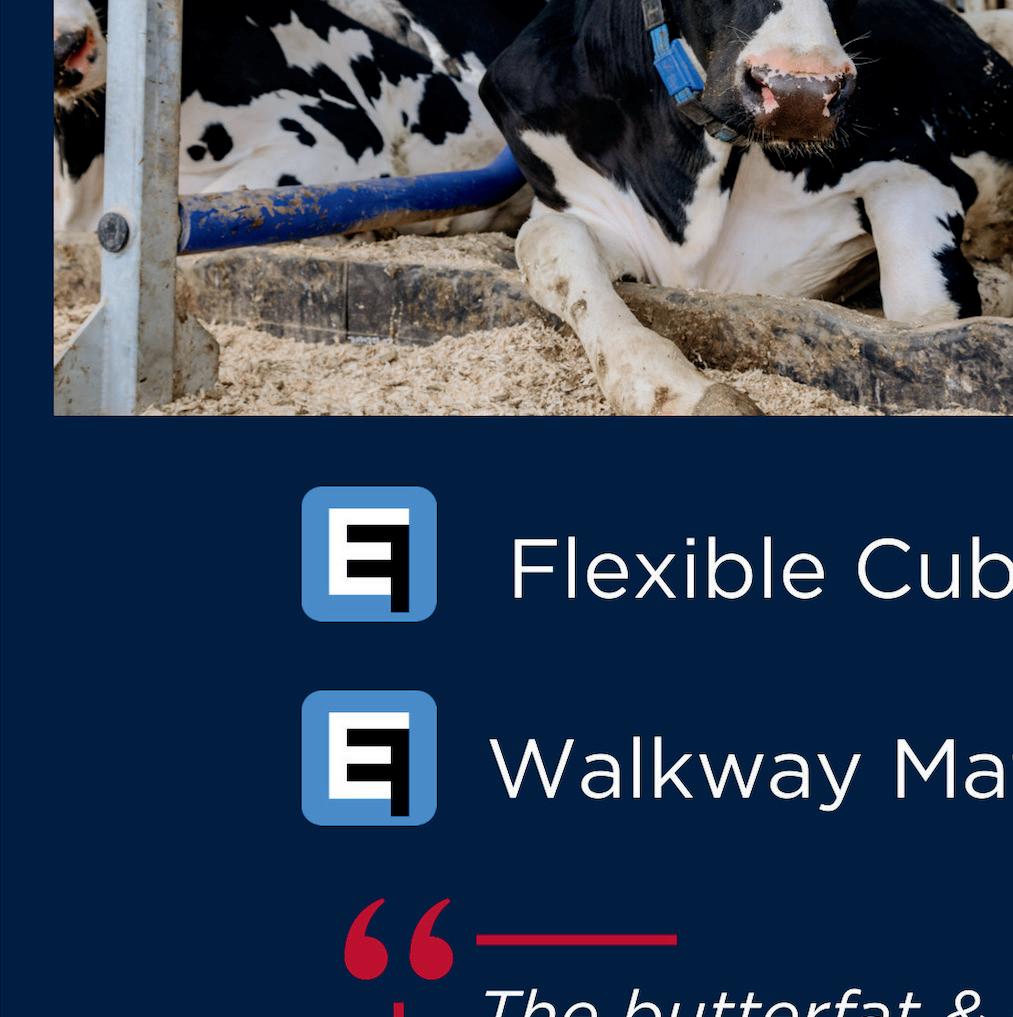

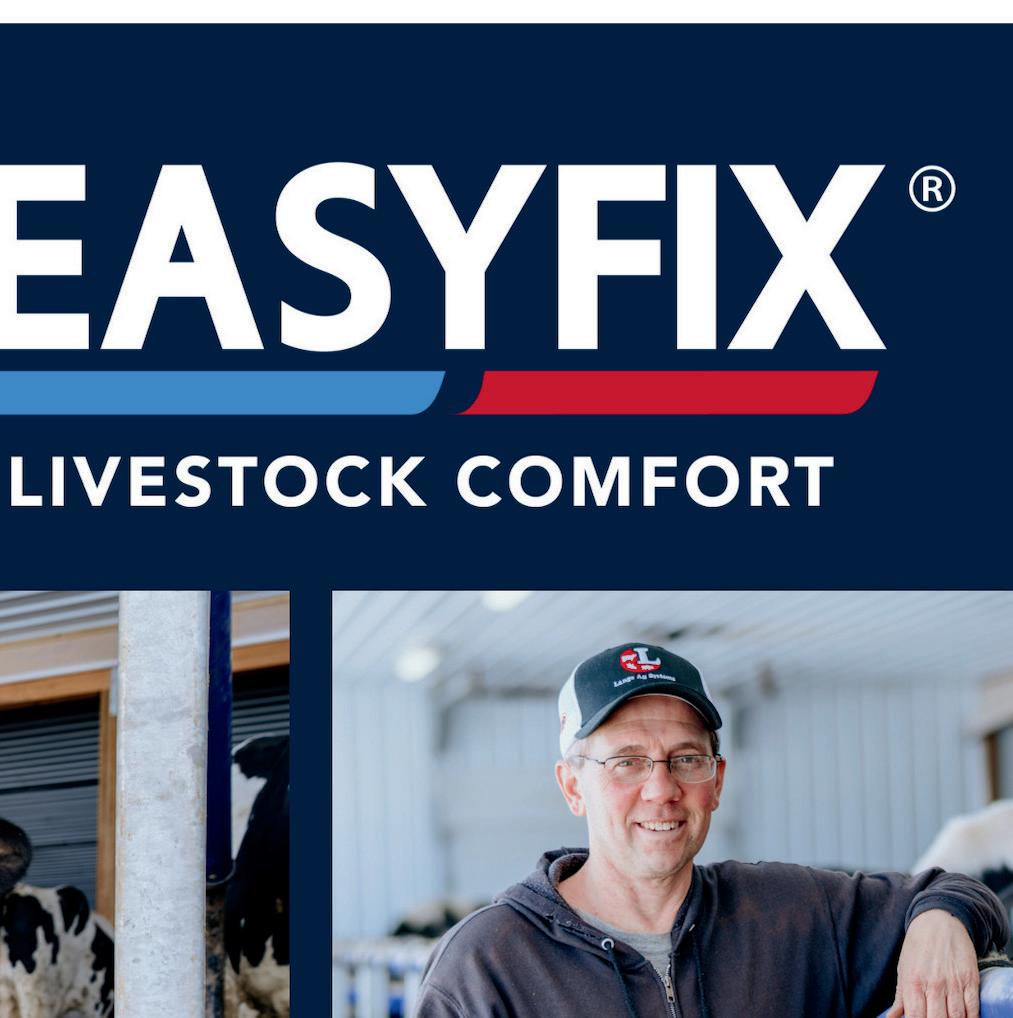







Dairy farmers are being urged to visit Kingshay at UK Dairy Day to learn how to improve farm profit starting with soil health.
Sarah Bolt, technical knowledge exchange manager at Kingshay, says soil health is the foundation of a profitable dairy farm.
She says: “Healthy soils lead to healthy forage, which results in healthy cows making a healthy profit.
“When making a soil health evaluation, there are three core principles: soil physics, which is the physical structure of the soil; soil chemistry, which is the results you will get from laboratory analysis, whether it is a basic package looking at pH, phosphate and potash or a more in-depth option assessing micronutrient levels; the final principle is a more novel approach – soil biology.
“The easiest way to evaluate soil biology is an earthworm count, as worms are an indicator species and act as a proxy for biological activity and diversity. It is straightforward to do; your usual target is to find 25 worms in a spadeful of soil.
“Farmers can assess soil structure at the same time,” adds Ms Bolt, who recently completed the Savory Institute advanced course in holistic management to help support and advise clients in improving soil management.
She also points out that soil evaluations form part of some Sustainable Farming Incentive options, so farmers may be remunerated for doing

The impact soil health can have on a farm’s bottom line will be highlighted by experts on the Kingshay stand at UK Dairy Day. Dairy Farmer reports.
so, but highlights there are also benefits to assessing soil, beyond meeting grant requirements.
She says healthy soil has the right balance of minerals (40%), organic matter (10%), water (25%) and air-filled pore space (25%).
She says: “This is determined by physics, chemistry and biology all working together, which all helps with root development and the ability of the plant to uptake nutrients, resulting in better quality grass.”
A representation of a good soil structure can be seen in action at UK Dairy Day, where Kingshay will be displaying its wormery, which shows soil underneath a mixed species sward of chicory, plantain, white and red clover, black medic, ryegrass and timothy.
Ms Bolt says: “You will be able to see the channels made by earthworms which allow drainage and root penetration on our stand.
“We will have a variety of technical materials plus advisers on hand to discuss our resources and how they can help farmers measure, monitor and manage their businesses.”
Grass quality, whether cows
When making a soil health evaluation, there are three core principles SARAH BOLT
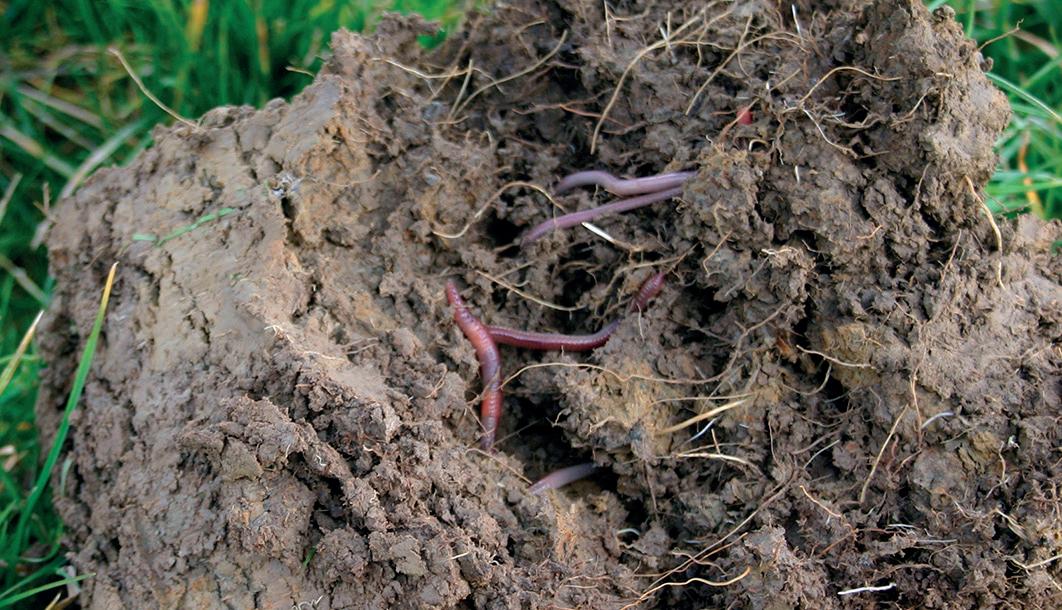
graze it or consume it as silage, improves farm profitability through reducing purchased feed costs.
Ms Bolt says grazed grass will cost 3.5ppl compared to 7.5ppl for silage and 15ppl for concentrate feed.
As seen in the latest Dairy Costings Focus report (see p28), the top 10% of Kingshay costed herds (when ranked by milk from forage) achieve 4,371 litres from forage compared to the average, which achieve 2,691 litres, showing there is room for improvement for most famers.
Ms Bolt says: “Good quality forage also benefits cow health. The mineral profile tends to better match the cow’s needs, minimising the risk of deficiencies.
“High quality grass also meets the cow’s energy and protein levels, which can stop metabolic diseases associated with being in an energy deficit.”
Ms Bolt says the farm vet has a key role to play in helping farmers integrate cow and soil health.
She says: “Your vet can facilitate meetings which involve everyone from managers and owners to casual workers, nutritionists and fertiliser salespeople.
“They can make sure everyone is working towards a shared goal, as farmers often receive conflicting advice and it can be difficult to have a clear direction.
“Farmers can also work with their vet on aspects of cow management influencing soil health. We know that anthelmintics can have a detrimental impact; most farmers are aware of dung beetles.
“However, less charismatic species are also negatively impacted, which results in poorer soil health.
“Faecal worm egg counting and targeted use of wormers are practices your vet can help put into place to improve soil and animal health.
“There are also benefits from some of the plants which are used to improve soil structure and biology. Chicory is high in tannins, so can act as a natural anthelmintic.
“A holistic approach is crucial to getting all aspects of farm business performance right and, in many cases, your vet is the best placed professional to help you succeed.” rFor more details, visit Kingshay on stand F7.
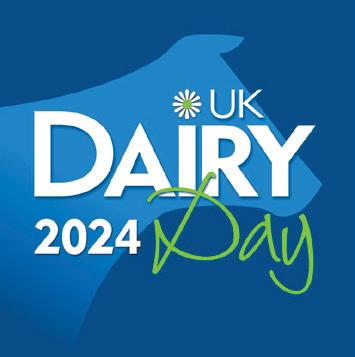
JThe first floor ‘Sharing Knowledge Zone’ will feature four industry panels with leading industry representatives. The hour-long panels will run alongside four seminar presentations, with speakers covering key dairy subjects and each broadcast on screens, plus recordings available to watch after the event.
9.30-10am
rSeminar presentation one: Mycotoxins in grass silage – risk factors and remedies presented by Jessica Webster, Harper Adams University
10-11am
rIndustry panel one: The opportunities – cows
11-11.30am
rSeminar presentation two: Lely’s yellow revolution by Andrew Wilson, sales manager at Lely
11.30am-12.30pm
rIndustry panel two: The opportunities – carbon
12.30-1pm
rSeminar presentation three: Breeding for healthier feet; an update on lameness genetics research and on the role of the
JA new alkaline, high protein, high starch feed material for partial mixed ration/total mixed ration diets, designed to stabilise and enhance rumen function and improve overall feed efficiency, will be launched at UK Dairy Day by Dugdale Nutrition.
Called AlkaProStar, the feed material supplied in ground meal format comprises 15% Home n’ Dry, the foundation
of Dugdale Nutrition’s alkasystems technology and 85% cereal with wheat or barley options, giving a consistent, finished product analysing pH9, 30% CP and 50% starch.
The company’s veterinary technical manager Dr Debby Brown says: “AlkaProStar offers an alternative on-farm straight to rape or distillers this coming season with the added advantage of high levels

UK Hoof Health Registry by Prof Georgios Oikonomouof Liverpool University
1-2pm
rIndustry panel three: The opportunities – culture
2-2.30pm
rSeminar presentation four: Detecting pregnancy in milk presented by IDEXX with vet Owen Atkinson and dairy farmer Duncan Hughes
2.30-3.30pm
rIndustry panel four: The opportunities – costs
rADF Milking is running a competition where the winner will win an ADF automatic dipping and flushing system.
Farmers can enter the competition now online at adfmilking.com/adfcompetition-dairy-day/ or by visiting the stand (H117, Hall 1) at UK Dairy Day and submitting a physical entry form.
Submissions close at 3pm on September 11, 2024, and the winner will be announced exclusively at UK Dairy Day on the ADF Milking stand at 4pm.
of starch to supplement underperforming cereal and maize crops while its high alkalinity will help to neutralise highly acidic grass silages.
“If dairy producers are to maximise their herd’s performance and minimise health issues including the risk of sub acute ruminal acisosis, then introducing AlkaProStar to the diet can improve rumen function by creating a more stable environment and in turn, increase microbial protein production. Rumen function and overall feed efficiency is subsequently improved and producers will find they have more settled cows.”
rAlkaProStar is available in 25kg bags, one-tonne tote bags and bulk from Dugdale Nutrition on 01200 613 118.
rEntries to the new products competition were accepted for new products or services launched into the market between August 1, 2023, and July 31, 2024, by companies that have a trade stand booked or are sponsoring the 2024 event.
Entrants were required to answer questions on the entry form and submit a promotional video with a maximum length of two minutes.
All the products which have been selected as finalists will be on display in the New Product Zone and will be judged on the morning of UK Dairy Day.
There will be a number of practical demonstrations at UK Dairy Day, including foot trimming, black and white’ calf painting, and type classification and linear scoring in the Breed Village.
JTim Carter will be located in the external trade stand area for practical demonstrations on foot trimming, blocking and knife sharpening.
The practical demonstrations on dairy cows during the day will be streamed to a large TV screen with commentary for visitors to see first-hand the detail of the trimming, blocking and knife sharpening.

Ask for Germinal


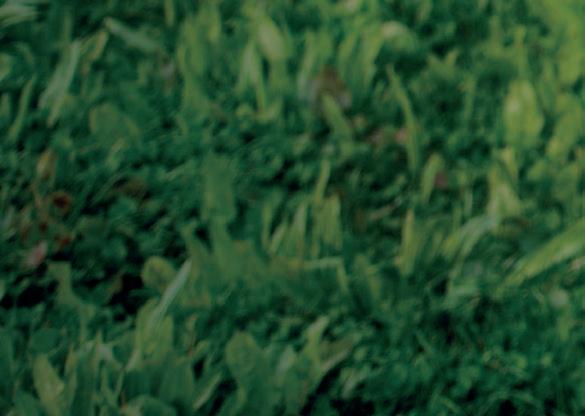
Mr Carter, an instructor and assessor for the RAU /CHCSB Level 4 qualification, will also talk about The Cattle Hoof Care Standards Board, a selffunding non-profit organisation aimed at improving the health, welfare and mobility of the national herd, by ensuring its members promote, achieve and maintain a recognised and validated standard of cattle hoof care.

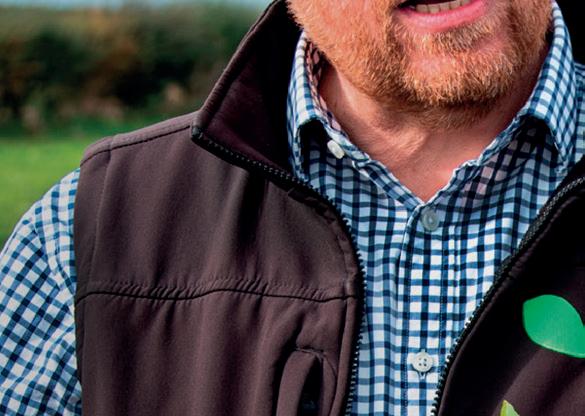
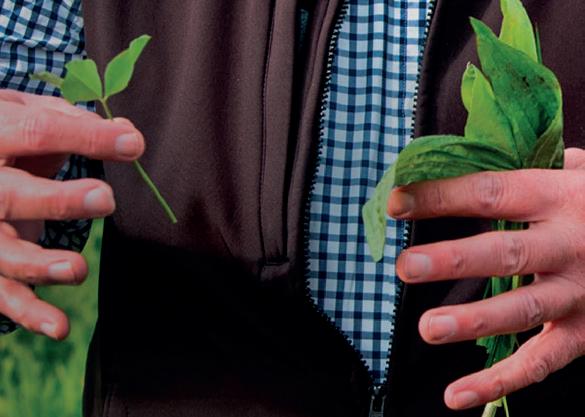
Demonstration timetable
r9.30am Knife sharpening demonstration
r10am Foot trimming in an upright crush
r11am Knife sharpening
r11.30am Foot trimming in an upright crush
r12.30pm Foot trimming in an upright crush and correct application of a foot block

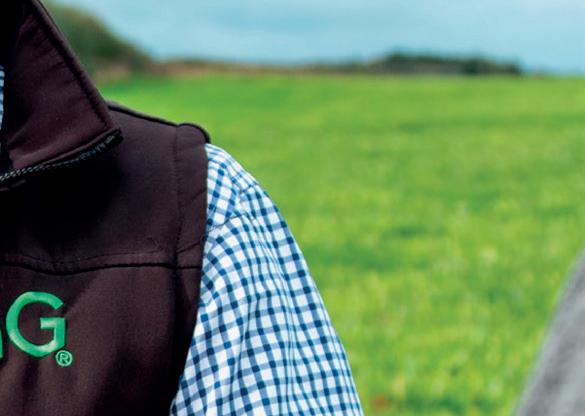
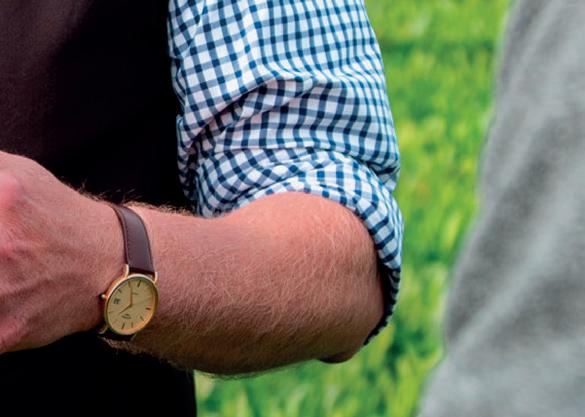
r1.30pm Knife sharpening
r2pm Foot trimming in an upright crush
r3pm The importance of having the right tools for the job – knives and skills
r3.30pm Foot trimming in an upright crush and correct application of a foot block
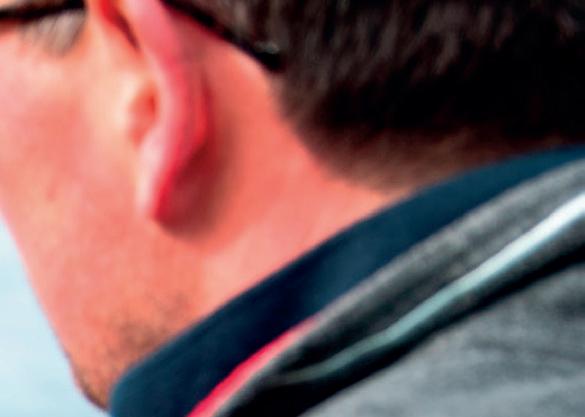


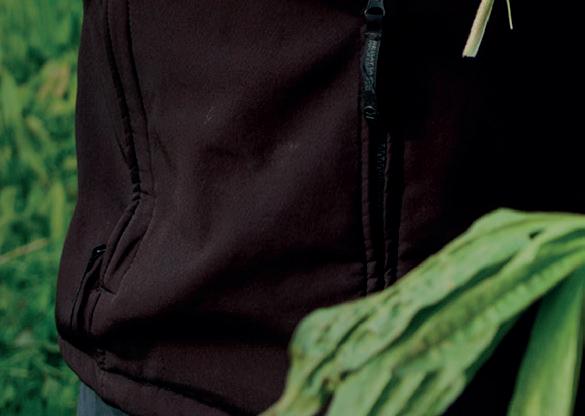

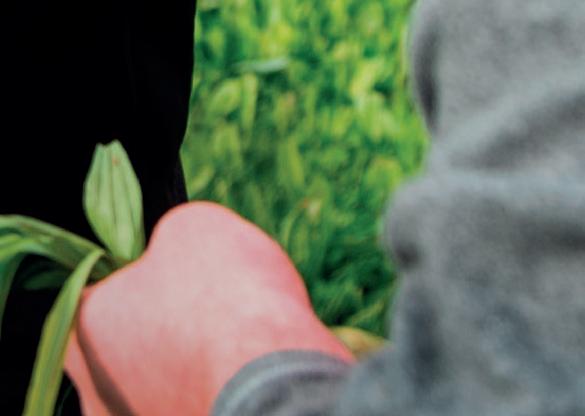





















blocking and knife sharpening, ‘beneath the Dairy Farmer reports.
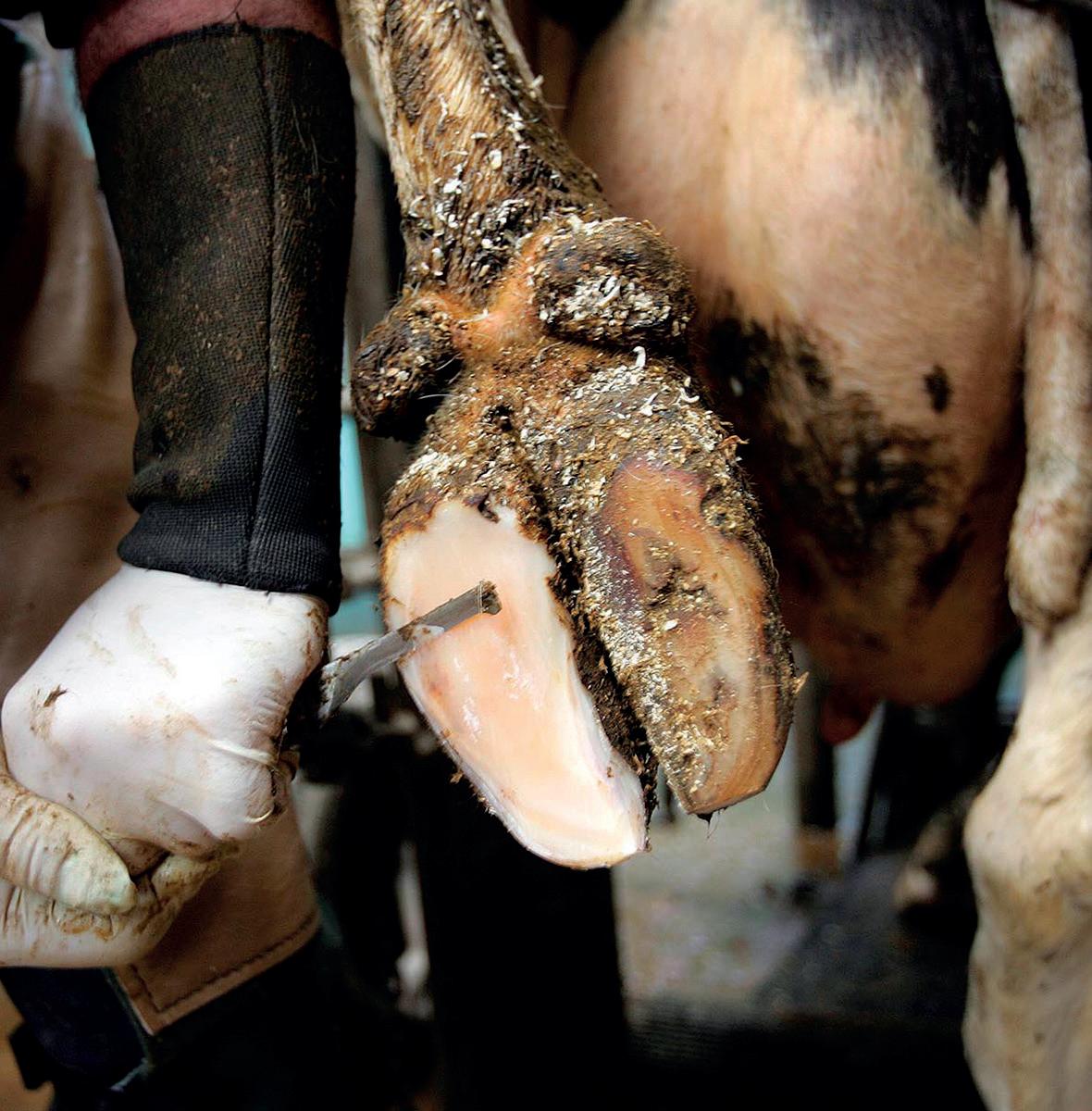

JIn the UK Dairy Day Breed Village Hall 3 concourse, members of the National Bovine Data Centre (NBDC) classification team will run type classification and linear scoring demonstrations. The demonstrations will be held at 12.30pm and 2.30pm.
The NBDC collects, manages, analyses and disseminates data relating to bovines in the UK, including pedigree dairy and beef cattle.
JCarolyn Baguley and the team from Scarsdale Vets will present their innovative and engaging demonstration using paint to visualise and understand calf anatomy. Throughout the day, in the external trade stand area, the
Scarsdale Vets team will use paint on calves to assist in the understanding of calf health and welfare.
The practical demonstration will also focus on twin pregnancies, what causes them and how to manage them.
JUK Dairy Day 2024 is accredited with DAIRY PRO and BASIS or CPD points.
To register for Dairy Pro and BASIS CPD points, please

Principal Sponsor of UK Dairy Day Stand H217
Since 1871, NWF Agriculture has been feeding dairy herds with high-quality, competitively priced feeds and associated products.
we continue to source sustainably, manufacturing and delivering feed to over 5,000 farms from our production sites in Cheshire, Cumbria and Devon.
complete the registration form held on the UK Dairy Day Visitor Information Desk on the ground floor in the concourse.
The UK Dairy Day 2024 cattle show will feature six dairy breeds with a leading line-up of judges casting their professional eye over the showring.
JMarcel Egli of Lucerne, Switzerland, will judge the National Holstein Show.
Mr Egli has judged many shows in his home country, along with international shows in France, Germany and Ireland, and joined the European Holstein and Red Holstein Confederation European judges panel in 2022. He has worked for Swiss Herdbook as a breeding adviser since 2014 and has been an official judge for Swiss Herdbook since 2017.
He is a familiar face at dairy shows across Europe and has been responsible for the show team at Swiss

Holstein Farm, Ptit Coeur Holsteins. In 2020, he took over his wife Fabienne’s farm in Les Breuleux, Jura, where he manages 22 hectares (54 acres) and rears around 60 heifers for his parents and brother. Mr Egli is also a partner in the auction business, Genetics Sale, offering auction services throughout Europe.
JPaul Harrison is a secondgeneration dairy farmer, farming in partnership with his wife Ann. Their herd consists of 30 Dairy Shorthorns and 50 Holsteins, calving all year round.
The Breckney Shorthorn herd was established in 1989 by the Harrisons when they purchased a maiden heifer from the Winbrook herd. The Holstein herd was established in 1958 by Mr Harrison’s parents.
Mr Harrison has shown and judged dairy cattle for over 40 years – first a member of the Holstein Friesian judges panel then a member of the new Holstein Society judges and the Dairy Shorthorn panel. Over the years, Mr Harrison
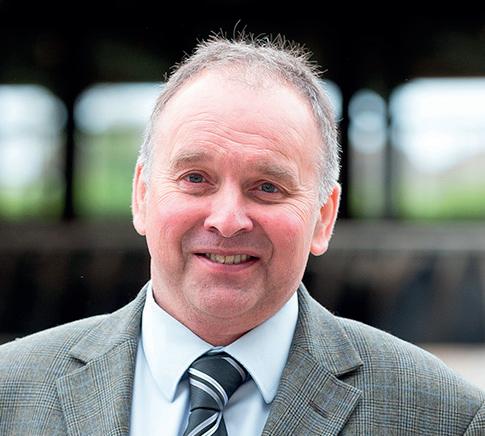
has judged numerous shows, herd and stockjudging competitions, with the highlights being judging the inter-breed group of five animals at the Royal Show, along with the Dairy Shorthorn calves and showmanship classes at the National All Breeds calf show, and visiting Australia twice to judge the Illawarra classes.
JUK Dairy Day will welcome Ian Collins as the judge chosen by the Ayrshire Cattle Society for its National Show. He will also take to the centre of the ring for the Guernsey judging.
Mr Collins is the owner and breeder of the Churchroyd herd after farming in partnership with his late parents. He has been involved with the Ayrshire Society since he was 10 years old where he competed in the young members competitions at the Royal Show. He is an experienced judge,

being on several breed panels, and has judged the Ayrshire calves at the National Calf Show to inter-breed classes in the UK and overseas.
JBlaise Tomlinson has been selected by the Brown Swiss Cattle Society to judge the National Brown Swiss Show.
Mr Tomlinson, along with his wife Deborah, runs the Sandyford herd, comprising 200 Holsteins and 50 Ayrshires in Loughborough, Leicestershire.
The family has been showing cows for nearly 40 years and have won inter-breed titles at the Royal Show, Royal Welsh, AgriScot, Great Yorkshire and Dairy Show, to name a few. They have been premier
JWillie Taylor farms in the Eden Valley, just on the edge of the Pennines, where he runs the Jaytee Jersey herd alongside Harras Holsteins on the 101-hectare (250-acre) farm with his nephew. Willie has judged shows up and down the country in the last 25 years. He is a past chair of the Lakes Jersey Club and a member of the Border and Lakeland Holstein Club.

breeders in the Ayrshire breed for five of the last 10 years.
Mr Tomlinson has judged at many local and national shows all over the UK and Ireland, as well as Australia, South Africa and the Island of Jersey.
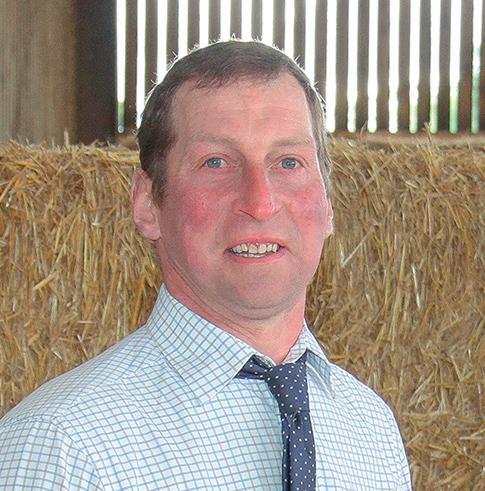
JFor more on Willie Taylor, see pages 60-62.
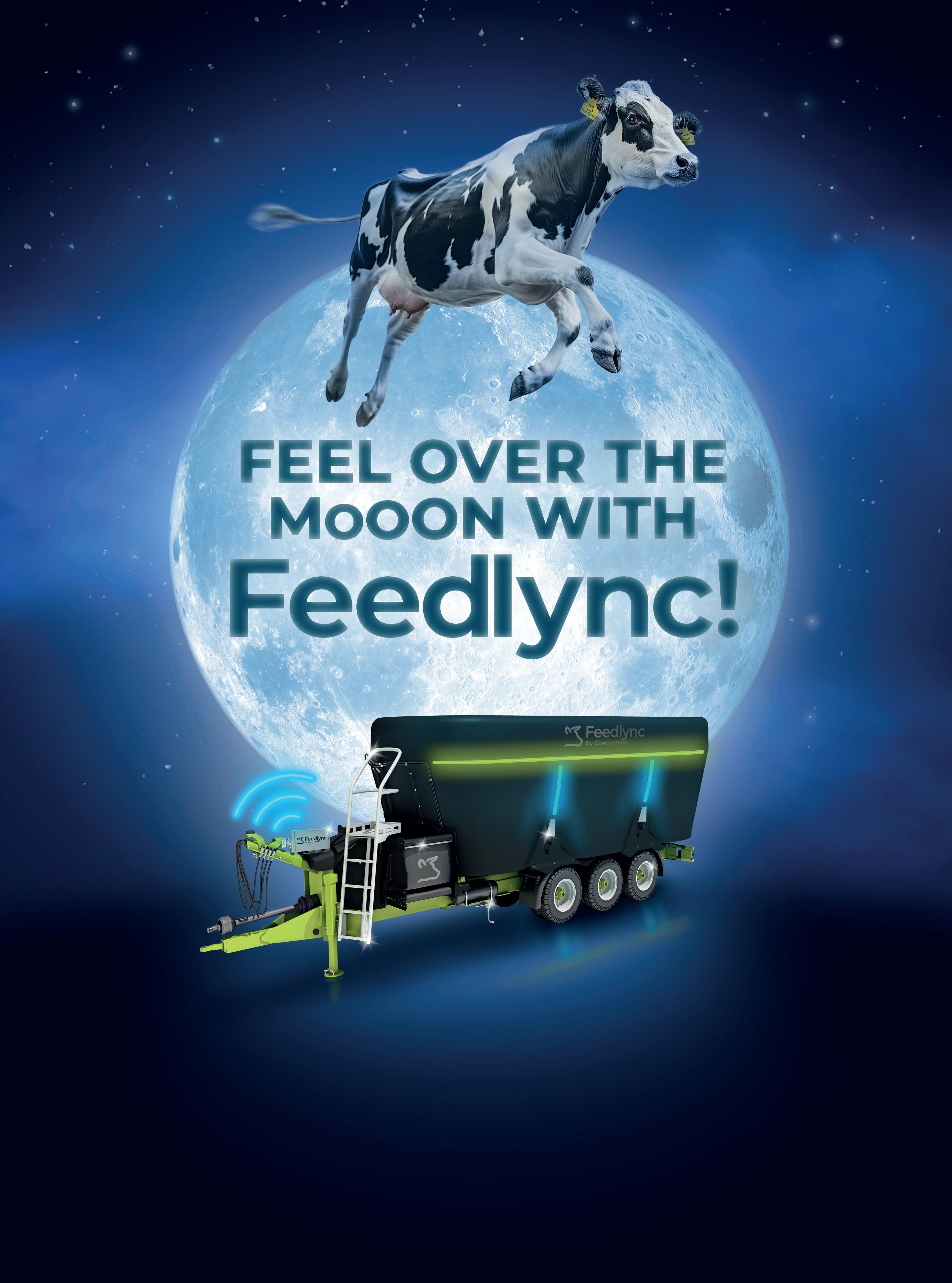
‘Careers’ is this theme for this year’s Dairy Show, which takes place on October 2 at the Bath and West Showground, Shepton Mallet. Dairy Farmer looks at what visitors can expect from the event.
Preparations underway for 2024 show
A passion for dairy cattle and showing
The next generation will be at the heart of this year’s Dairy Show, with a full schedule of competitions and seminars focused on building a bright future for dairy.
Returning to the Bath and West Showground, Shepton Mallet, on October 2, the show will host exhibitors from all over the country who will be competing in a variety of breed classes, before respective champions go head to head for the sought a er supreme champion title.
But before the title is bestowed, the ring will host the next generation of handlers in the showmanship classes for young handlers between the ages of seven and 26. is, followed by the calf classes, will be a chance to spot a few new showing stars.
e Dairy Show will also once again be the venue of choice for the National Shows of the UK Jersey Ca le Society and the English Guernsey Ca le Society.
With the future in mind, the Dairy Show is proud to announce its ‘careers’ theme for this year’s seminars – aiming to take a holistic approach to the industry’s growing need for new minds, perspectives and appetites.
Head of shows Jess Chiplen says: “ e dairy sector – and the industry as a whole – has a wealth


of career prospects. But despite there being an extraordinary breadth of careers, young people and those looking for new career opportunities have o en expressed they are at a loss of where to go for advice, how to get their foot in the door, or even a ord a career change.
“With so many businesses and key stakeholders present at the show, it felt like a prime opportunity for us to tackle the careers topic and work towards dismantling barriers.”
Furthering its reach to young people who reside outside the farm gate, the show will launch its Dairy Discovery Day – linking farming
with STEM (science, technology, engineering and mathematics), with its pilot interactive careers tour taking place at the show.
Education Shows and education co-ordinator
Lilanie Self says: “As we continue to broaden our education horizon, we are excited to be launching a new initiative to Dairy Show, speci cally aimed at key stage two students who are beginning to explore possible career paths.
“ e career choices are limitless, and we are passionate about providing a platform to raise awareness of the breadth of opportunity within agriculture.”
Dairy Show
rWhen: October 2, 2024; gates open at 8.30am
rWhere: The Showground, Shepton Mallet, Somerset, BA4 6QN
rTickets: Advance tickets are available at £20 per adult, increasing to £25 on the gate; students, with proof, will have discounted entry at £15, and children under 15 years old will have free entry; parking is free
rFor more details and to book tickets, visit bathandwest.com/ the-dairy-show




Acid Buf is an efficient and effective rumen buffer derived from calcareous marine algae and is 100% natural.
Stabilising rumen pH levels for a longer time period, its unique honeycomb structure breaks down slowly in the rumen, providing twice the buffering capacity of traditional buffers.


































































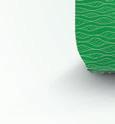

































































































































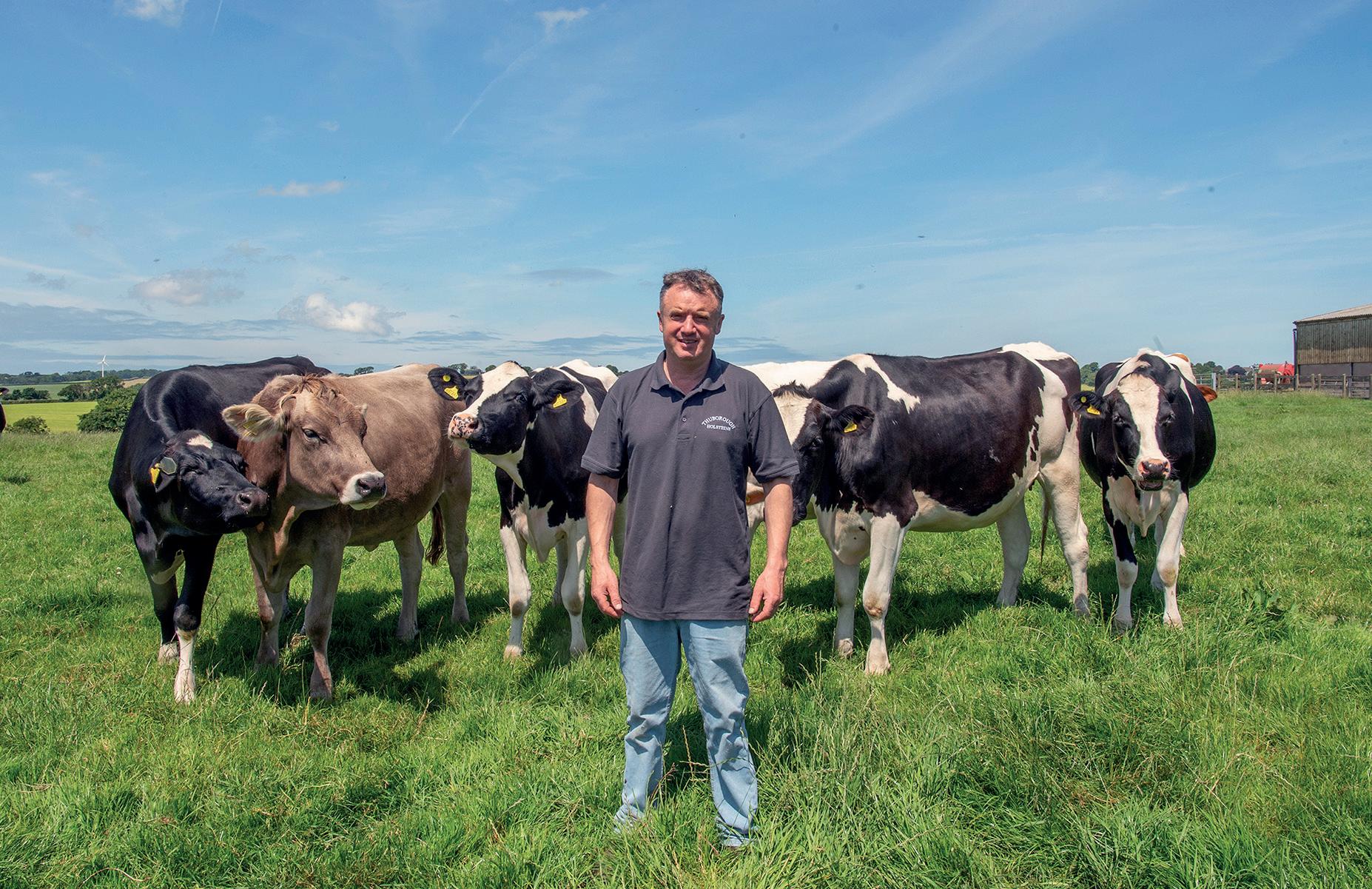

Holstein breeder Roland Ley is evaluating his candidates for this year’s Dairy Show, but he is hoping to clinch a second win in the Holstein lines after taking the red ticket last year. Wendy Short reports.
An ambition ful lled is how Roland Ley describes the Holstein championship win at the 2023 Dairy Show. His senior fourth-calver, the EX95 uborough Freda 610, led her class and went on to take the reserve inter-breed title.
Mr Ley says: “It was always a goal to win the Holstein class at the Dairy Show and it was very rewarding when it was nally achieved with Freda 610.
“Sadly, we no longer have that cow. She had a track record of being unbeaten in breed classes, although she did not always go on to win a place in the inter-breed championships.
“She was probably the best animal I have bred over the past ve years. Her granddam, Freda 520, also did
very well when she was shown in the season of 2019.”
uborough females have also won championships at the Royal Cornwall Show on more than a dozen occasions, with similar results achieved at Devon County Show, he adds. e herd is a previous nalist of the Royal Association and British Dairy Farmers’ Gold Cup.
At home, Mr Ley milks his 300 pedigree Holsteins at uborough Barton Farm, near Holsworthy, Devon, in partnership with his brother Gerald and mother Marion.
e herd’s yield average is 11,000kg at 4.7% bu erfat and 3.5% protein, with milk sold to Saputo for cheese-making.
Mr Ley explains how he maintains high yields, while also maximis-
ing solids production to maximise the constituents element of the contract with the milk buyer.
He says: “ ese two goals are at the forefront of the breeding and feeding programmes.
“Genetics plays an important role and bulls are selected for their potential to produce cows which will give plenty of high-quality milk. At the same time, cows are fed a total mixed ration only.
“Concentrate feed is not o ered, because in my experience, it can lead to acid loading, which in turn depresses bu erfat production.”
e ration for the all-year-round calving herd is made up of a wide range of ingredients in addition to the grass and maize silage.
ese include the maize-derived prairie meal, fodder beet and sugar beet, rapemeal, soya, protected fat,
ground bread, brewers’ grains and minerals.
e Ley family has a long association with the Holstein, as Mr Ley’s late father William was president of the Holstein Friesian Society of Great Britain and Ireland.
Mr Ley says: “My father graded up the herd, a er starting o milking 20 British Friesians in the late 1960s; their history dated back to the second world war and included the Freda family.
“He was an early admirer of the Holstein and established the pedigree herd a decade later, by buying-in bloodlines from all the major countries. He was among the buyers of the rst imported batch of Canadian Holstein semen.
“I have continued the tradition




and, when looking around the herd today, there will be females by bulls from Canada, the USA, France and Holland. Ca le breeding is about picking the best of the best, regardless of country of origin. At the same time, it is important to aim for uniformity.”
An individual mating programme is adopted to balance production or conformation weaknesses, with genomic bulls chosen almost exclusively.
Sexed semen is used on the heifers and the lower end is put to a
British Blue or Aberdeen-Angus. Entire beef bulls and heifers are reared on the farm’s nishing unit and sold deadweight at 12-13 months.
Dairy bulls for arti cial insemination must have a high pro table lifetime index score and ‘decent type’, he says. e farm sells almost a dozen Holstein bulls each year and has sent animals to stud in the past.
Mr Ley says: “Some of the be er Holstein bulls we have used recently are Westcoast Yamaska










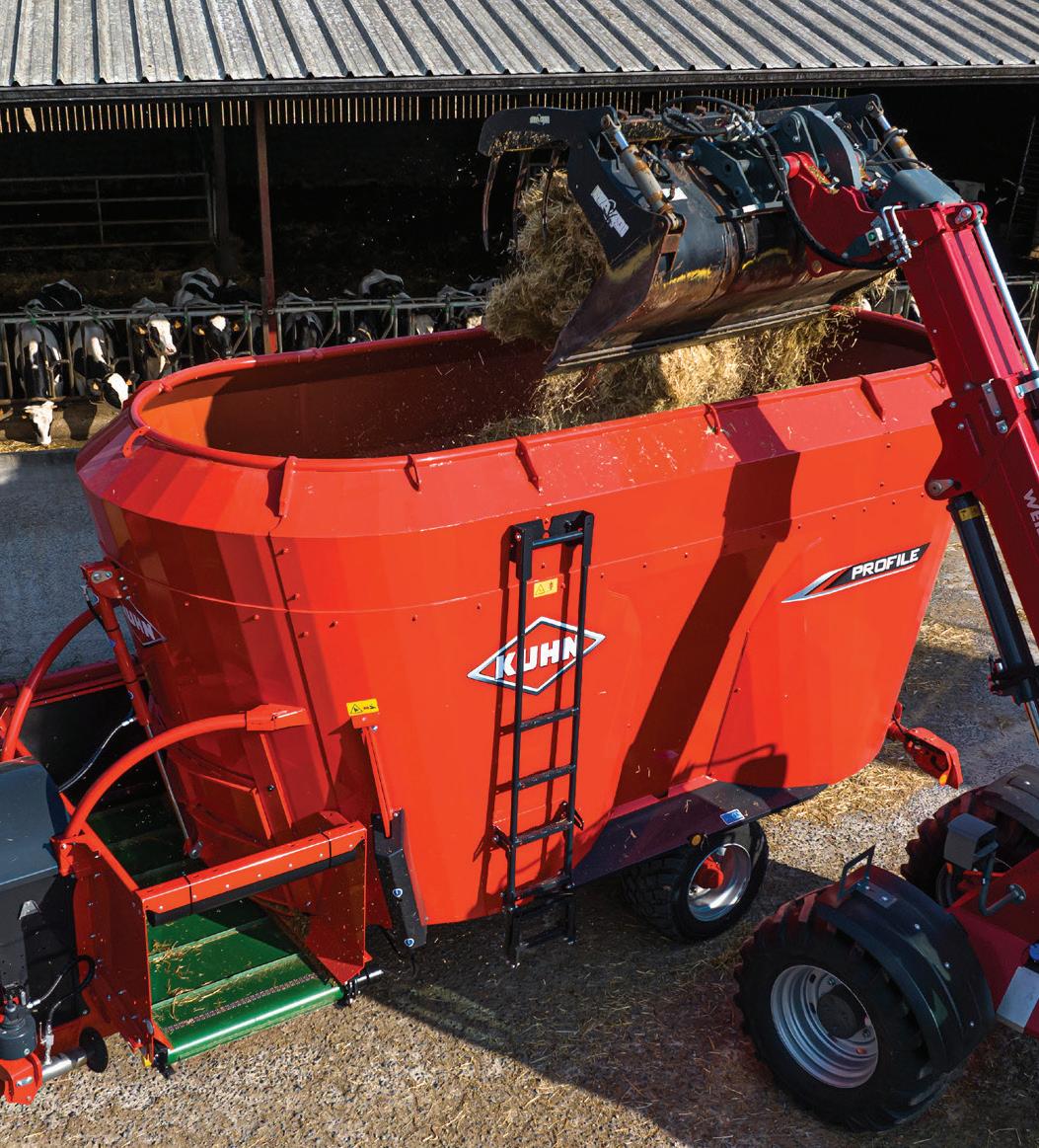

- Trailed mixer/feeder wagons -
PROFILE 1
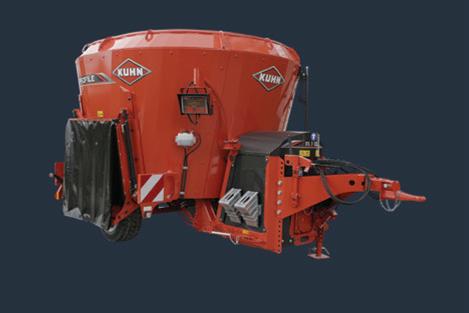
PROFILE 2
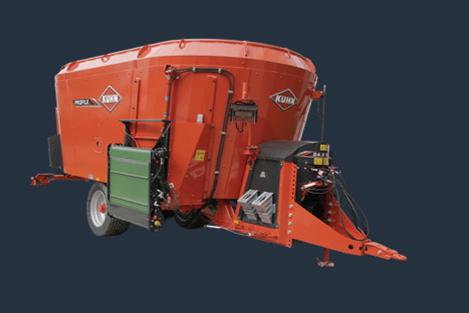
EUROMIX 3

PROFILE AND EUROMIX
• From 8m3 to 45m3 hopper capacities
• Single, double, or triple vertical auger
• Programmable weighing and feed tracking
• Direct side or cross conveyor feeding
and Silverridge Einstein. They have high component figures and have produced a nice, even group of heifers.
“Stantons Adorable has been another good bull for the herd and he sired the winning cow, Freda 610. Two other sires which have been used with some success are Delaberge Pepper and Cal-Roy-Al Jazz.
“About 10 home-bred bulls used to be sold annually, but fewer producers keep live animals today, so the number has declined. Semen from uborough Path nder was quite popular in the early 1990s and he won an award for being the best Holstein in Ireland at the time.
“He was sired by Bear-Path Fantastic, and he also came from the Freda family.
“Individual heifers are not genomically tested across the herd, as I am not convinced the results would be much di erent from the parent deviation gures.
“ e aim is to avoid breeding very tall cows, because they would struggle to t comfortably into the cubicles. e udder must be wella ached, with a nice texture and good venation. e teats should be positioned in the centre of each quarter and slightly facing inward.”
Another desirable trait is for medium-sized teats, says Mr Ley, as short teats will make a heifer di cult to milk.

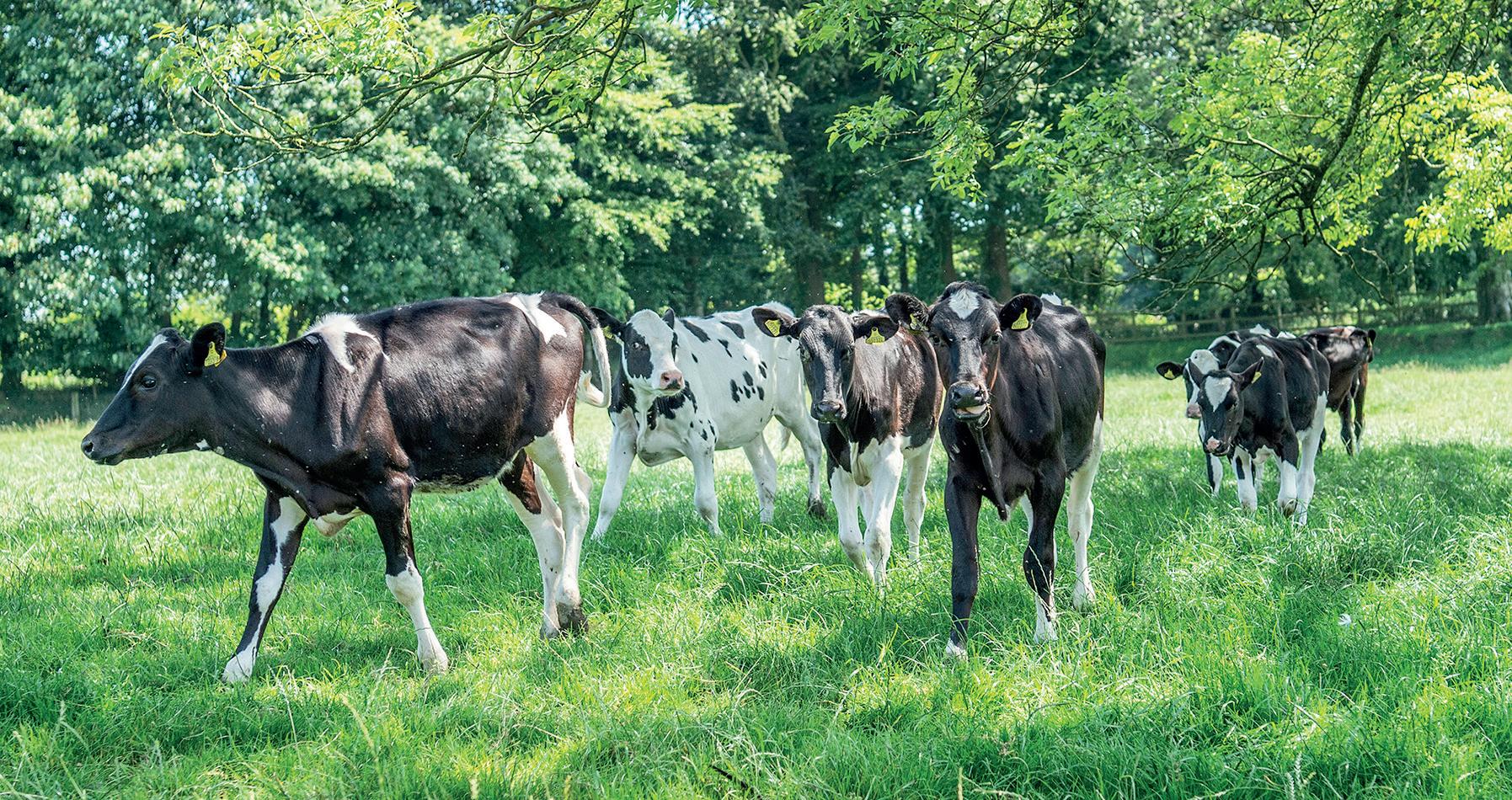
“A wide chest width is desirable in an older animal. She will not be suitable if she looks as if she might blow over in the wind, particularly as she will be expected to produce high-quality milk o grass in summer.
“Nevertheless, I am fairly forgiving of a slightly narrow chest on a heifer, as her conformation will o en improve as she matures.”
Holstein ca le breeding has changed signi cantly, he says.
“A couple of decades ago, producers would return to an exceptional sire for a second crop of heifers.
Nowadays, the genetic turnaround is so rapid that he will have been replaced within a very short period
and producers may turn to his son, or to another new bull altogether.
“ is is not a complaint; it is simply an observation about how rapidly the breeding arena has moved in modern times.
“In my opinion, Picston Sho le is the best bull in living memory.
“His progeny went down the generations and he le behind a very large number of superb dairy cows.”
Mr Ley has been on the other side of the line-up many times in the past, having judged Holsteins all over the UK and the Republic of Ireland. He is also a member of Holstein UK’s Devon Club and is fully commi ed to the breed.
He says: “I think the Holstein

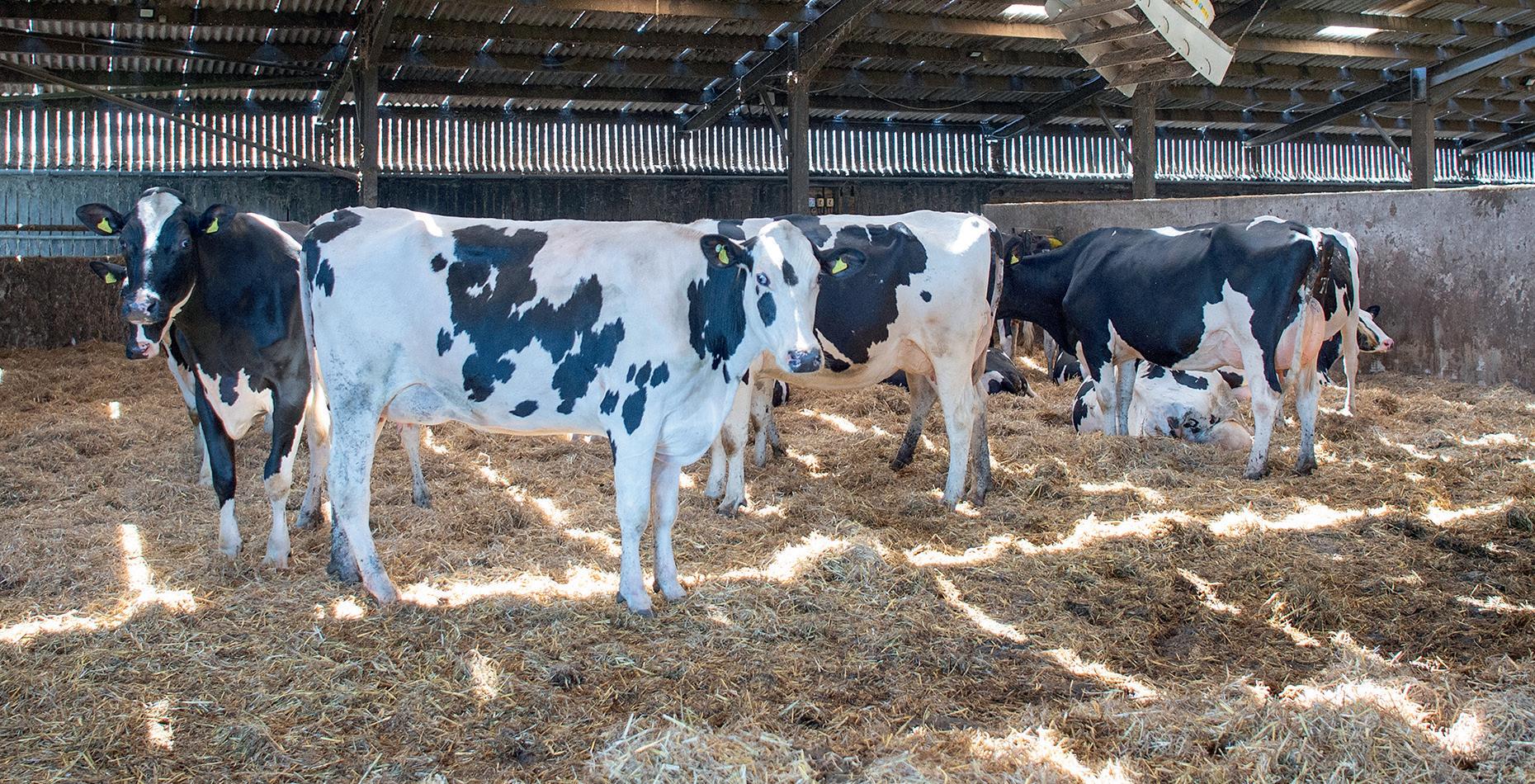
meets all the requirements of the commercial milk producer, as it has the potential to maximise income.
“ at said, the breed must be well managed if it is expected to produce a combination of high milk volume and high component gures.”
He is looking forward to exhibiting ca le at the Dairy Show, which he has been a ending since 1991.
“Whatever the outcome, it will be an enjoyable day out. ere is a lot to see, and I especially like browsing the trade stands to see whether any new dairy equipment catches the eye.
“I hope the show team will perform well at this year’s event, although they will be up against some sti competition.”
rCows are milked twice a day in a herringbone parlour
rThe main herd is kept in cubicles, while high-yielders and show cows are loose housed
rGrazing on the 243-hectare (600-acre) unit is limited to the low-yielders, with 10 paddocks rotated during the season, which usually lasts between March and October
High quality silage is a high energy, palatable and digestible forage which can provide a significant proportion of the nutritional needs of a high yielding dairy cow.

Tim Richmond, maize manager of Limagrain UK, says correct timing of harvest is one of the most important factors influencing the quality of maize silage.
He says: “Balancing optimum dry matter [DM] and plant quality by harvesting when the plant is still green but the grain is sufficiently ripe is key.
“DM should be between 30-35% and starch content about 30%.
“Limagrain’s Maize Manager phone app helps growers with practical guidance on how to assess ripeness of maize crops by assessing moisture levels in the maize stem and the grain kernels.
“Ideally, maize crops should be harvested in September if they have reached sufficient maturity.
“An early harvest reduces the risk of encountering poor weather, meaning ground conditions are dry and adverse environmental impacts can be avoided.
“An early harvest will allow sufficient time to establish another crop afterwards, such as a winter cereal, a cover crop or a grass ley.
“Forage rye is another popular option, as it starts growing early in spring and gives excellent yields when harvested prior to drilling maize.
“The Sustainable Farming Incentive in England now offers a payment of


£203/hectare for the SOH4 Winter cover following maize crops action.

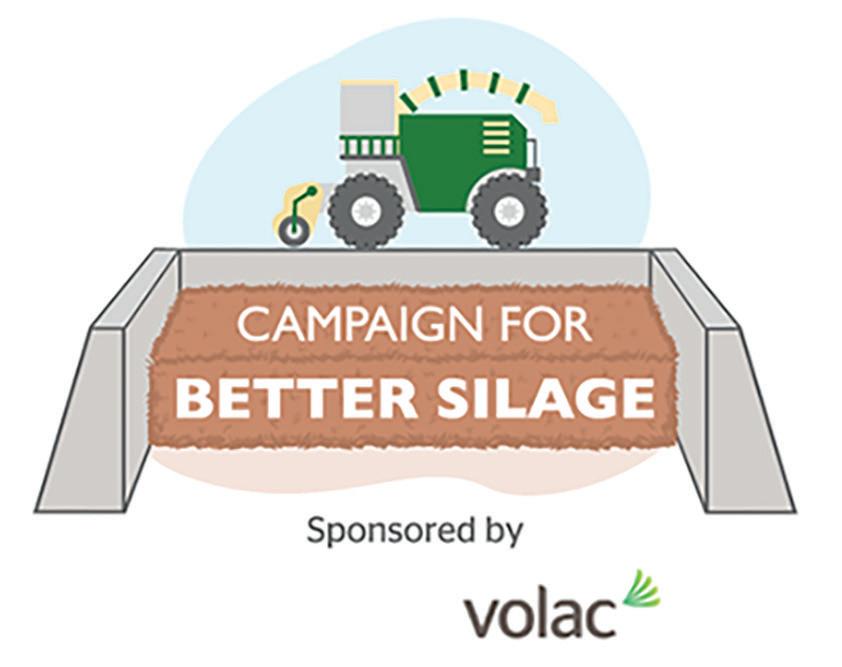



“This is another reason to ensure maize crops are harvested promptly so a cover crop can be successfully established before winter.
“Choosing the right early maturing maize variety in the first place is crucial to achieving a timely harvest.
“There is no longer a yield penalty with newer early harvested maize varieties and starch content and digestibility are equally impressive.
“Our trials show that Dignity, a new LG early maturing variety, has the potential to produce 2.5 million MJ/ha. This is 216,000 MJ/ha more than the non-LG alternative varieties on the Recommended List.
“When converted to potential extra milk value/ha at a value of 35ppl, this equates to an extra £870/ha, which translates into a saving of £364/ha in saved concentrate feed costs.”
Ensuring the maize crop is conserved efficiently is as important as variety choice in terms of the amount of energy, and therefore the quantity of milk, potentially obtainable from 1ha of maize.
Volac silage expert Peter Smith says that otherwise a proportion of the milk-producing potential of maize may be lost.
He says: “Allowing inefficient
Ensuring the maize crop is conserved efficiently is as important as variety choice.




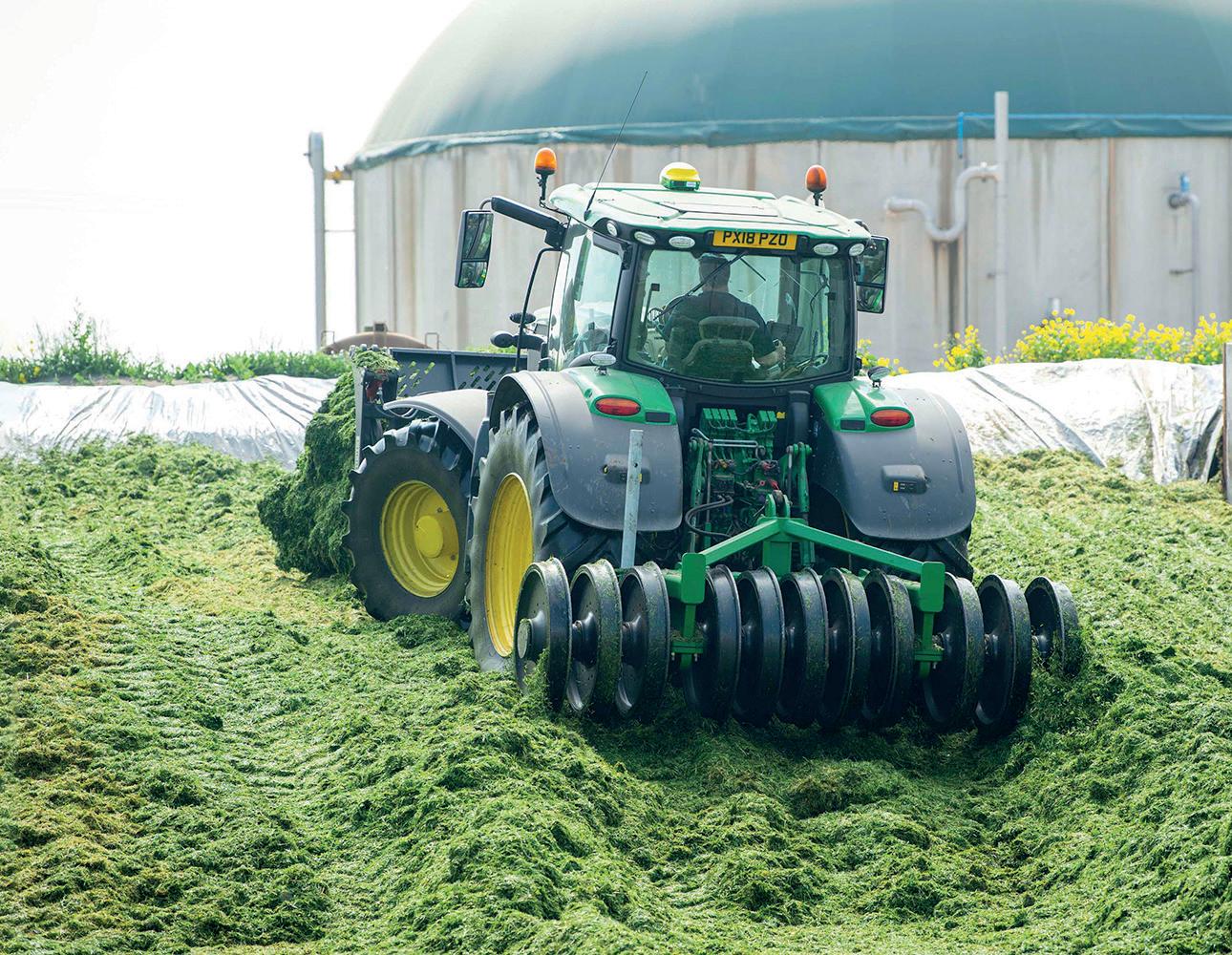
bacteria, yeasts and moulds to feed on maize silage can deplete its energy significantly, because they feed on sugars and starches first.
“As well as practices such as ensuring airtight clamps, additive choice is important because it is vital to stop all three of these unwanted microbes from growing.
“This is why Volac developed Ecocool specifically for maize silage.
“Taking a figure of enough energy in 1ha of fresh maize to produce more than £10,000 worth of milk,
assuming animal maintenance has already been met, the cost of preserving with Ecocool represents much less than 0.25% of the relative milk value.
“With the drive to farm sustainably, it is important to think of a proven additive as key to protecting hard-earned milk output, rather than simply as an extra cost.”

The Rockett family combine their passion for showing different breeds with keeping their Greenway milking herd at Ebsworthy Moor Farm going. Ruth Wills finds out more.
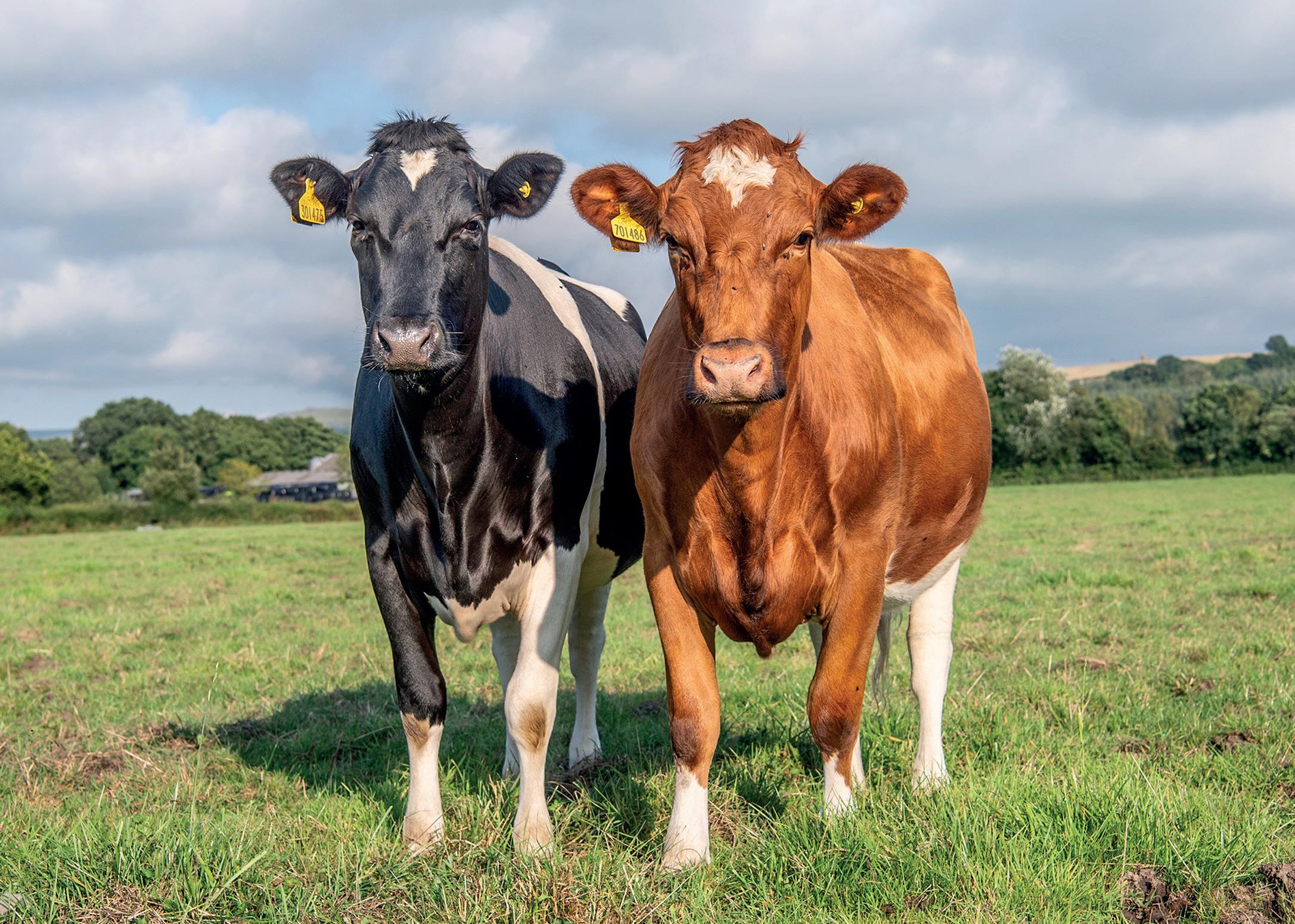

Les Rocke bought Ebsworthy Moor Farm, near Bridestowe, Devon, in 1983 as a bare site.
He says: “I was born on a farm but when my parents divorced, we had to sell the farm but with the few pennies I had I was able to buy the green eld site.
“I built everything up from there; I started by milking 40 British Friesian cross Holstein cows, then slowly increased to 80 cows plus 80 followers.”
Mr Rocke started showing his animals 34 years ago, with his late wife, June. But the foot-and-mouth crisis in 2001 decimated his herd.
“I then bought a whole herd of Friesians from Agatha Christie’s Greenway Estate and kept the Greenway pre x,” he says.
Sadly, June passed away in 2010 but a li le while later Mr Rocke became close friends with Tracy Marshall, whom he later married.
“I used to do the school run with my daughter Abi, and we would stop when the cows were crossing to be milked, or going back out to their eld,” says Mrs Rocke .
“We would stop to talk to Les and June, and then a er June passed, Les asked if Abi would like to do any showing.
“So, in May 2011 we went to the farm and Abi, who was nine at the time, had the choice of two calves. Funnily enough, the calf she chose was Greenway
Matchmaker Colleen and they have been together ever since.”
In 2020, Mrs Rocke had a serious health scare: “I remember we had a TB test that day, but I su ered a stroke – I had a clot stopping blood ge ing from my heart to my brain.
“I was in hospital for a week. I lost my balance and the use of my legs. Once I was home again Les helped me get back out to the farm by using a walking frame – I looked like I had escaped from an old people’s

home when I was waiting for the cows to cross the road.
“But I have bounced back. It took a while and I still get anxious that it will happen again. e hole that was le in my heart was mended and I would say I am 98% recovered.”
e couple were married in December 2022 and now show as Les and Tracy Rocke , and Abi Marshall.
ey milk 65 cows with 40 followers of ve di erent breeds; Holsteins, Ayrshires, Jerseys, British Friesians and Guernseys.
“I like my British Friesians and Jerseys, Abi likes Holsteins and Ayrshires, and Les likes Ayrshires and he is warming to the Holsteins but we all have a so spot for Guernseys,” Mrs Rocke says.
All cows are served with AI: “We always used to use proven bulls, then we dabbled in genomic tested bulls but we have found proven bulls suit us be er – it is just truly knowing what you are going to get rather than just looking at gures. When we are choosing a bull, we look for good feet and legs, mammary system, temperament, fertility, bu erfat and protein.
“We use Ayrshire Ca le Services, Cogent, Genus and Semex

Farm facts
rMilking 65 cows with 40 followers
rArla contract
rYielding 7,400 litres a year on average, at 4.7% butterfat and 3.5% protein
rTwo part-time relief milkers
r56 hectares (138 acres), all grass
rSix abreast milking parlour
rDiet consists of concentrates in the parlour, grazing in the summer and round bale silage in winter
to compare the bulls, and Blondin Sires to buy the semen.
“We calve all year round, which can be a li le stressful and we are not ge ing any younger, so over the past year we have been pu ing a lot to beef and selling the calves at a month old.”
e trio made their showing debut at Liskeard Show in 2011: “We have been doing all the shows we can since then, between 12 and 15 every year,”
Mrs Rocke says.
“Abi has been well and truly bi en by the showing bug and
Protect and enhance your herd’s teat condition during the warmer months with Neogen teat care products.




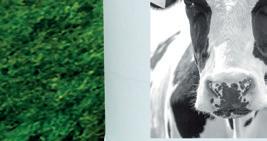
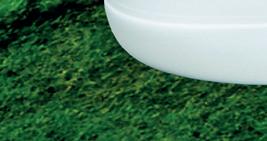









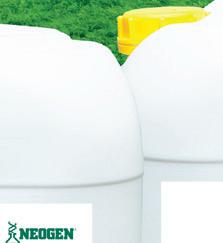

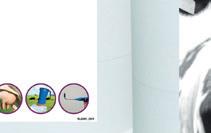







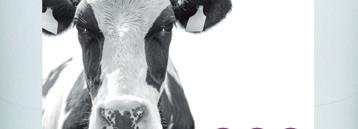
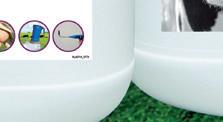
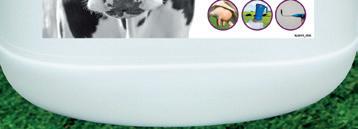
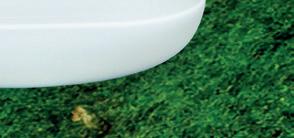
has gone on to travel with her showing skills. She won a trip to Toronto Winter Fair in Canada, with the National Young Stars competition, and she has represented Devon and Cornwall at the All Breeds All Britain [ABAB] Calf Show,” says Mrs Rocke .
“She has always been competitive, and Les’ passion for showing has really rubbed o on us both. e rst time we went to the ABAB Calf Show, Abi was with the Holstein Club representing Devon, so I went wandering around the British Friesians and talking to the breeders – they all said we should bring some Friesians next time.
“So, the following year, we went out to the eld and picked out a calf. We had her halter broken in six weeks, then went to the ABAB Calf Show and won champion calf.”
Miss Marshall has also started milking cows locally. “Even though she has le home, she’s only ve minutes away so helps us out with show preparations and showing,” says Mrs Rocke . “ e long-term plan is for her to come home when she is ready.”
e couple love to educate the public and the next generation about farming.
“When Les is at the shows he likes to get the public and the youngsters involved; it is surprising how much people do not know,” she says.
“We go to the Bath and West showground in April for the Field to Food Day, which is a day when primary schools are invited to the showground to learn about farming and where their food comes from. We take cows and the children love stroking them.
“ ey all have personalities and names; we are so a ached to them all, even the di cult ones,” says Mrs Rocke .

The 65-strong milking herd yields 7,400 litres a year on average, at 4.7% butterfat.

eir show team also has some strong accolades.
“Last year at the Royal Bath and West Show we won supreme dairy champion with Greenway Ross Great Jubilee, or Granny as we call her.
“Then this year she had reserve supreme at Devon County Show, before taking reserve dairy aupreme at Royal Bath and West Show, and supreme champion at Liskeard Show,” says Mrs Rockett.
“We also had success at North Somerset Show this year with Greenway ea taking supreme champion and champion of champions.”
e Dairy Show is a rm favourite, and the family are hoping to take a big team in September. “We will take Ayrshires, Holsteins, Friesians and maybe the odd Jersey, as it is the Jersey national show,” says Mrs Rocke .
“We have had several wins at the Dairy Show; last year we had any other dairy breed champion with Greenway Solo Billie Jo, with Greenway
Bombardier Billie Jean as reserve champion. An honourable mention went to Greenway Billie Jilly – Billie Jo’s daughter. And an Ayrshire, Greenway Platinum Jubilee, took reserve champion in the any other breed calf class.
“In 2022 we had champion Guernsey with Autumn Gold Li le Lady Duchess. We love the Dairy Show because it is a great atmosphere and a nice show.”
Miss Marshall says: “In a show animal we look for
depth of rib, openness of rib, width through the front and a nice deep body.
“Teat placement and depth through the udder are also important.”
e family plans to continue showing. “We will show as long as we can, and when we cannot, we will support Abi –I think it will always be in her bones,” says Mrs Rocke . “It is lovely watching her and we feel really proud.”
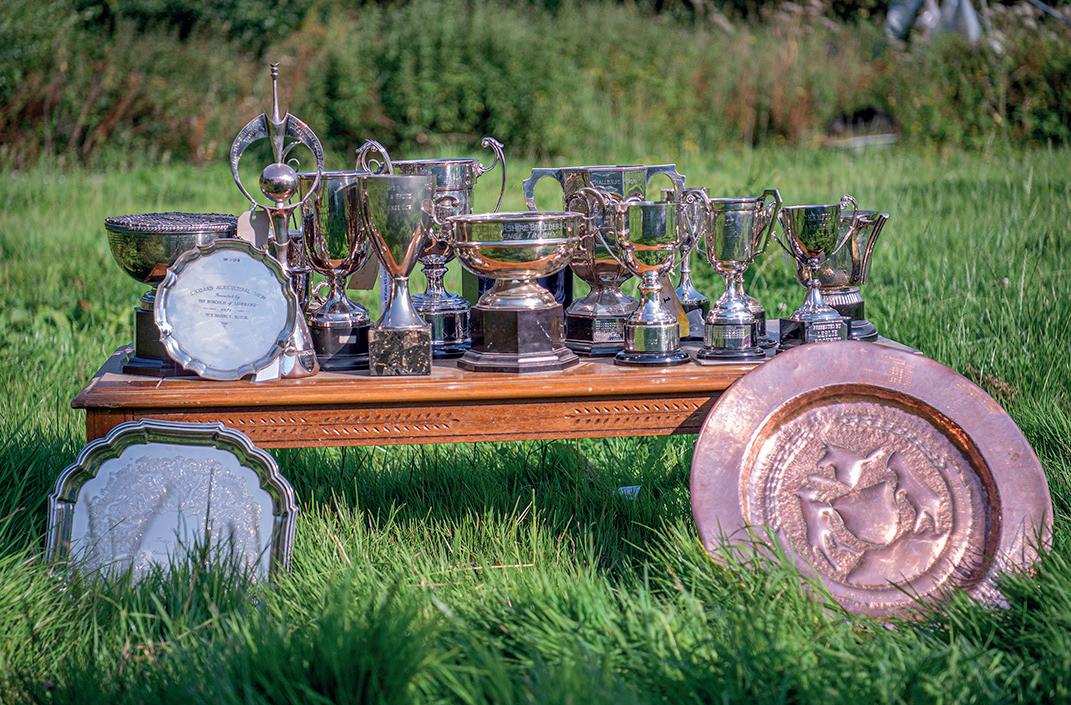


100ft by 100ft effective working area
Key Features:
Scotland/N. England 07591833853 Andrew - 07803124235 info@cowcaresystems.com
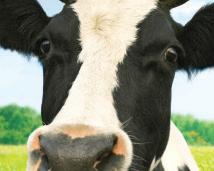

Wales/Midlands/S. England Fred - 07762800149




























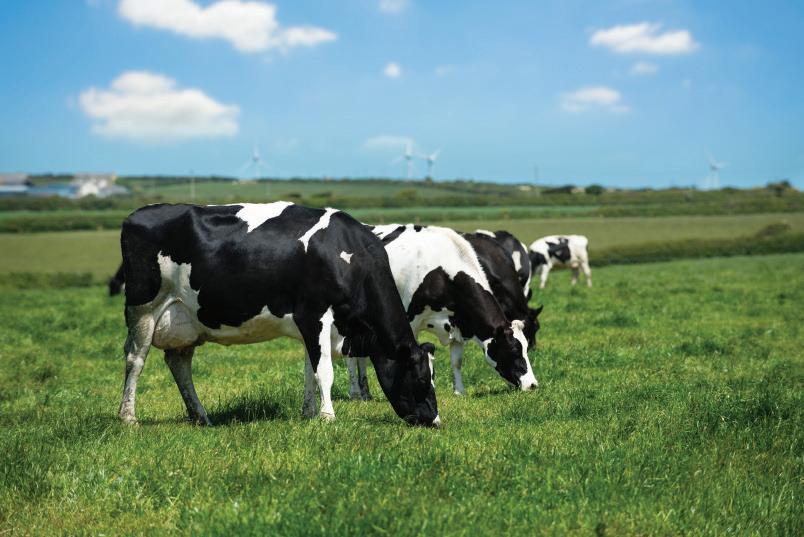




















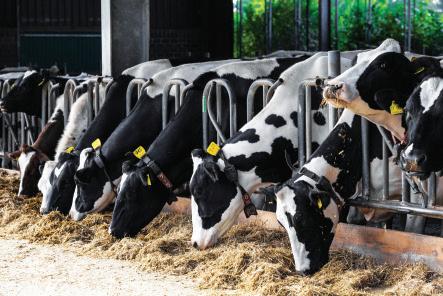







































































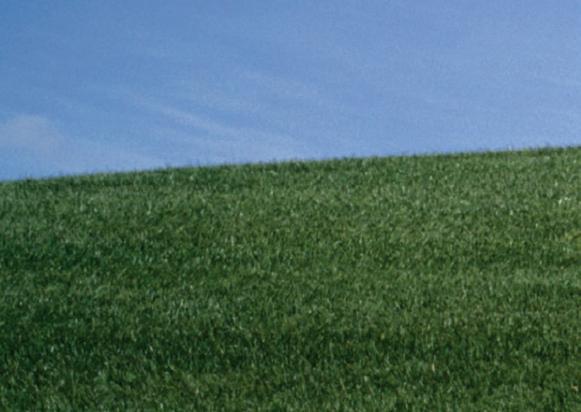








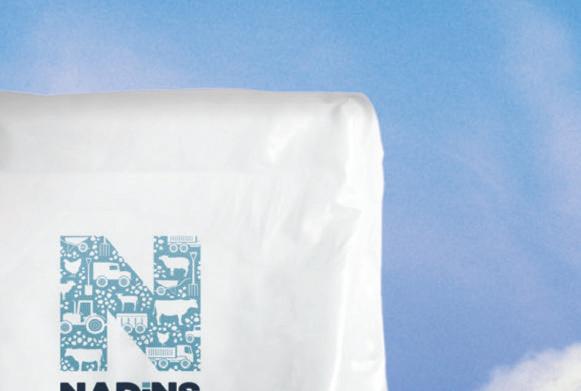





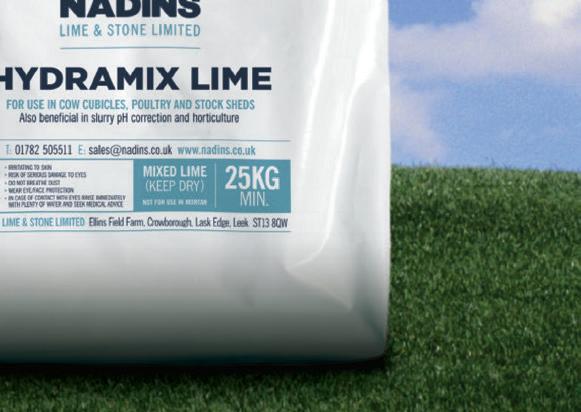











John Deere’s 5M could be the tractor of choice for dairy farms, with design capabilities for working in yards and integrated technologies for fieldwork. Toby Whatley puts a 135hp 5130M through its paces.







John Deere’s new 5M series occupies a space in the manufacturer’s range which crosses over between the smallest 6M models and the largest of the three-cylinder 5E series.
e brand has a strong history of

producing some reliable and comfortable tractors in this power range, including the 5020 and 5R series.
e 5M series extends to ve models from 75 to 135hp, with all machines provided with the same level of technology integration and loader capabilities.

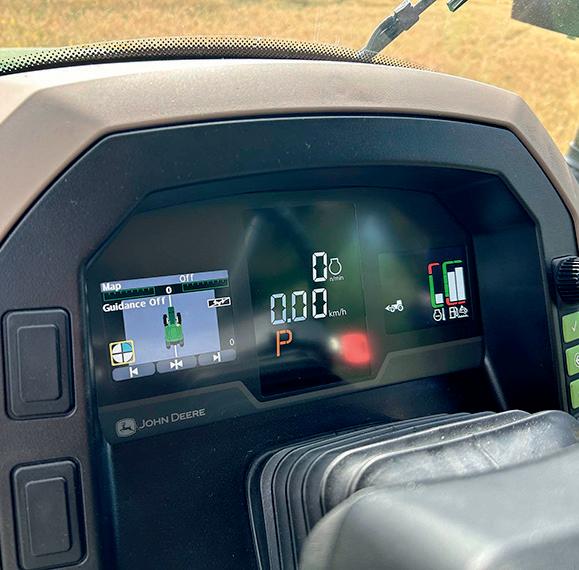








e new M series introduces fully integrated GPS in machines this size, alongside factory- ed loader options with joystick integration.


Unlike the 5020 and earlier 5R models which were assembled in Mannheim, Germany, the production of the 5M takes place alongside

the 5E in Pune, India. John Deere says the Pune production plant is its highest-volume tractor factory worldwide, and even well-established users of 6M and 6R machines would struggle to identify any di erences between German- and Indian-built machines.


The new 5M occupies a power band of 75-135hp over five models. Inset: Located in the dash, the integrated Autotrac guidance system was an effective addition.





rEngine: 4.5-litre, four-cylinder 135hp unboosted
rTransmission: Four-speed mechanical with eight electronic split (32R/16R)
rLinkage: Cat 2 maximum lift 5,677kg

rHydraulics: Three mechanical spools 73 litres/minute
rTyres: Front, 480/65R24; rear, 540/65R38
rPrice: RRP as tested, £153,363 including VAT
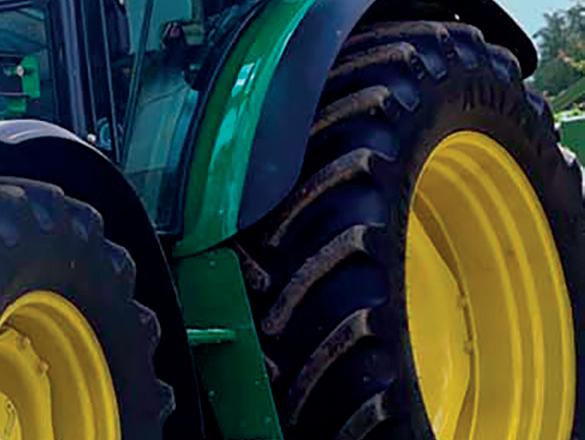
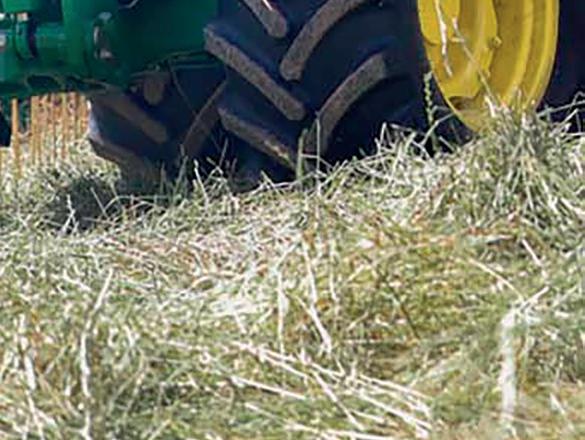


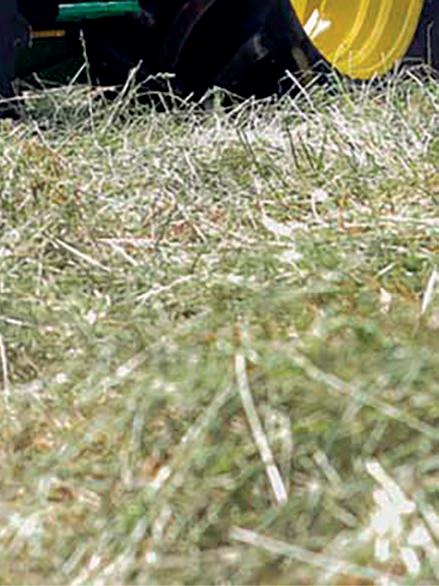


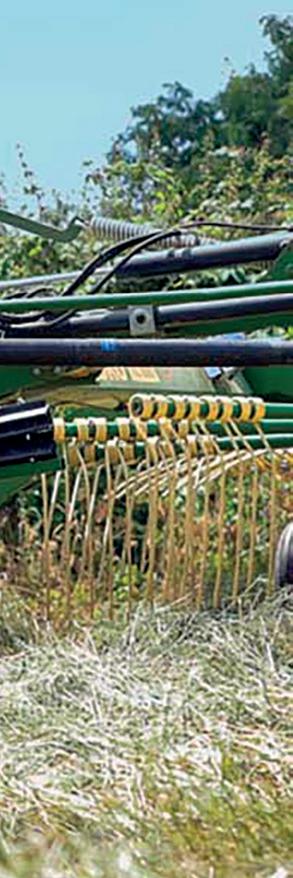
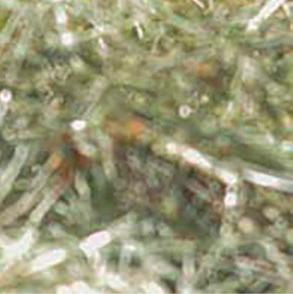
JPower for all models in the range, excluding the smallest 5075M, is delivered by a French-built 4.5-litre, fourcylinder Stage V unit.
A version of this engine is also used in several of the smaller 6M and 6R machines. Exhaust emissions are managed through a DPF, EGR and AdBlue combination.
With the 5130M, an unboosted maximum of 135hp is offered, which considering the overall size of the machine, provides users with more than adequate power for most applications the machine will be tasked with.
John Deere says the unit delivers peak power at 1,900rpm, but a peak torque of 541N/m at a much lower 1,600rpm, which should provide a decent fuel

economy for lower-demand pto applications.
Transmission choices extend to two main options of either a 16F/16R or 32F/16R, which comprises a four-speed manual with four or eight electronic splits. A maximum forward speed of 40kph is provided in either version.
Electronic declutching is provided from the gearstick, with speed matching for each split as the operator works through the ranges.
In use, the transmission was very easy to use and entirely predictable, particularly helpful if multiple or occasional operators used the machine, although the use of a fourspeed mechanical transmission in a 2024 135hp tractor




Power is supplied by a 4.5-litre, four-cylinder Stage V engine.
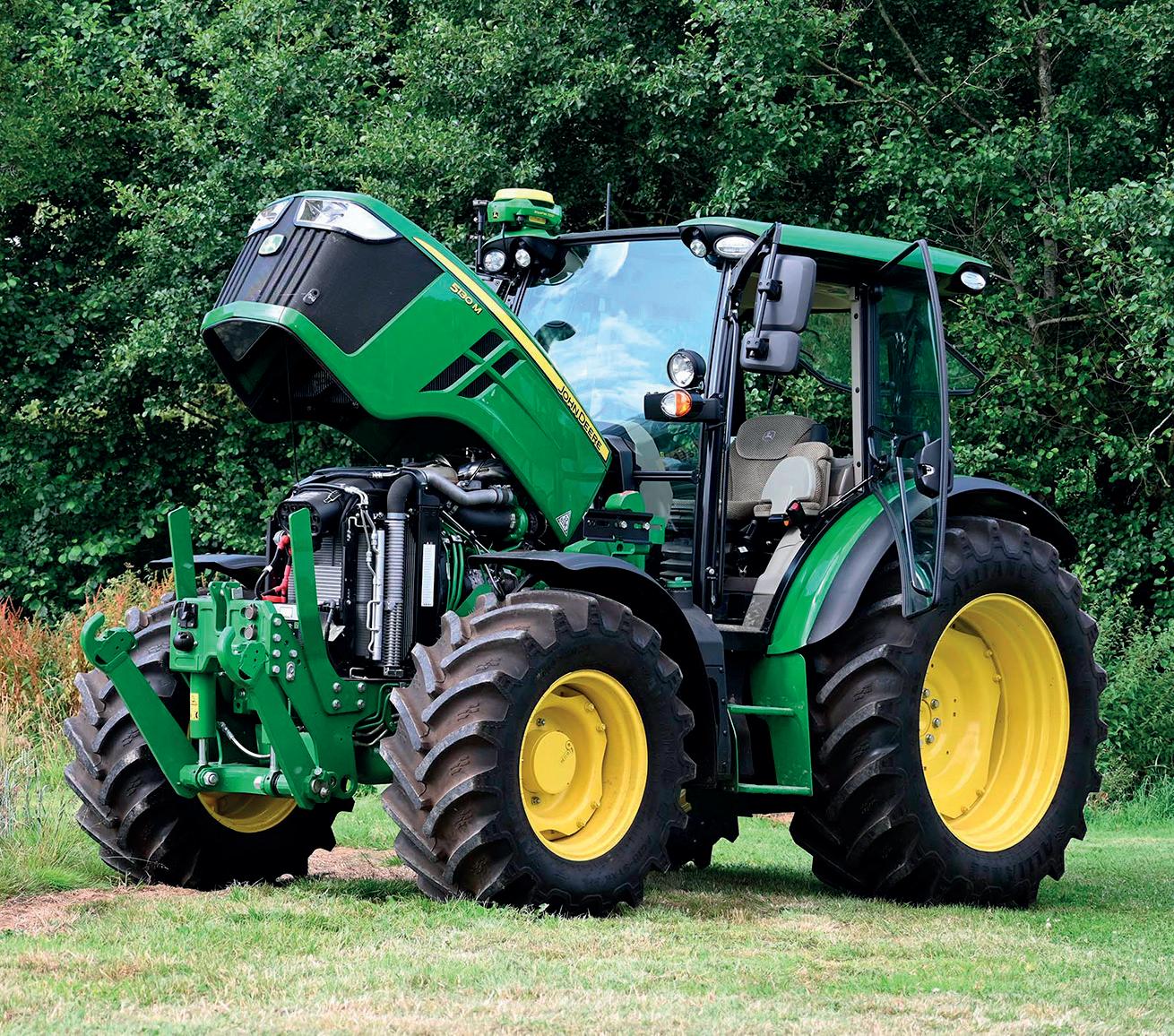
did appear to be a dated choice, particularly as no Autopowr continuously variable transmission option is available.
The separate loader joystick includes transmission split switches and boom suspension controls when operating with a factory-fitted loader.
For users requiring very low



speeds, an additional creeper box can be fitted in both transmission versions, which can provide a minimum forward speed of 0.3kph.
The maximum tyre sizes for the machine extend to 480/65R24 front and 540/65R38 rear.
Continues over the page...





The new cab includes operational refinements and a panoramic windscreen; (right) transmission choices were limited to a four-speed manual with electronic splits.

JThe largest changes to the new 5M over its predecessors are the cab layout and technology integration. Functionally, several areas reflected similarities from previous generations, with the manual spools and draft control reminiscent of 20 series machines.
A new digital colour dash was a welcome addition, with particular praise for the integration of Autotrac guidance into the left-hand screen.
The inclusion of a simpler guidance system provided a good balance between operational function and cab fulfilment and could provide repeatable pass-to-pass accuracy for virtually all the grassland-based tasks the 5M is likely to be used for. When operating without an additional screen, the dash
display is controlled through a series of blister buttons on the side of the dashboard. This resulted in a much longer machine set-up compared to the large touchscreen.
Our test machine included the optional G5 full screen with IsoBus, which was mounted to the B-pillars. This was functionally a very helpful position, as it allowed users to move the screen into a direct line of sight or place the unit parallel to the windows to minimise any obstruction to the forward view.
In realistic terms, few users will likely purchase and permanently operate a 5M with the additional screen, but for businesses running multiple John Deere tractors, the ability to connect and utilise the screen and its control technology was attractive,

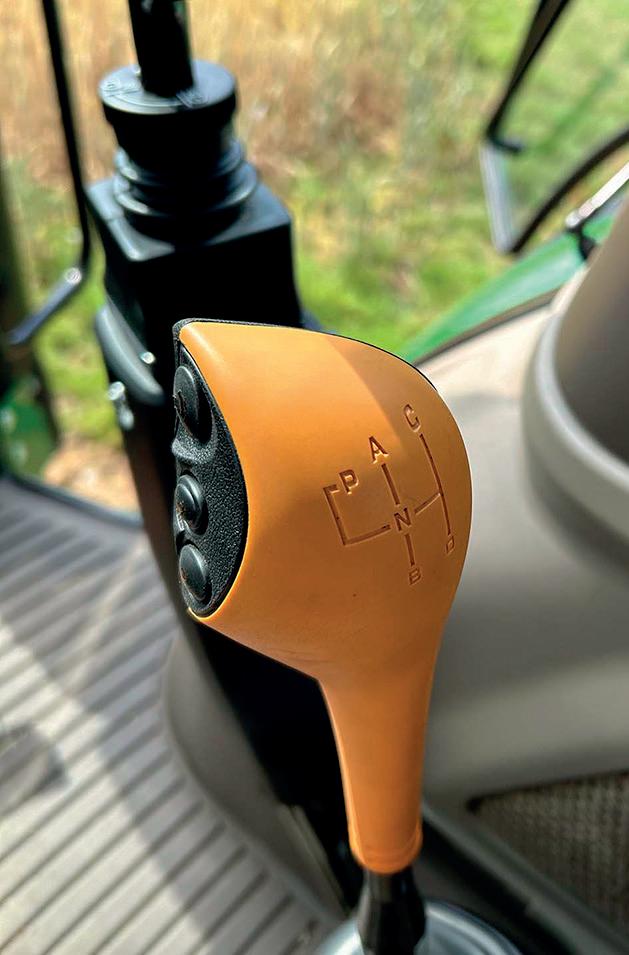
particularly if the lighter weight machine is used for fertiliser applications in early spring.
The cost option to allow the integration of the G5 for IsoBus control adds £618, with the full Autotrac-ready option, which includes the IsoBus control, plus a wiring harness, sensors and steering valve adding £3,316.
Neither of the above values includes the costs of the screen or receiver.
Mirroring the offset mounting position of the permanently fitted receiver on the much larger 7R, 8R and 9R machines, the 5M receiver was placed directly above the offside steps.
This design choice allows for an unobstructed view through the panoramic window for loader work, but also made fitting and
removing the Starfire receiver much easier and far safer than the centre cab position of the unit on the larger 6M and 6R machines.
In our view, the only major downside to the offset position was the size and exposure of the receiver and the hanging loop connection cable to lowhanging trees or hedges.
In use, the lack of cab or front suspension created a bouncy, somewhat nostalgic, ride quality, with the option for either of these luxuries missing from the specification list.
When travelling at 40kph, an indicated cab noise level of 94.3dB was recorded. For a smaller tractor, this was louder than some competitor machines, but could be reflective of the proximity the operator is seated to a relatively large engine.


The offside console was functional, but some features were dated.


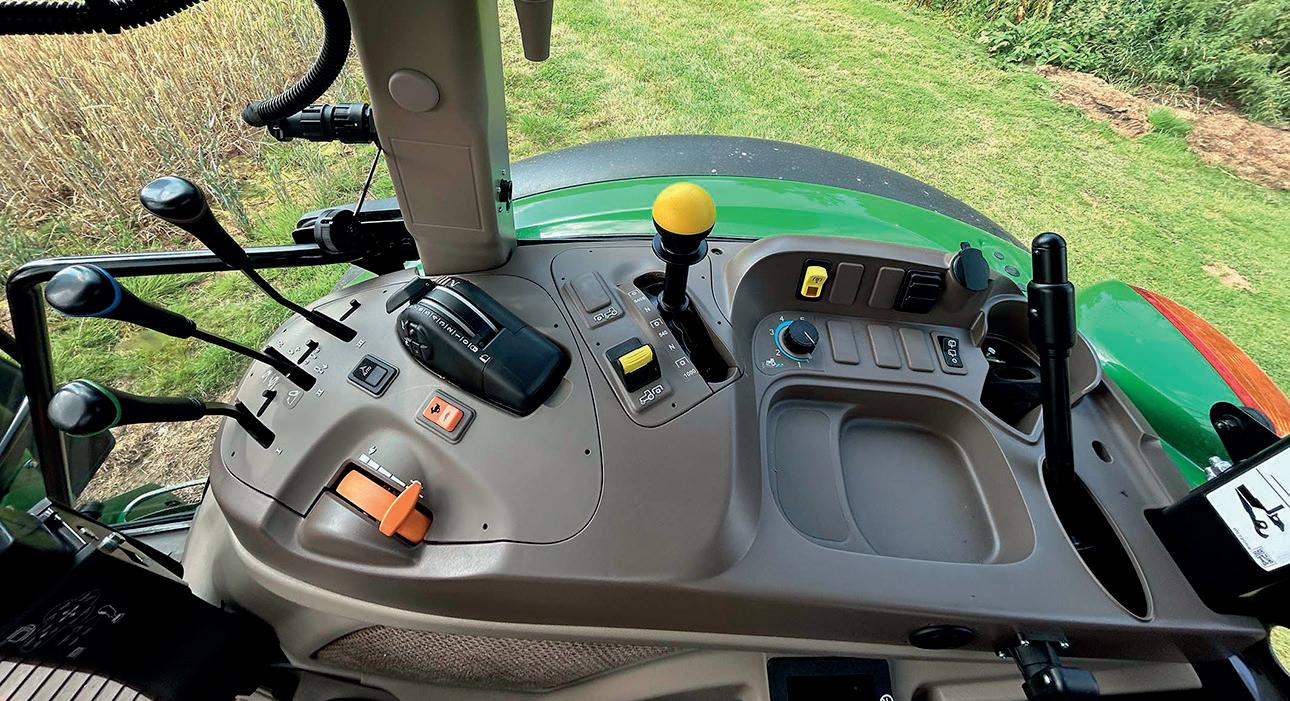
A lower capacity category 2 linkage is the only option for the rear.

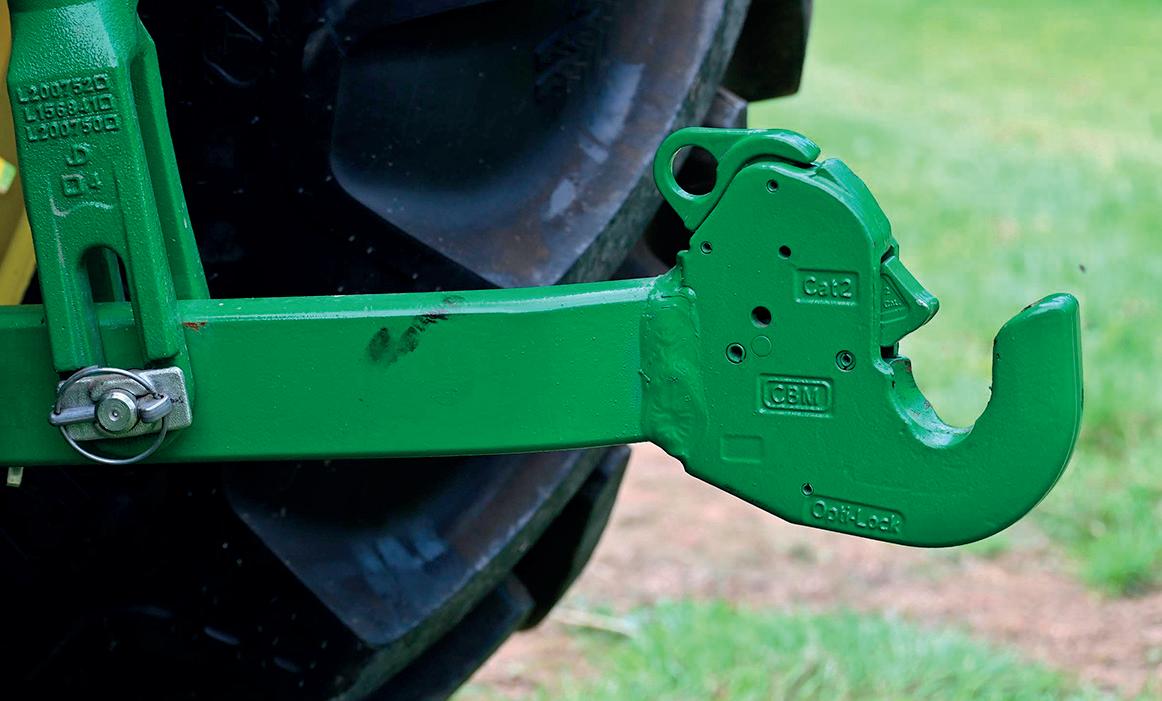
JThe maximum hydraulic lift capacity of 5,677kg is generous for the overall machine size, with a maximum lift through the full lift range of 3,569kg.
In practice, many users will not find these capacities underwhelming for most tasks, with the machine capable of carrying a reasonably sized power harrow combination if required.
The base weight of the machine is quoted as 4,400kg, with a maximum permissible weight of 8,200kg.
Again, this gives plenty of capacity for implements both front and rear and is unlikely to be under capacity for most users.
The major complaint with the 5130M linkage was the use of a category 2 rear linkage and a
category 3 at the front.
Considering the size and power reserves of the machine, the use of a rear linkage now more commonly seen with sub100hp machines presented a challenge to find implements capable of working with it.
John Deere advises that the 5M is currently only offered with a category 2 rear linkage, with either hook or ball ends. The fitment of a category 3 front linkage may have been more of a reflection of the pre-production specification of our test machine.
The hydraulic output of the pump and spool designation extended to three mechanical rear spools and three midmount for the loader, with a maximum hydraulic flow of 73 litres/minute.
The spool provision is aligned
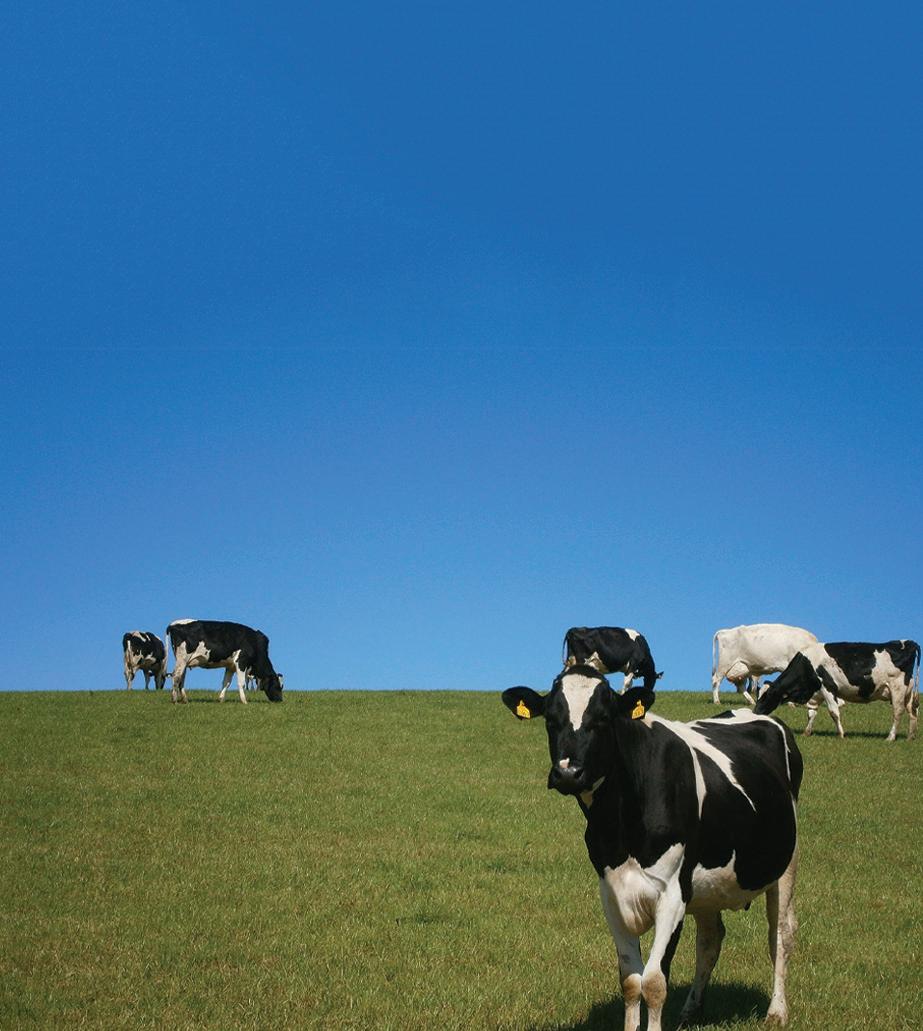







The rear linkage provided a maximum lift capacity of 5,677kg.

with competitor machines, with the front linkage connected to the rear spools, which allows the use of the front linkage without the disconnection or removal of the loader.
Despite being factory-fitted, the front linkage uses flexible hoses running the length of the machine – we would have preferred longer service life steel pipes.
As a loader tractor working in and out of smaller traditional buildings, the capabilities and dimensions of the unit, particularly the panoramic
windscreen, should make the machine a comfortable environment to work from.
Unfortunately, a loader was not available during our testing time, but John Deere advises that two models are offered for the 5M series – the 543M with a maximum lift capacity of 1,509kg and maximum lift height of 3.68 metres and the 603M with a maximum lift capacity of 1,693kg and maximum lift height of 3.75m.
Continues over the page...



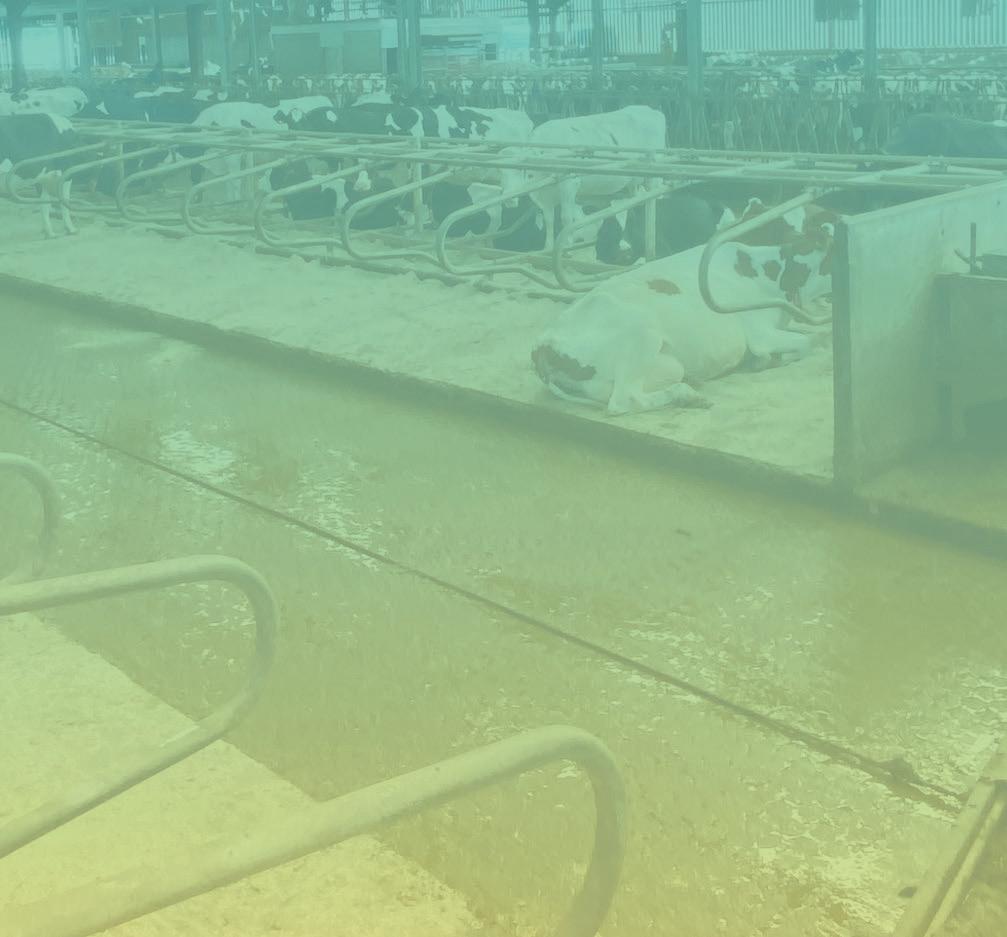

rCompact dimensions and tight turning circle
rCab visibility
rEffective technology integration

rLED work lighting
rAccessible GPS receiver
rBasic transmission
rNoisy cab
rPoor ride
rRear linkage category
rFit and finish on some parts






The front linkage was supplied with a category 3 capacity.


Accessed from the offside steps, the Starfire receiver was easy to fit, but was exposed to trees or hedges.

JThe 5130M provides a balance of smaller tractor functionalities for mixed, livestock and dairy users, with some well-finished and integrated technology.
The limited transmission choice of a mechanical with splits was disappointing, considering how the machine’s ability to operate on a minimum working width of 1,880mm provides the ability to access narrower, traditional buildings.
The 135hp maximum output and slick integration of John Deere’s highly refined precision farming applications
comfortably extends the machine’s area of use.
Its lighter footprint and tight turning circle of a claimed 4.1 metres could present the machine as an agile fertiliser application or mounted spraying tractor, particularly during less-than-ideal conditions during early spring nitrogen applications.
Many of the criticisms we found with the 5130M could be addressed with the similar power and identical
engine 130hp 6M 105.
This machine can be ordered with a 50kph Autopowr continuously variable transmission or CommandQuad powershift and category three linkage, cab and axle suspension, and can be operated with slightly larger loaders.
However, the machine’s minimum width of 2,250mm, longer wheelbase and taller cab would make it too large – and much more expensive – for many of the 5M’s applications in livestock buildings, grassland work. With an as-tested price
of £153,363 including VAT, the pre-production 5130M included virtually all of the possible options.
However, when configuring a machine to a more typical specification, including the larger 603M loader brings this down to around £109,000 including VAT before any on-farm discounts.
In contrast, a 6M 105 with the desirables added which are currently not available on the 5M, returns a pre-discount price of around £148,000 including VAT.



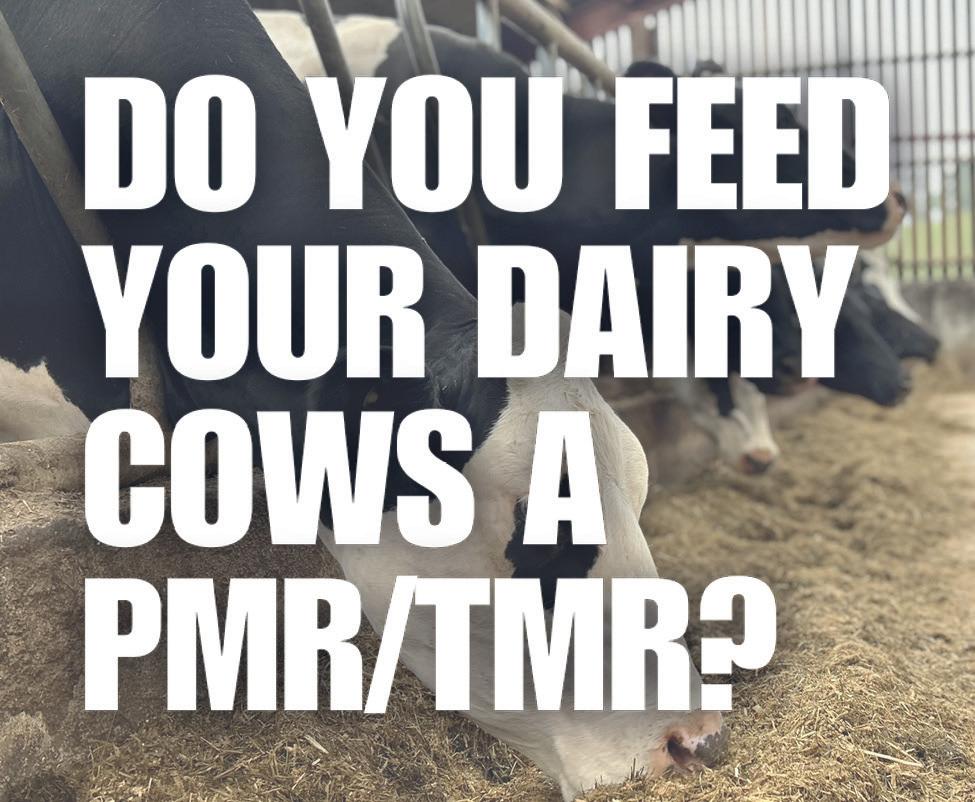


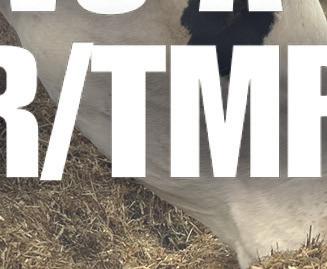


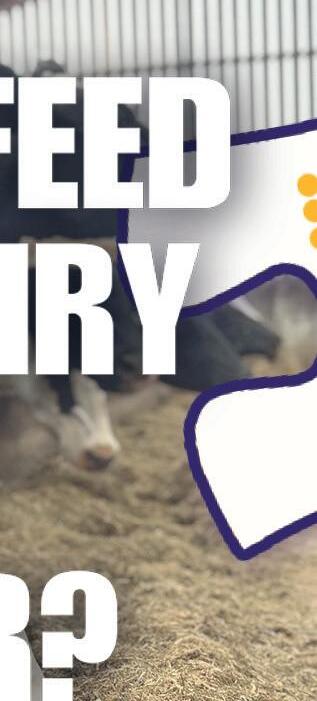




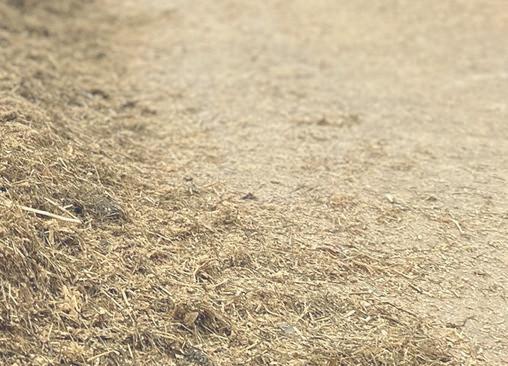

AlkaProStar is a new, alkaline, high protein, high starch feed material for PMR/TMR diets, designed to stabilise and enhance rumen function and improve overall feed efficiency.
Typical Analysis: pH9 | 30% Protein | 50% Starch
AlkaProStar provides protein, starch and buffering Easy to mix into PMR / TMR
Ground meal avoids cows sorting at the trough Alkalinity helps to stabilise the rumen
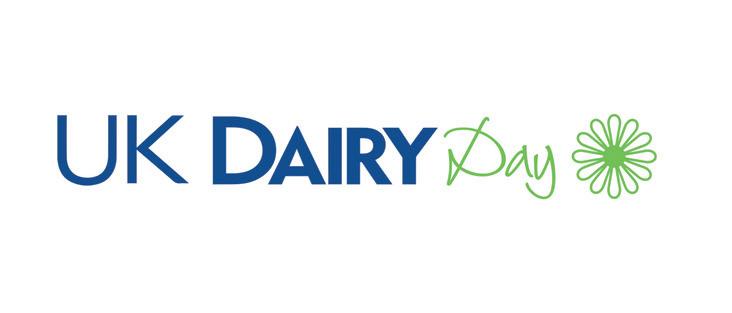

Call the ALKA-line on +44(0)1200 613118 to learn more or visit the website at www.homendry.com
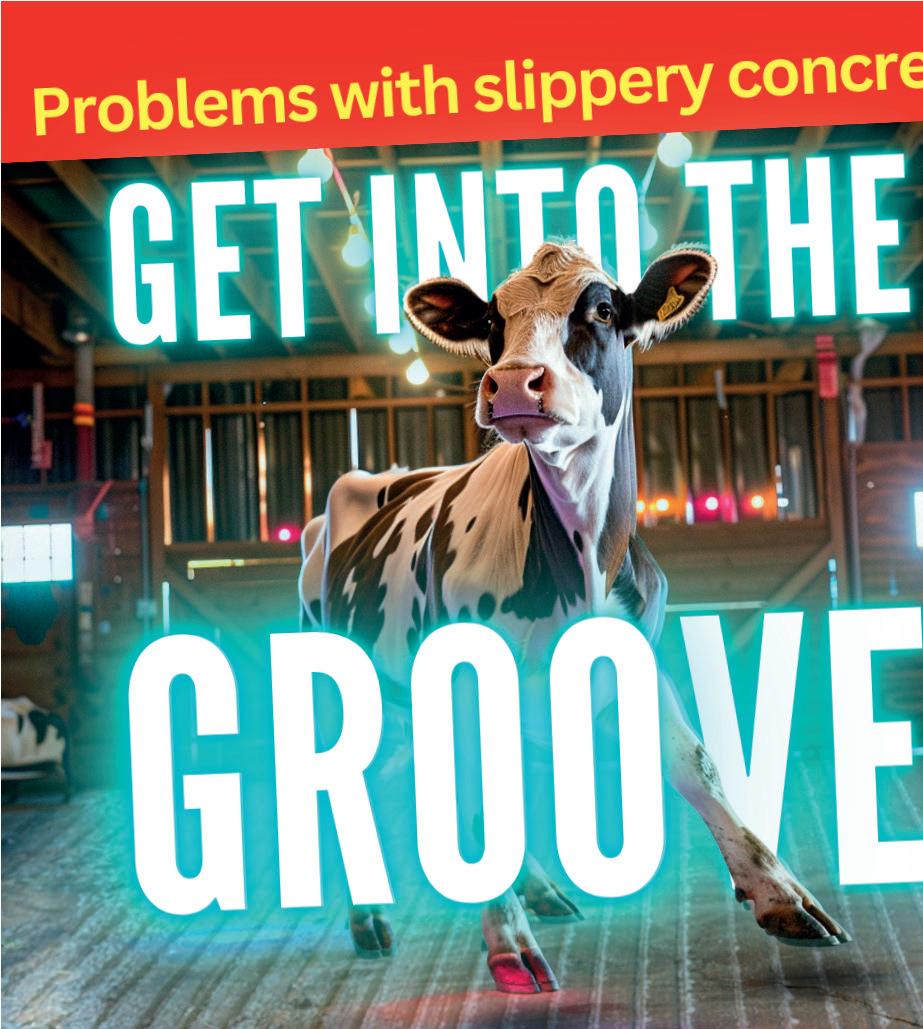

JMilk buyers requiring to remain competitive with their producer milk prices –especially in certain pockets of the country such as in South Wales and in the South West –is se ing the scene for producer milk price increases to continue running into this autumn.
A er a good round of September price increases, others which will nd their prices lagging a li le may well make positive adjustments for October or possibly November. at is unless market returns were to start tracking south.
As has been mostly the case for
this year to date, price increases have been born more out of ‘fear of losing supply’ rather than simply fuelled by market returns. However, market sentiment in early August was starting to turn a li le more positive, especially with the increasing demand for bu er, although powder markets were being very slow to come to the party, with many describing the cheese market as at. Hopefully, the demand for fat will lter into other commodity markets, which will help to underpin these late summer milk price increases.
JEarlier this summer, some were saying that 40ppl liquid standard could be a price level over-egged.
Moving into late summer, this would appear not to be the case as several milk buyers have now equalled or surpassed this level, either for August or September.
Muller
Muller increasing its price by 1.25ppl to 40.25ppl has helped to secure this,
but not before Paynes declared 40ppl from August.
Crediton Dairy regularly maintains a competitive level, with the company increasing by 1ppl for September to 41ppl.
Yew Tree Dairy increased by 1.5ppl to 40.5ppl, Pembrokeshire Dairy, which is starting to have some recruitment success, continued to hold the top non-aligned liquid price after the company increased by 0.74ppl to 41.36ppl.
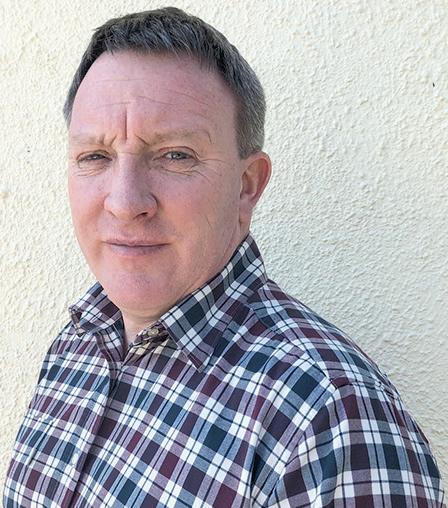
JOne price which has been moving up nicely through the gears in the last few months and which has been helping to create much competitive spirit is that paid by First Milk.
The co-op increased its price by a further 1ppl from September, taking our manufacturing standard litre* price up to 42ppl and 43.50ppl for members in the Haverfordwest Tesco Cheese Group.
The increase is its seventh this year to date, totalling 6ppl and comparing with 36.85ppl and 37.50ppl paid for the same month last year, respectively.
The penny increase on manufacturing translates as 0.97ppl for our liquid standard*, taking the company’s price up to 40.63ppl.
At the same time, the company increased its BV Dairy (Dorset) September milk price by 0.6ppl, taking our liquid standard up to 40.85ppl, which represents a total increase for the Dorset-based dairy of 3.85ppl for the year to date.
The spirited 0.61ppl increase for September by Barber’s Cheesemakers to 42.41ppl represents an increase of 6.27ppl for the
year, which is not enough to hold the top manufacturing price slot with Arla’s increase of 0.74ppl for August to 42.44ppl.
This new price includes the company’s guaranteed minimum supplementary payment, which remains unchanged at 1.296p/ kg (1.335ppl), with the FarmAhead Incentive increasing to 1.711p/kg (1.762ppl).
This is due to more than 50% of owners having now achieved more than the average points available on their sustainability fertiliser usage lever.
Our liquid standard price for the co-op increases by 0.71ppl to 40.72ppl, which has helped to raise the price bar in the liquid sector, while its organic liquid price also increases by 0.71ppl to 51.15ppl.
Other cheesemakers increasing their prices for September include South Caernarfon Creameries, which increased by 1ppl to 40.50ppl on our manufacturing standard, while Leprino also added a penny to 41.50ppl, its seventh price increase to date this year.


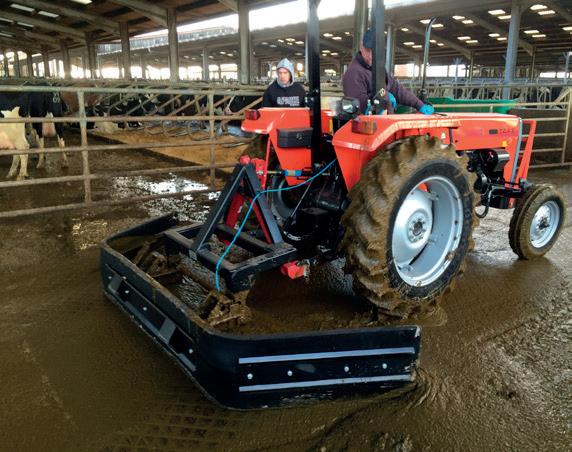


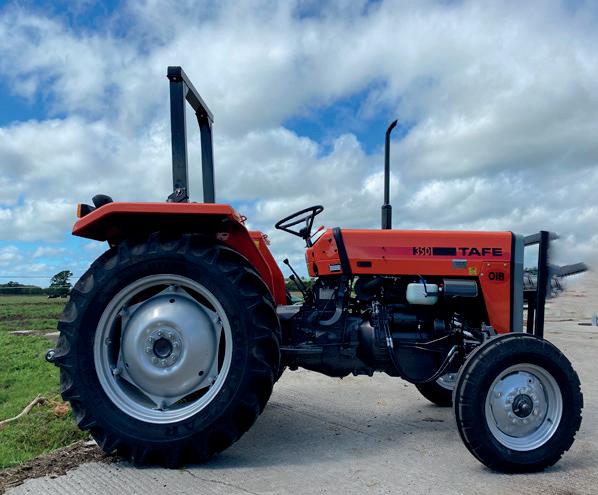
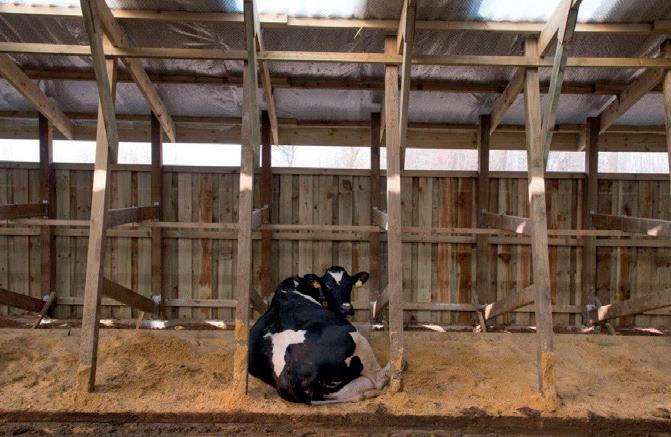

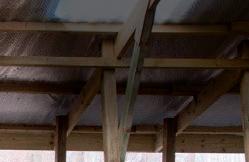


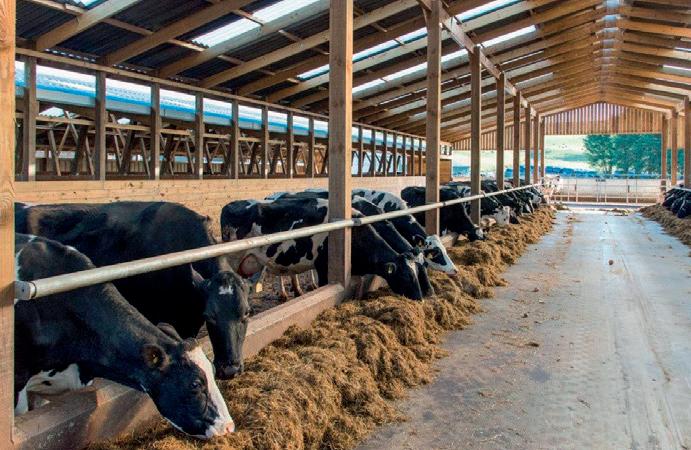
•






‘B’ Price Indicators
StoneXMilkprices.com UKMFE (gross)
*StoneXMilkprices.com UKMFE (net)
**Delivered spot milk (net to the producer)
Notes to table
Prices for both Liquid & Manufacturing tables paid for a producer sending 1mltrs/yr on EODC (max vehicle size accessibility) with Bactoscans of 30,000/ml and SCC’s of 200,000/ml with Thermodurics of 500/ml. Excludes capital retentions or AHDB levies, profile adjustments from level supply, seasonality, balancing and A&B price schemes (includes the winter premiums paid in NI). Excludes annual / part annual growth incentive schemes or supplements not directly linked to dairy market price movement. Liquid price for milk contains 4% b/f and 3.3% protein. Manufacturing price for milk containing 4.2%/b/f and 3.4% prot. All prices for non-aligned prices are before monthly retail supplements. (i) Apr’24 prices before seasonality or B pricing (ii) May’24 prices before seasonality or B pricing (iii) Table ranked on simple rolling 12mth average of monthly prices Jun’23 to May’24. (i) v (ii) The difference May’24 compared with Apr’24. UK Arla Farmers 0.03ppl decrease for Apr’24 includes 1.366ppkg (1.407ppl) Sustainability Incentive and Guaranteed minimum supplementary payment of 1.243ppkg (1.280ppl) based on our liquid std litre. UK Arla Farmers 0.04ppl decrease for Apr’24 includes 1.426ppkg (1.469ppl) Sustainability Incentive and Guaranteed minimum supplementary payment of 1.296ppkg (1.335ppl) based on our manufacturing std litre. UK Arla Farmers 0.4ppl increase for May’24 includes 1.366ppkg (1.407ppl) Sustainability Incentive and Guaranteed minimum supplementary payment of 1.243ppkg (1.280ppl) based on our liquid std litre. UK Arla Farmers 0.43ppl increase for May’24 includes 1.426ppkg (1.469ppl) Sustainability Incentive and Guaranteed minimum supplementary payment of 1.296ppkg (1.335ppl) based on our manufacturing std litre. First Milk price includes 0.5ppl Member Premium accrued as a 13th payment paid Apr’24. First Milk Haverfordwest Tesco Cheese Group includes 2ppl retailer premium averaged as 1.5ppl based on seasonal profile. Fresh Milk Company price before Morrisons monthly cheese supplement (payment made in Mar’24 of 0.024ppl for supplies Nov’23 to Feb’24). MMG Direct price includes 1ppl Premium paid quarterly in arrears to Direct/Organic farms meeting specific Müller Direct criteria (Quarterly payments started from Apr’22). Crediton Dairy price includes FarmMetrics Scheme Bonus of 0.5ppl paid monthly. South Caernarfon price includes flat 0.4ppl annual member bonus for 2023/24 and
Arla Farmers 0.43ppl increase for Jun’24 includes 1.366ppkg (1.407ppl) Sustainability Incentive and Guaranteed minimum supplementary payment of 1.243ppkg (1.280ppl) based on our liquid std litre. UK Arla Farmers 0.44ppl increase for Jun’24 includes 1.426ppkg (1.469ppl) Sustainability Incentive and Guaranteed minimum supplementary payment of 1.296ppkg (1.335ppl) based on our manufacturing std litre. UK Arla Farmers 0.78ppl increase for Jul’24 includes 1.366ppkg (1.407ppl) Sustainability Incentive and Guaranteed minimum supplementary payment of 1.243ppkg (1.280ppl) based on our liquid std litre. UK Arla Farmers 0.81ppl increase for Jul’24 includes 1.426ppkg (1.469ppl) Sustainability Incentive and Guaranteed minimum supplementary payment of 1.296ppkg (1.335ppl) based on our manufacturing std litre. UK Arla Farmers 0.78ppl increase for Jul’24 includes 1.366ppkg (1.407ppl) Sustainability Incentive and Guaranteed minimum supplementary payment of 1.243ppkg (1.280ppl) based on our liquid std litre. UK Arla Farmers 0.81ppl increase for Jul’24 includes 1.426ppkg (1.469ppl) Sustainability Incentive and
supplies Nov’23 to Feb’24).










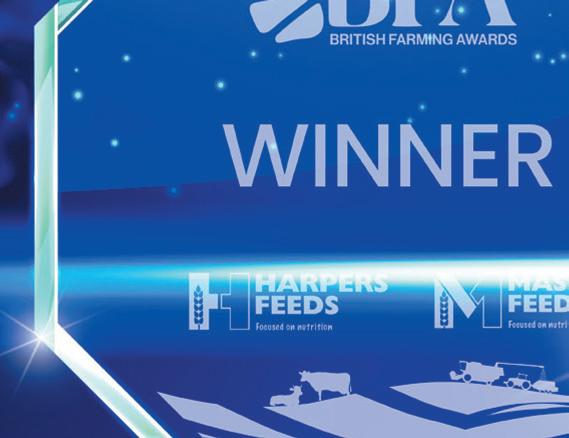


















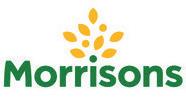










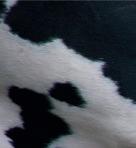

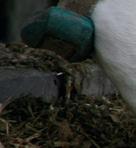
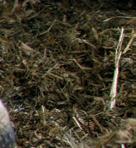
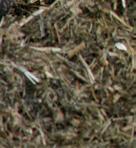
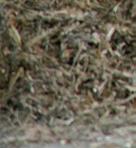

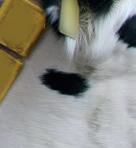
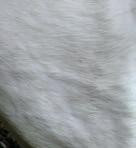
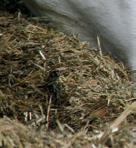

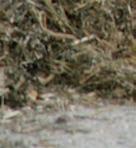
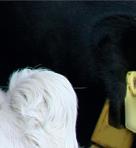

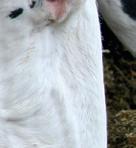
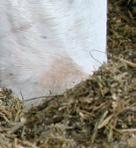
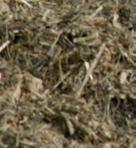
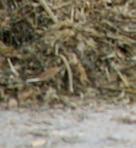




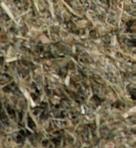



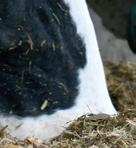
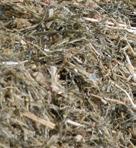
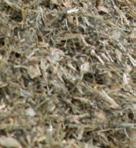
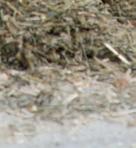

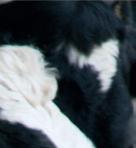




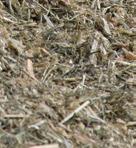
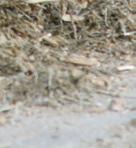
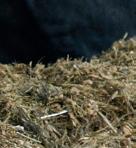
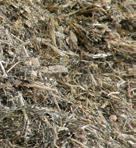
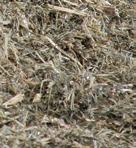
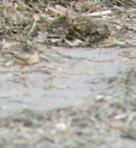
Markets normally remain quiet in summer, as traders wrap up their requirements before they go on holiday and do not need much until they return in August. is has been true for SMP and cheese, but not for bu er which atlined for the rst three weeks of July, but then soared in the last few days. e gains have been nothing short of astonishing.
Butter prices (€)
9,000
8,000
7,000
6,000 5,000 4,000 3,000
In mid-July, for example, spot trades were going for €6,500/ tonne (£5,582) to €6,650 (£5,711), but now some spot deals have gone for as high as €7,200 (£6,184).
Dutch quotation
e Dutch o cial quotation price for the last week in July was €6,820 (£5,857), which points to further increases in early to mid-August.
Cream is also moving



was on its way down from its 2022 peaks. The estimated non-aligned average price for June is 38p; for July it is 38.8p, thanks to 19 positive price moves from the major processors; and for August it is 39.5p after a further 14 price increases. So far, September has seen another nine price rises. Defra price at 38.5p for June, while August rises to 39.5p
JThe latest Defra milk price for June is just under 38.5ppl at 4.09% fat and 3.37% protein, which is up just over 0.5p on June. At a standard 4% fat, 3.3% protein standard litre, the price is around 37.5ppl, which is the first time it has crossed that threshold since April 2023, when the price
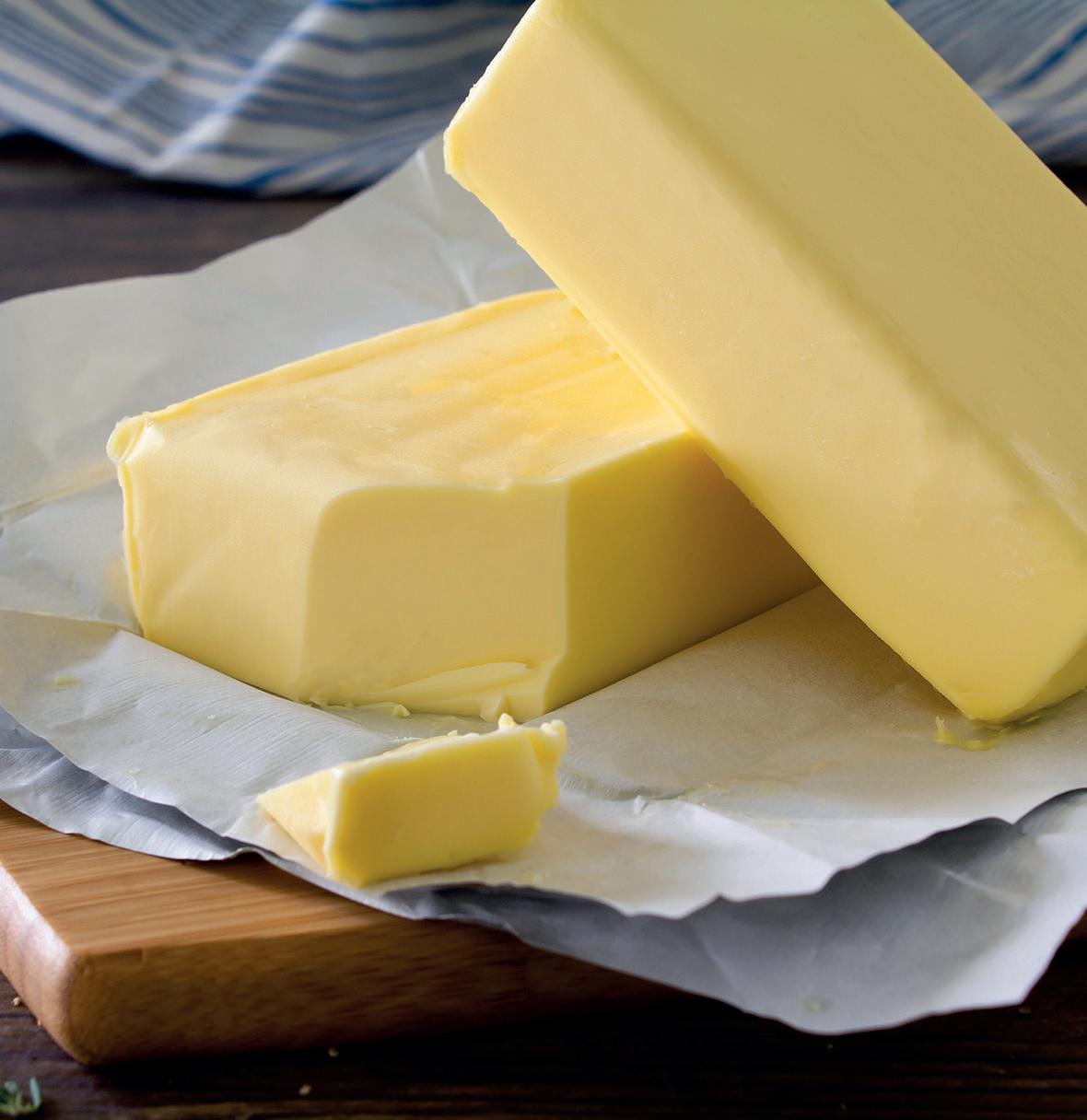

hand-in-glove with bu er, and has also soared. rough the la er part of July, the price was in the mid £2.60s, but the late July surge saw it rise to £2.70 for the rst time since October 2022.
However, SMP is still in the doldrums and, at €2,300 (£1,975), is dragging the farmgate AMPE price down to about 37p, although, thanks to bu er’s
ascendancy, it is at the highest price it has been in weeks.
On cheese, UK mild is at £3,800 still, and Edam and Gouda at €3,850 (£3,307) to €3,950 (£3,392). Mozzarella has been the quickest commodity to follow bu er, and the UK price is now up to £3,500. It should also get a further boost from the excellent GDT auction for the commodity.




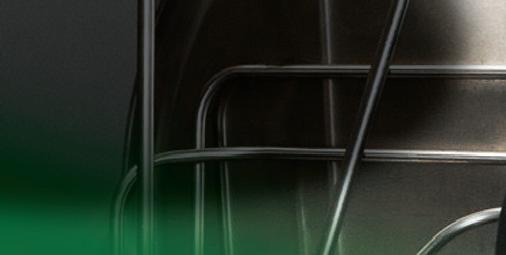





JUK milk volumes are tracking fractionally below last year, with volumes so far being 8,762 million litres after the first seven months of the year.
Last year over the same period we had produced just more than 8,800m litres, and in 2022, 8,733m litres. The most we have produced was
in 2021 at 8,893m litres. It is the second lowest since 2019. Meanwhile, EU milk volumes climbed again in May versus last year – the fourth consecutive month of increases.
This is a concern for milk prices later in the year as traders are less likely to worry about future milk supplies.
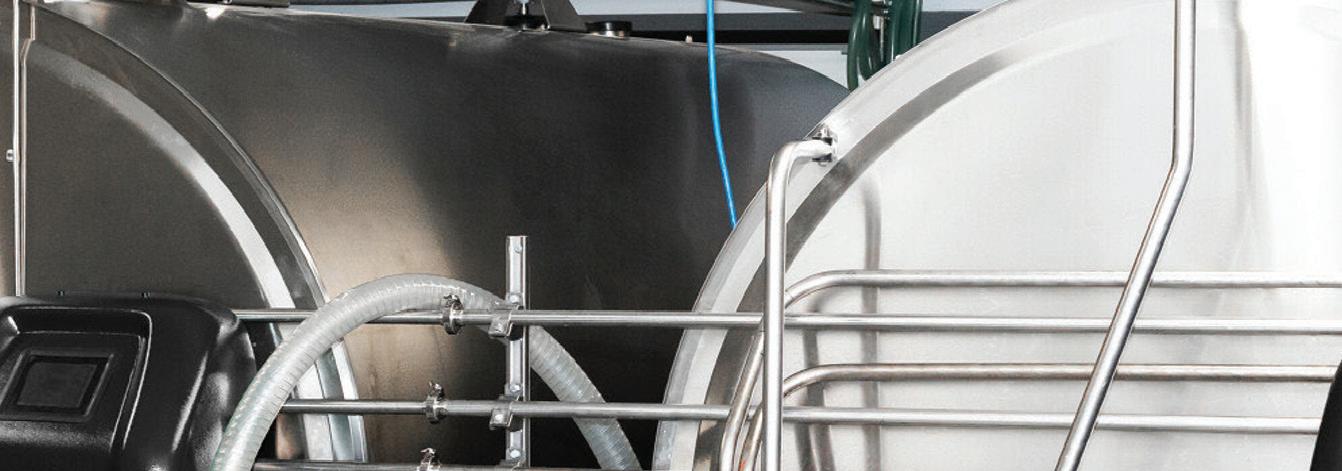



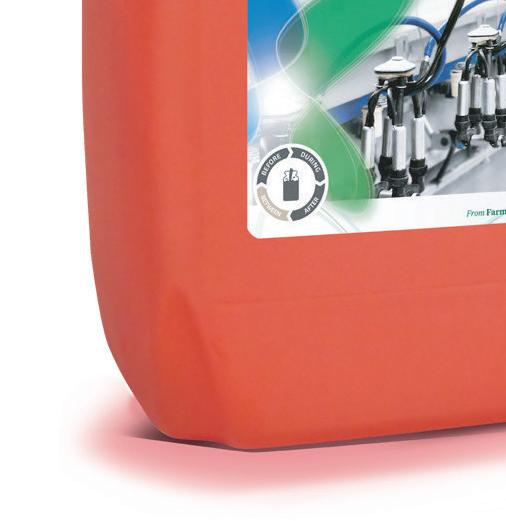





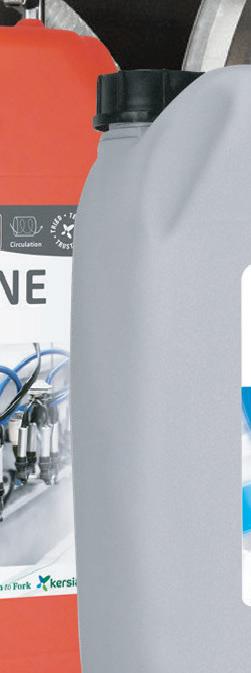



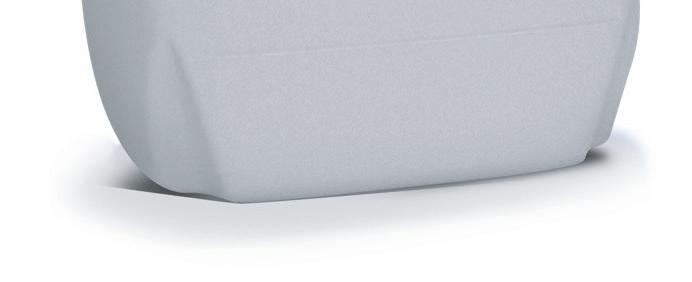



















This month’s new products section features a navel dip, a new Strautmann mixer wagon range and an updated app for cow health.
JWound protection company
No BACZ Healthcare has launched No BACZ Navel, a rapid-setting and long-lasting solution for navel dipping or spraying on calves.
Strautmann has launched a more agile, simpli ed version of its Verti-Mix feeder wagons. Tagged as the ‘Professional’ range, the new models are based on the design of standard machines, within a more compact chassis. e range aims to provide a
straightforward speci cation for farmers who do not need advanced features but still want to bene t from mixing quality.
smaller yards and di cult-toaccess buildings.
e new range comprises six single-tub machines from 7.5cu.m to 14.5cu.m and four double-auger machines from 11.5cu.m to a maximum of 24.5cu.m.
e shortened chassis and drawbar, plus recon gured driveline guarding, have made the ‘Professional’ range even more manoeuvrable, and therefore suitable for
rMore information from dean.cottey@opico.co.uk
The product rapidly disinfects and dries the navel in as little as two hours and seals with a colourful, natural resin which forms a longlasting waterproof barrier to protect against bacteria from the environment.








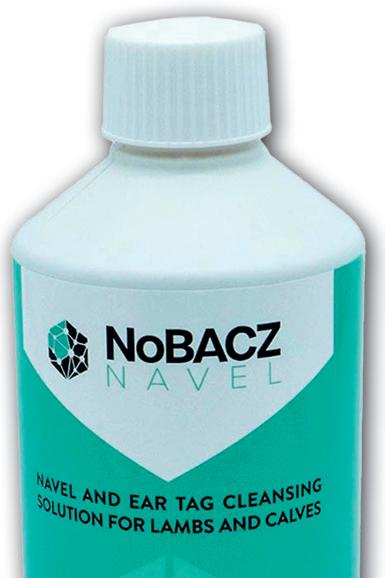


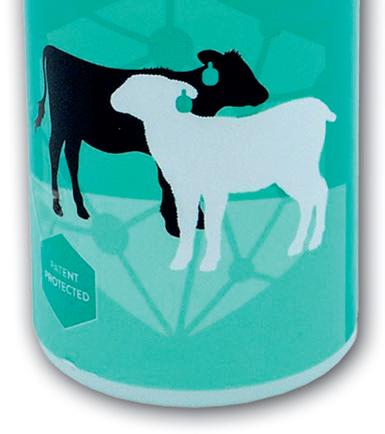

It is antibiotic-free and can be applied by dipping or spraying. It can also be used on ears and eartags.
rMore information from 01223 976 456.
JNew products are featured in each issue of Dairy Farmer. Please send details and pictures to Katie Fallon at katie.fallon@ agriconnect.com, or call 07815 003 227.

JEurofins Agro Testing Wageningen has announced an international collaboration with trinamiX to optimise forage analyses without the need to send samples to a laboratory. The partnership brings
together Eurofins Agro Testing’s expertise and its global network of laboratories with trinamiX’s technology to offer on-the-spot analytics in a fraction of the time it takes for a traditional sample to be analysed.
The collaboration is set to
revolutionise the way feed suppliers, nutritionists and farmers capture feed data to enable more accurate nutrition management.
rMore information from nicole. messmer-pohan@trinamix.de, or Inez.Sinia@ftbnl.eurofins.com
JHerdVision has launched a revised and updated app called Herdtasker, offering faster identification of problem animals for more timely intervention.
The app reports problem cows identified by the camera as soon as early signs of issues are identified. The HerdVision camera mobility and condition scores animals every time they walk under the camera, meaning a detailed picture of the herd is produced automatically.
The Herdtasker app will then flag cows for attention in two action lists.
The mobility alert list reports any cows which have a mobility score that has increased in the last seven days, indicating a problem which needs addressing.
And the fertility checklist


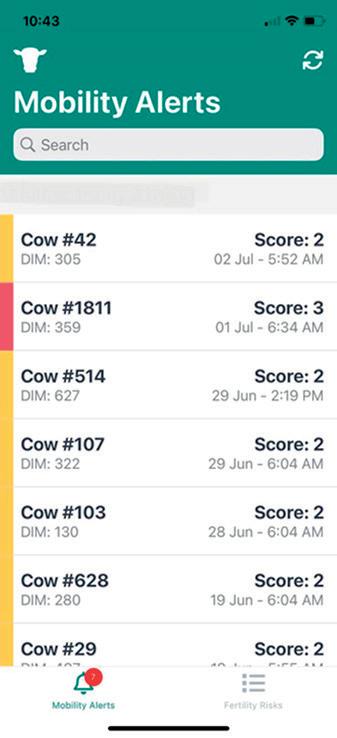

includes cows which have lost condition while dry or have calved down in a poor body condition, sending details to the app within seven days of calving.
rMore information from Gabby.emery@agsenze.com, or 07376 045 986.
JNeogen has updated the formulation of its post-milking teat dip, Synofilm, to increase overall efficacy and deliver superior user benefits.

The product, developed for use all year round, is a lactic acid and glycolic acid-based post-milking teat disinfectant, providing teats with biocidal and barrier protection between milkings.
Synofilm gives 99.999% kill for the common environmental organisms implicated in teat infections and includes a blend of emollients which are beneficial in the recovery and prevention of cracked and chapped teats.
The revised product is a vibrant orange colour, making it easier to confirm teats have been comprehensively dipped for optimum protection.
rMore information from 07917 672 539.





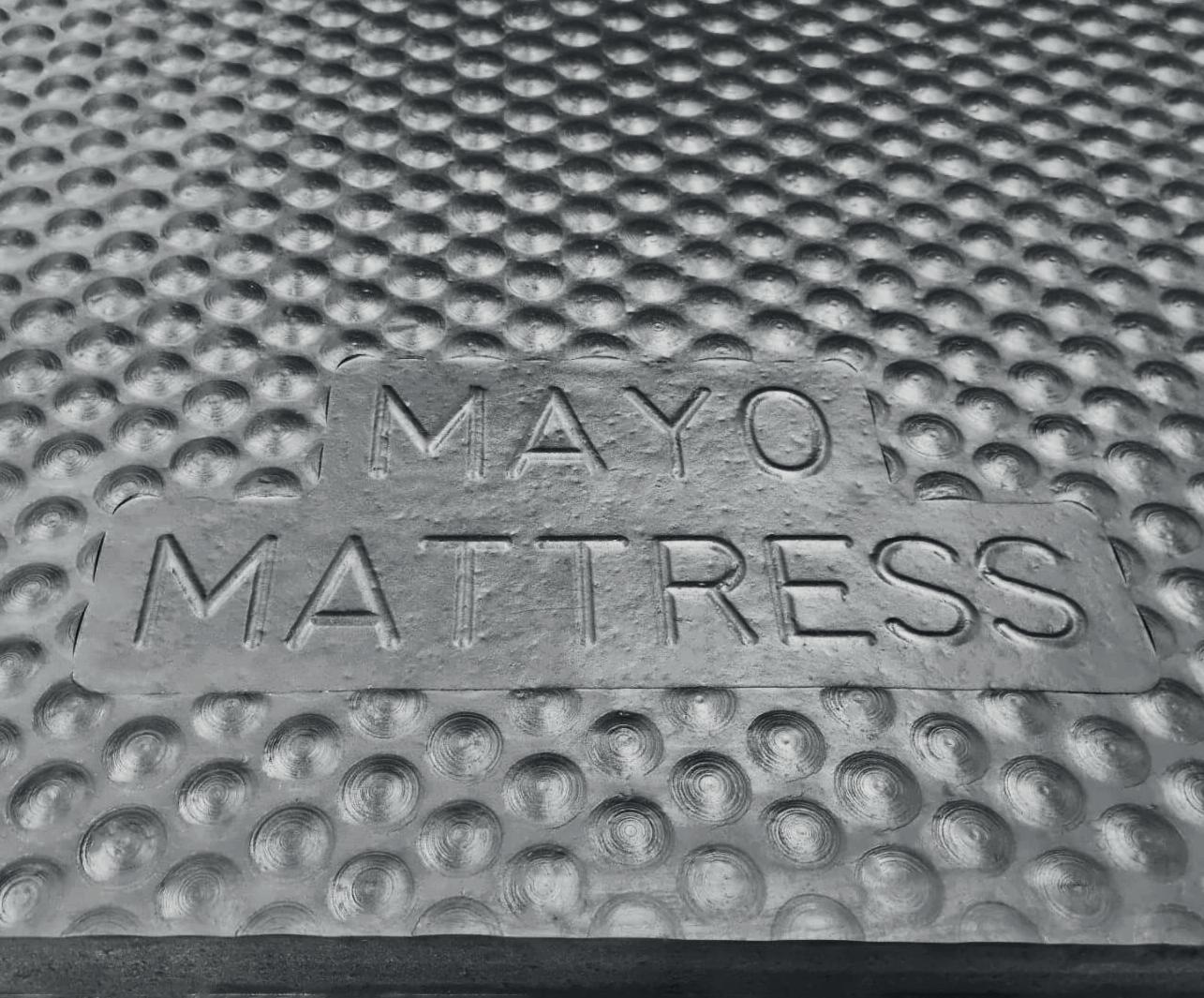

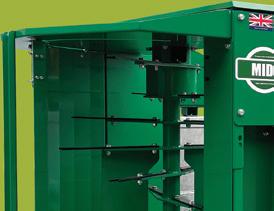
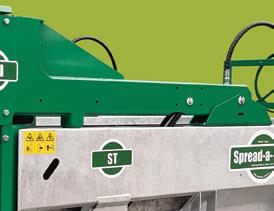







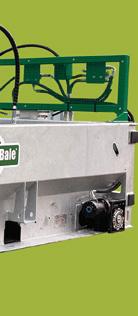

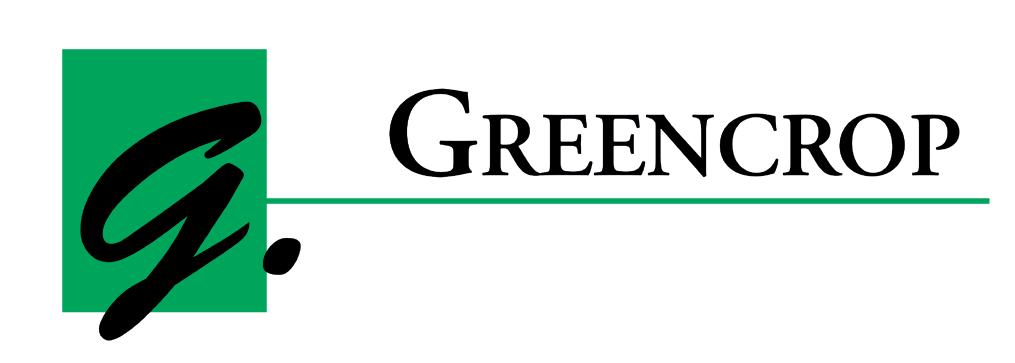

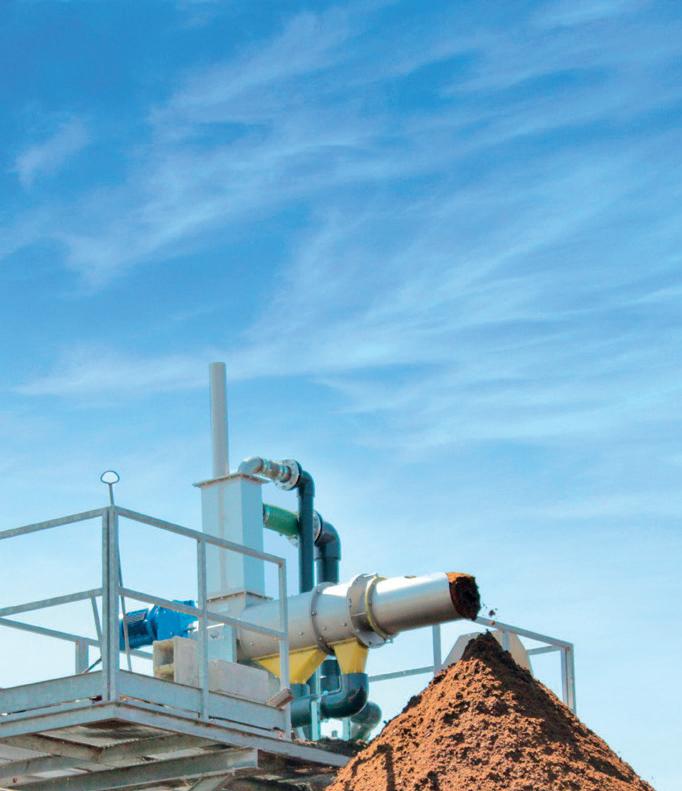

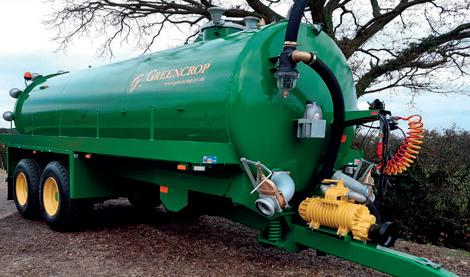
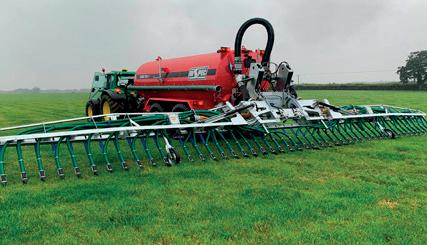




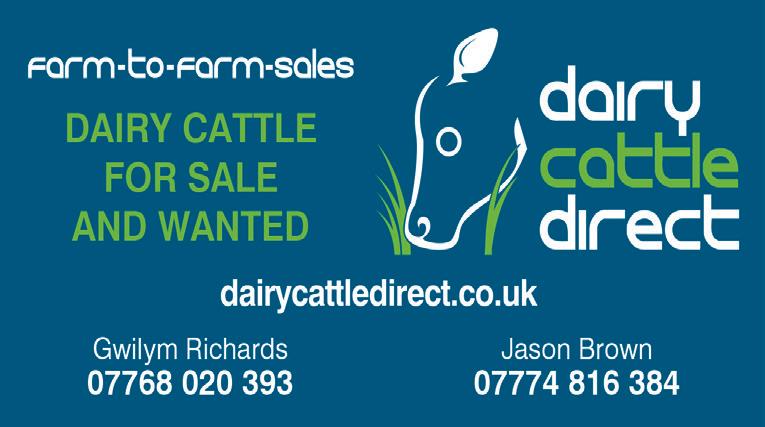
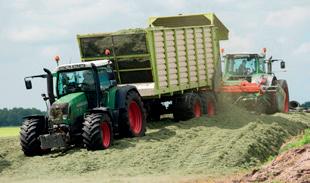



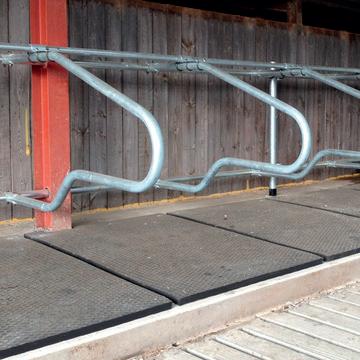
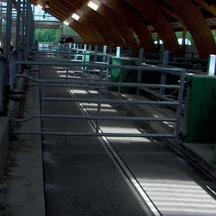
(Moisture Level Between 16% - 22%)
*Applied in one operation* (No Additional Mixing)
*Alkaline Treatment* (Ph 7.5-8.5)
*Protein Incresed*(by 30% - 40%)

*Excellent Stability* Tel: 01387 750459 www.britmilk.co.uk

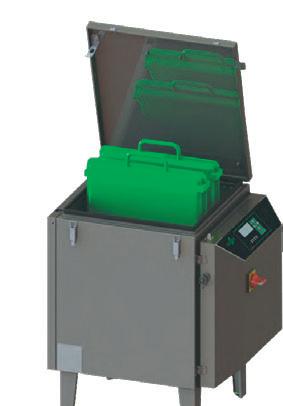





* Freeze only Quality Colostrum *
* Thaw 4litre pack within 20mins *
* Feed immediately after birth *
For more details contact BRITMILK tel : 01387 750459 info@britmilk.co.uk www.britmilk.co.uk




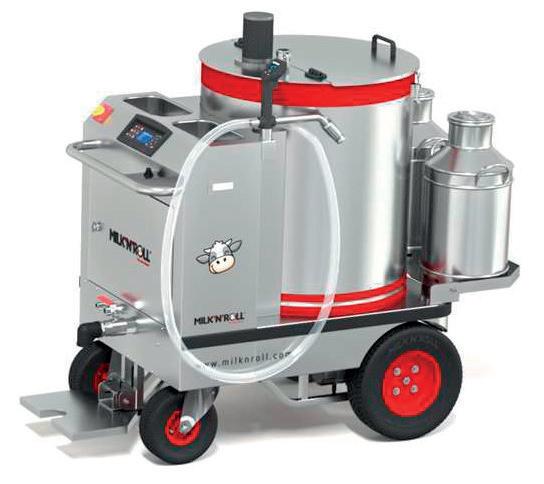











‘A bit of continuity is nice isn’t it? There’s something
This month, Roger Evans discusses farmer loyalty and the changing relationships between farmers and bank managers.
Farmers have, or have had, a reputation for being loyal customers to the people they deal with. It’s not as true now as it once was, after all we live in a volatile world and its effects are widespread.
Vets and banks come to mind; it was not uncommon for farmers to deal with the same bank and vet for just as long as they were farmers.
I can remember buying my first tractor. The same firm is still there, from the same premises, and members of the same family run it and they are our first port of call for sales if we want a spare part or something mending.
A bit of continuity is nice isn’t it? There’s something reassuring about it.
For years we had a ‘fertility’ visit from our vet once a month, as most dairy farmers do.
We always milked quite early in the morning and so we came to an arrangement where one of the vets would call here at 8am on their way to work and do the visit early.
This worked fine for two or three years, but there were changes at the vets and they began to do morning surgery first.
The visit got later and later. This really used to wind me up, especially in summer when this group of cows should have been out at grass with their mates.
On one occasion the vet turned up at a 12.45pm. To say I was getting tetchy would be an understatement. It was a hot day and the cows were shut into the collecting yard. By the very nature of the visit, many of those cows would be in the first 100 days of their lactation, and the long time spent in the collecting yard would mean their milk would
be down for 24 hours. You would only treat them like that if you were trying to dry them off.
Besides, the visit had taken our dinner hour. Not that important really, but that hour at midday is quite precious if you had been up since 4am.
I asked: “Where have you been until now?”
The vet replied: “Sorry, but there were lots of cats and dogs for surgery today.”
There and then I decided to move to a practice where they didn’t treat small animals.
It was a good decision, one of the best I ever made. We had been with the previous practice for more than 30 years, but now that practice doesn’t treat farm animals.
For years and years, we were with Barclays bank. It wasn’t wonderful, but it was okay.
The bank had an agenda that farms of our size had no future post-quotas and that clouded the bank’s thinking.
Then we had a new manager and he was fine. He became something of a family friend and he used to call in if he was in the area and we would discuss rugby endlessly.
Then the bank made him take early retirement and our new manager wasn’t so benign, but there weren’t any big issues.
One day there was a tap on our door and it was our previous manager. He said that he was now with Yorkshire Bank and he would like our account.
Of course he knew exactly what interest we were paying, so he offered us a good deal which we accepted.
I noticed that if ever we wanted to vary our borrowing, the interest rate crept up so we were soon paying just as much as we had

been paying previously. en he was made redundant and that was the last we saw of him.
A couple of years ago, Yorkshire Bank became Virgin Money and now we are to be tied up with Nationwide, apparently. So we have been with four banks now.
ere’s no point in changing; all accounts are now managed by computer and there is li le recruitment going on, post-Covid-19.
I still have a private account with Barclays,


but I only usually write two cheques a month, one to my wife for household expenses and one to clear my credit card.
If you go forward two generations, to my grandchildren’s age, they don’t even know what a cheque is.
I followed Barclays for years as they closed branch a er branch and now any branch is 100 miles away.
It says in their literature that I can phone this branch 24/7, but why would you want to listen to music all day?

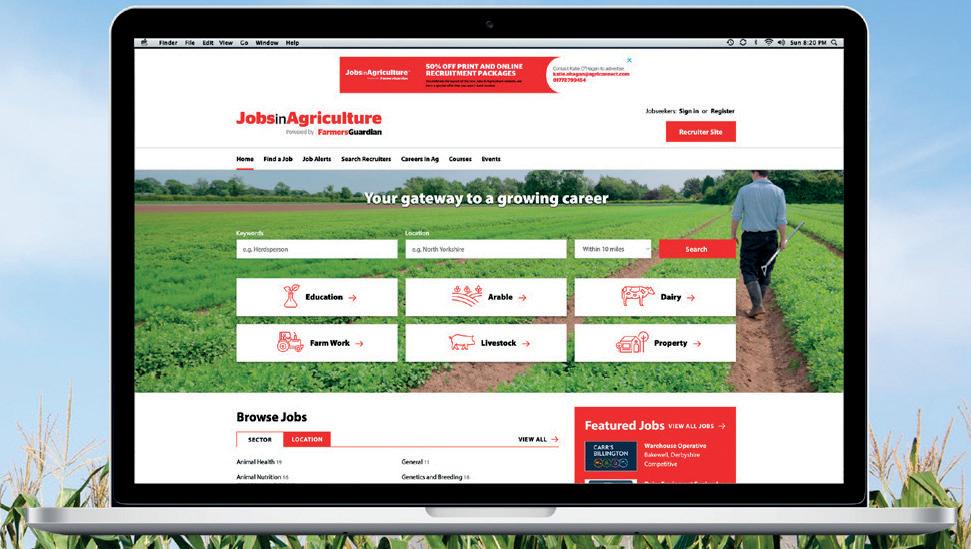


The number of UK dairy cows is falling, but herds are getting bigger and production is being maintained. Cedric Porter delves into the latest figures.
Defra’s statistics are a mine of information, and data for 2023 has been recently added. It shows that there were 1.836 million dairy cows in the UK at the end of last year, which was a drop of 0.3% –a relatively small drop because of high milk prices. However, the total number of dairy ca le was the smallest since 2013, when there were only 1.782m. Numbers in 2023 were 21.4% less than in 2000, and 45% lower than in 1983 when they peaked.
ose slightly fewer cows produced a li le more milk, with output up 0.1% or 2m litres to 14.859 billion litres. What is striking is that although there were 21% fewer cows in 2023 than there were in 2000, they produced almost 10% more milk, with average yields jumping 40% to an average of 8,093 litres per cow.
Updated gures from AHDB
JOne finding from the Defra figures is the dramatic decline in UK cattle numbers over the last 40 years. In 1980, there were 13.426m cattle of all types. By 2023, that had fallen to 9.555m head – a drop of 29%. In that time, production of milk has not significantly fallen and beef output is down by only 22% as production has become more efficient. Cattle bear the brunt of
SOURCE : AHDB and Defra
show that GB milk production in the last quarter of the 2023/24 season (ending March 31) was the smallest since 2016/17, with further declines in output in April, May and June.
AHDB is expecting an overall 1% decline in milk production in 2024/25.
e number of registered dairy producers continues to fall. AHDB analysis of o cial gures shows
criticism when it comes to carbon emissions, but the decline in cattle numbers contrasts with a 56% increase in the number of poultry birds since 1994 (earliest records).
Since 1980, the UK population has increased by 19%, while the number of vehicles registered in the UK has more than doubled during that time to 40-41m, and there are 130% more flights a year.
there were 10,825 dairy farms in the whole of the UK in 2023, which was 3.4% less than in 2022.
e contraction in numbers meant the average herd size increased by six cows, or 3.7%, to 170 head. Scotland has the nation’s largest average herd at 220 cows, followed by England and Wales at 179 cows and Northern Ireland at 220 cows.
e number of UK producers has fallen by almost two thirds in the last 25 years, with England and Wales losing 70% of its dairy farms in that time, Scotland 60% and Northern Ireland only a half. e average UK herd size has increased by 121% in the last 25 years.
e decline in numbers continues, with an AHDB survey of milk buyers showing that there were 7,130 producers in Great Britain (England, Scotland and Wales) in April of this year. is was down by 370 since October last year, and was 440 less than in April 2023. e gures included milk buyers who
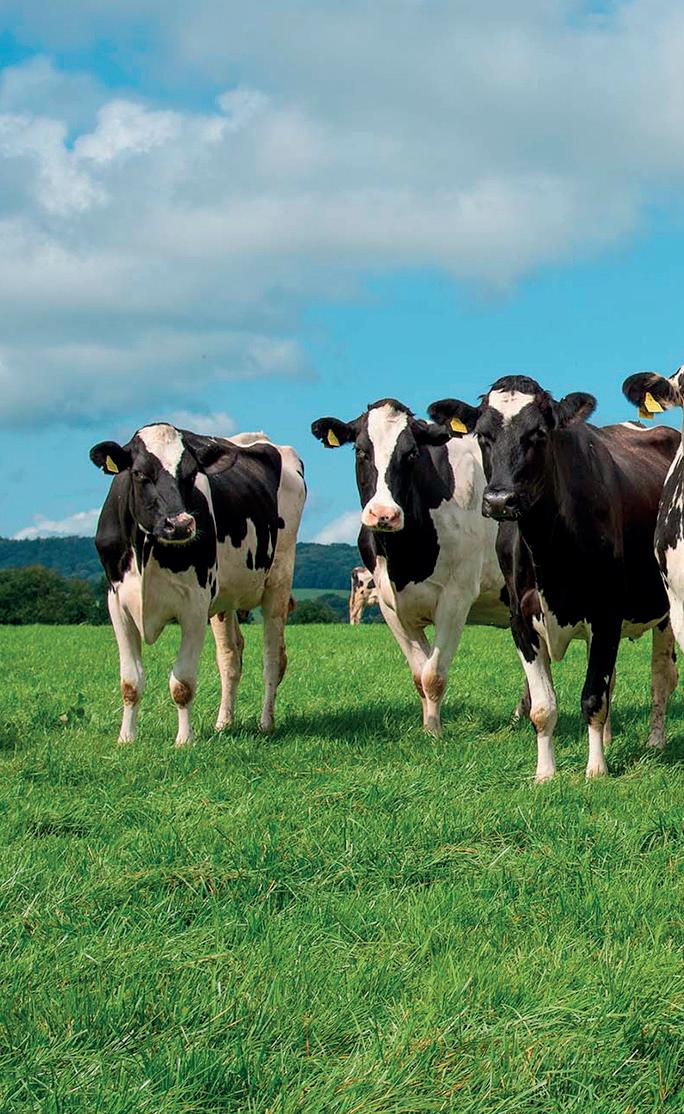

contribute to AHDB’s daily milk delivery survey, which is estimated to cover 82% of GB production, hence the gures are lower than Defra’s.
Susie Stannard, AHDB lead dairy analyst, says: “ e number of producers exiting sped up in the second half of the 2023/24 season, with only 70 giving up between April and October 2023.
“ e survey does not look at the reasons producers give up, but the assumption is that there is a combination of factors, including lower milk prices, high costs, new legislation and a reluctance to invest because of uncertainty about the future and succession.”
UK milk production has moved away from liquid sales to being used for manufacturing dairy products over the last few years, but there was a small switch back to liquid in 2023. During the year, 5.975bn litres were used for liquid consumption, according to Defra, which was 0.3% more than 2022. Use for manufacturing was down 0.7% to 7.857bn litres.
Volumes of what Defra describes as ‘sub-sales, stock change and waste’ were at an all-time high of 321m litres in 2023, which was 39m litres more than 2022.
In 2000, 48.4% of the milk delivered to UK dairies was destined for the liquid market, with 47.5% for manufacturing. In 2023, the proportion was 40.2% liquid and 52.9% manufacturing.
e value of milk sales fell 10% in 2023 to £5.983bn from an all-time
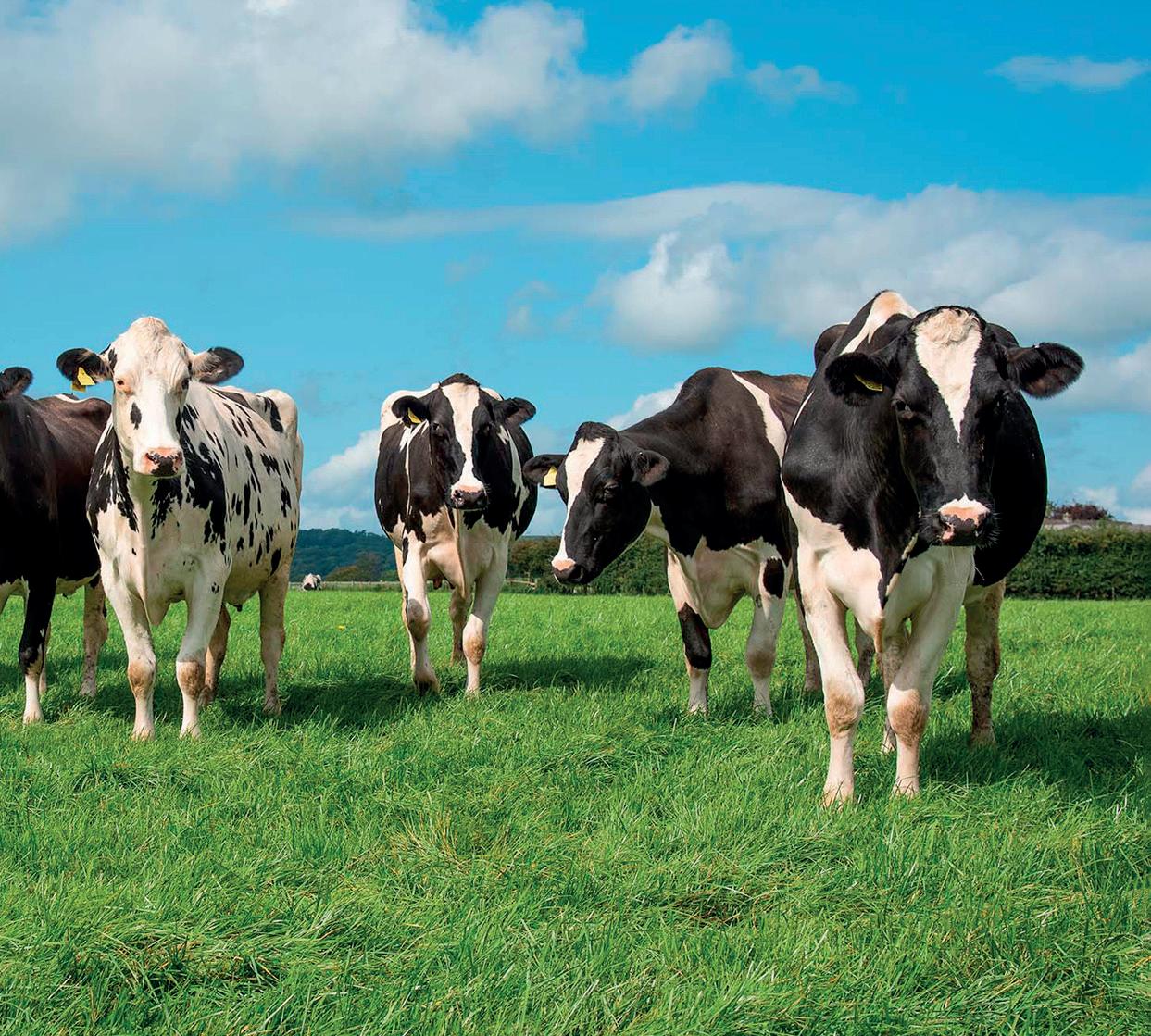
high of £6.659bn in 2022. However, when in ation is taken into account, the drop was 16% and the value was only 60% of what it was in 1977 on that basis.
Sales per farm averaged £553,000 in 2023, which was 7% lower than in 2022 when in ation is taken into account, but more than double the gure in 2013. ese gures suggest that there are a number of very large farms selling large volumes of milk which are having a disproportionate impact on the average gures.
Younger herd
e age pro le of the UK dairy herd is important. AHDB analysis of the British Ca le Movement Service shows a 3.1% drop in the number of ca le aged two to four years old, with declines of 1.1% and 4.6% in older ca le.
ere is also a 2.6% drop in the number of dairy ca le under two years old. e average age of ca le in the GB dairy herd is 4.55 years old, down from 4.6 years old last year.
AHDB says: “ is shows a drive towards maintaining a more ecient national herd and [is] re ective of the economic challenges that dairy farmers face.”
While the gures point to a continued contraction of the national dairy herd, calf registrations were up 0.7% in the rst half of the year, suggesting some stabilisation in numbers in the years to come.
Defra gures show that average milk prices in 2023 were the second highest on record at 39.47ppl –down 10.2% on the all-time high set in 2022. In the rst ve months of 2024, the average price was 38.48ppl, with values rising since.
Ms Stannard says: “Encouragingly, the feed-to-milk price ratio is falling, but the rise in other costs including wages, fuel, fertiliser and interest rates is having an impact.
“ ere does not appear to be any drive to increase production signi cantly and the market remains subdued, with global sales impacted by reduced Chinese demand.”


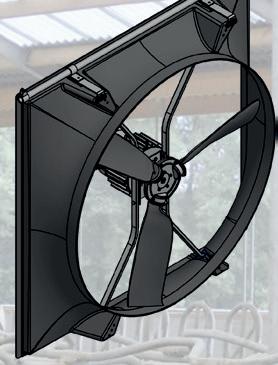
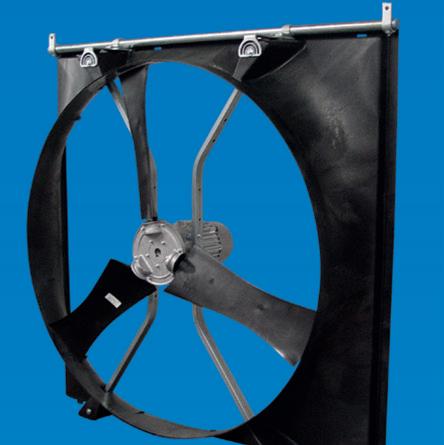





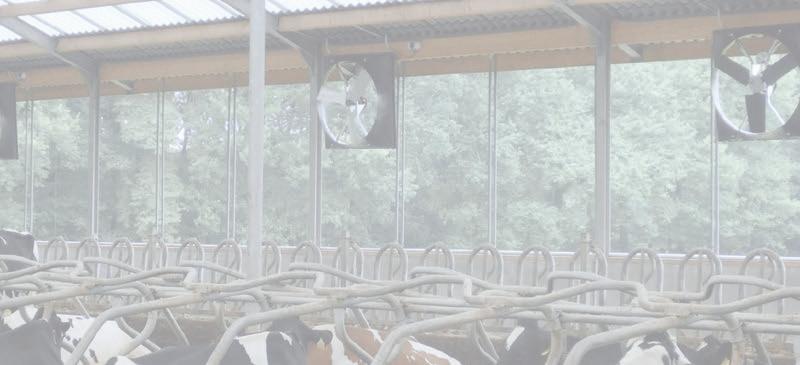
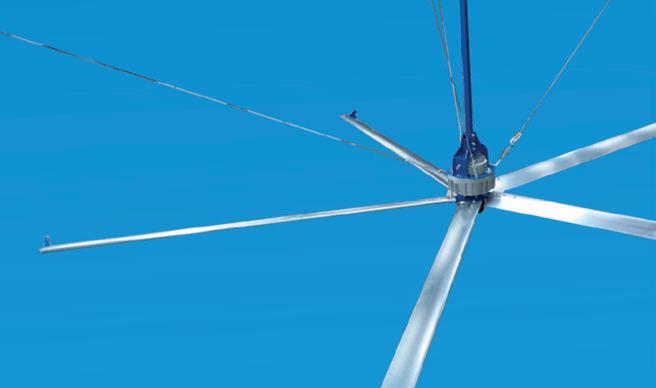







Following on from the last article, which looked at how an employer should approach an interview, here is advice on how prospective applicants can stand out in the process. Dairy Farmer reports.
Securing a job on a farm involves demonstrating skills, knowledge and adaptability to potential employers. And whatever the role, performing well at the interview is crucial.
Whether you are looking for a role in farm management, as a herdsperson, calf rearer or general farm worker, start by researching the farm you are applying to.
Paul Harris, chief executive at sta specialist REAL Success, says: “Understand its size, the types of livestock and its reputation.
“ is knowledge will help you tailor your responses and questions at the interview, showing genuine interest and initiative.
“Many farms have Facebook or Instagram pages, and some have websites, so it is easy to get some background information.”
DRESSING THE PART
JWhile farm work is practical and often dirty, presenting yourself neatly for an interview is essential, says Mr Harris.
“Clean, smart-casual attire shows you are serious about the position, but understand the farm environment too.
“For example, clean jeans, a shirt or smart top and boots could be appropriate.”
JAsking insightful questions can set you apart as a candidate, says Mr Harris, who advises asking:
rWhat are the farm’s biggest challenges and opportunities, and how can you help address them?
rWhat is a typical workday and expectations for the role?
rWhat are the opportunities for learning and advancement?
rWhat is the farm’s approach to sustainability and technology?
Mr Harris says: “Ensure you begin your questions about the role and what is expected of you rather than immediately asking about the salary or accommodation. These subjects should be the last, not the first, questions you ask.”
rBe honest and direct: Farmers are often direct and appreciate honesty; be clear about your skills and experience levels; if you lie about your abilities now, it will be discovered later
rShow enthusiasm: A passion for farming, for the welfare of livestock and a willingness to learn, can be just as important as technical skills
rHighlight flexibility: Farm work can be unpredictable; show that you are adaptable, can handle challenges as they come and are willing to work hard to help the farm achieve its objectives


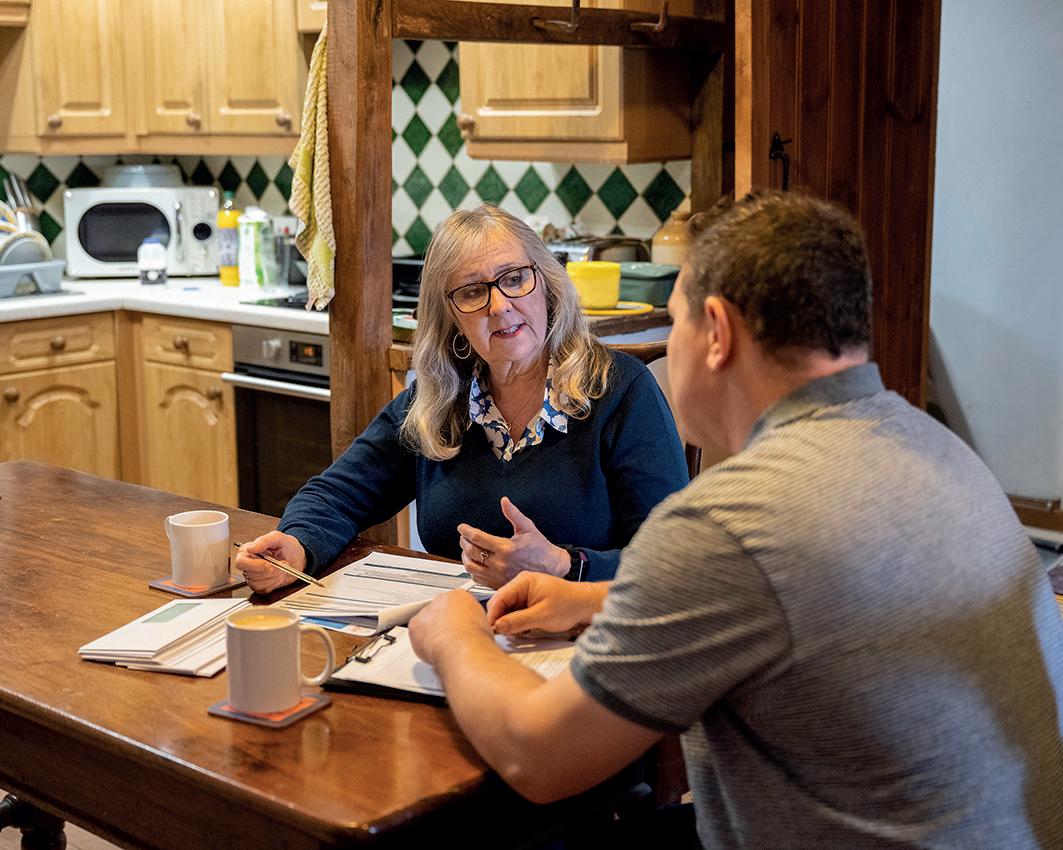
Identify the essential skills and experiences which are most relevant to the role, he adds.
“Be prepared to discuss your competencies con dently, whether that is machinery operation, livestock care or crop management. Highlight any quali cations, training or education which could give you an edge.”


BODY LANGUAGE
JMaintain good eye contact, offer a firm handshake if appropriate and demonstrate open, positive body language.
Mr Harris says: “This non-verbal communication can reinforce your confidence and capability.”
JWhen responding to questions, Mr Harris advises using specific examples from past experiences demonstrating your skills in overcoming challenges. He says: “This provides evidence of your abilities and shows your problem-solving skills.”
JAfter the interview, consider a call, or sending a thank you



email or text to express your appreciation for the opportunity and to reiterate your interest in the role.
Mr Harris says: “This small gesture can leave a lasting positive impression.”
Landing a job on a farm requires showcasing your skills, adaptability and passion for agriculture.
Mr Harris says:
“By preparing thoroughly, asking insightful questions, dressing appropriately and communicating effectively, you can increase your chances of making a successful impression during the interview.
“Remember, it is not just about proving you can do the job – it is about demonstrating you are the right fit for the farm’s culture and future.”








































